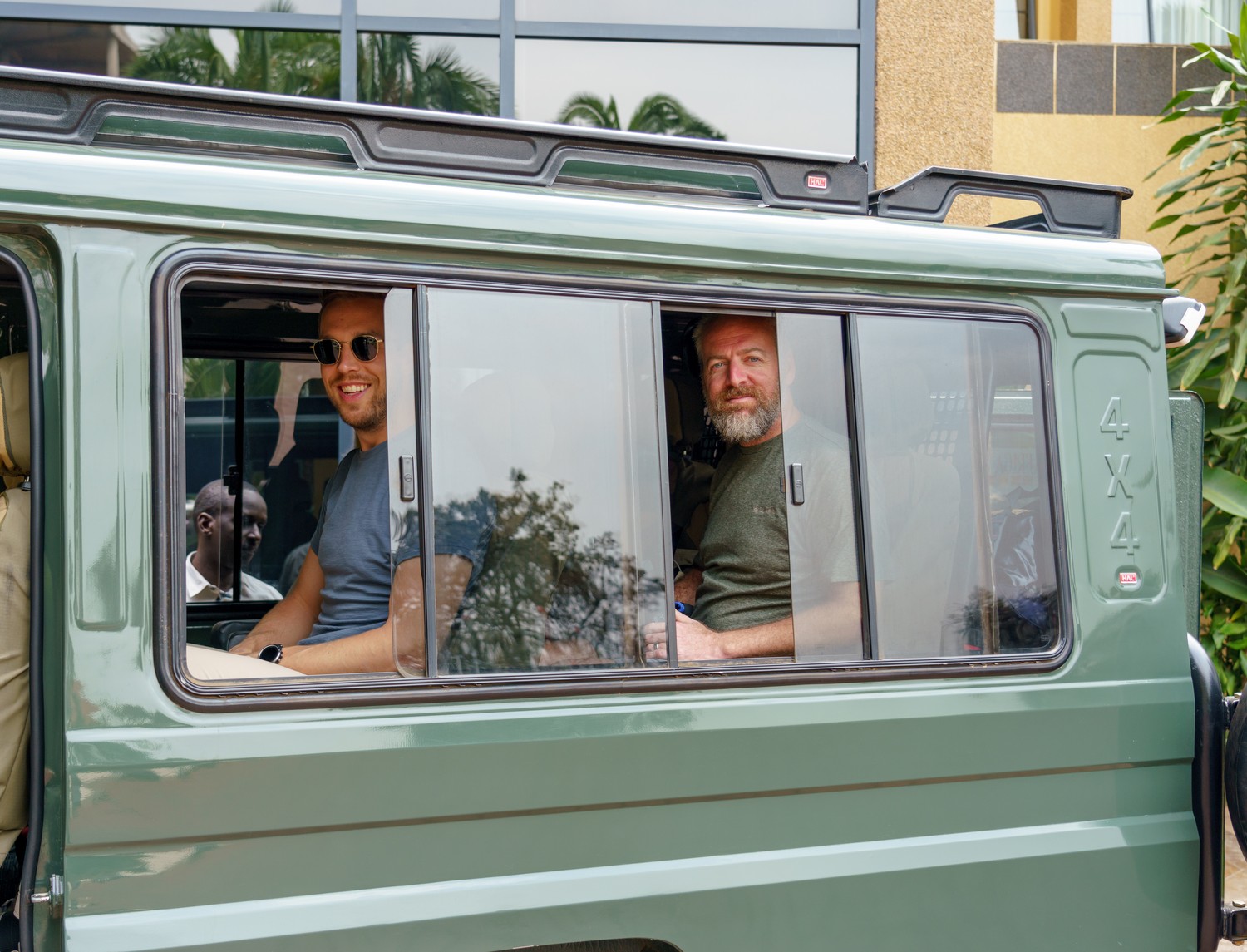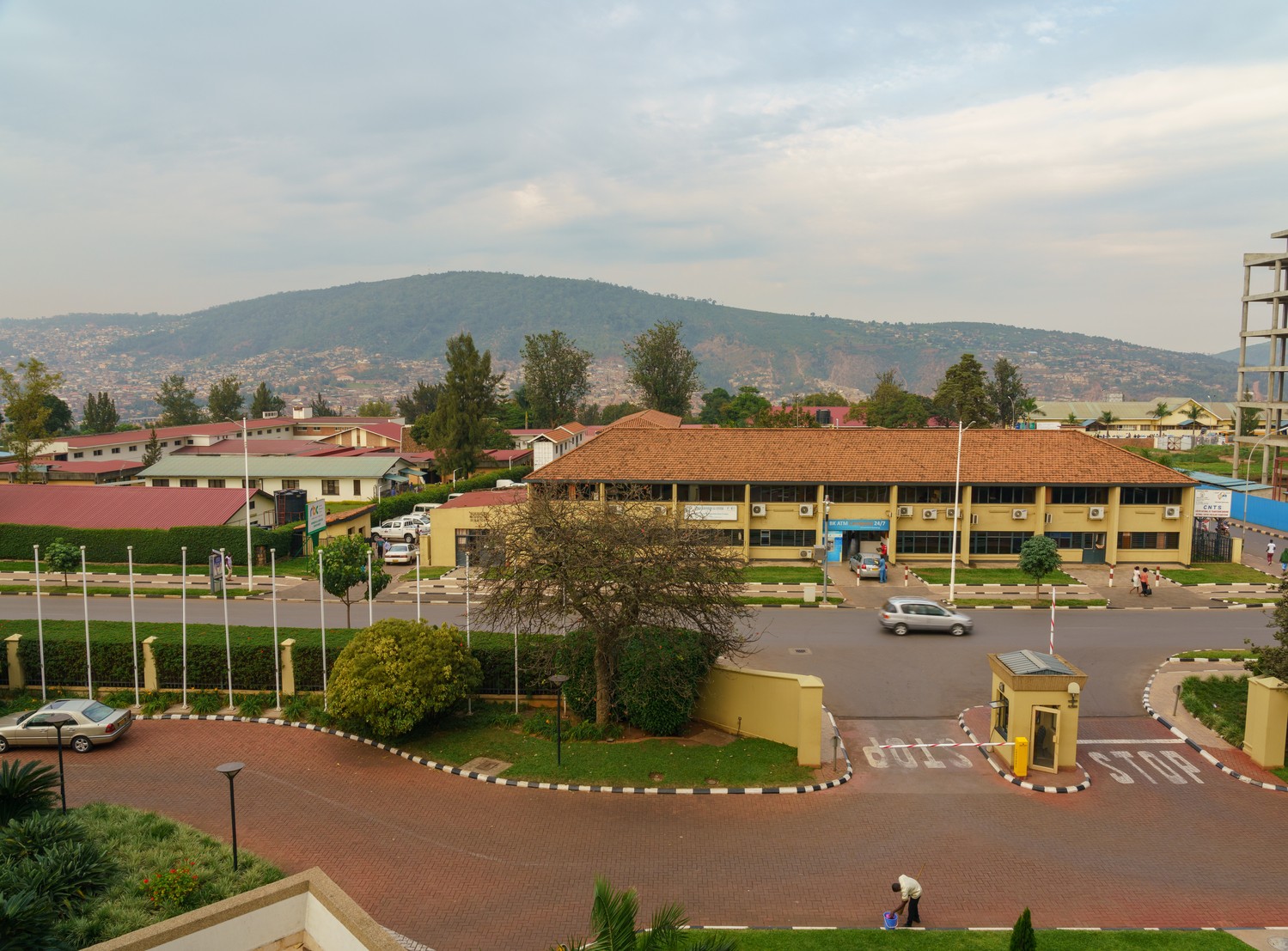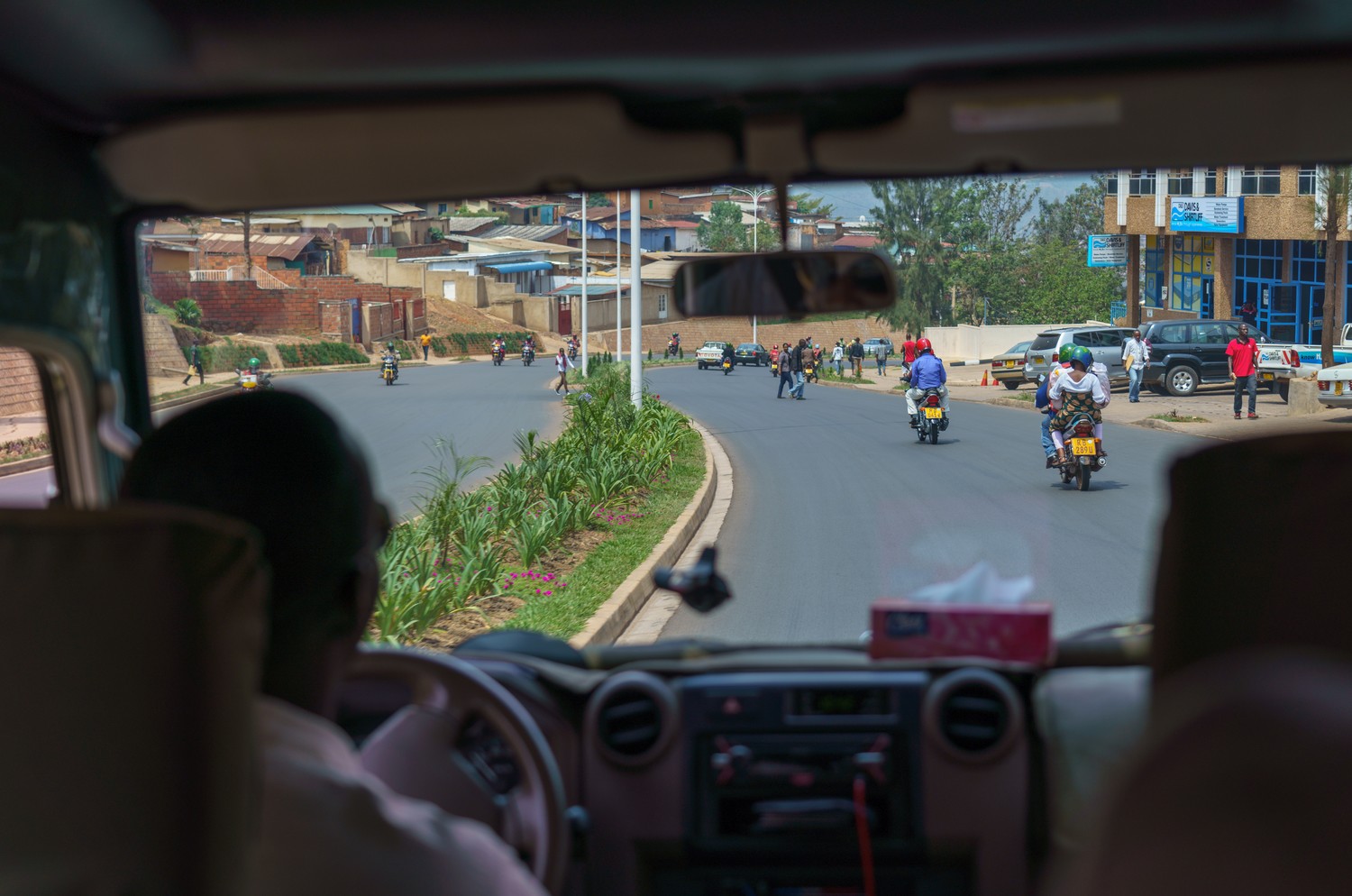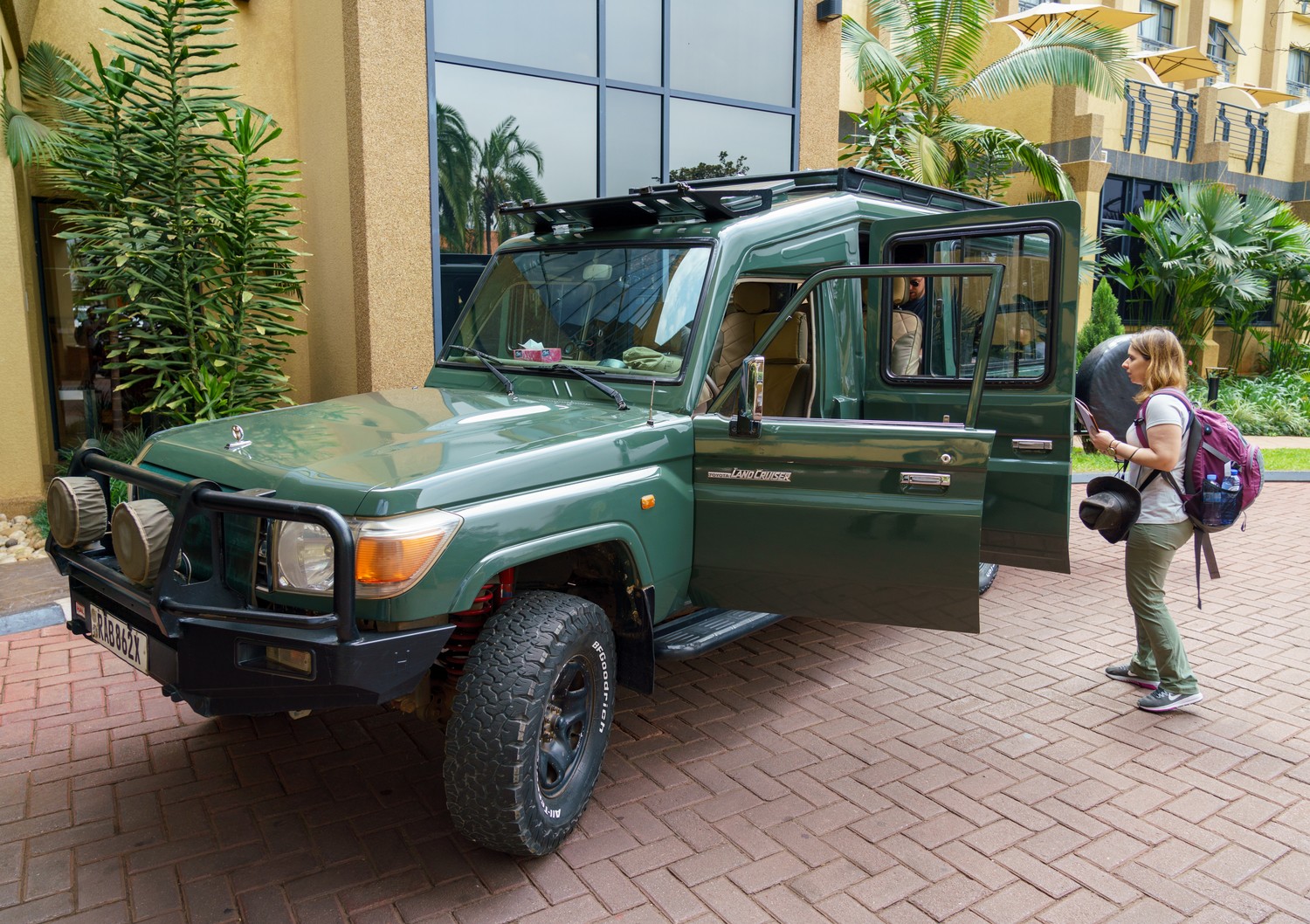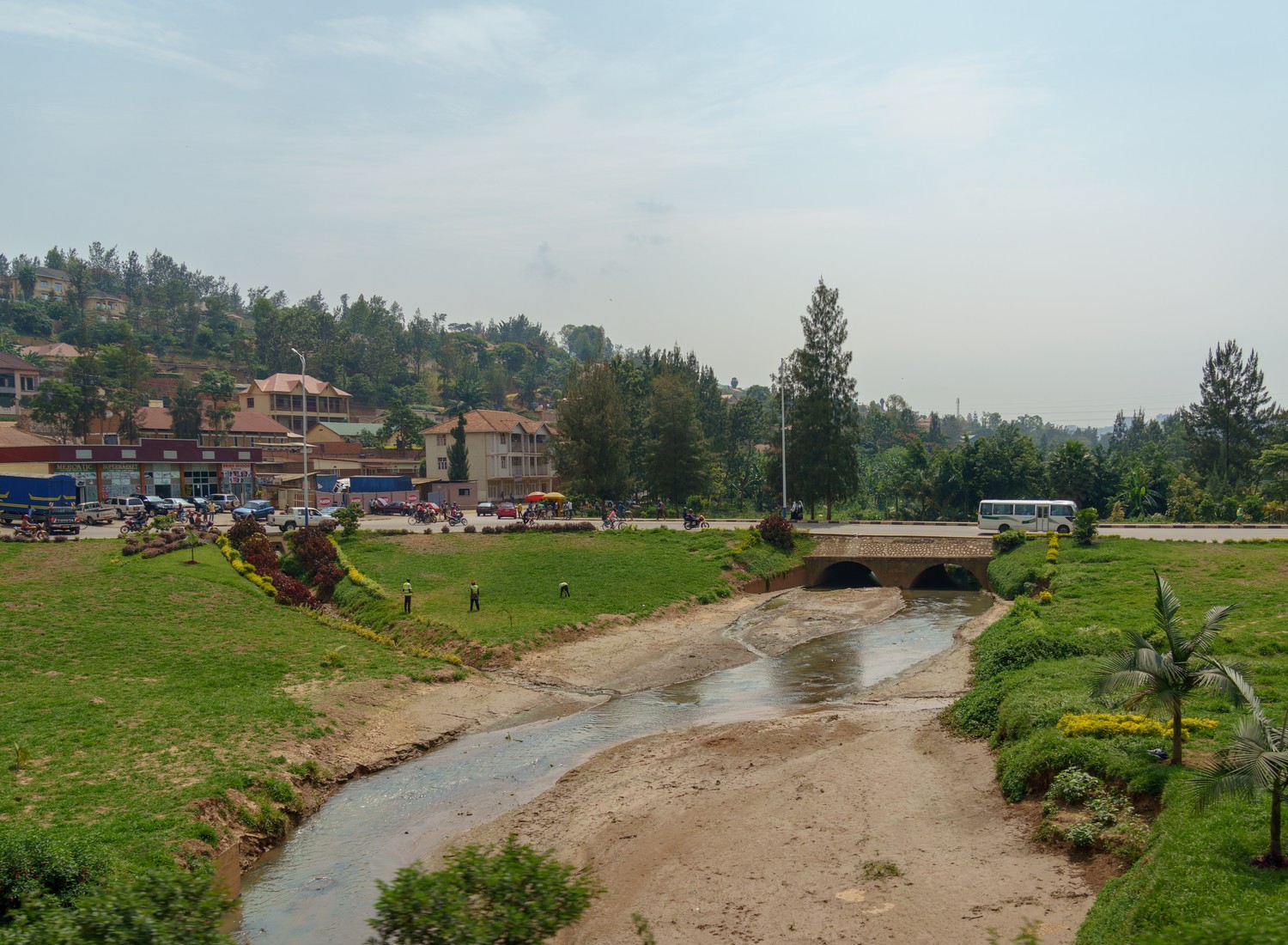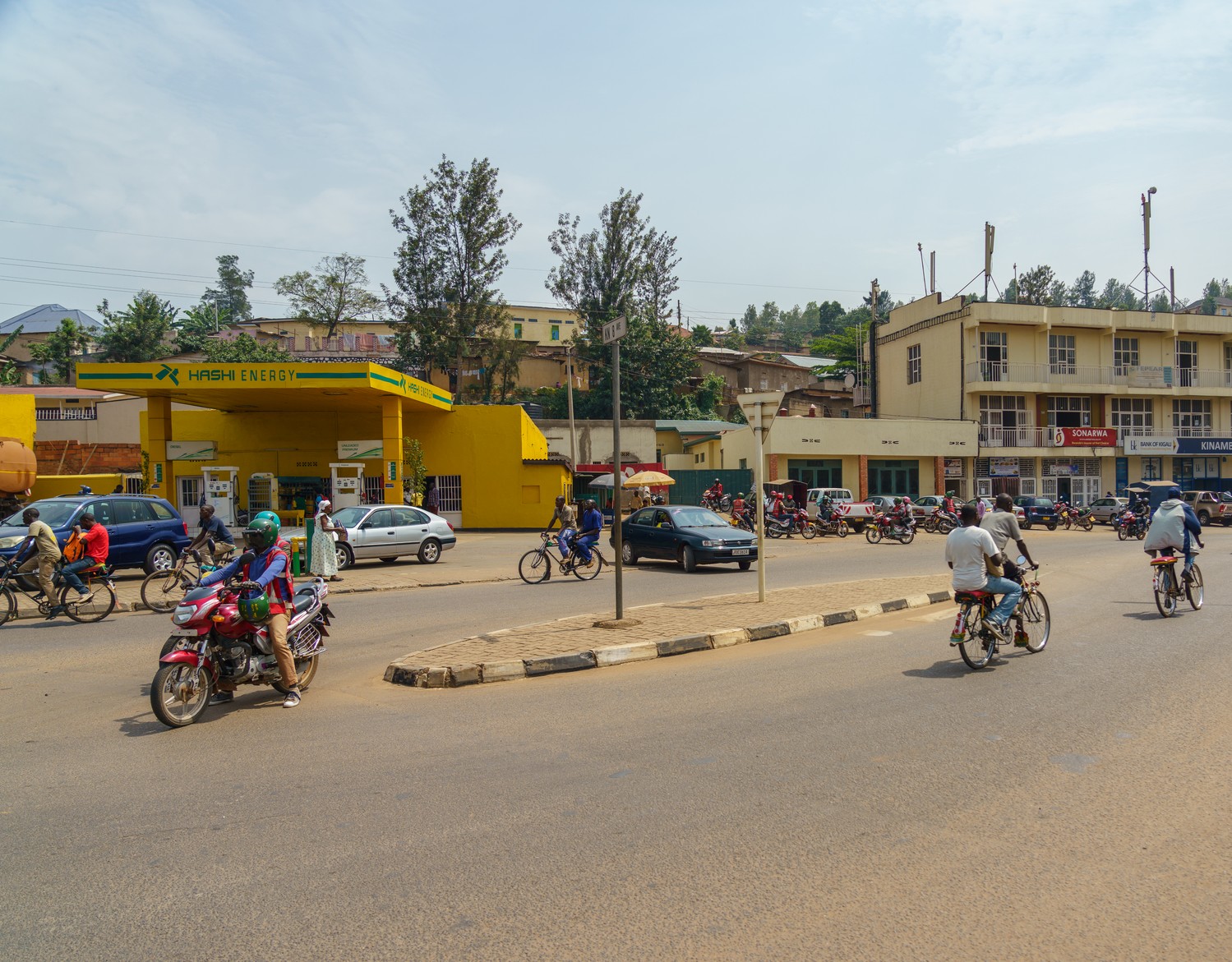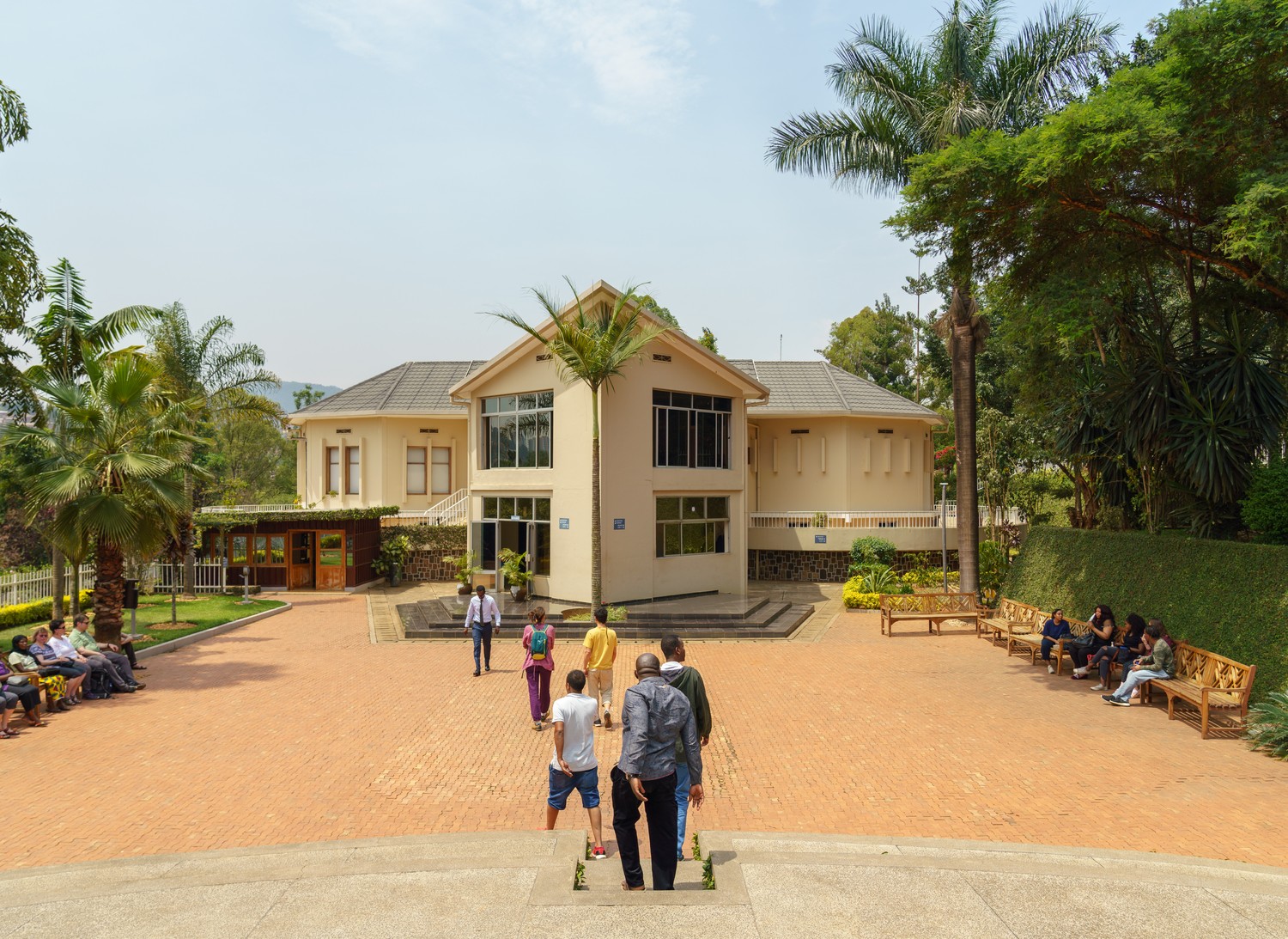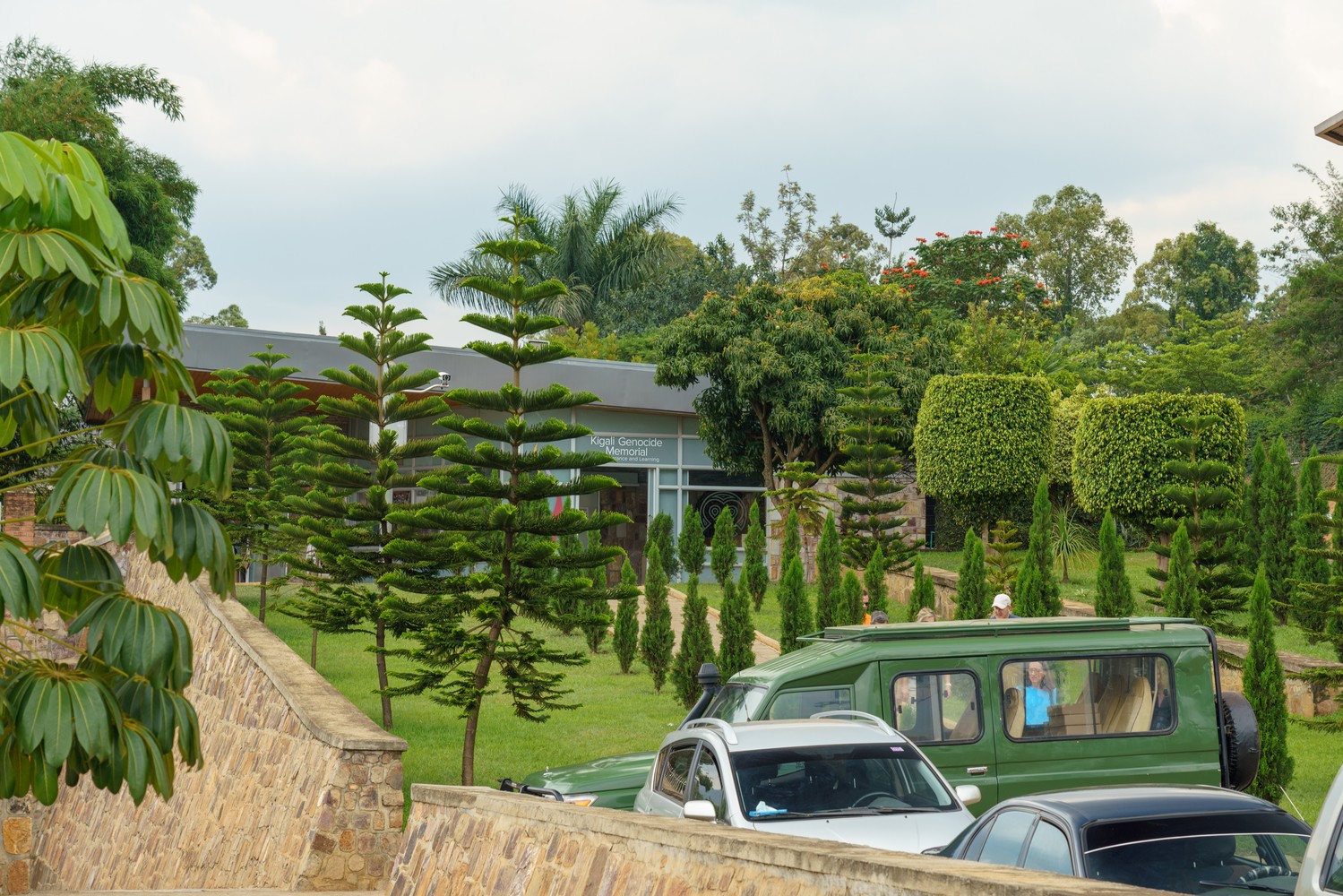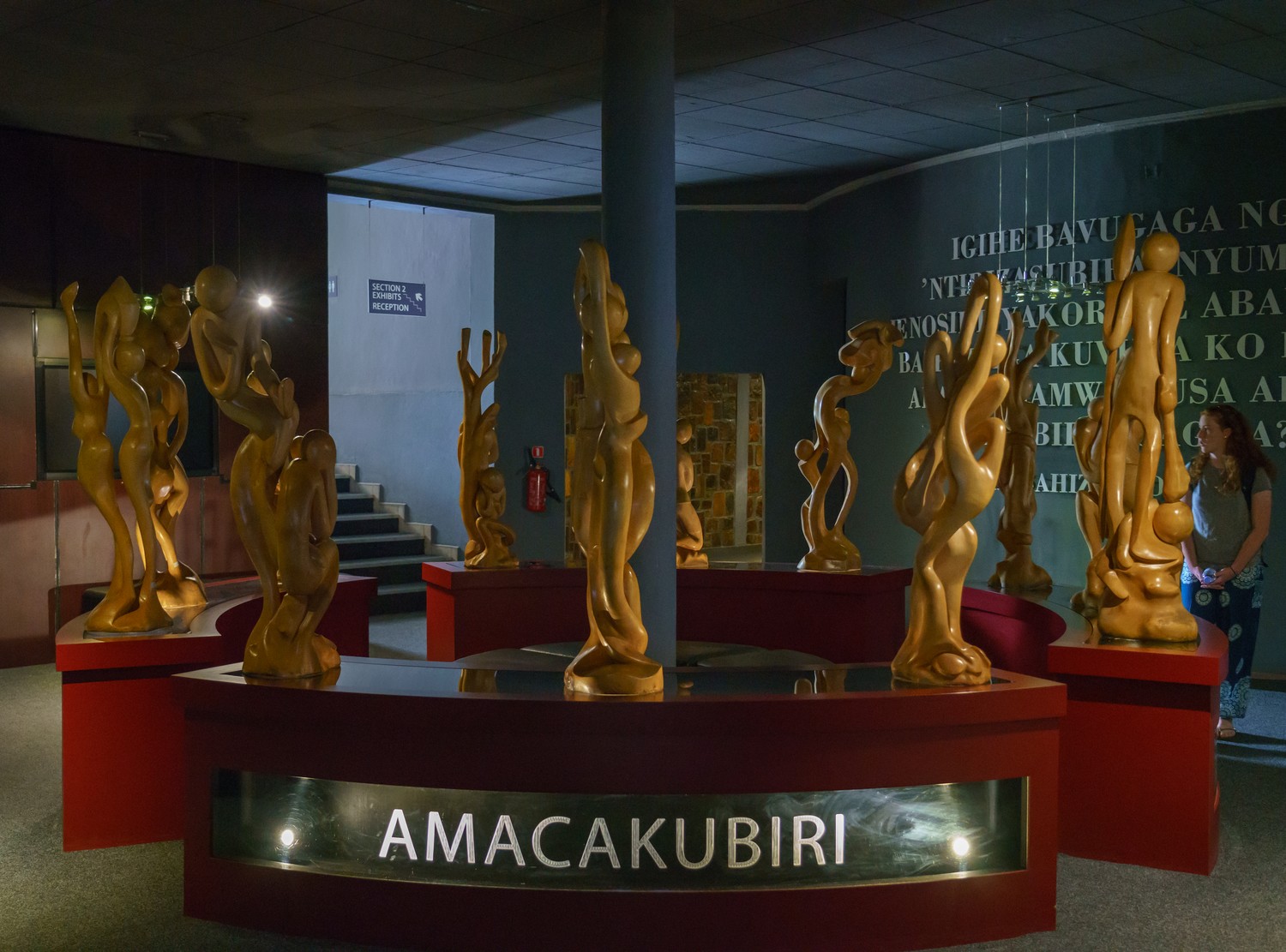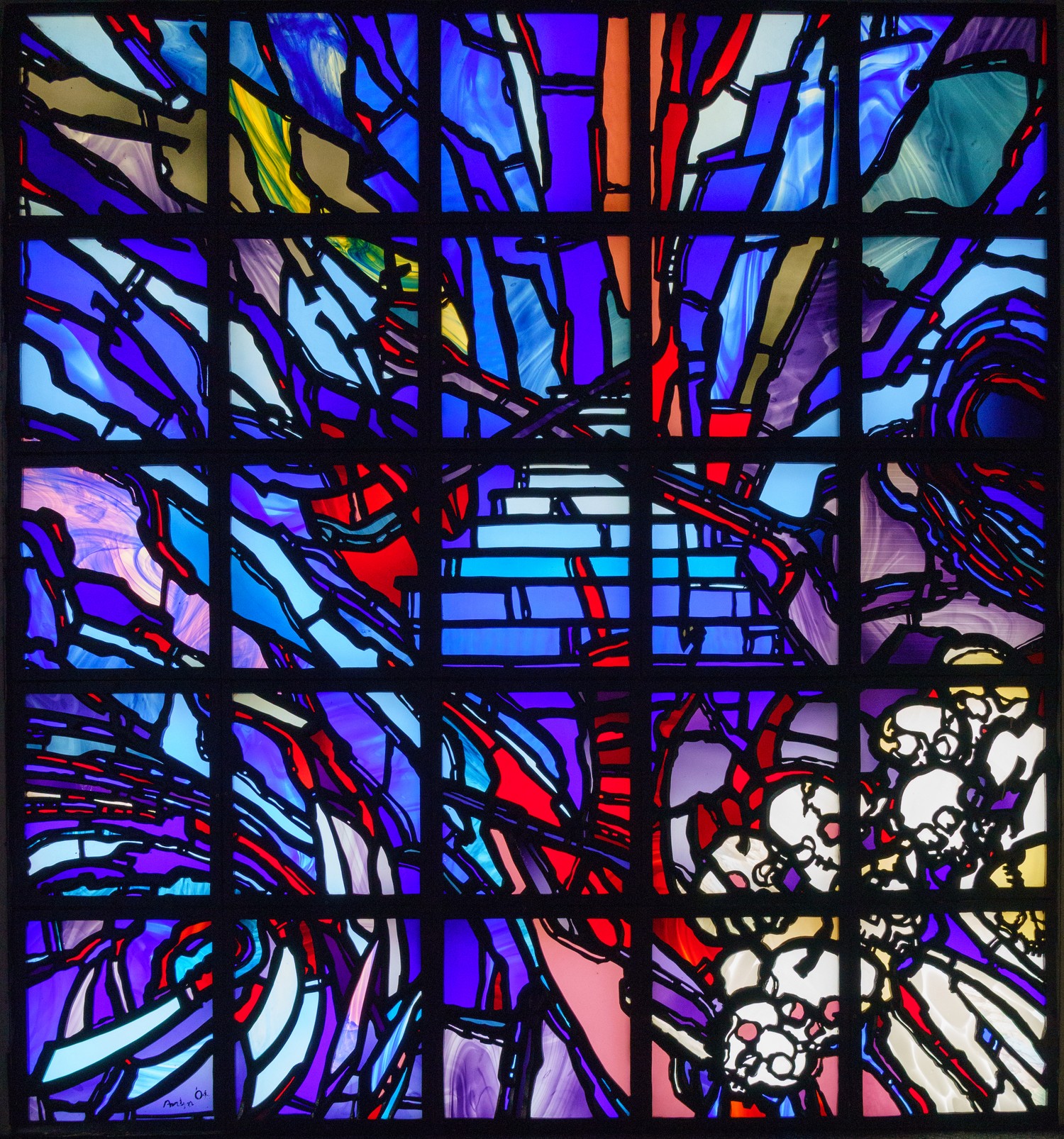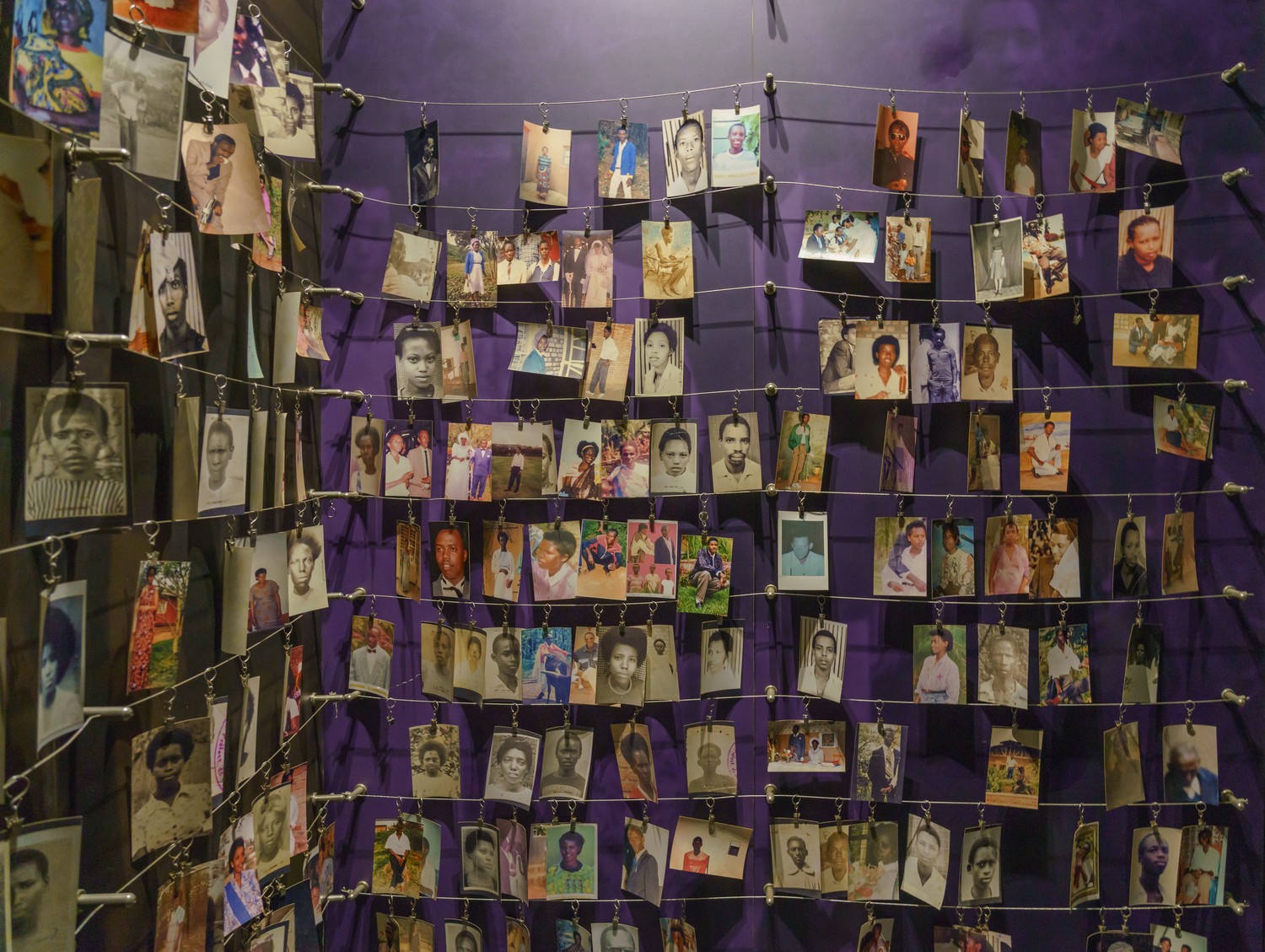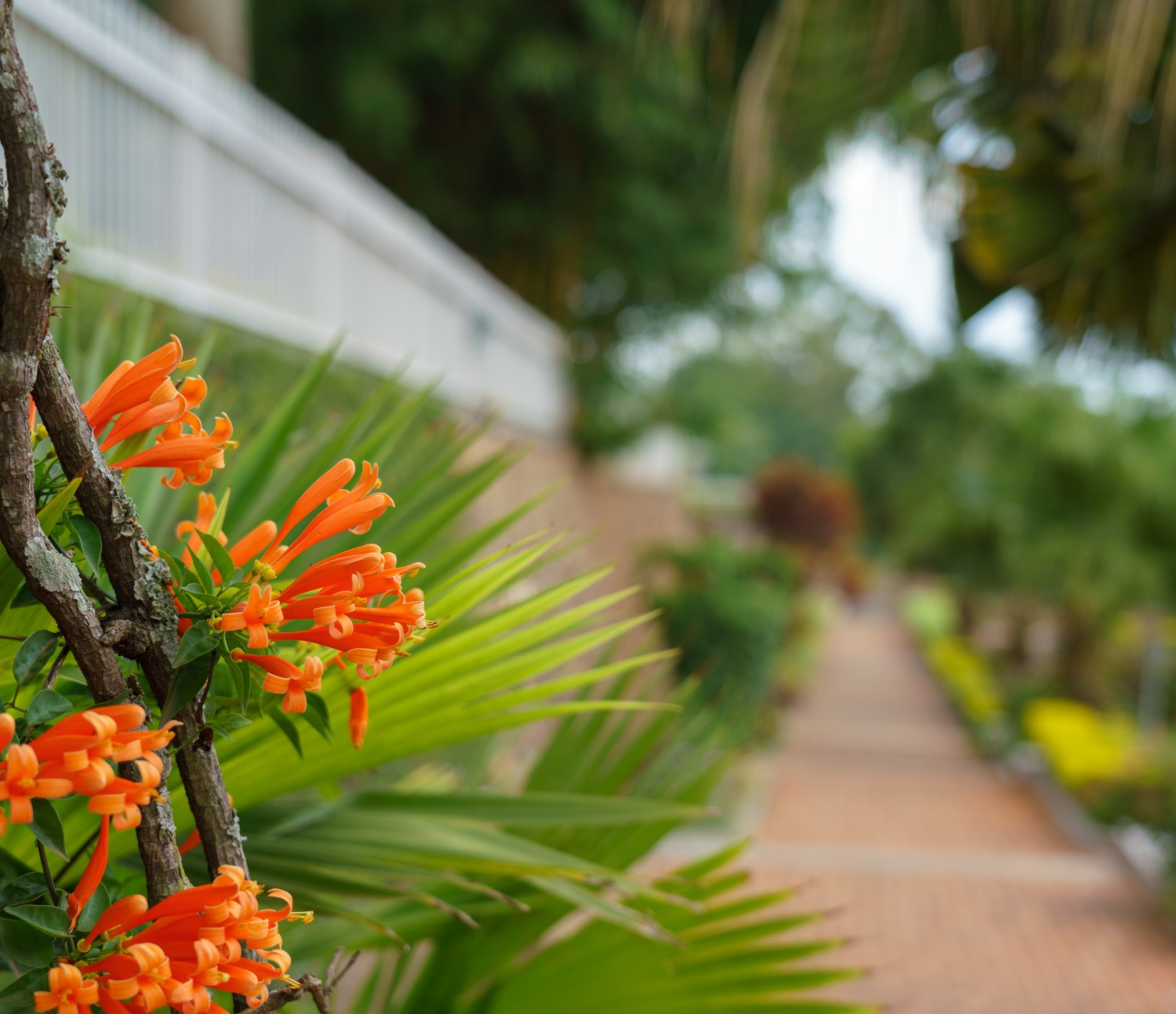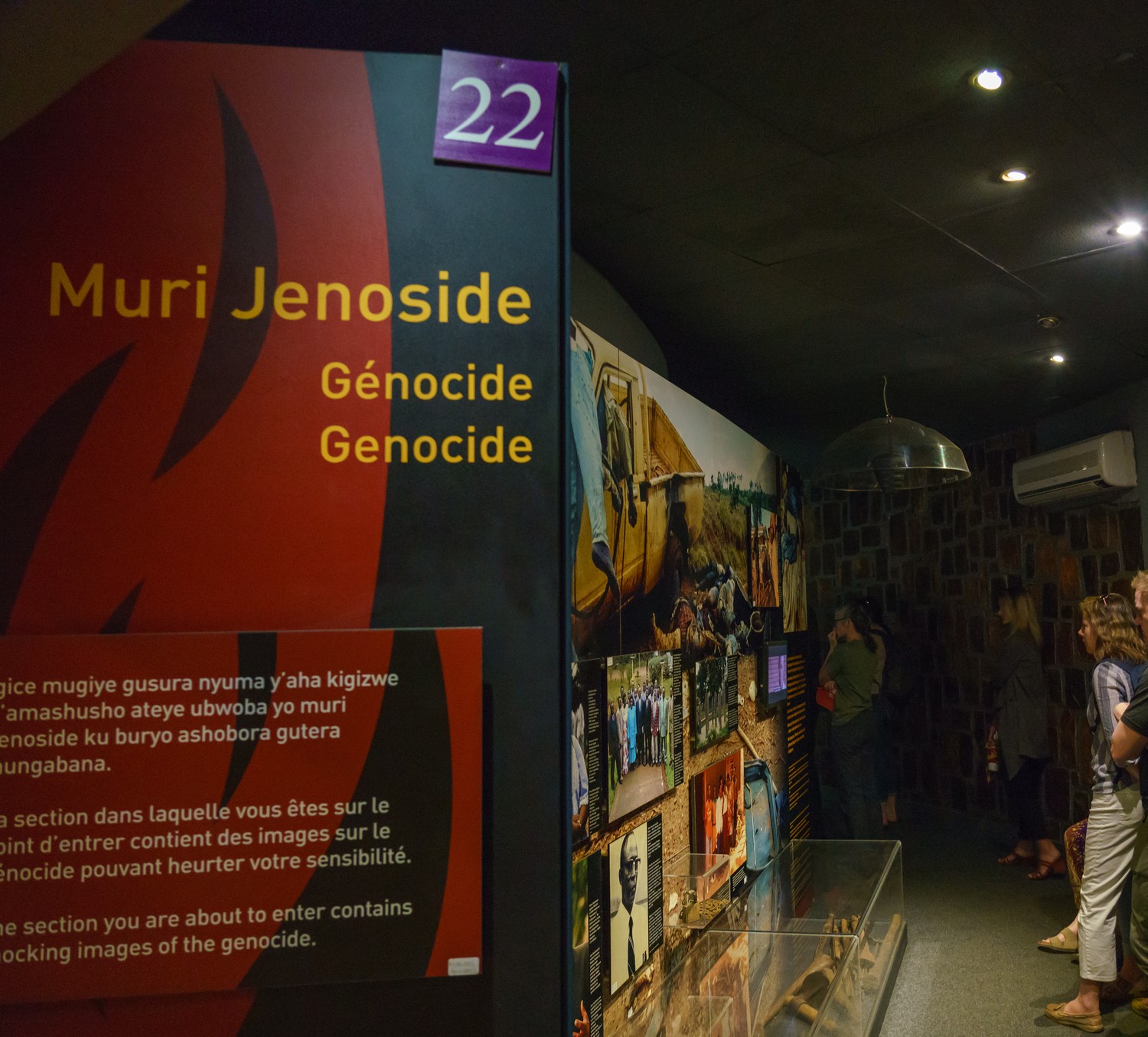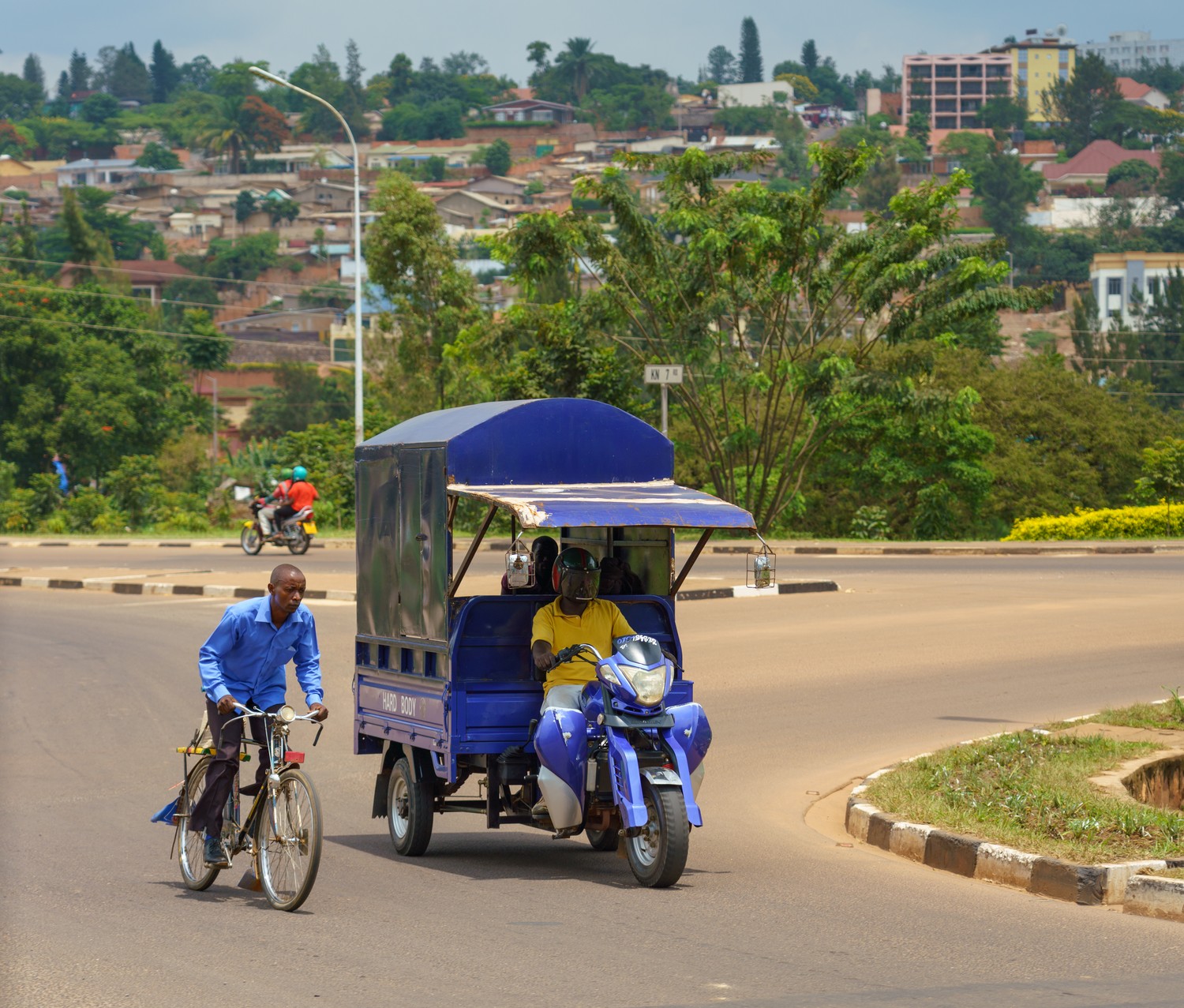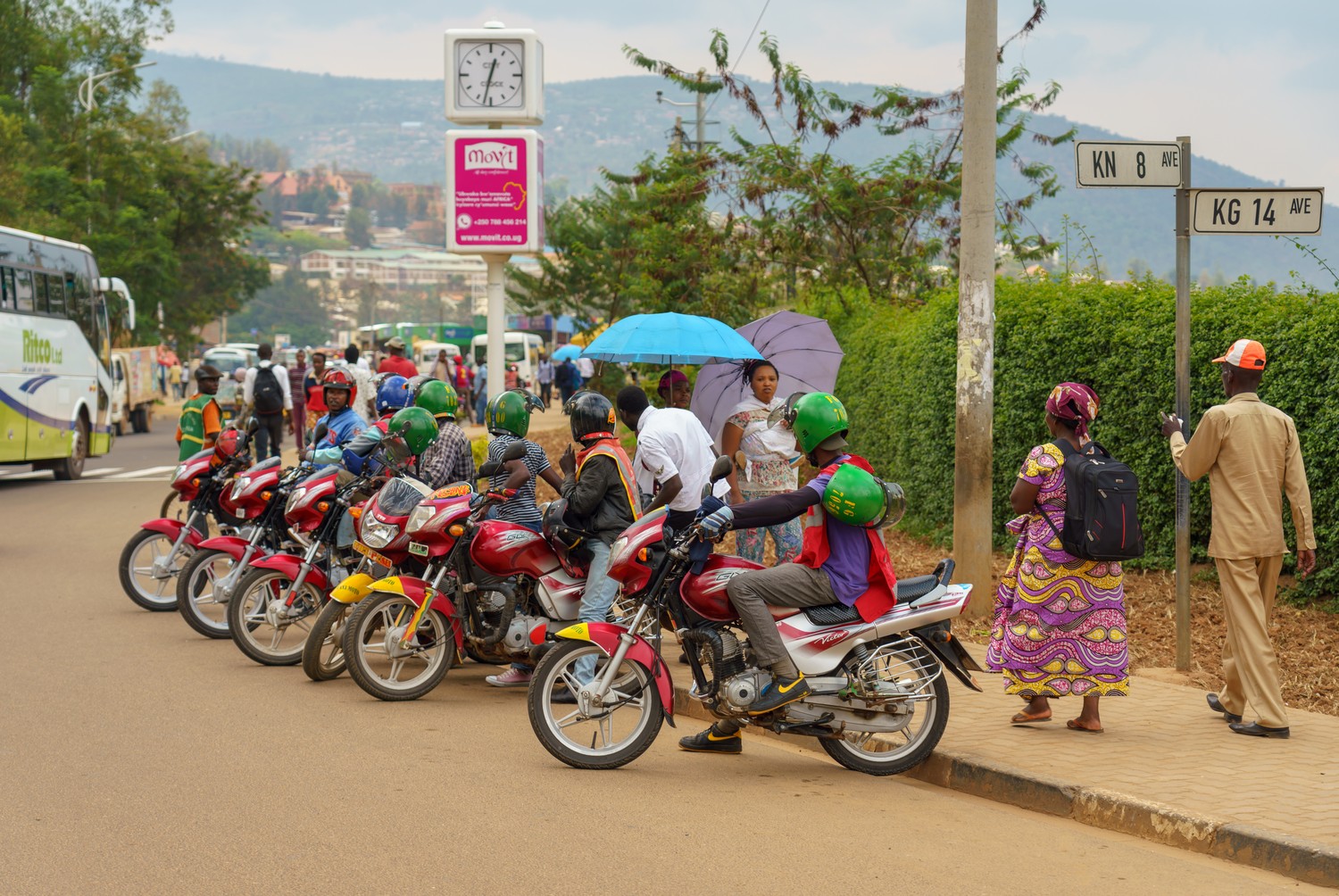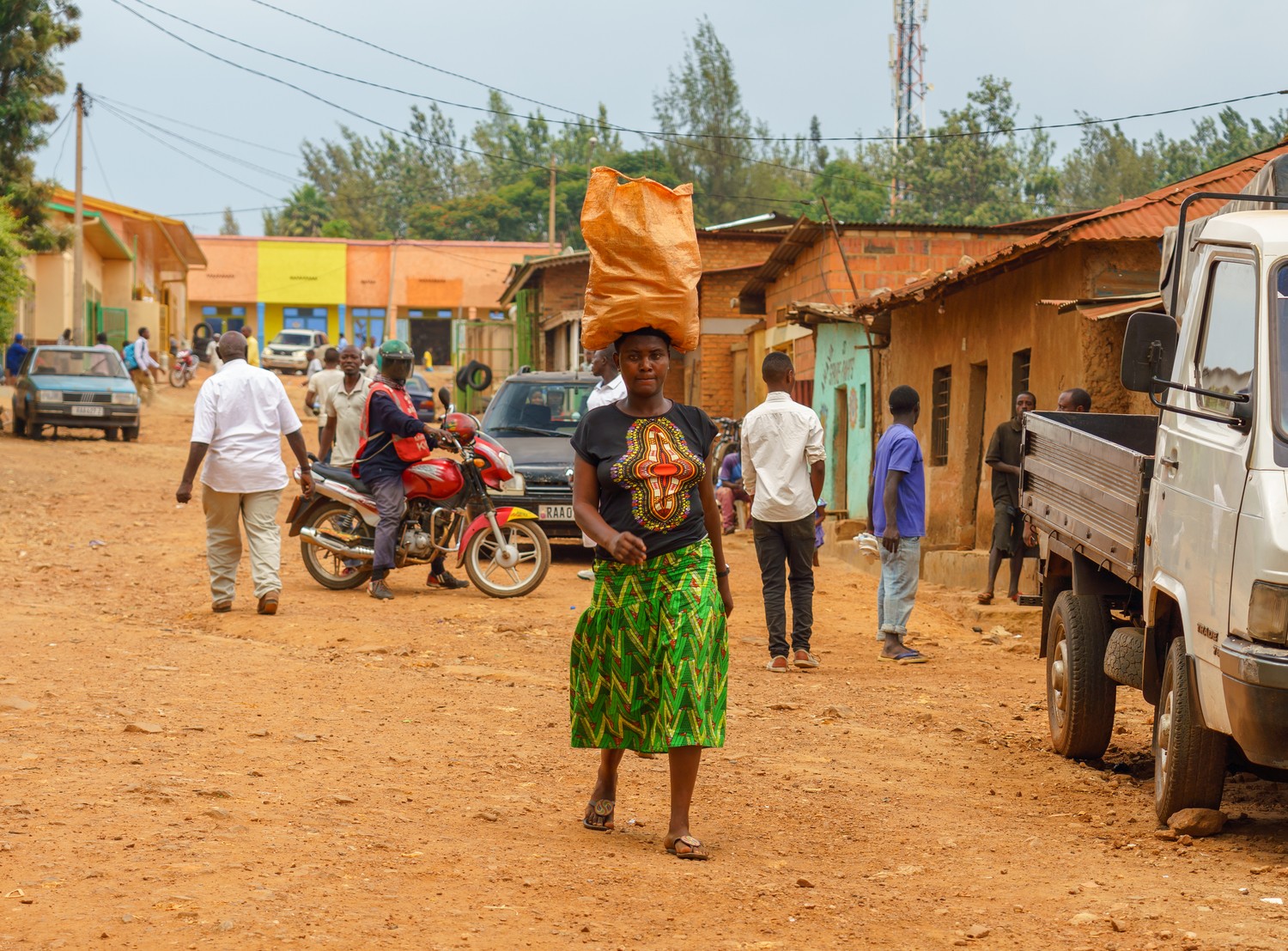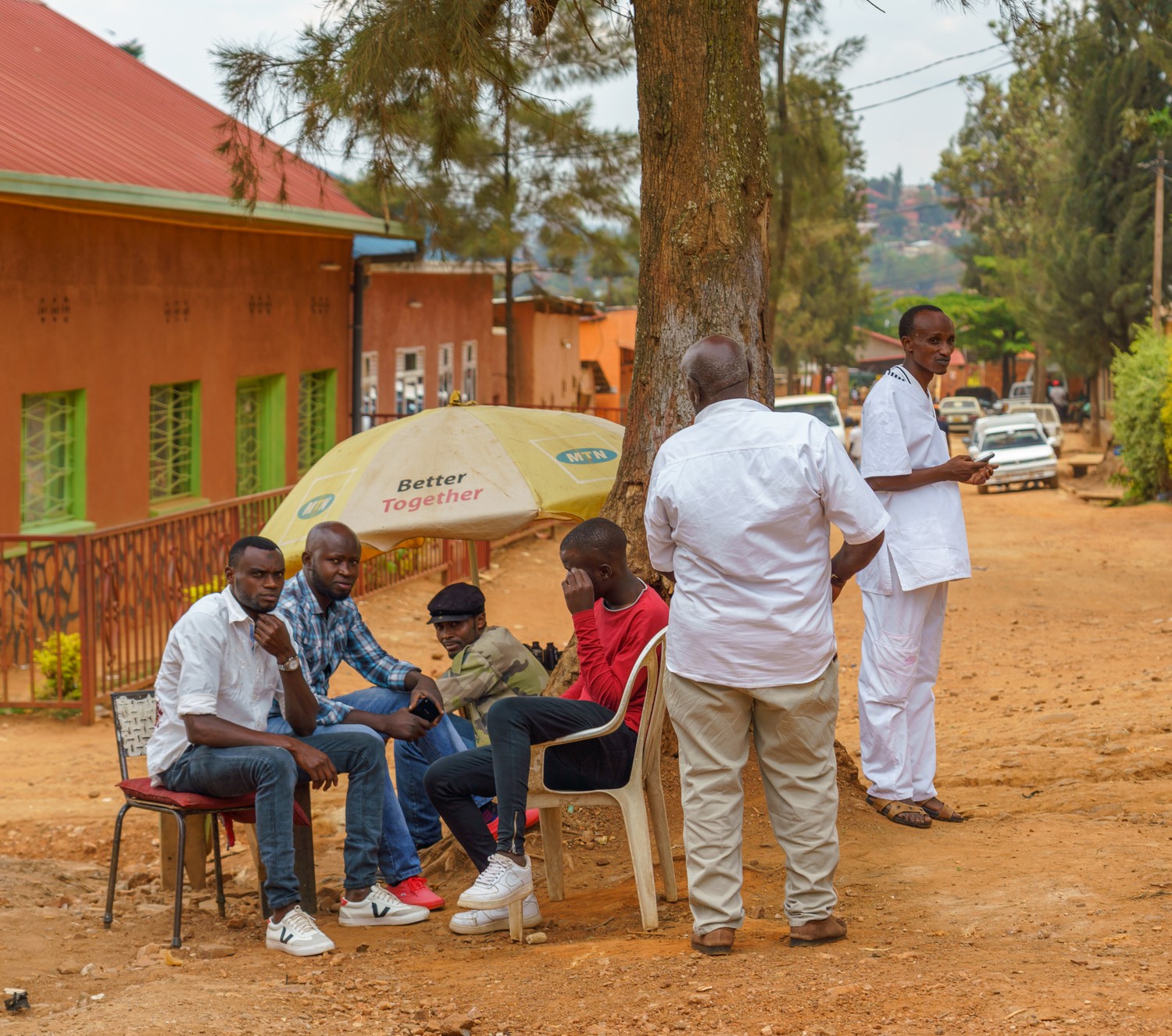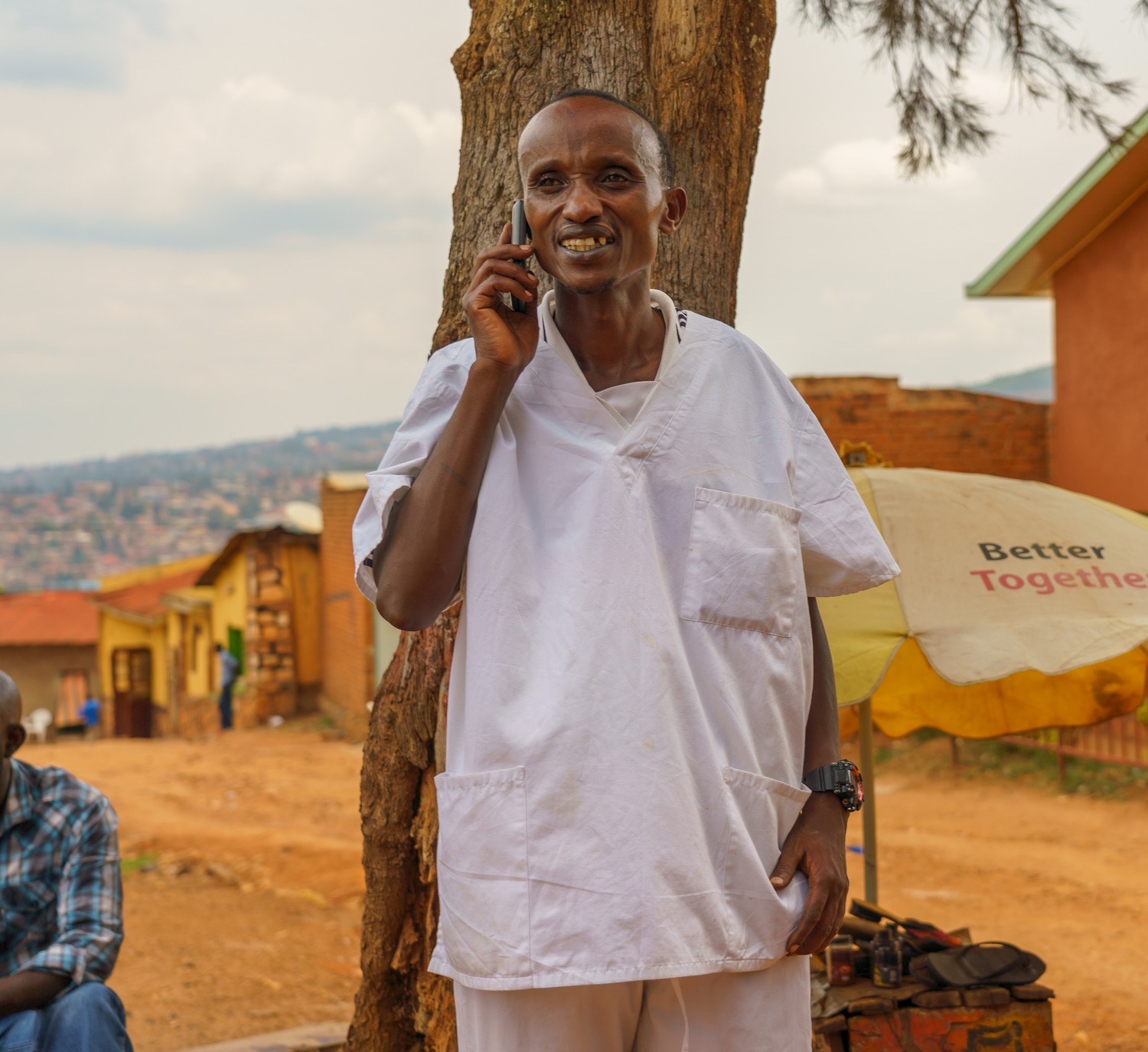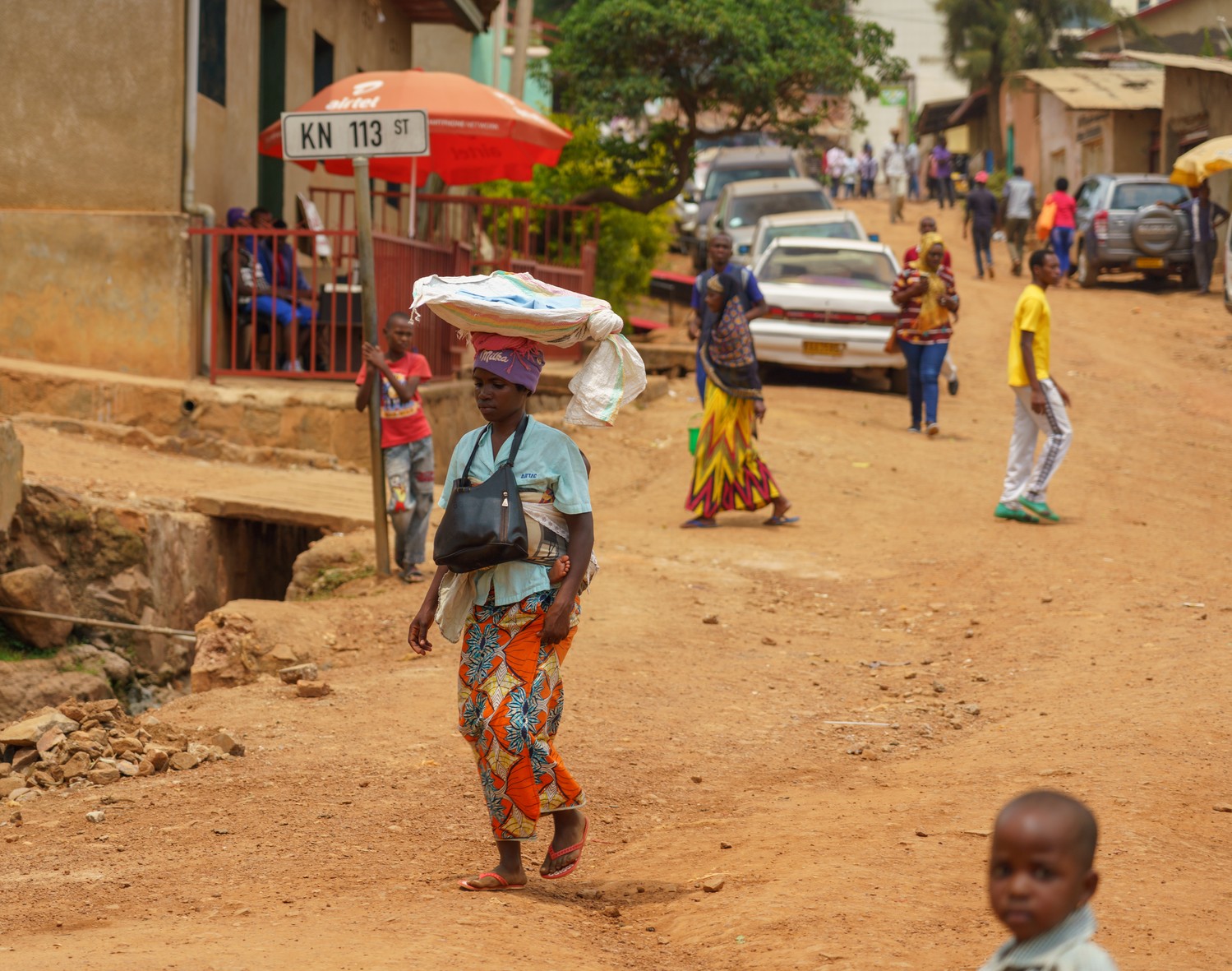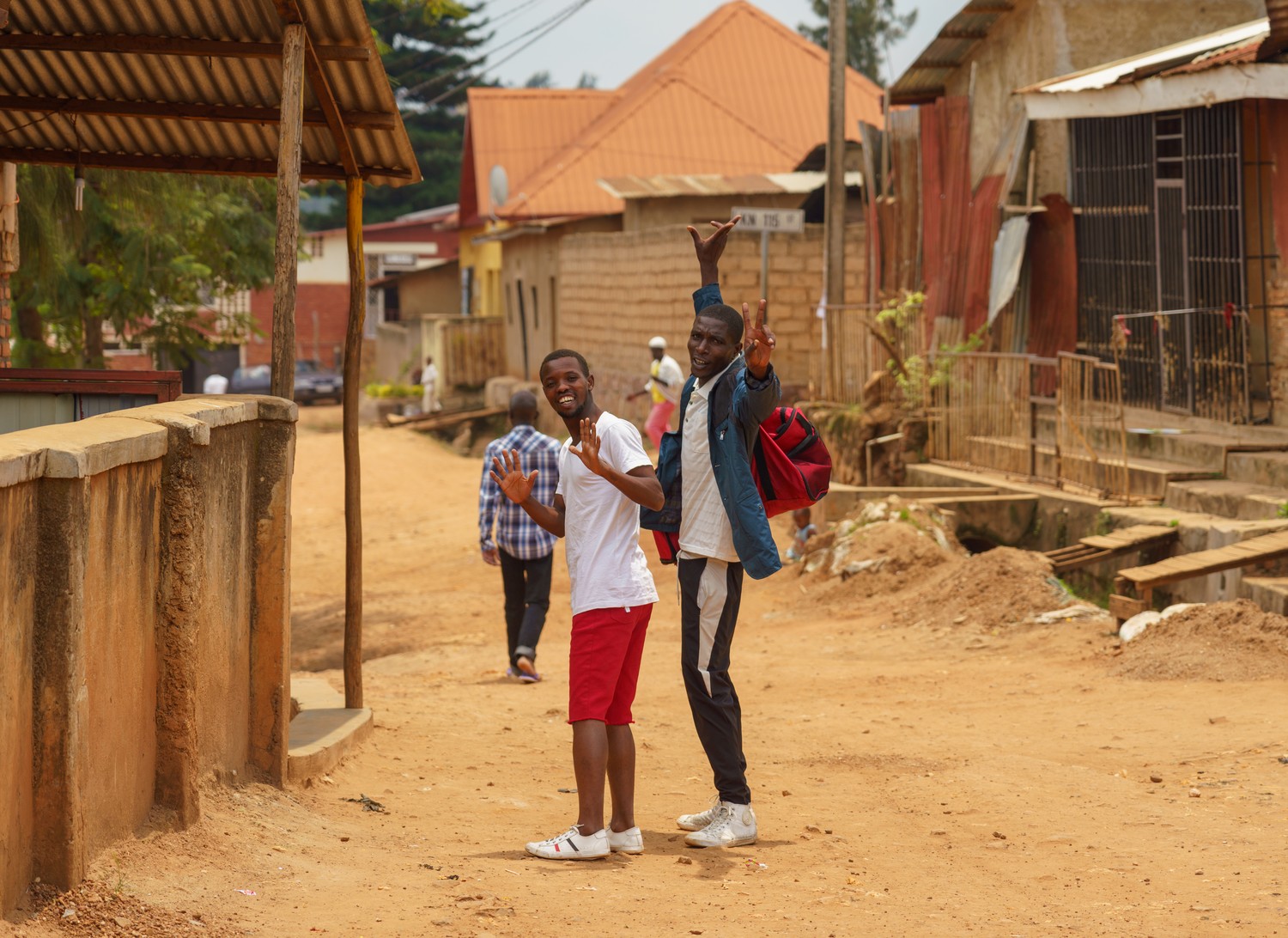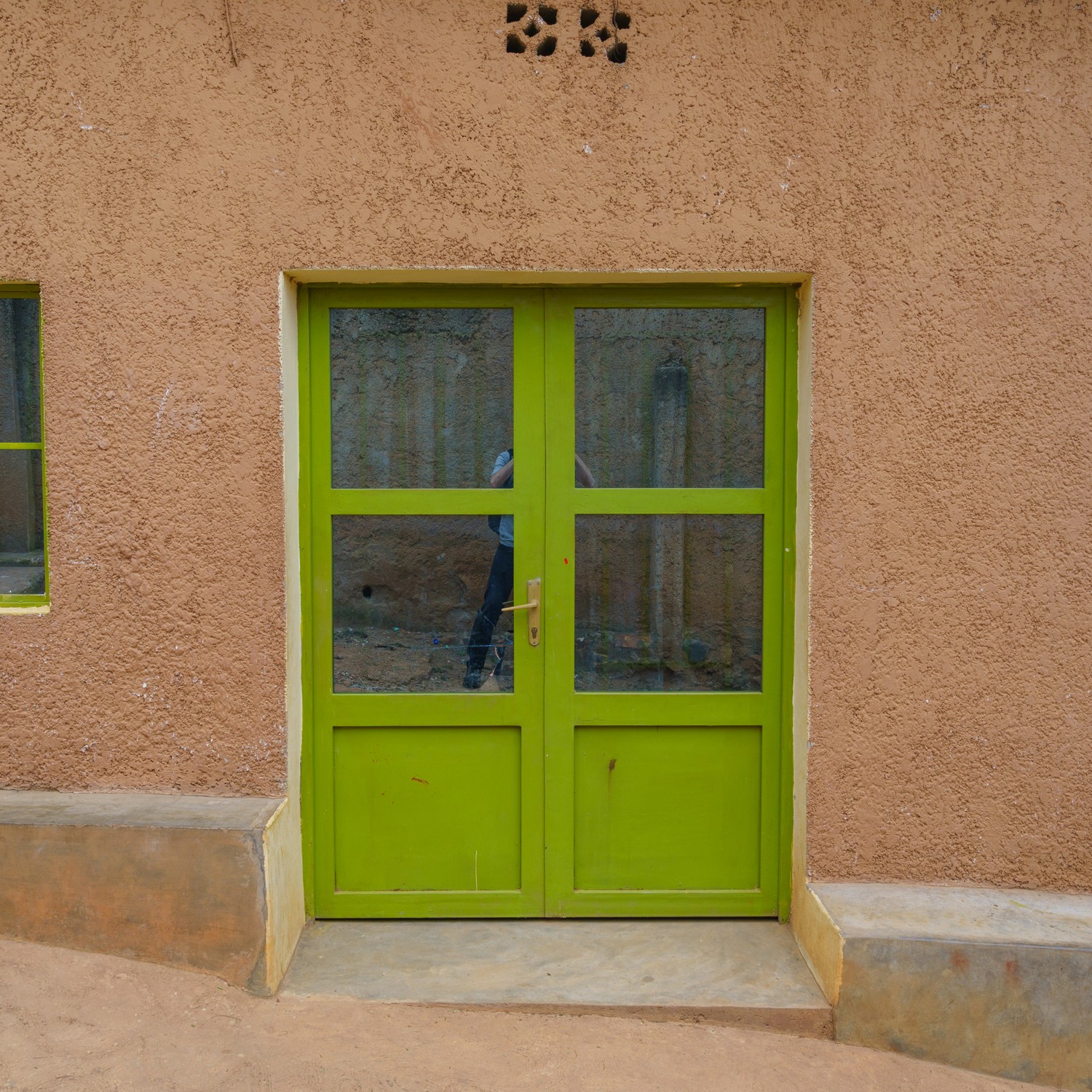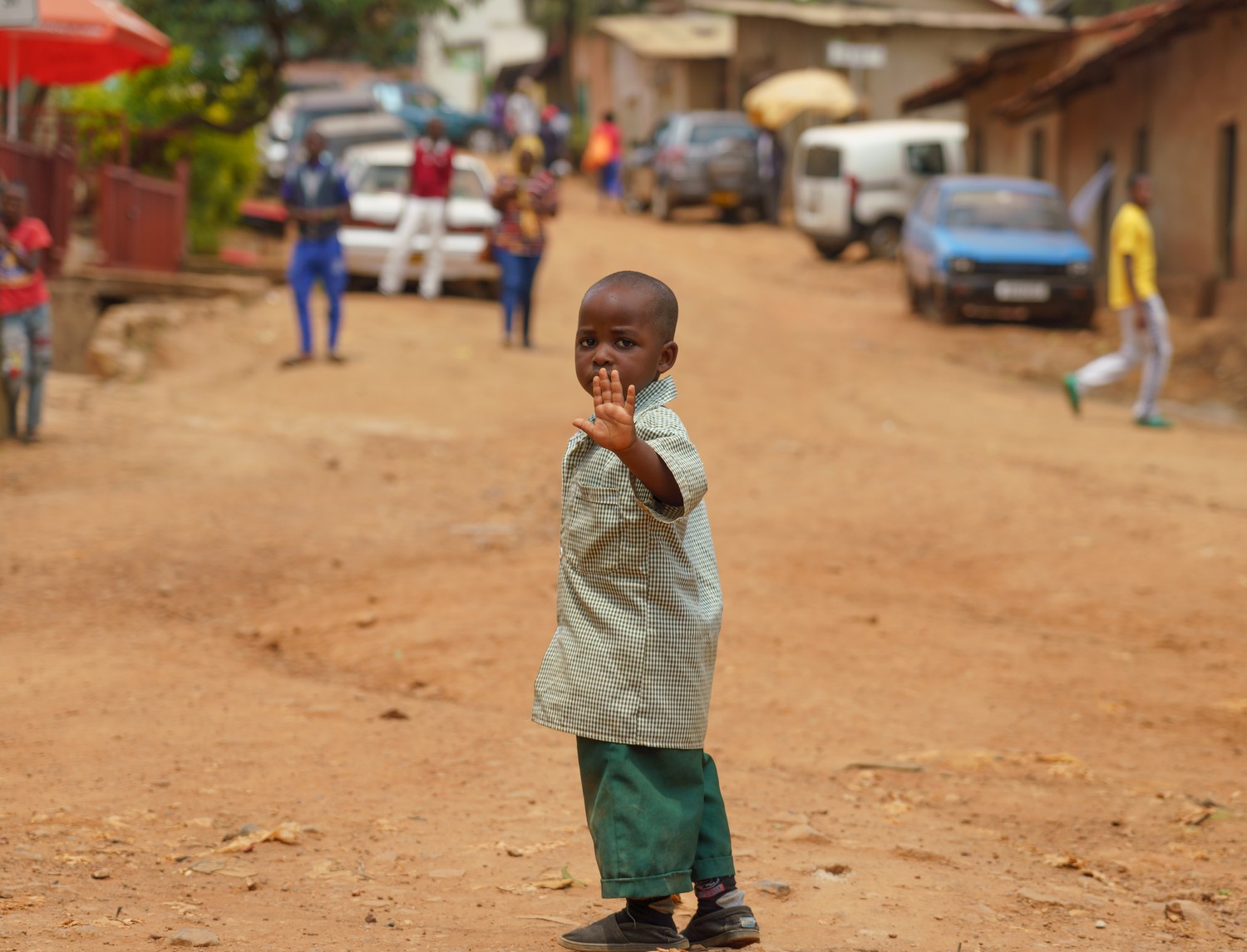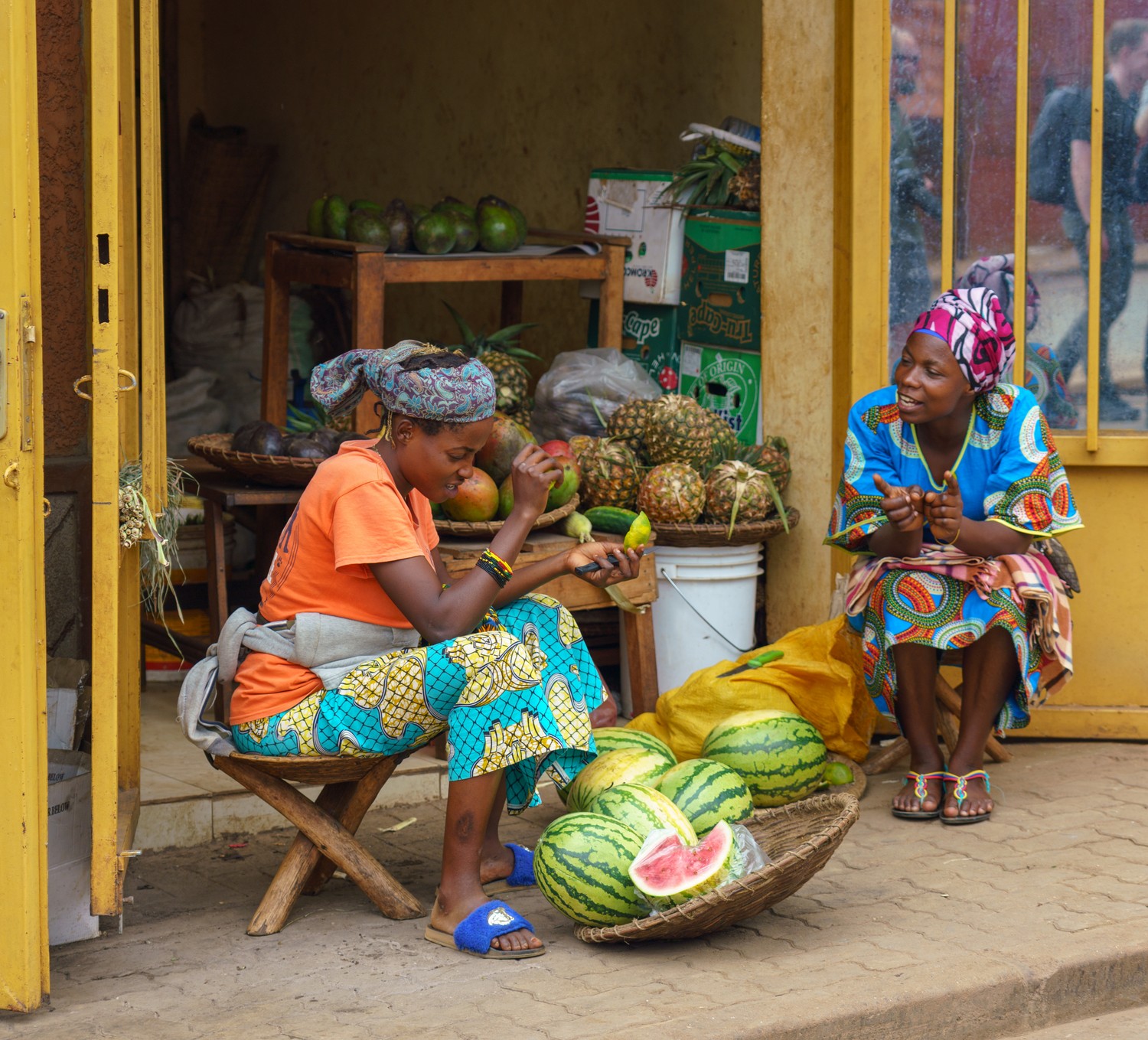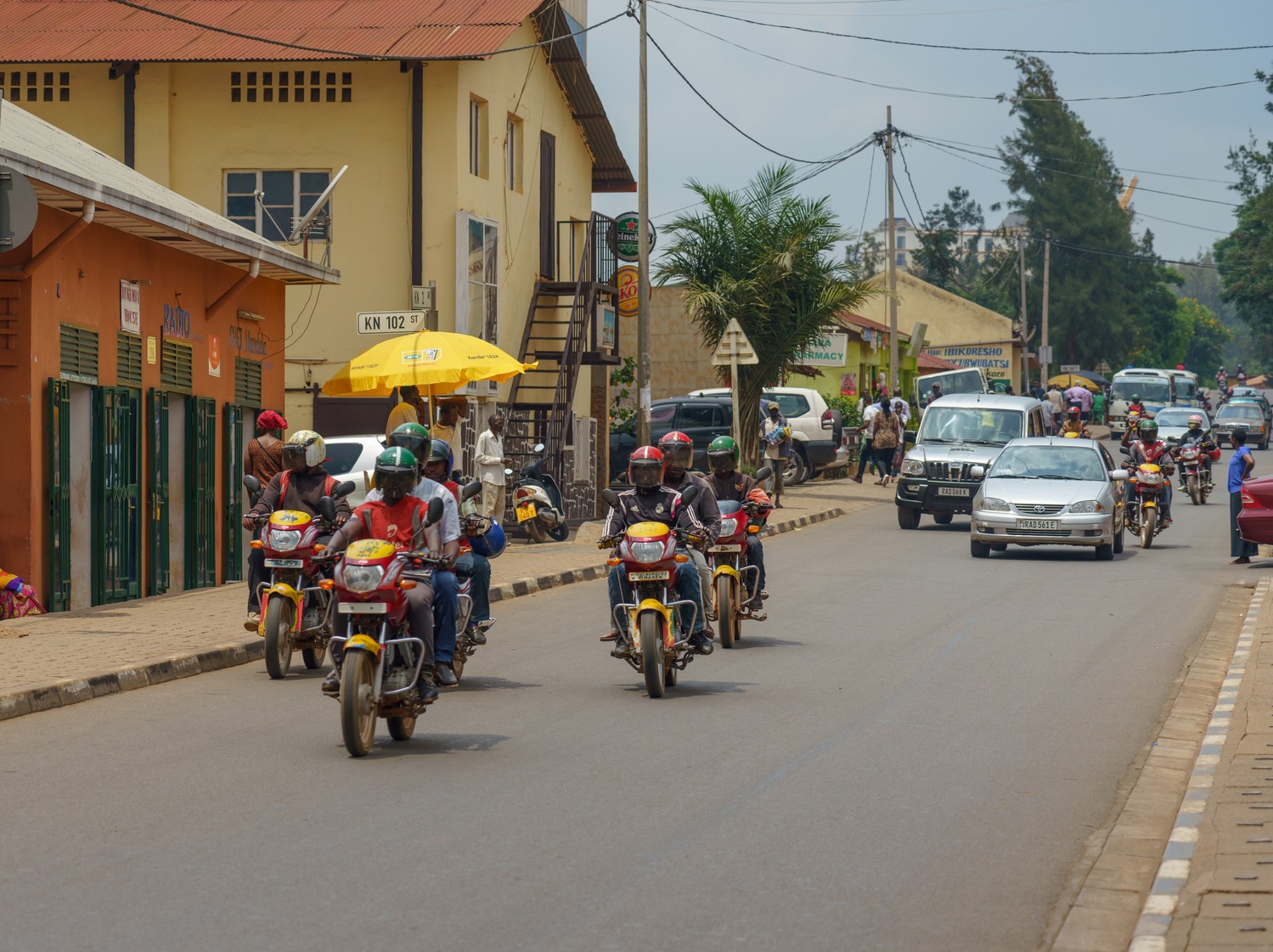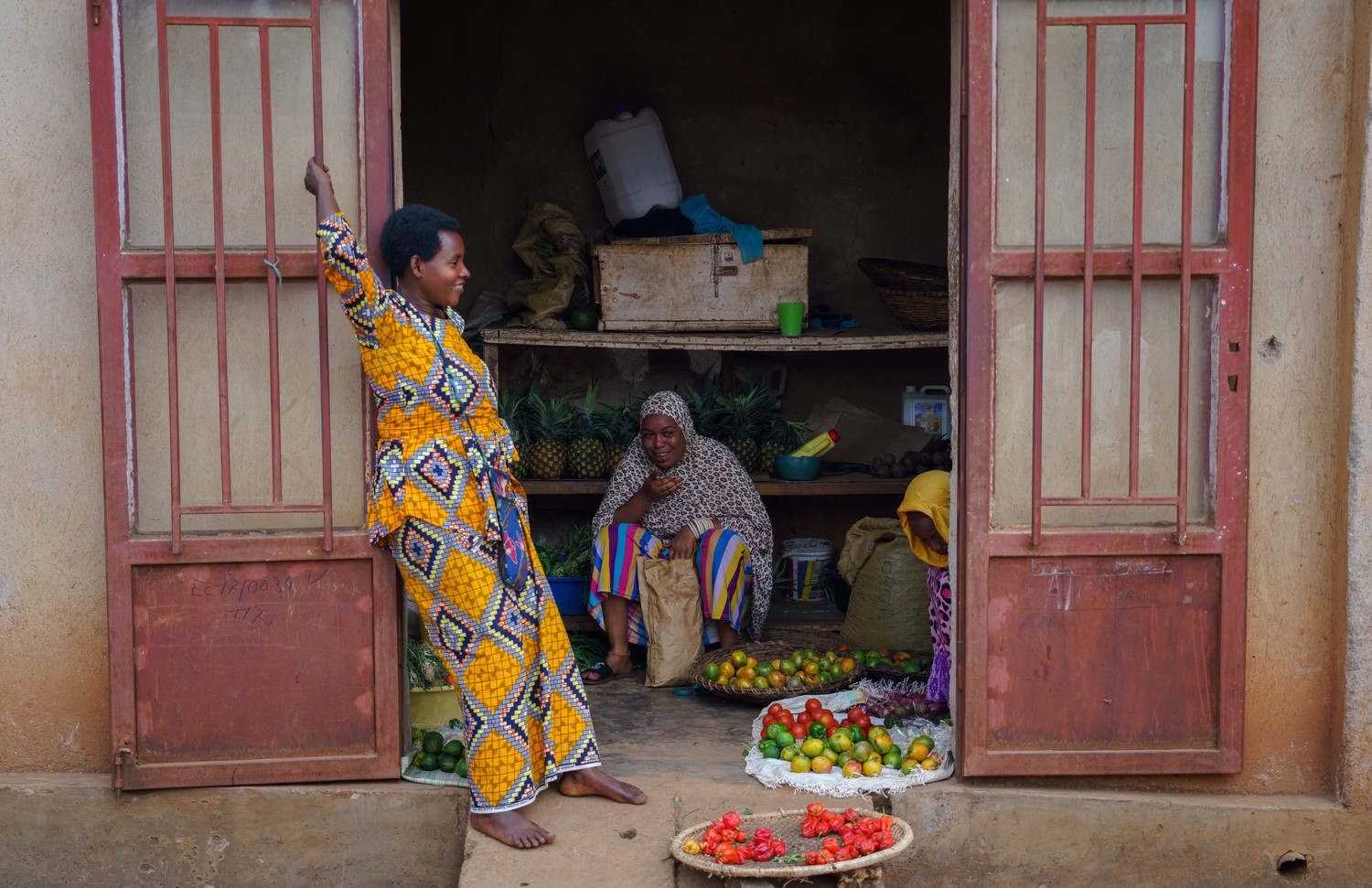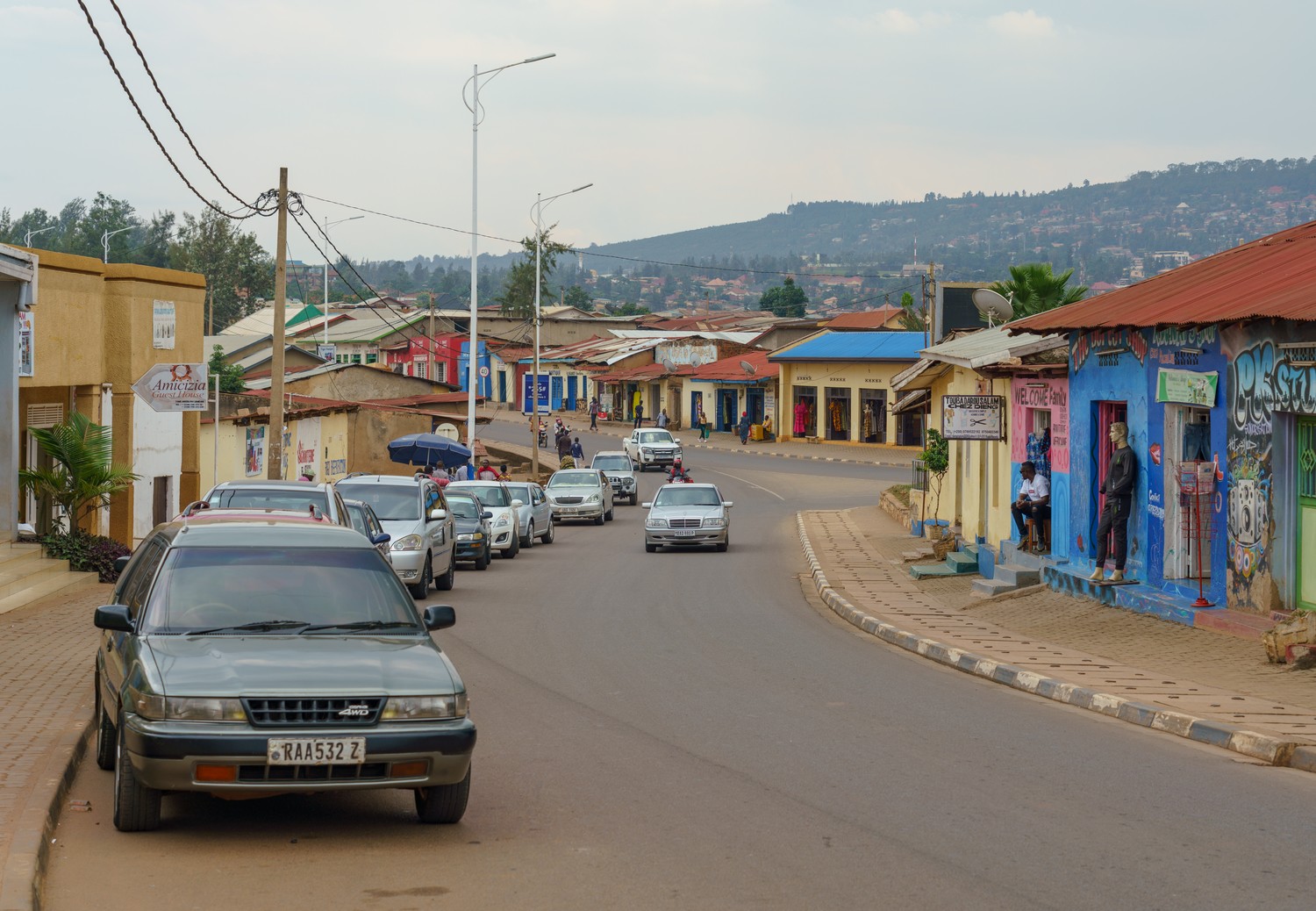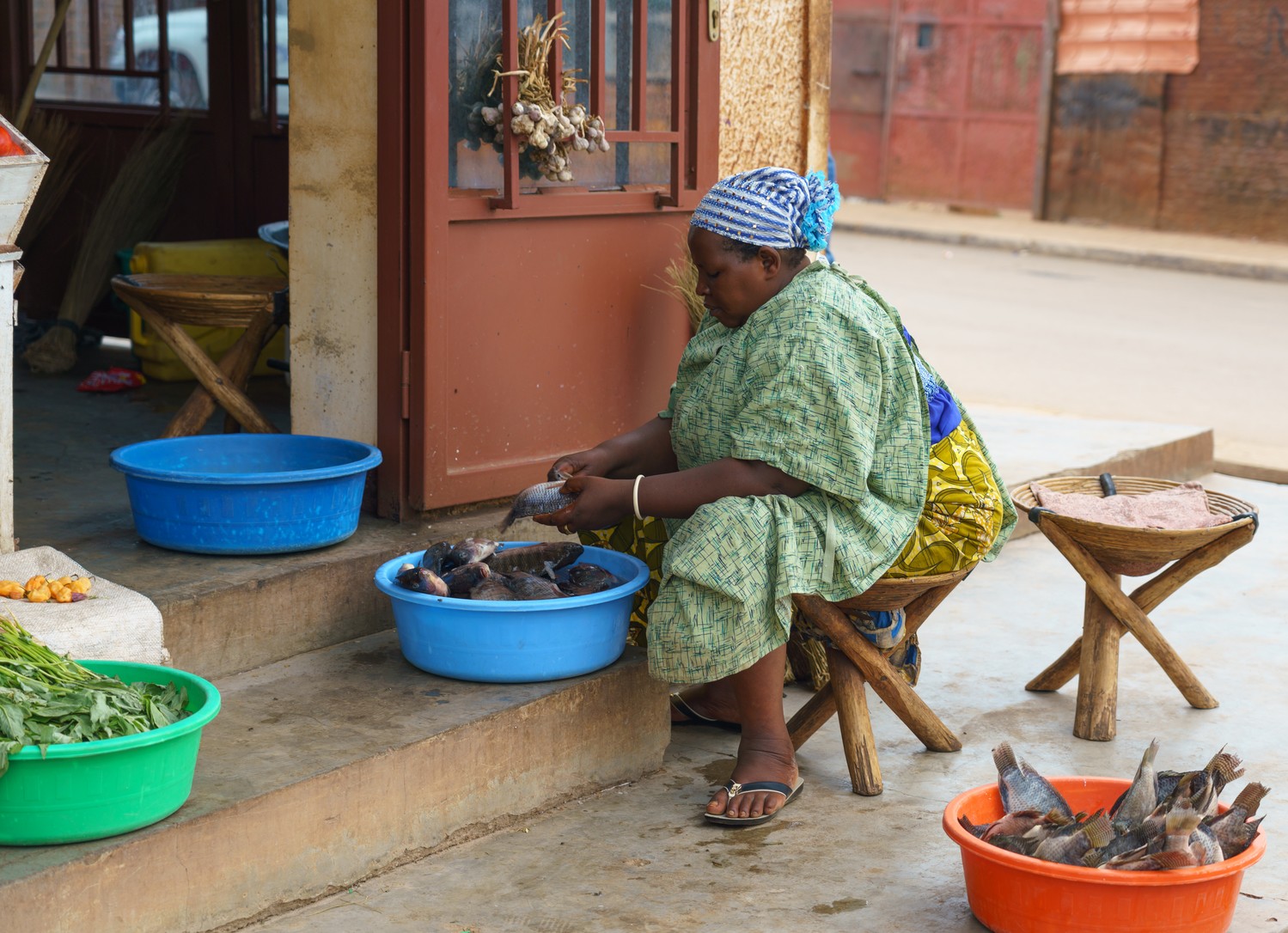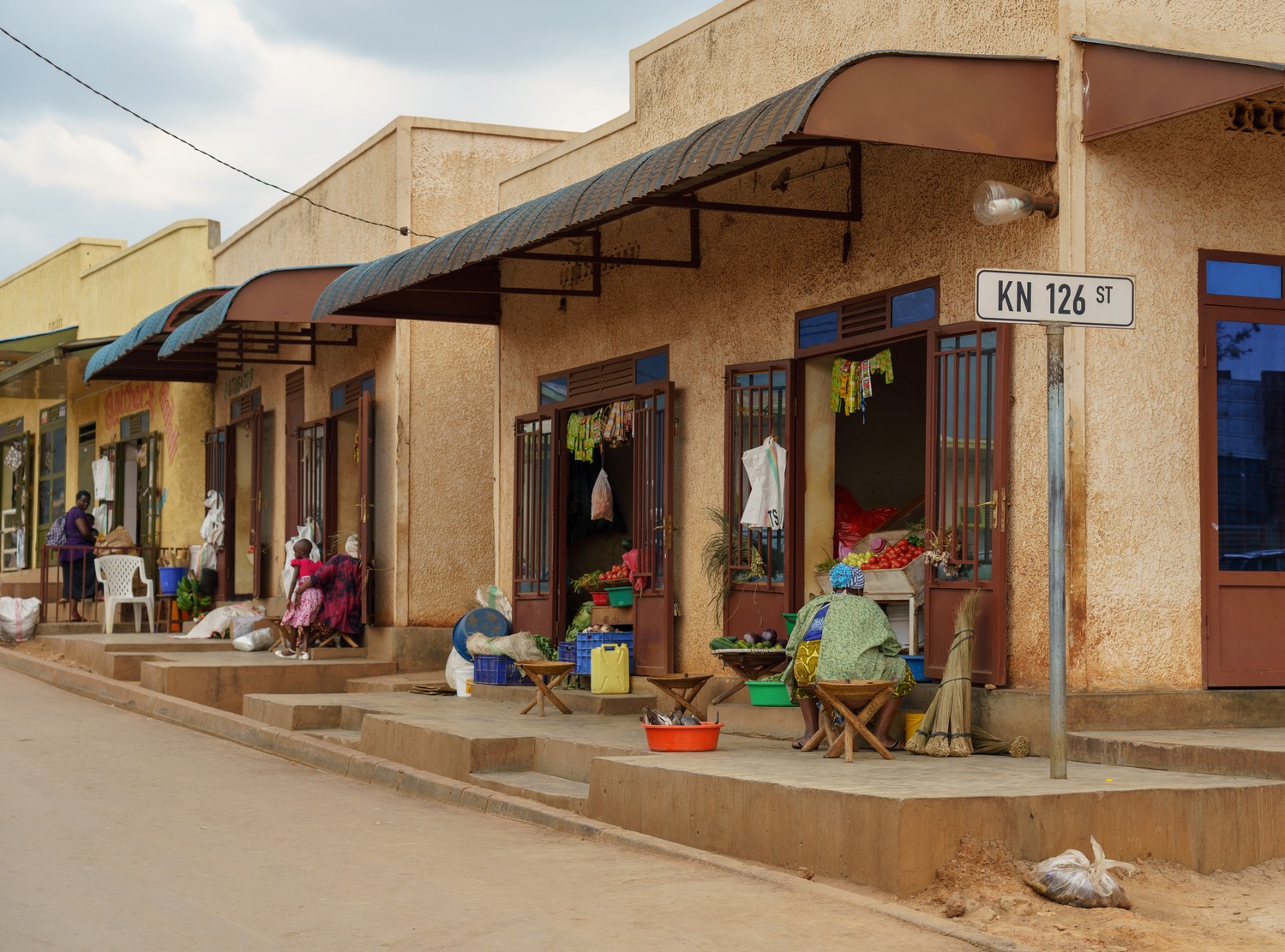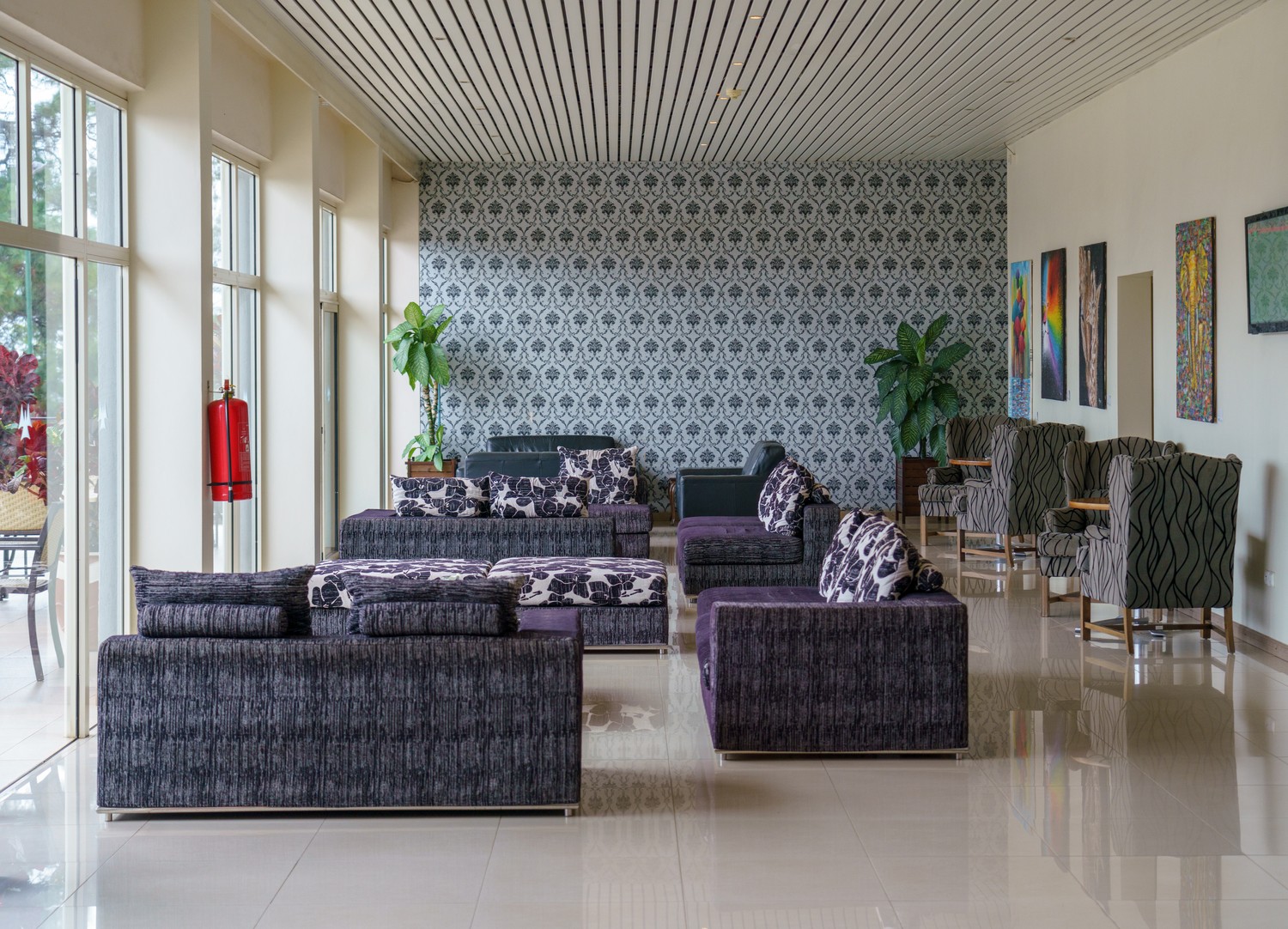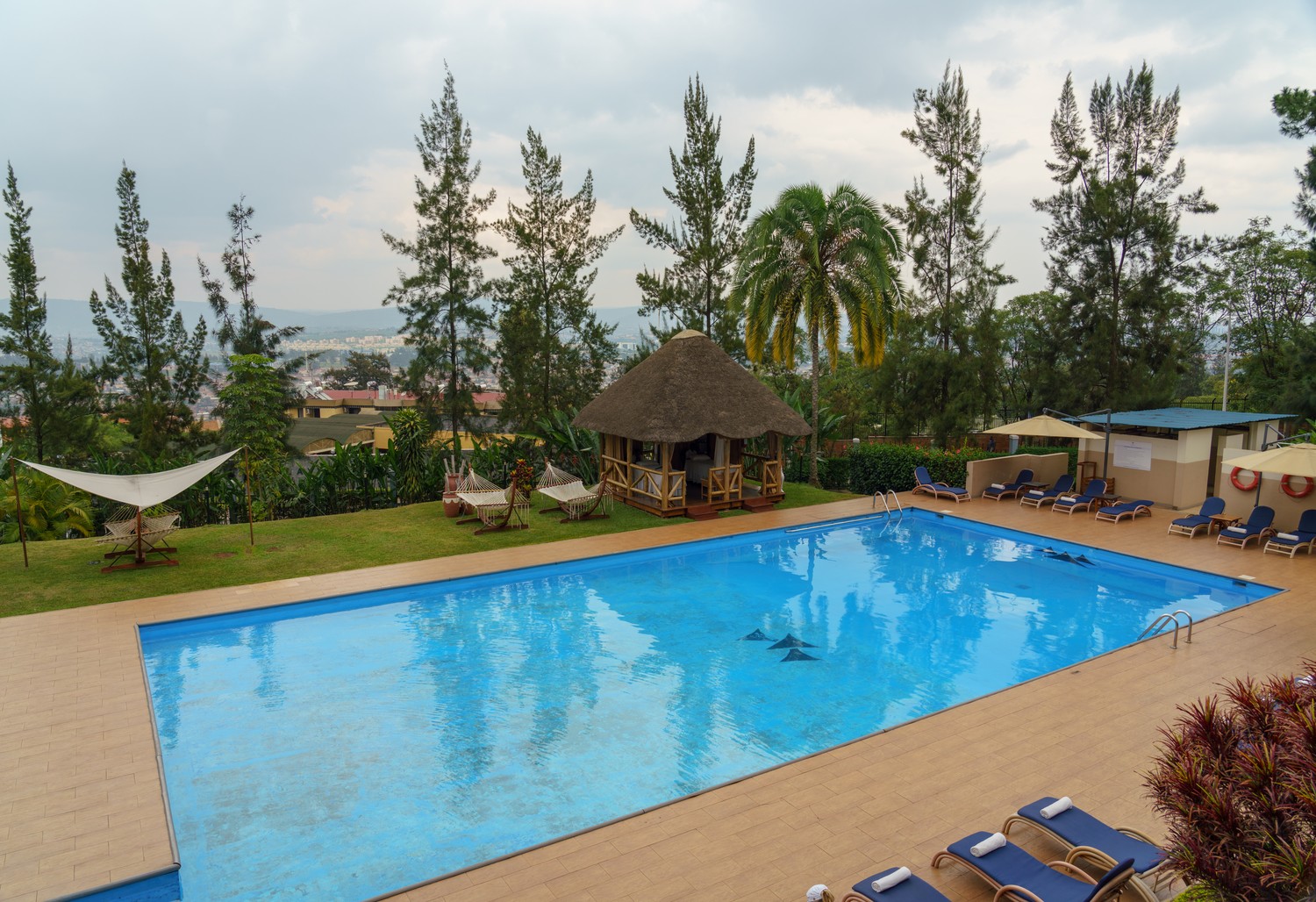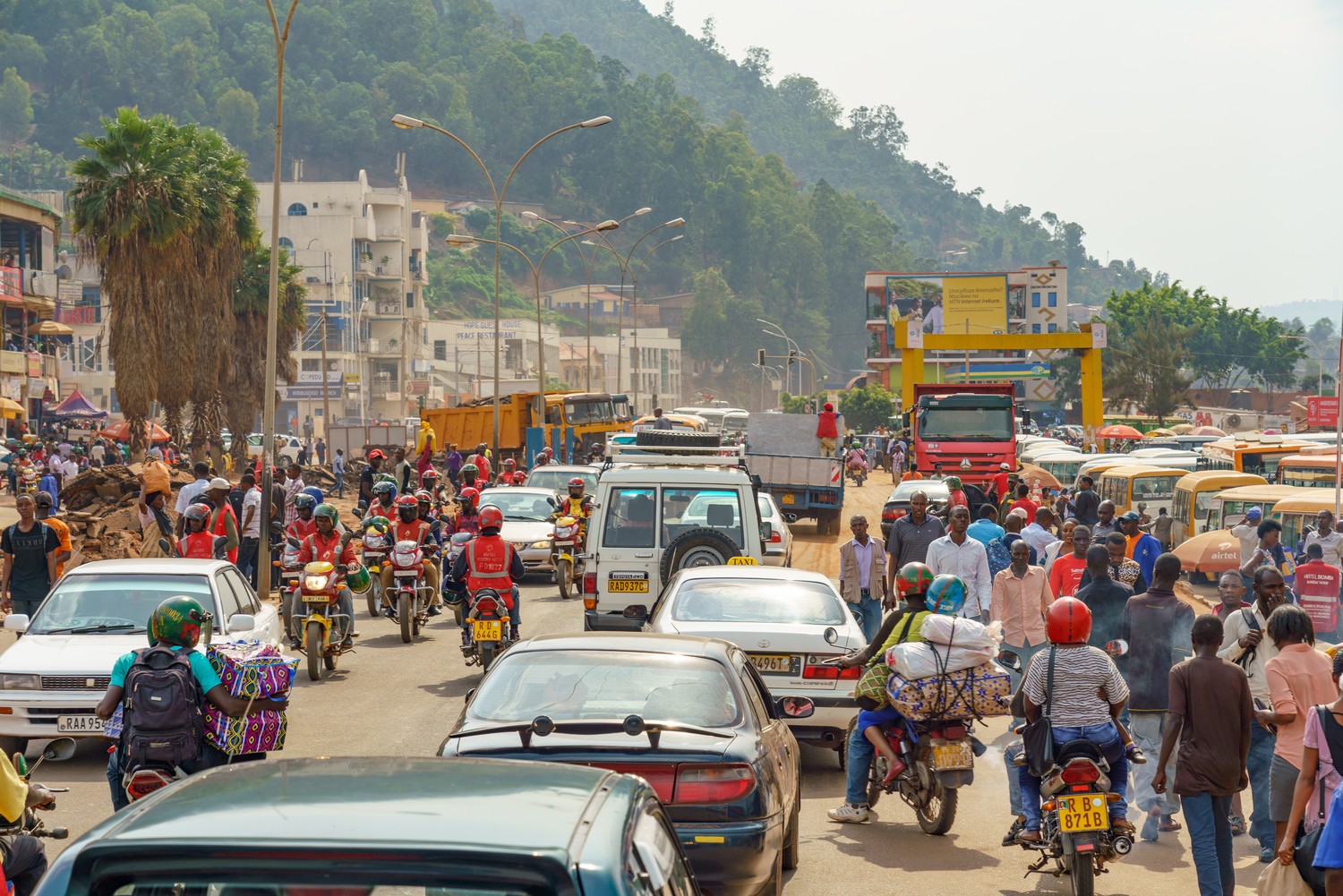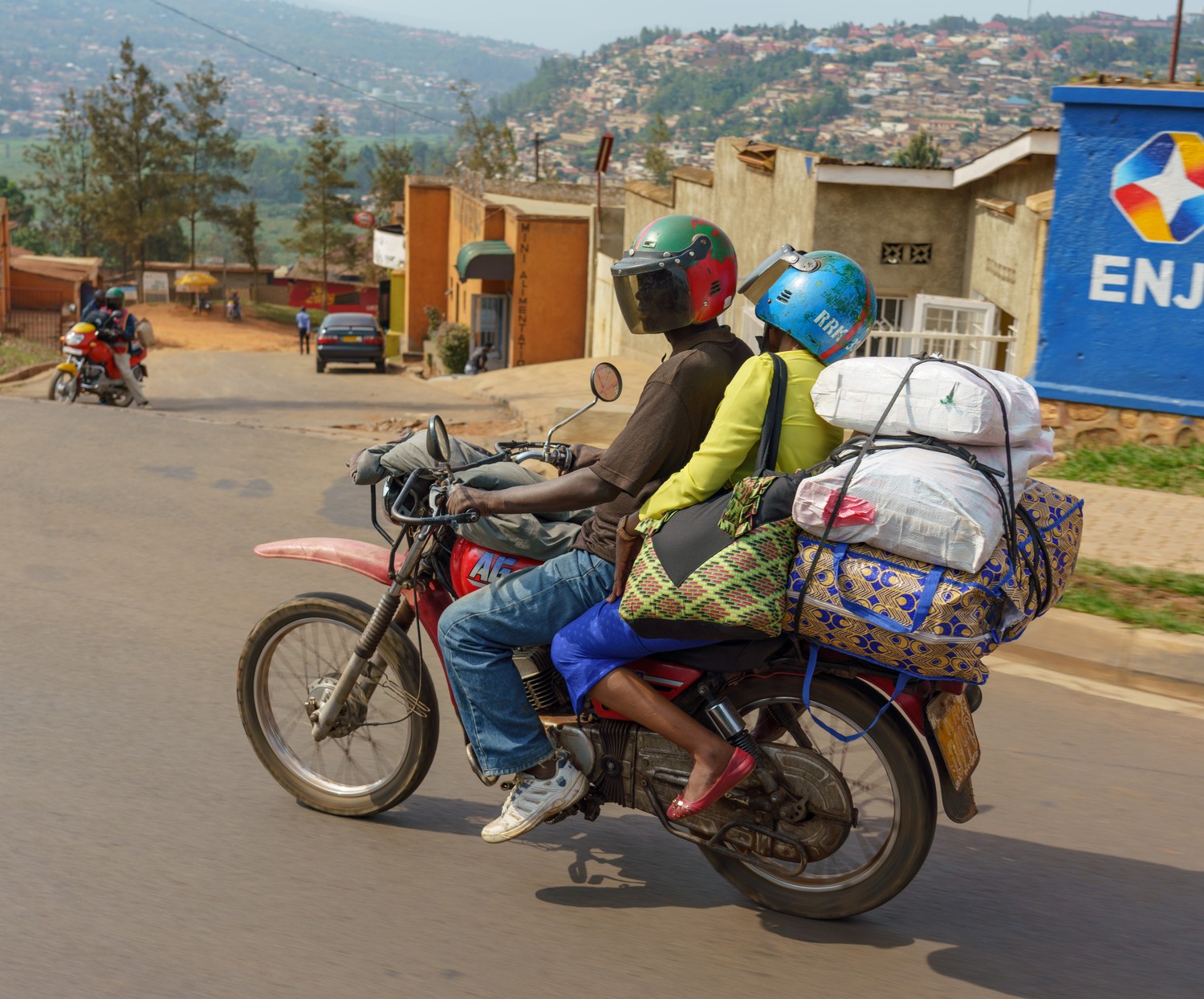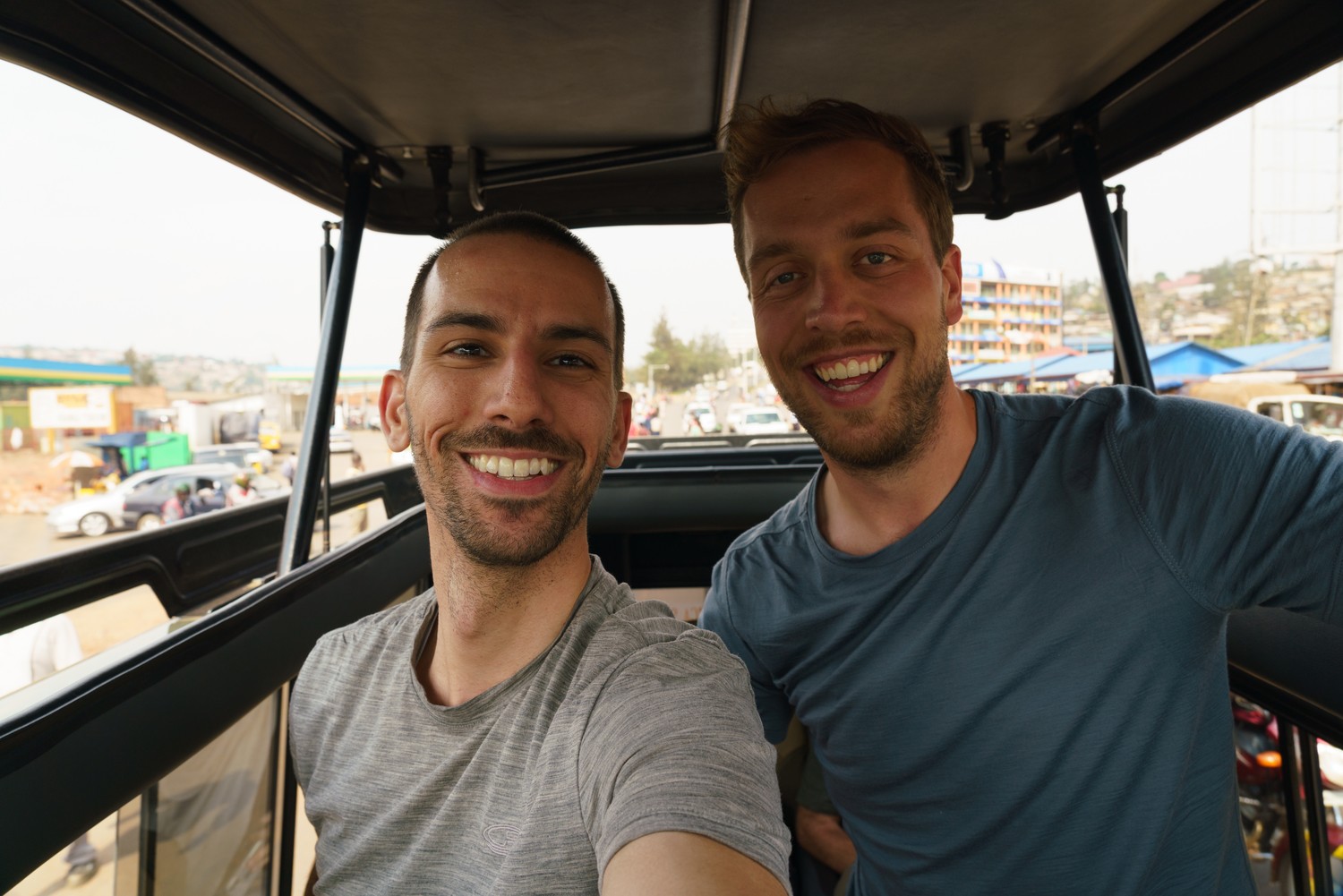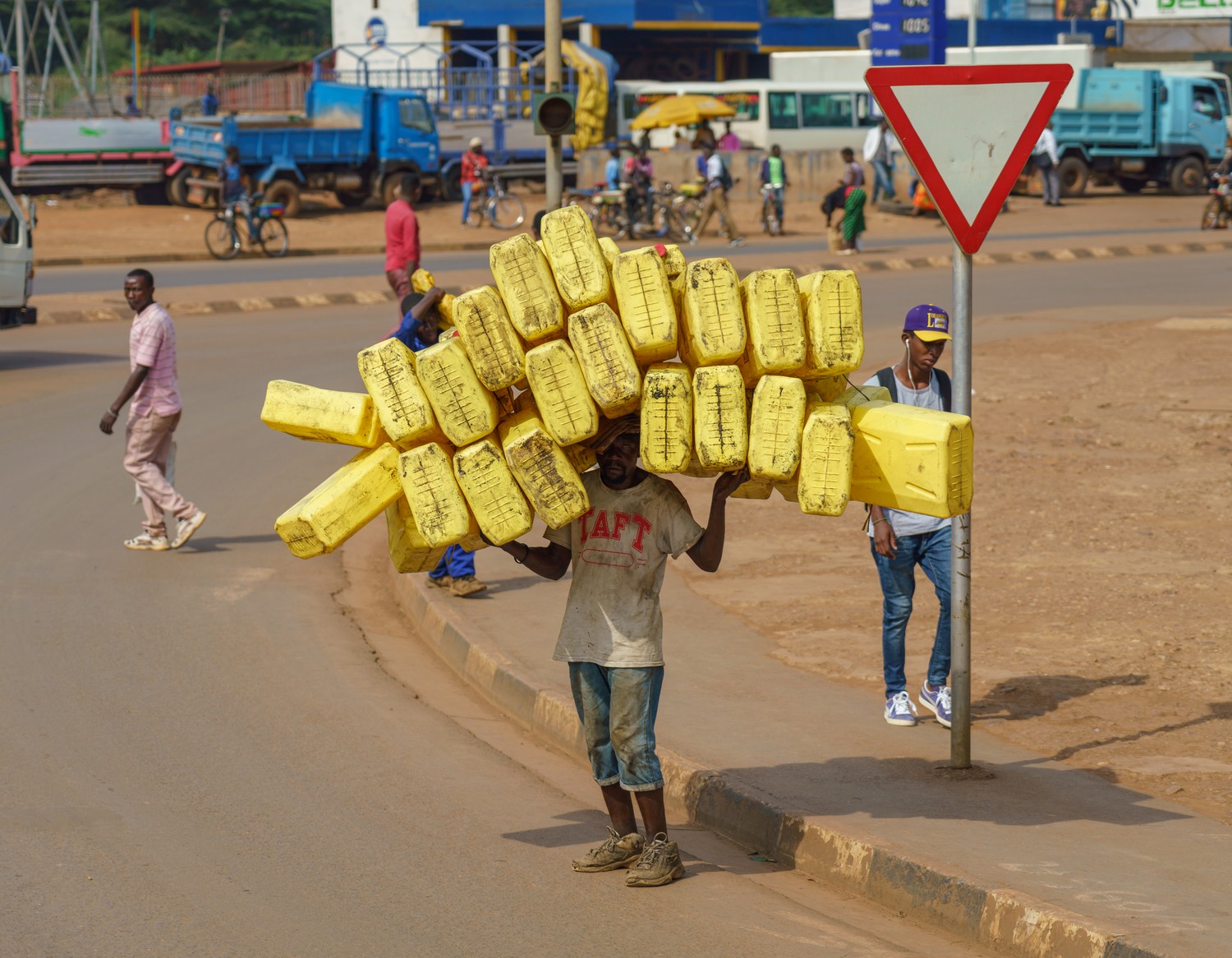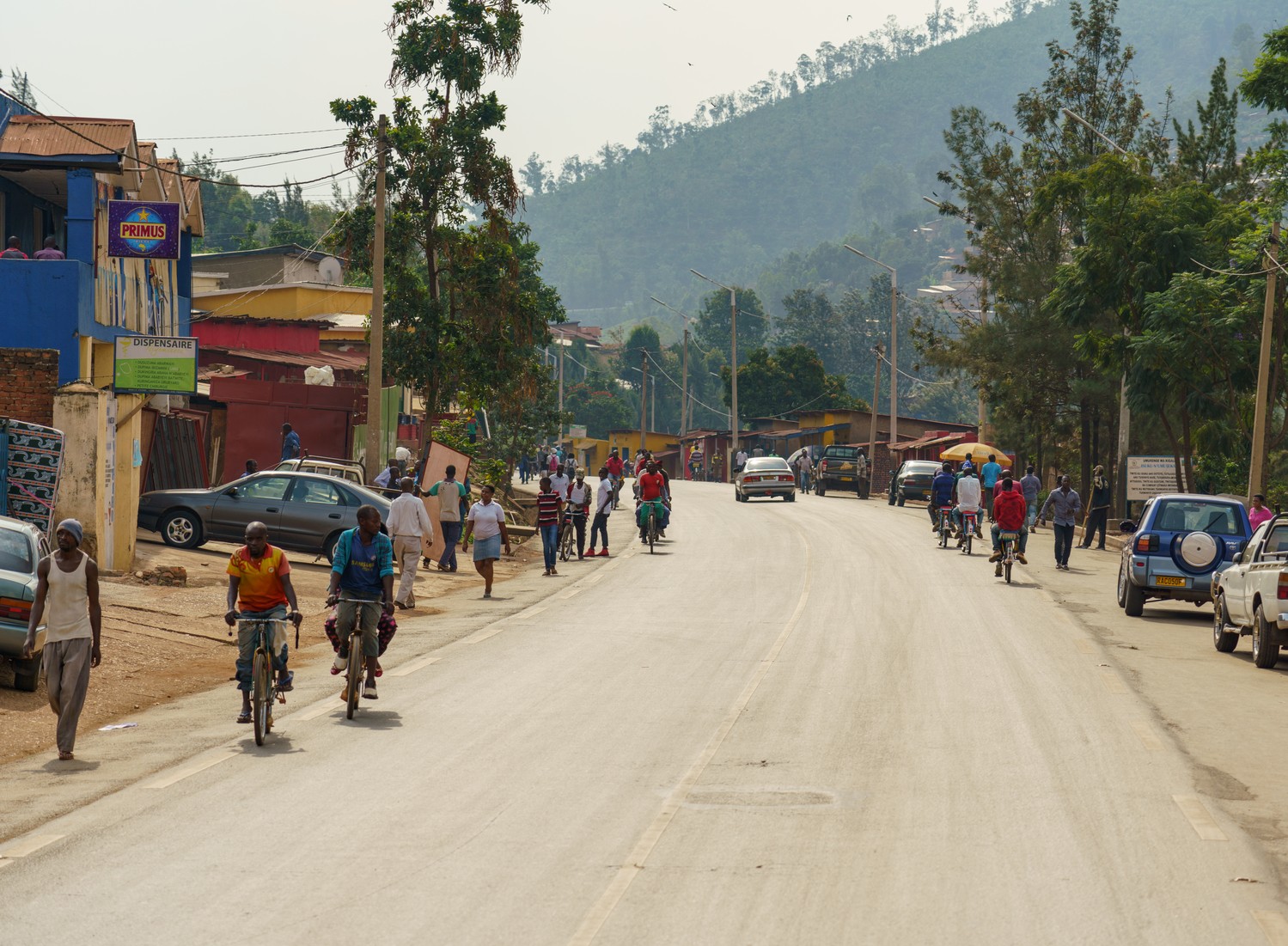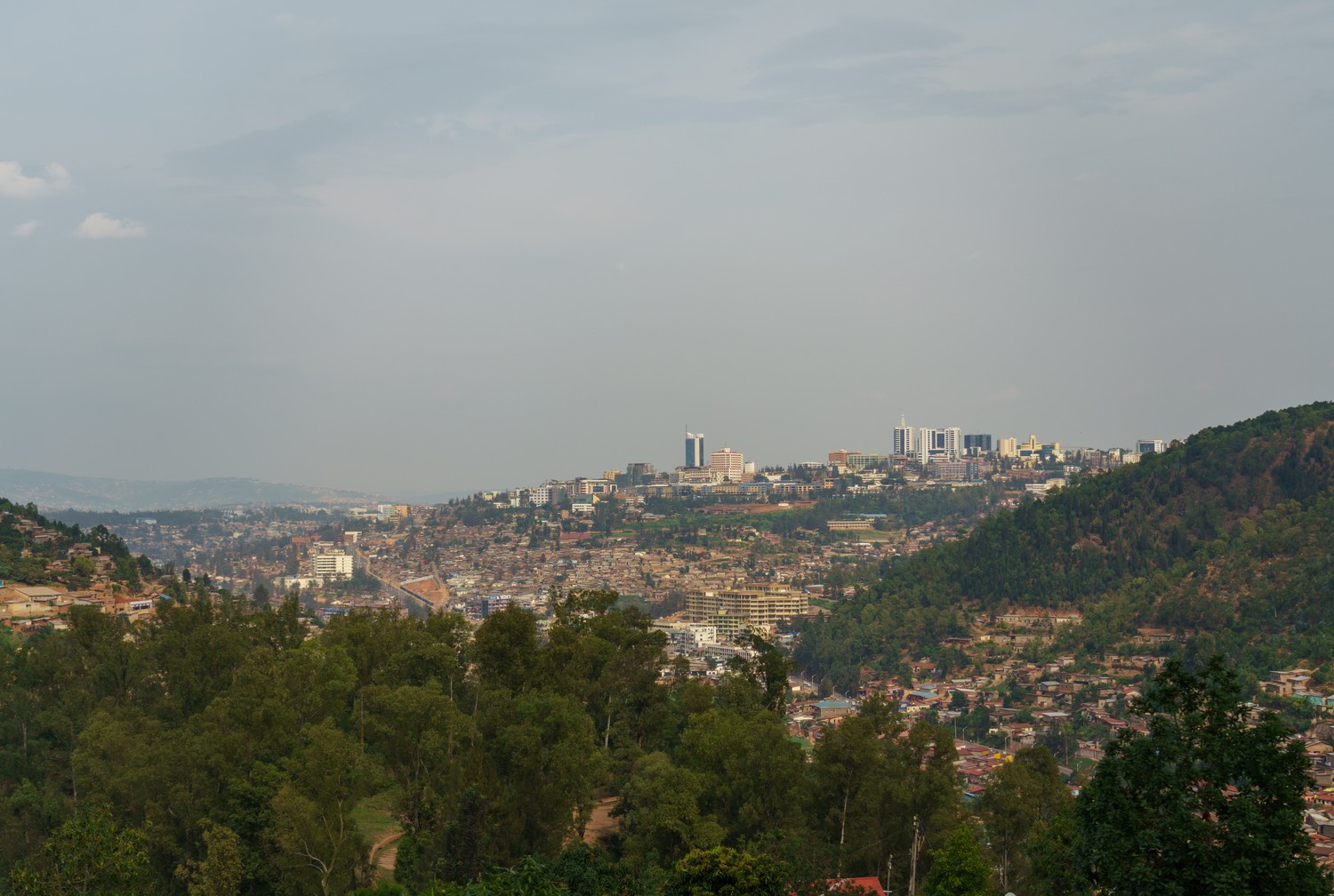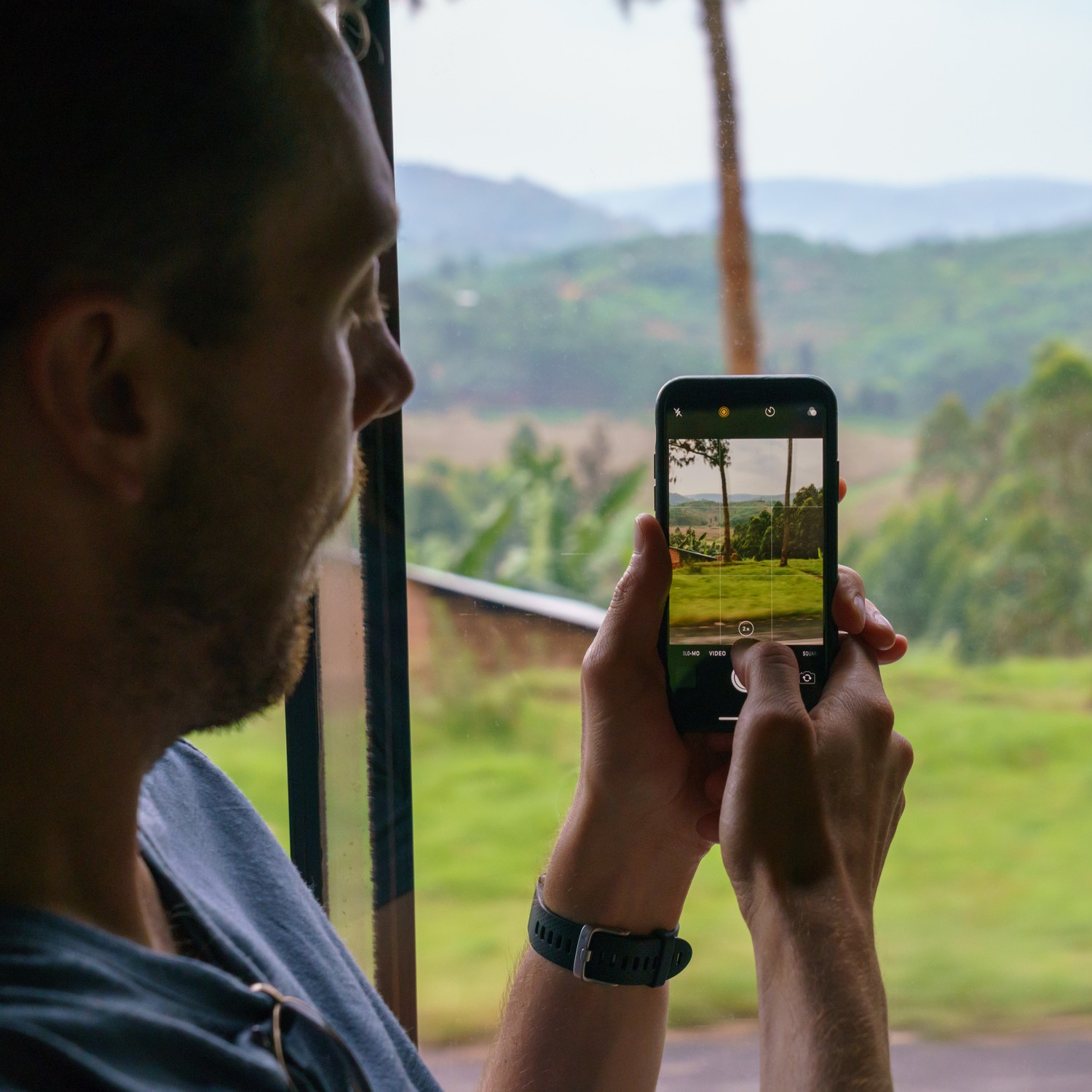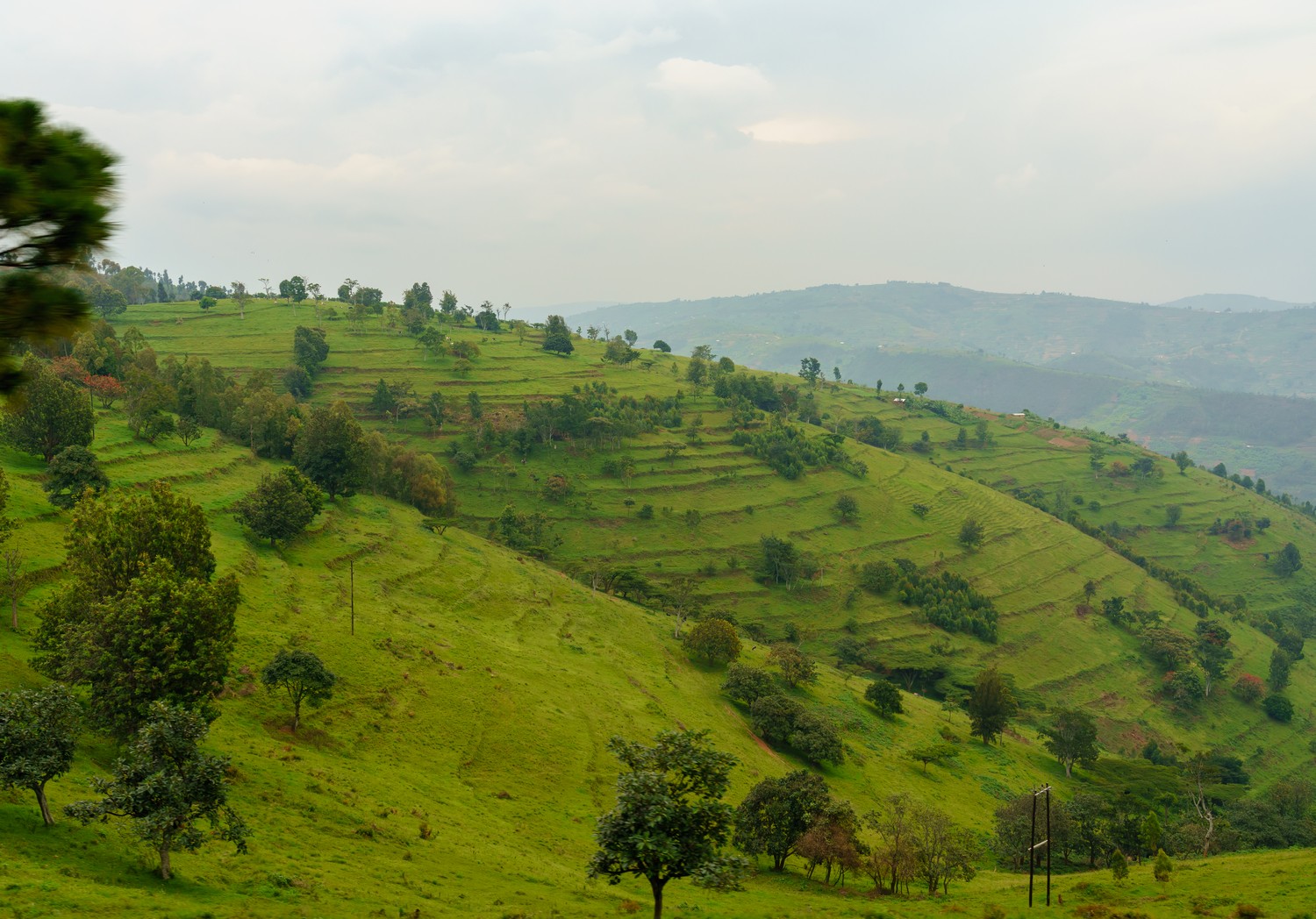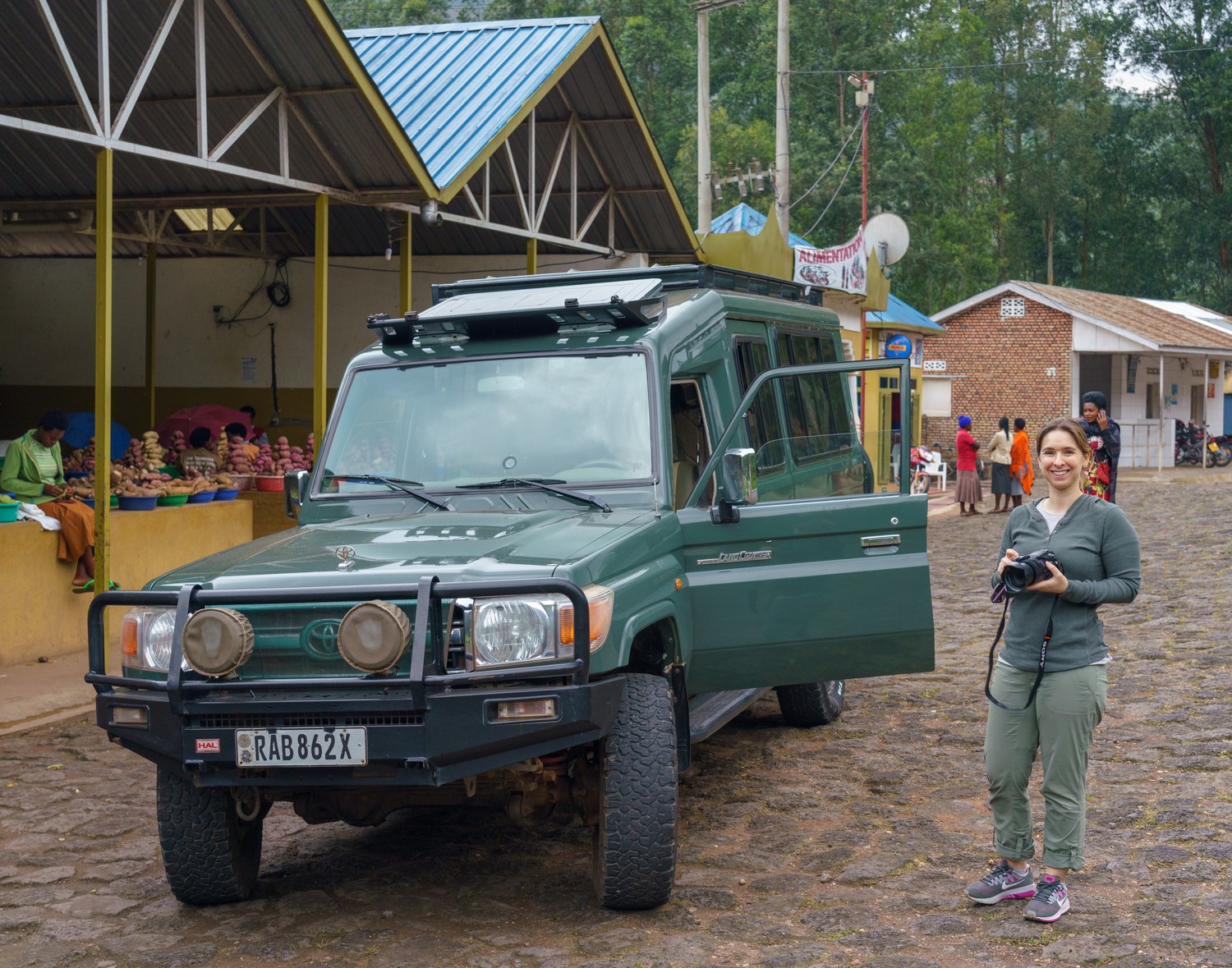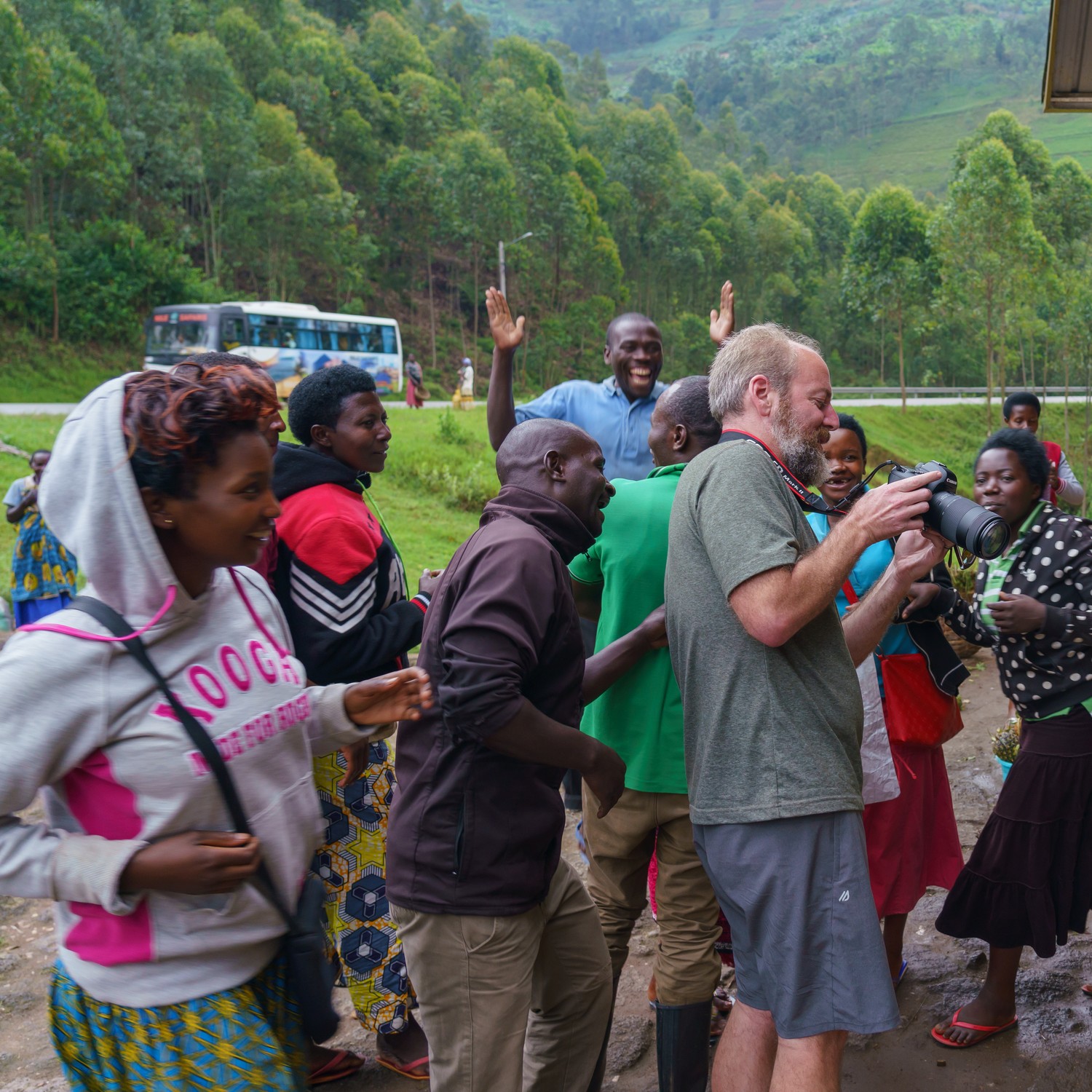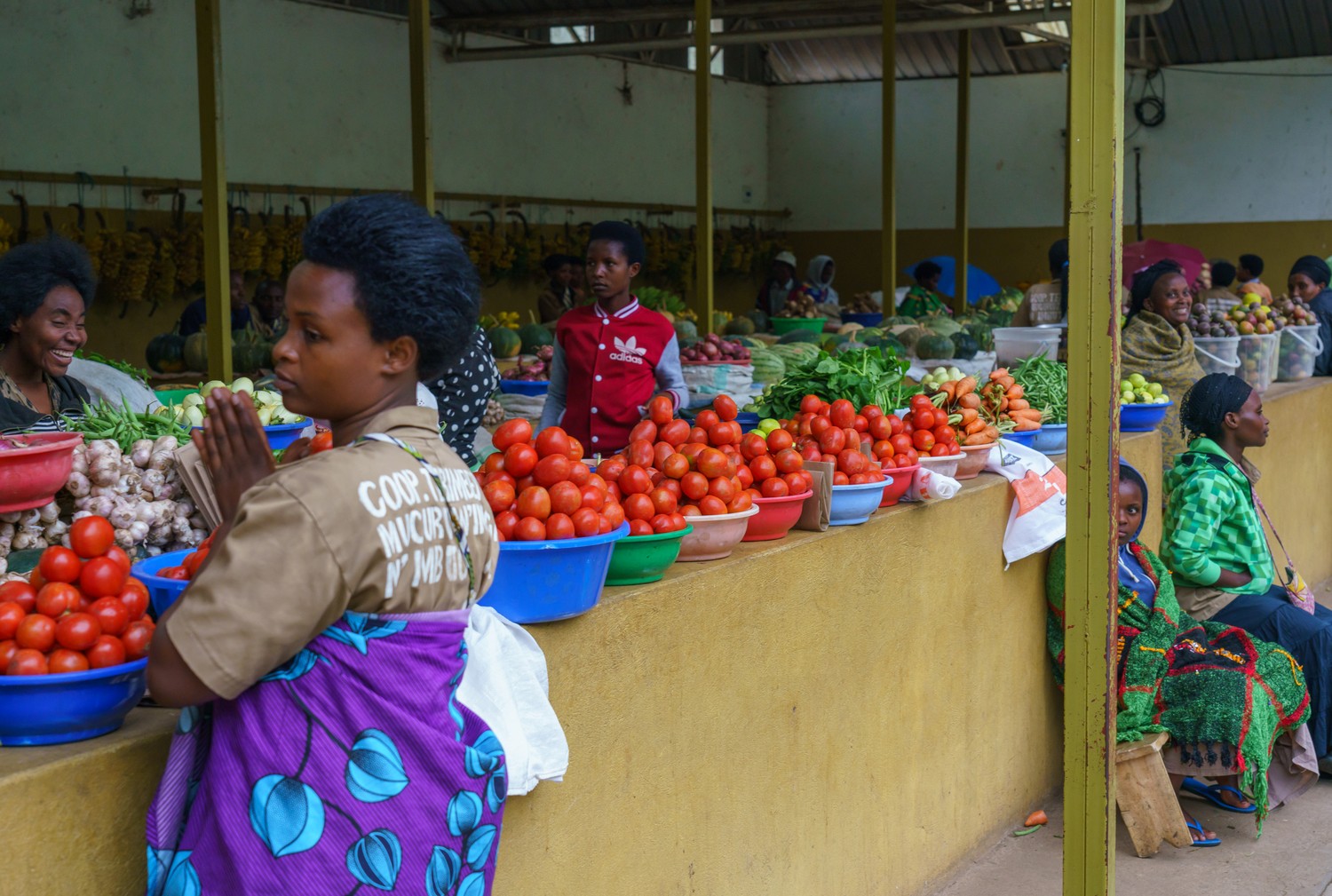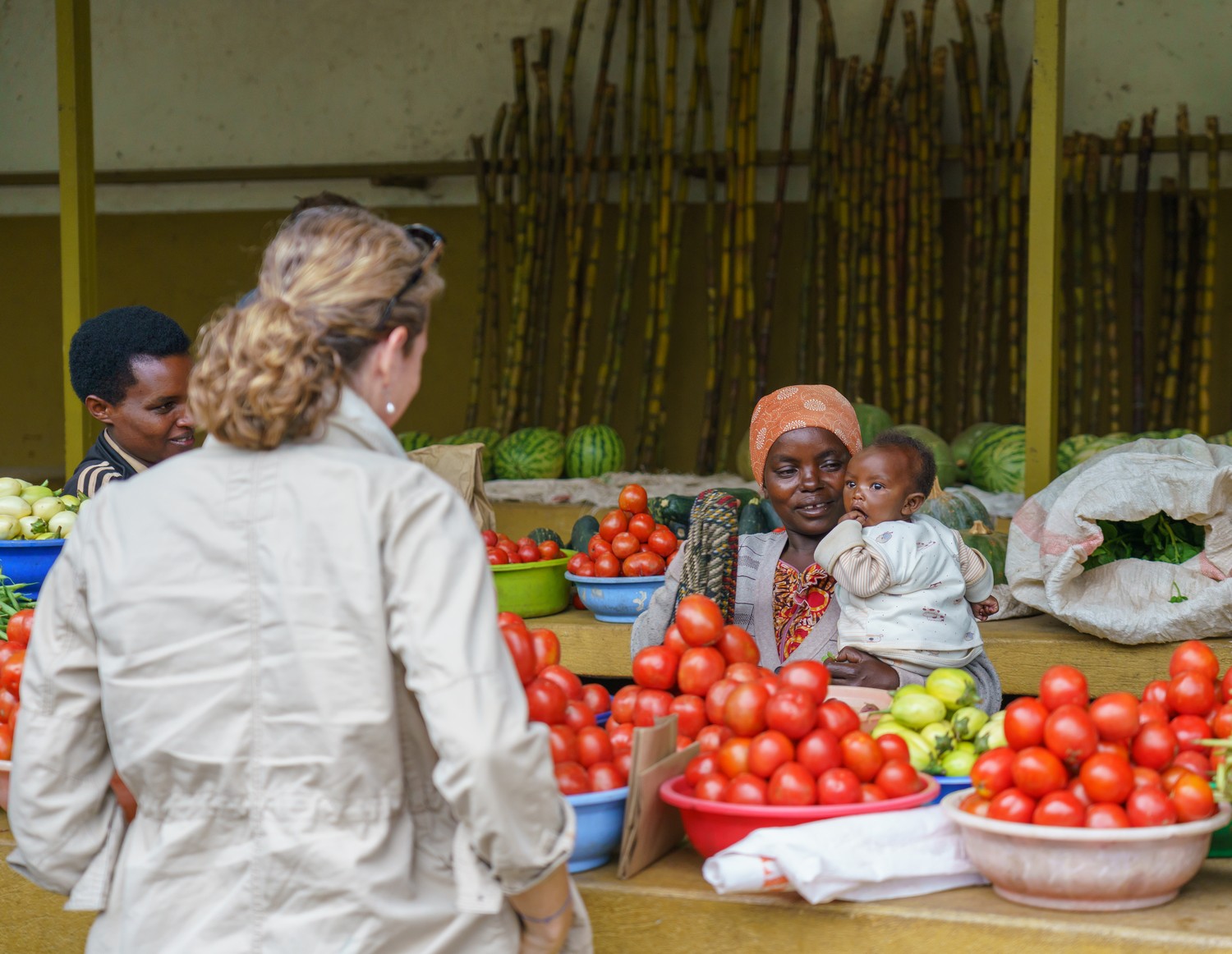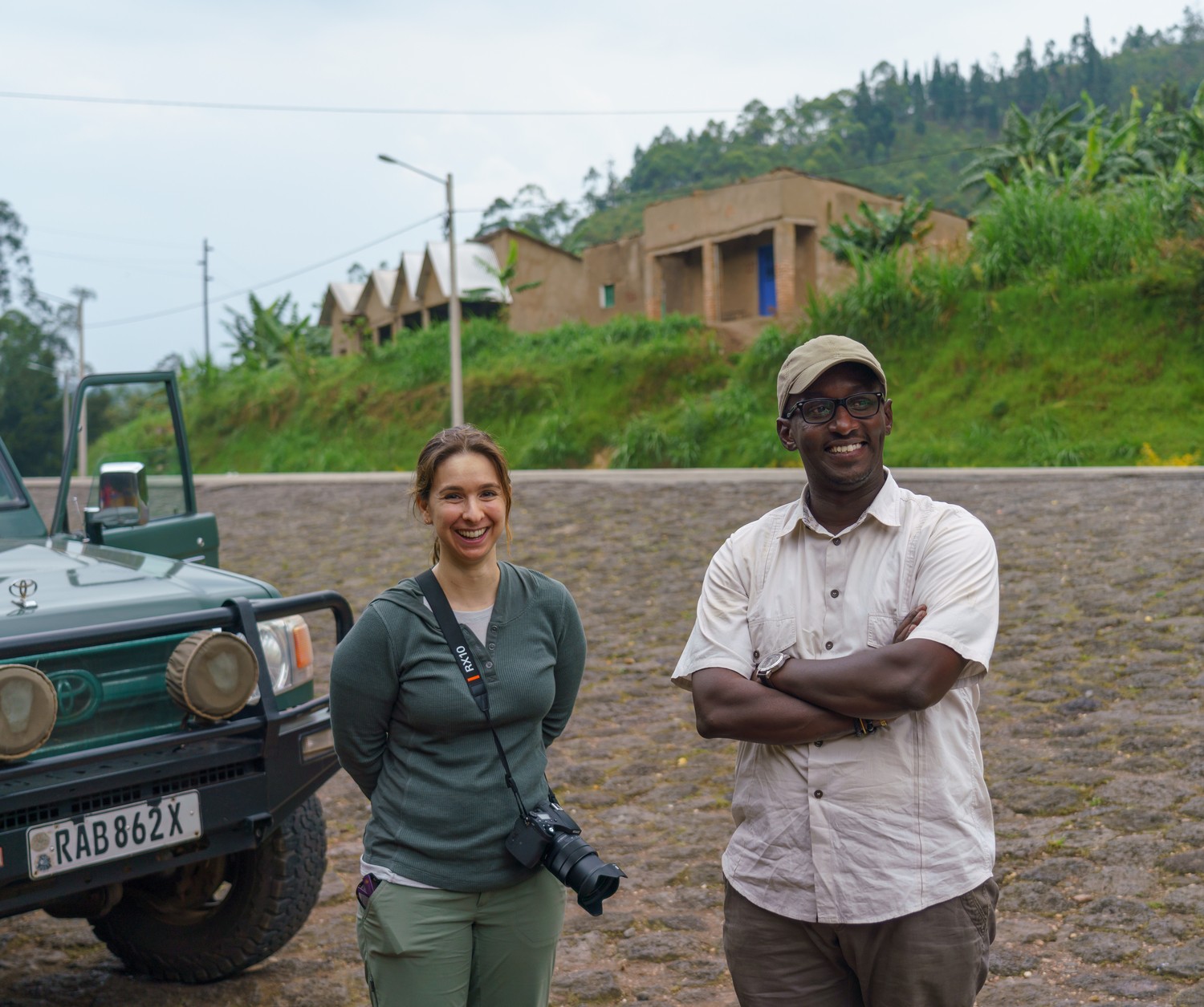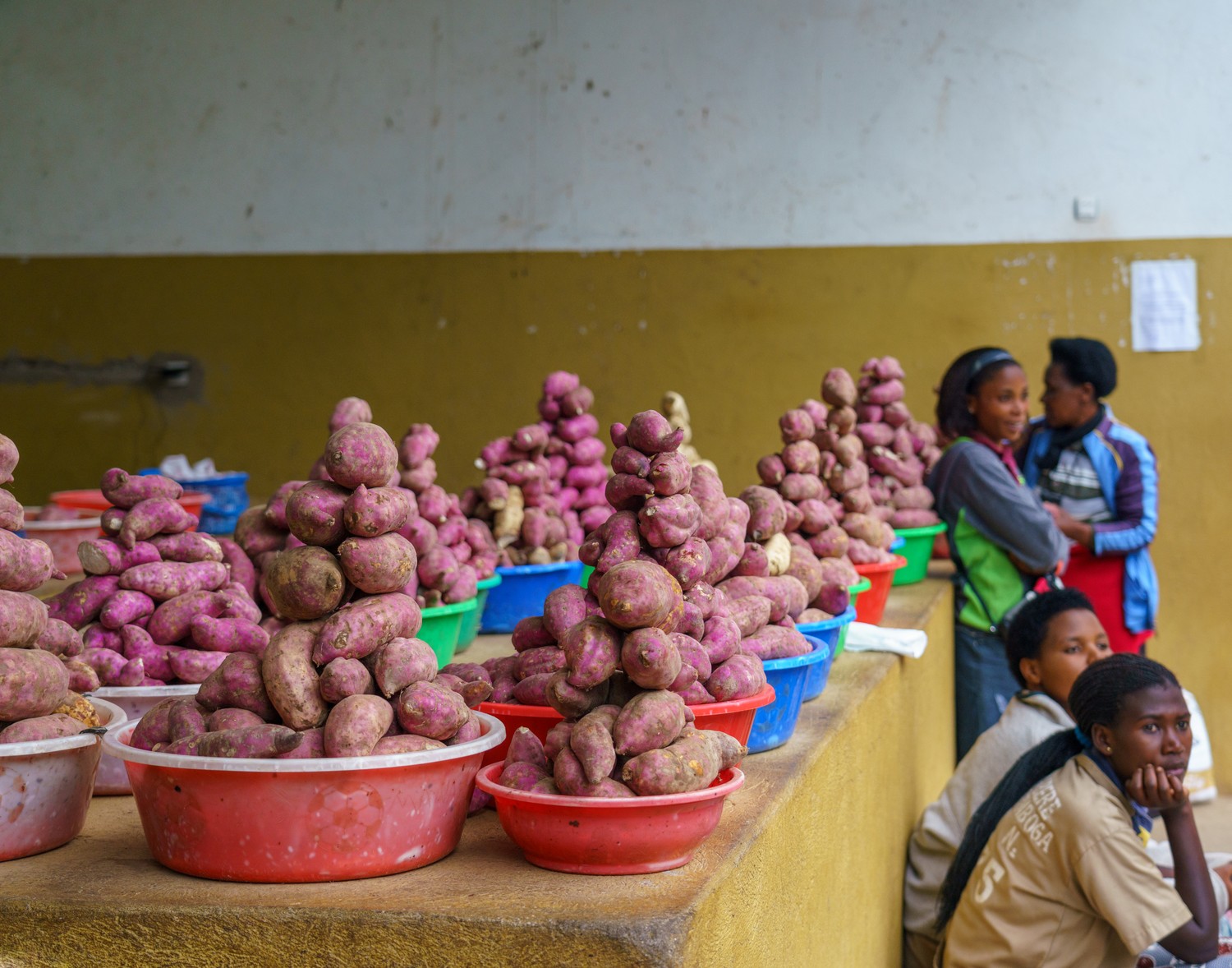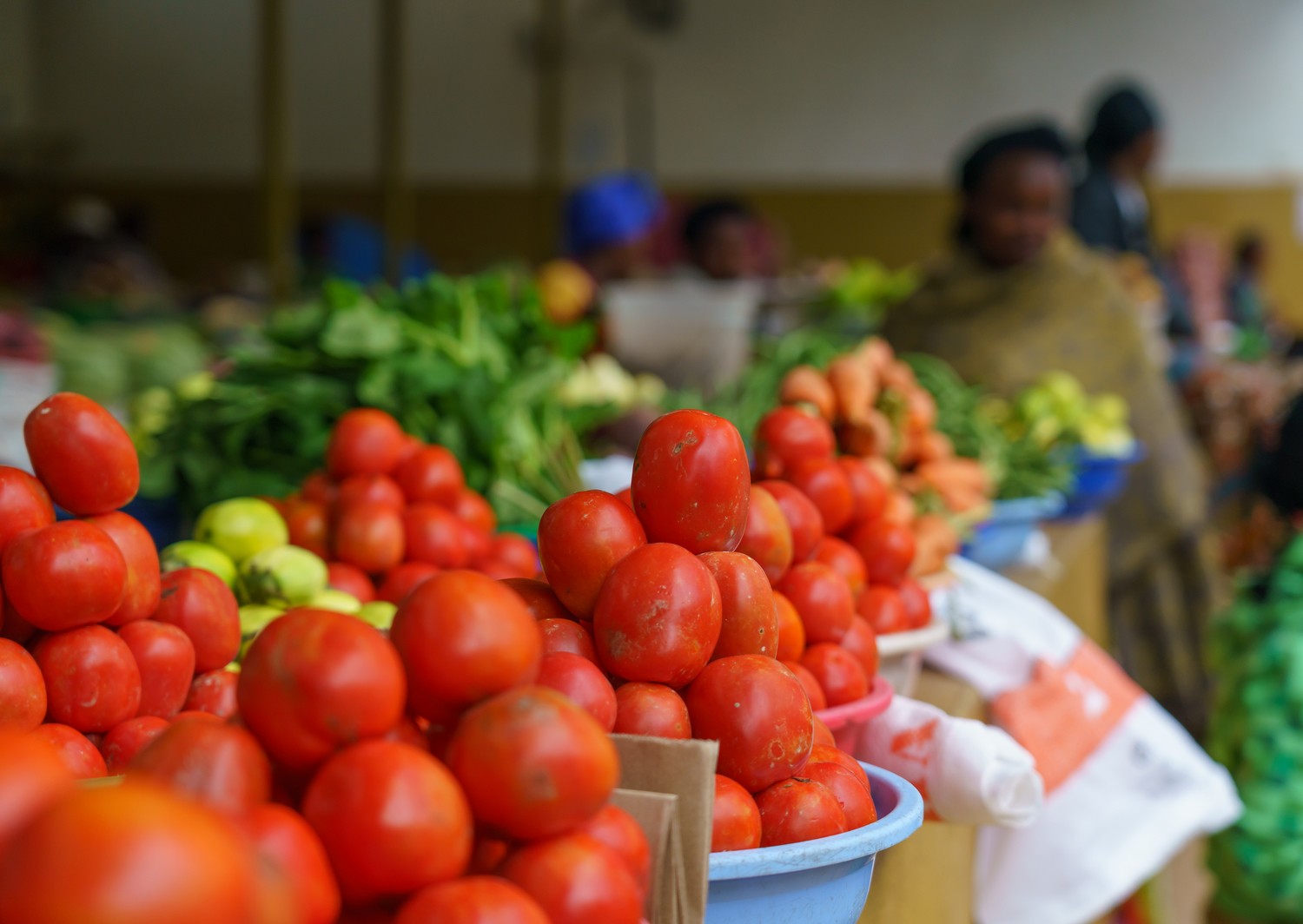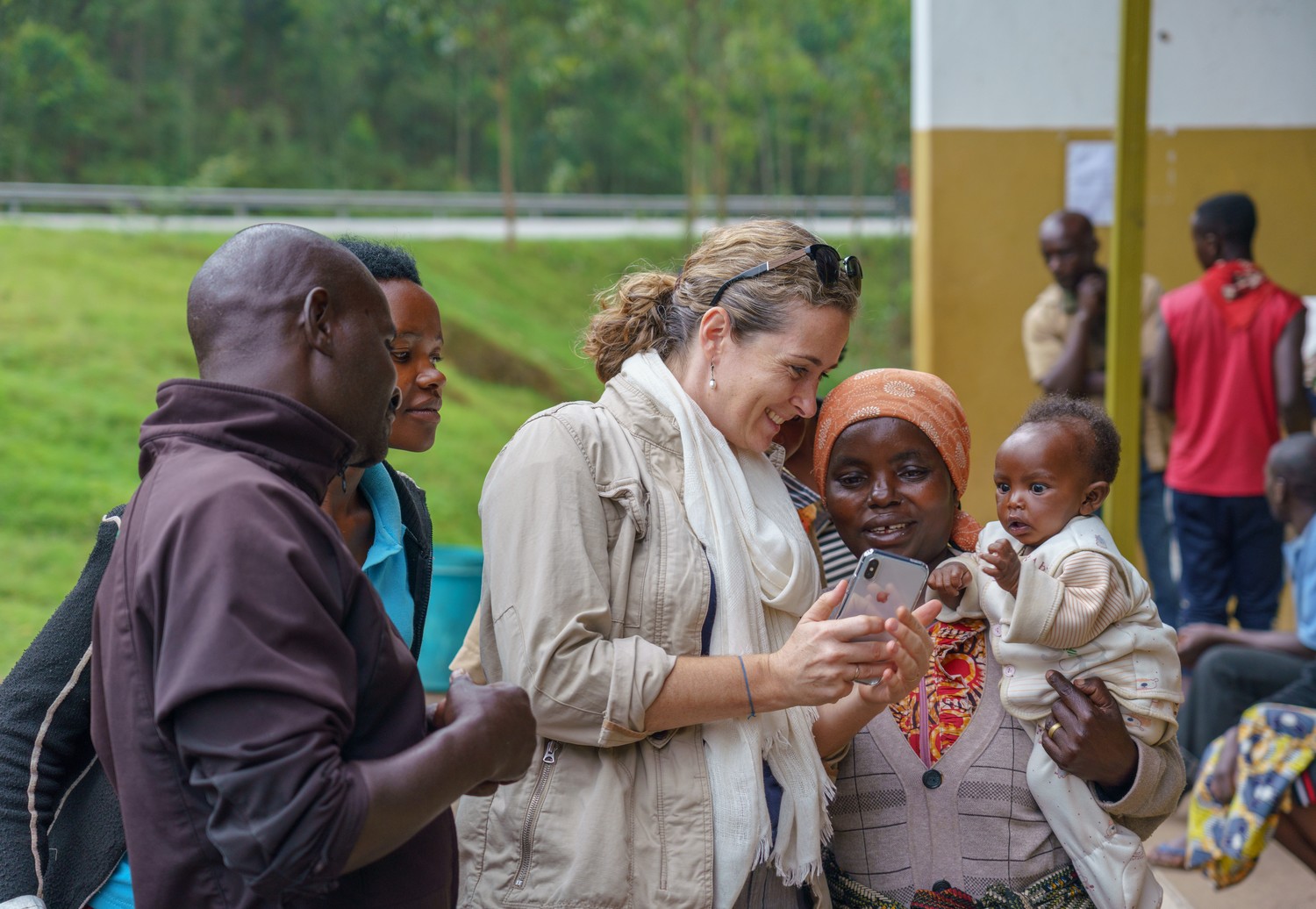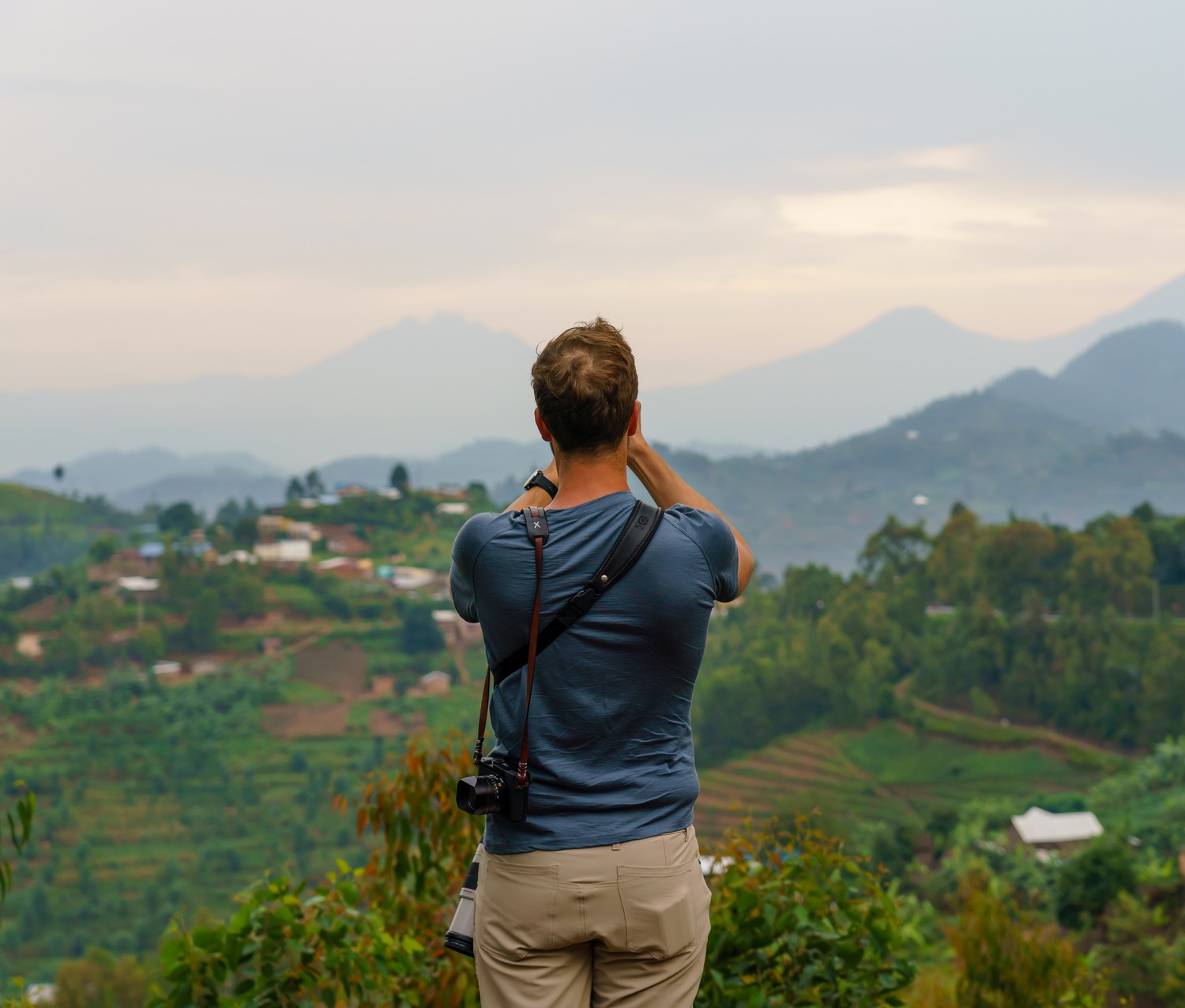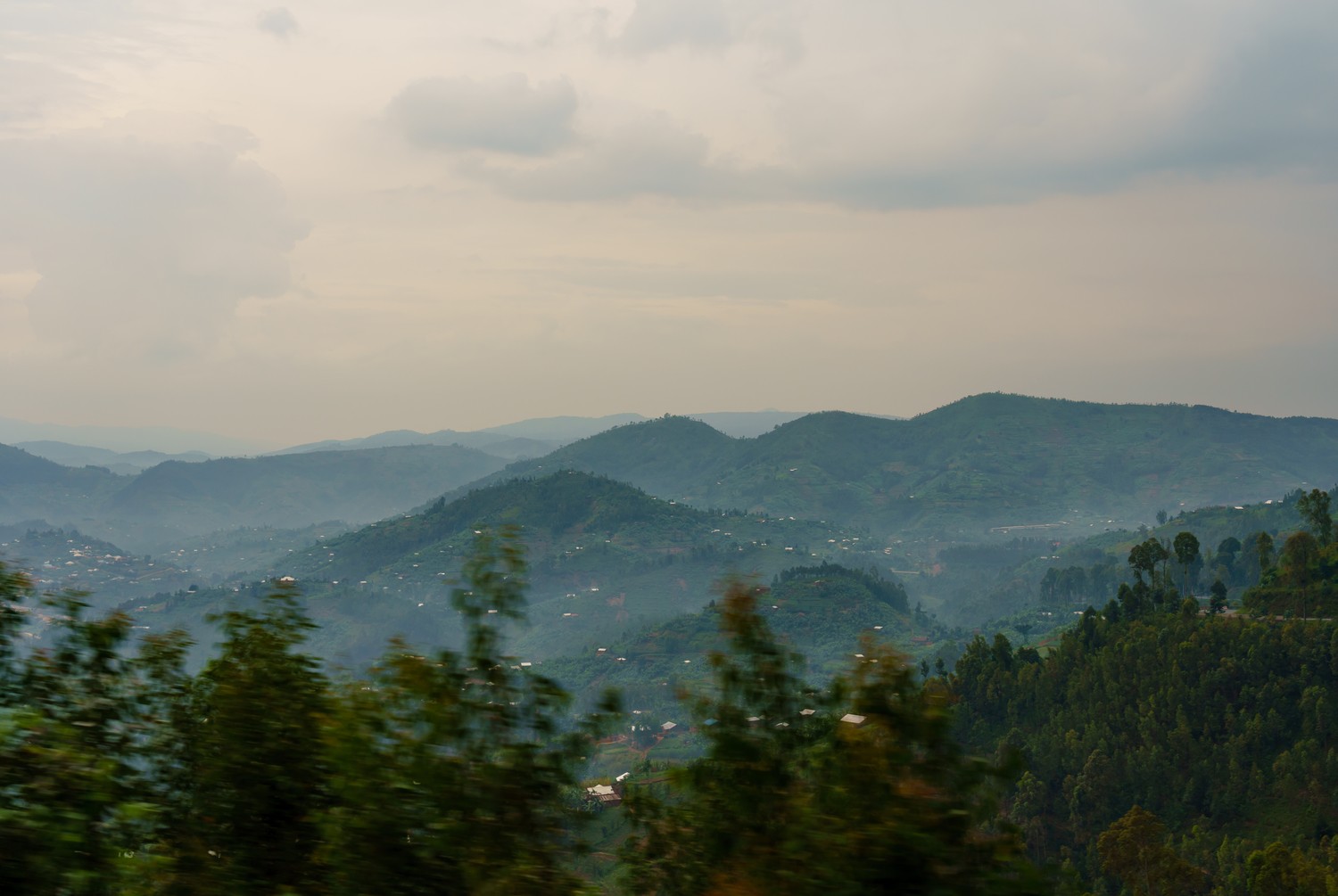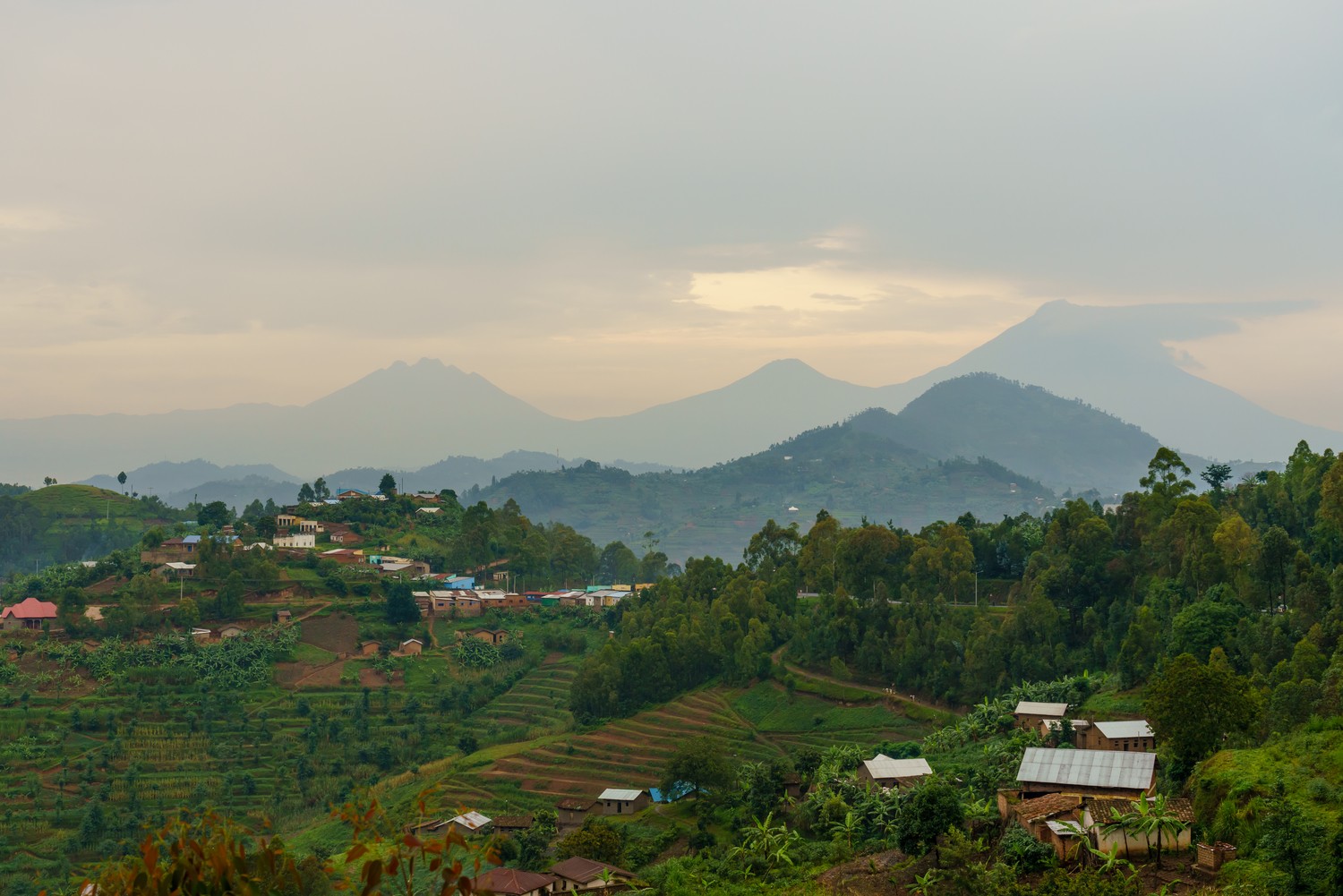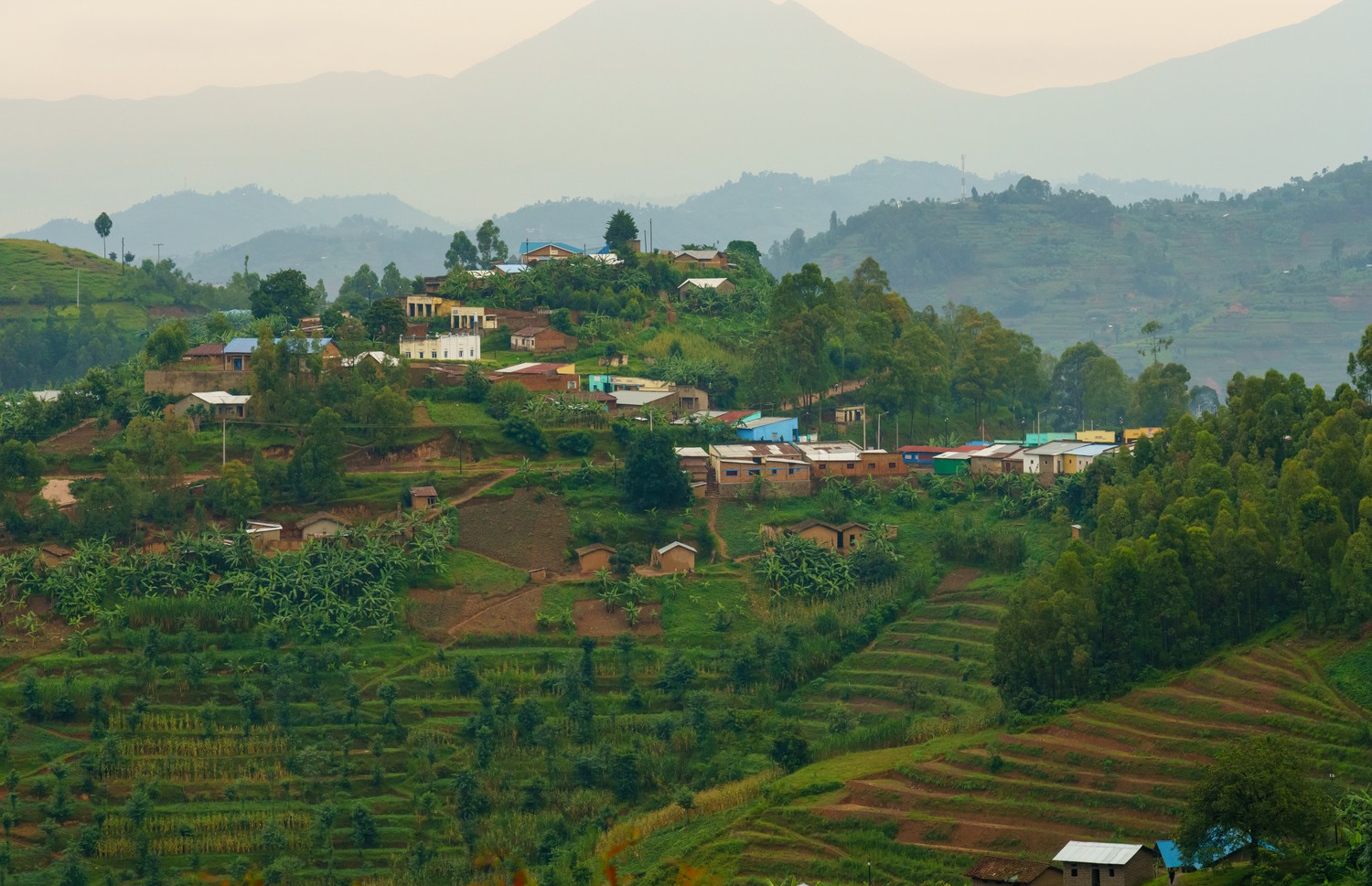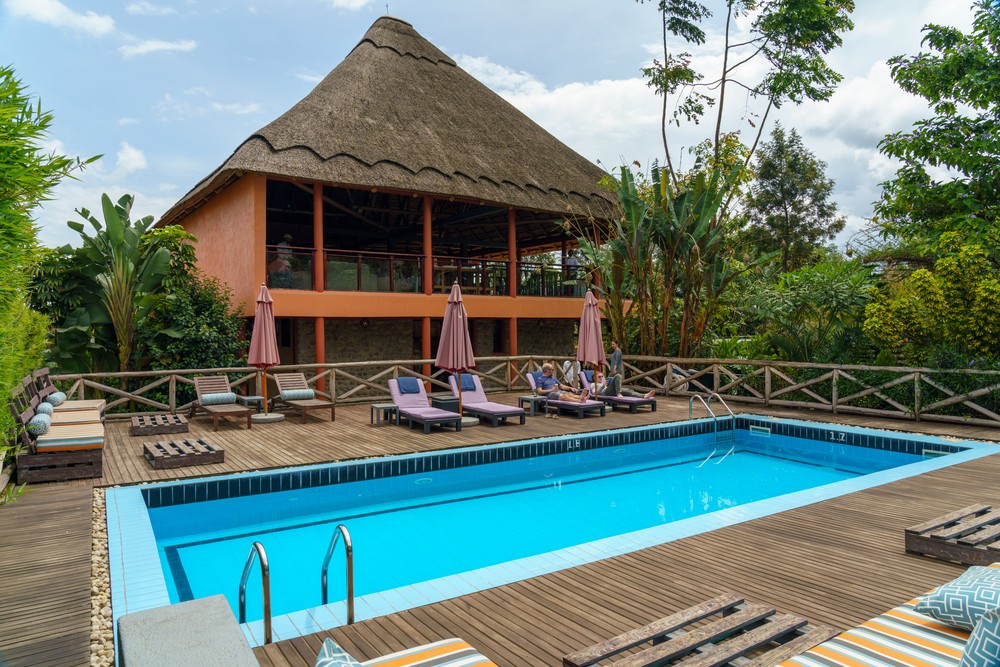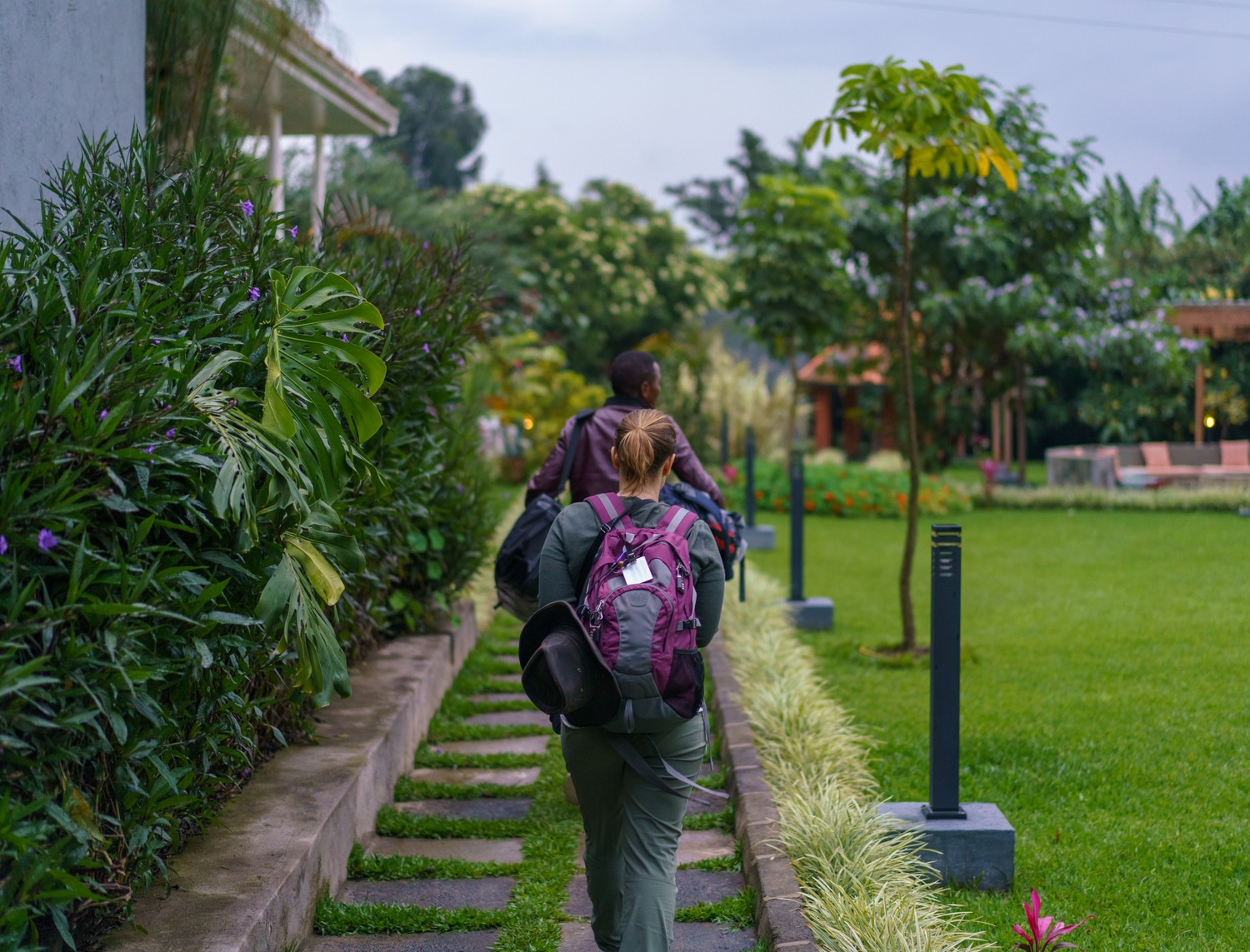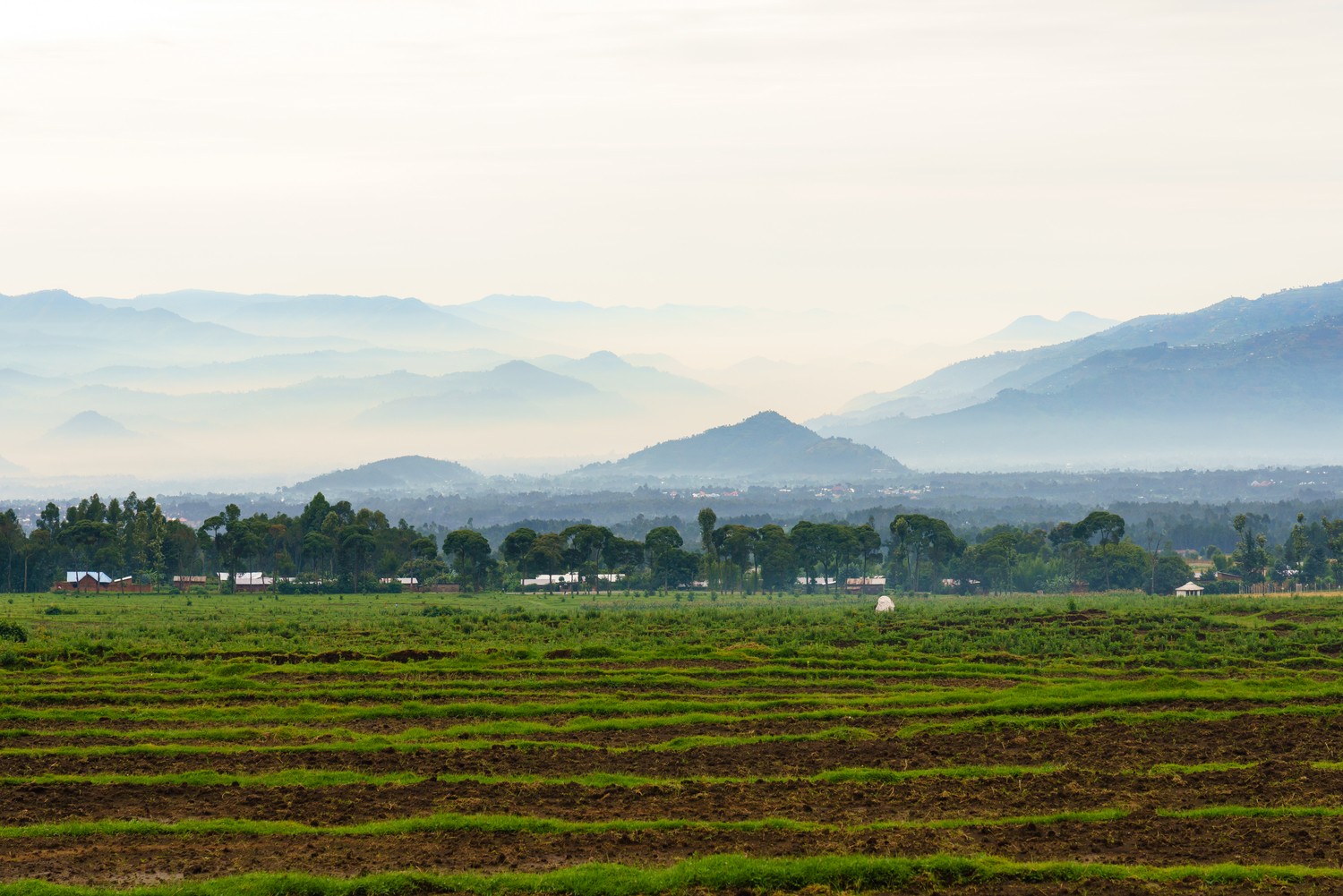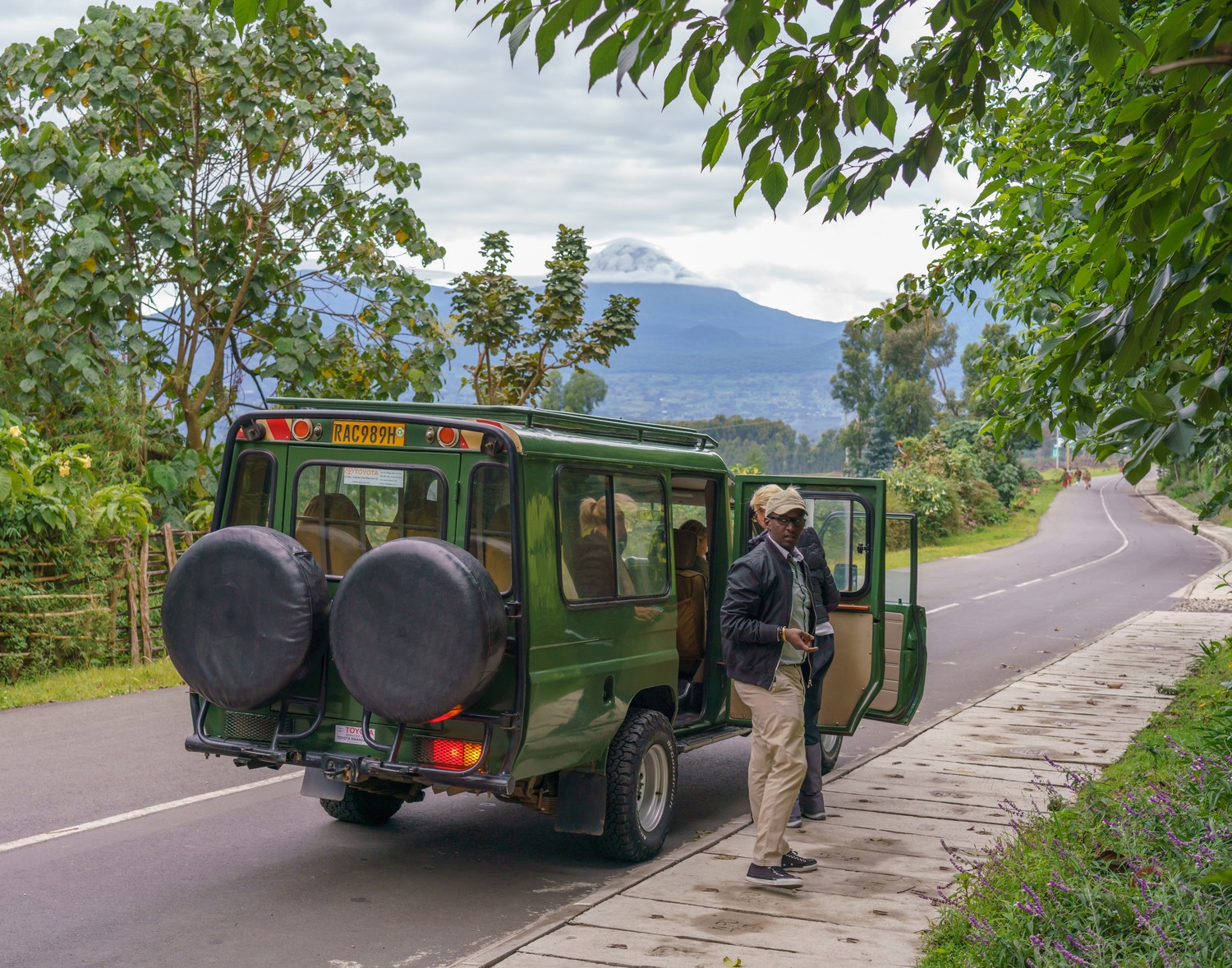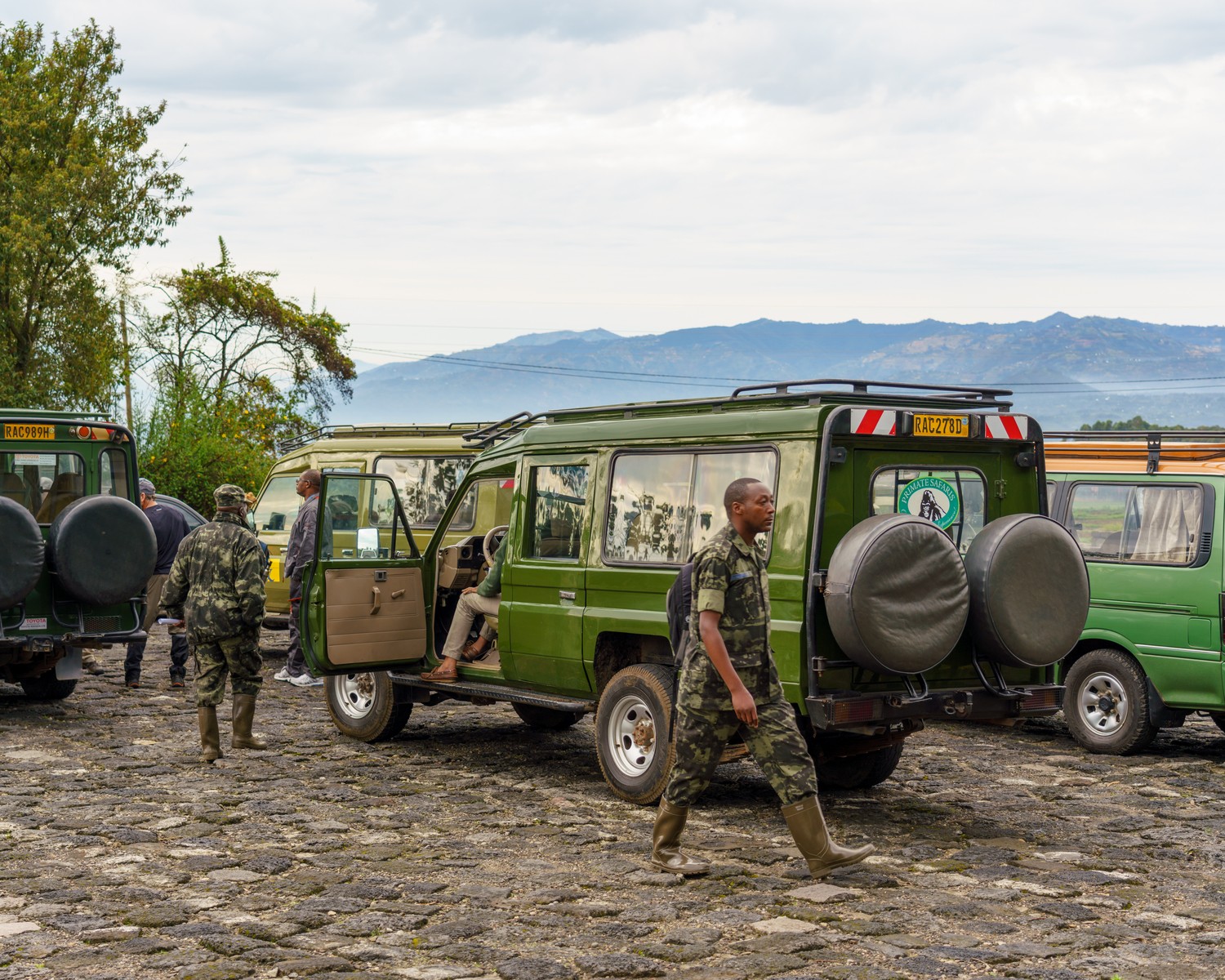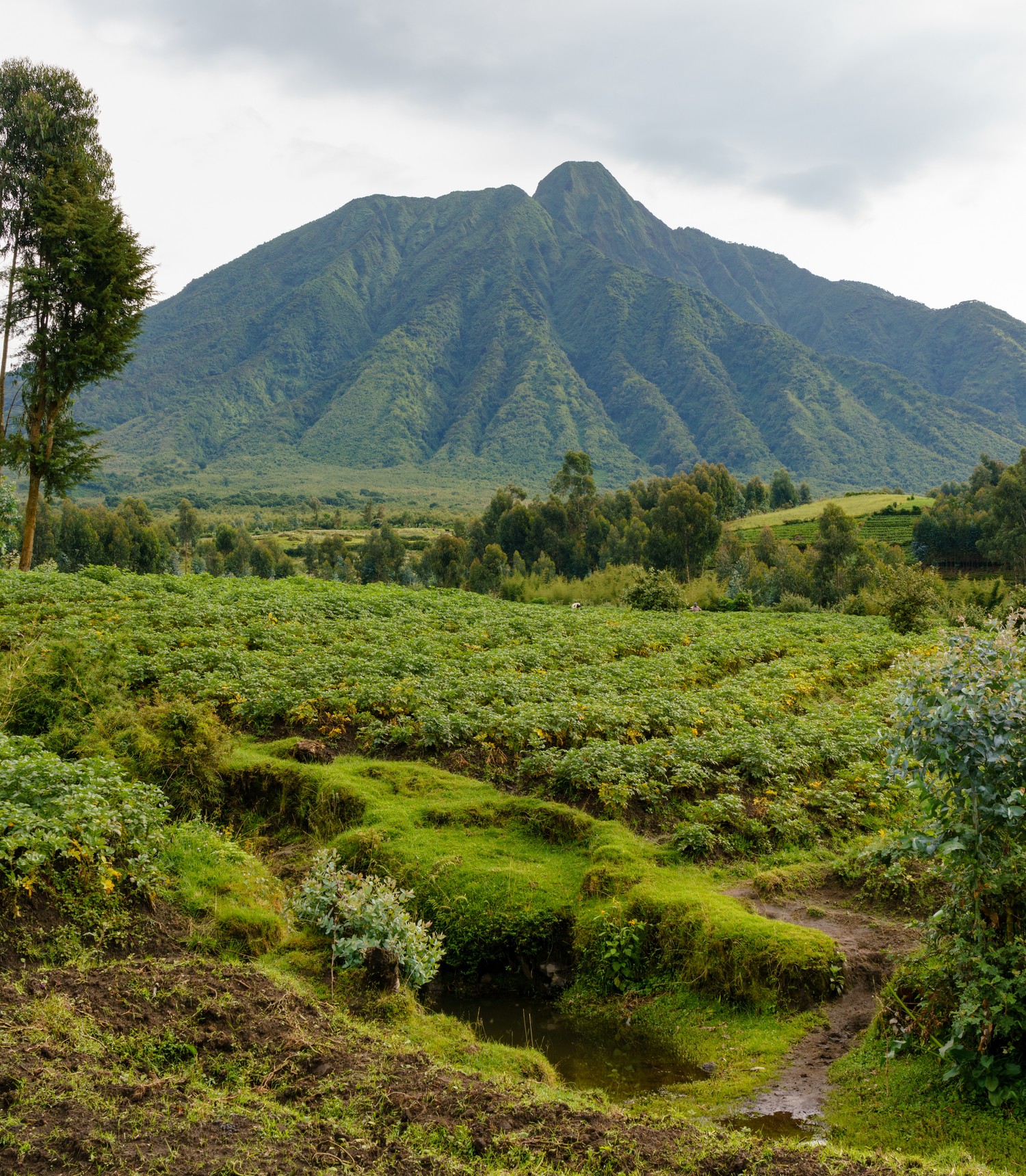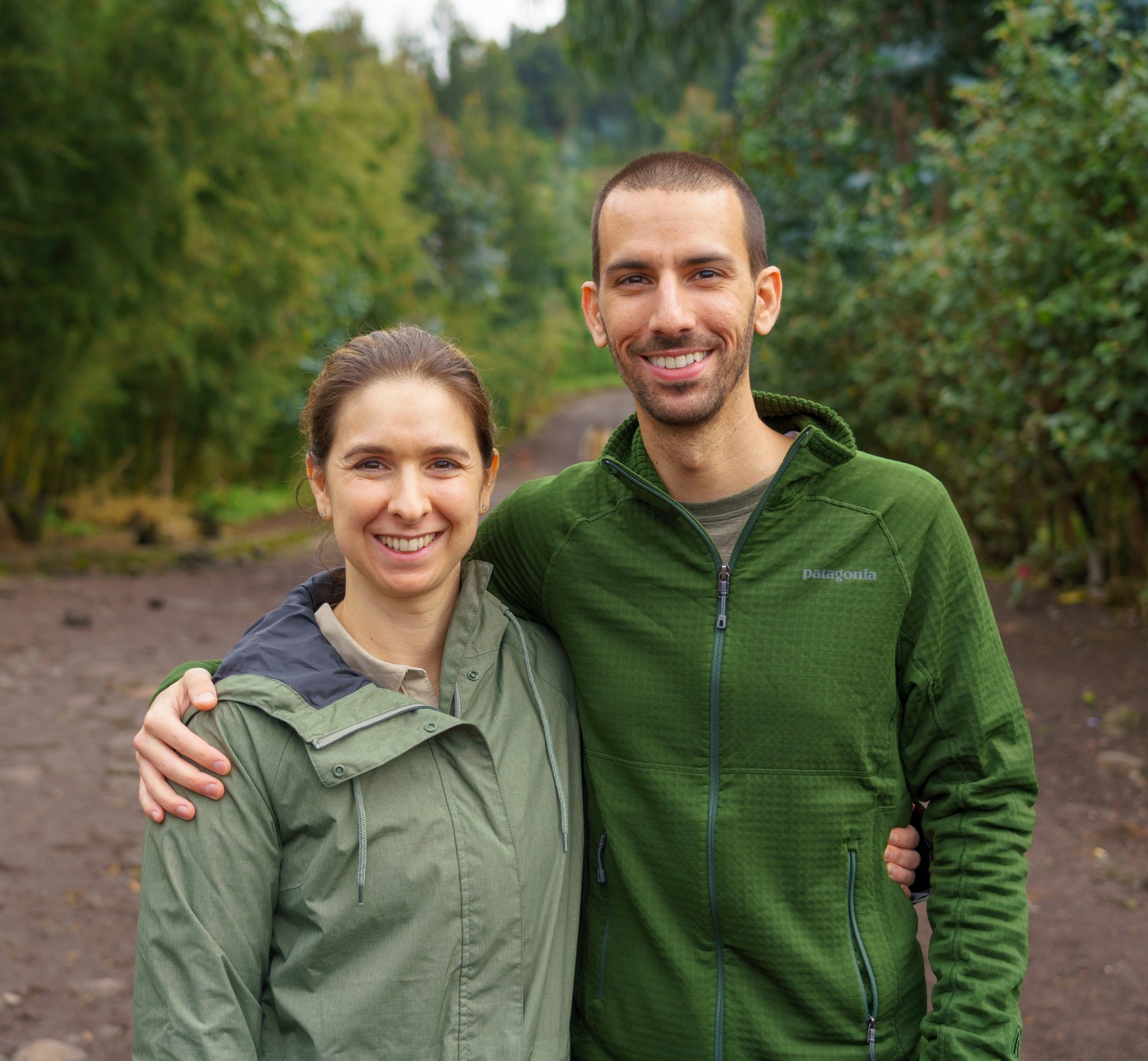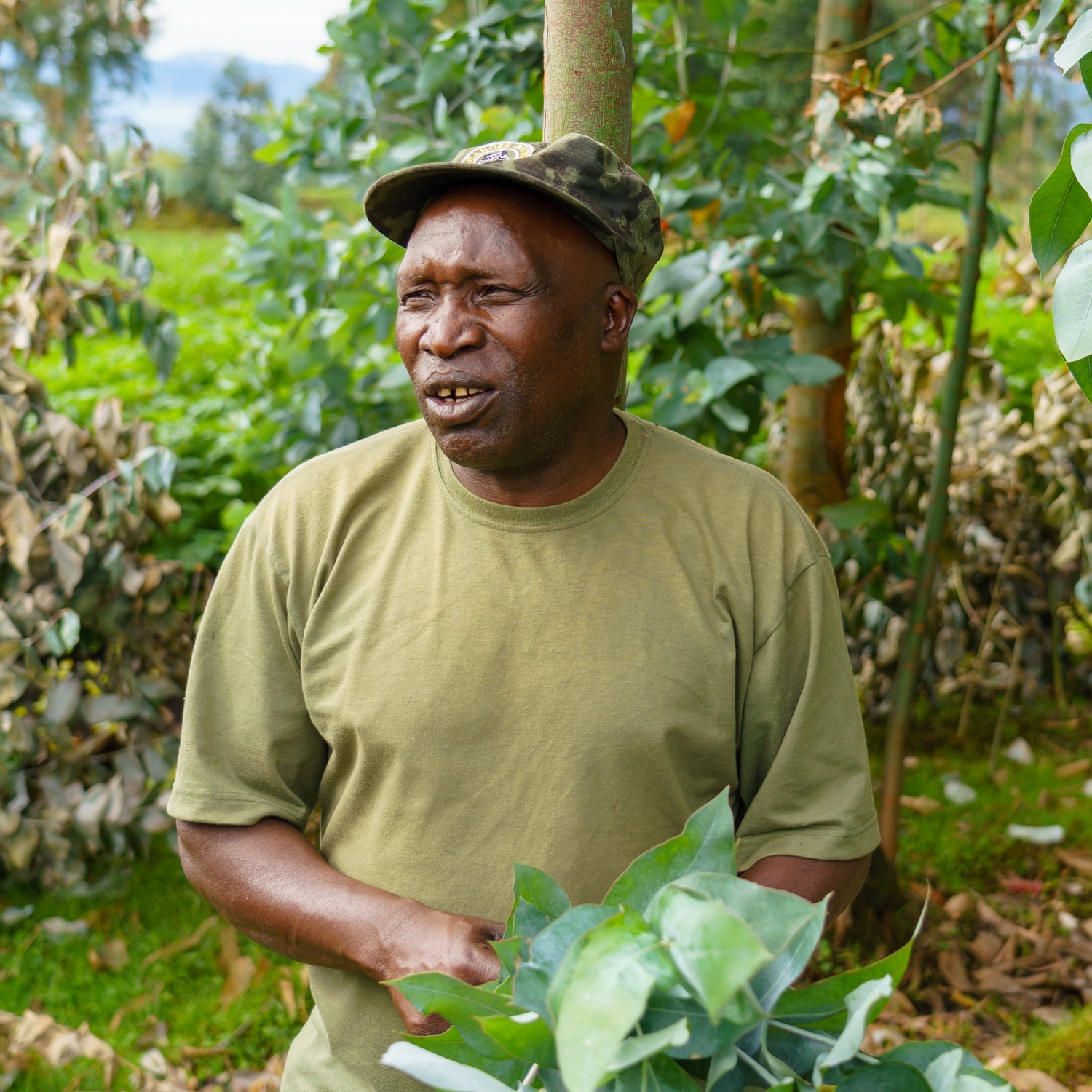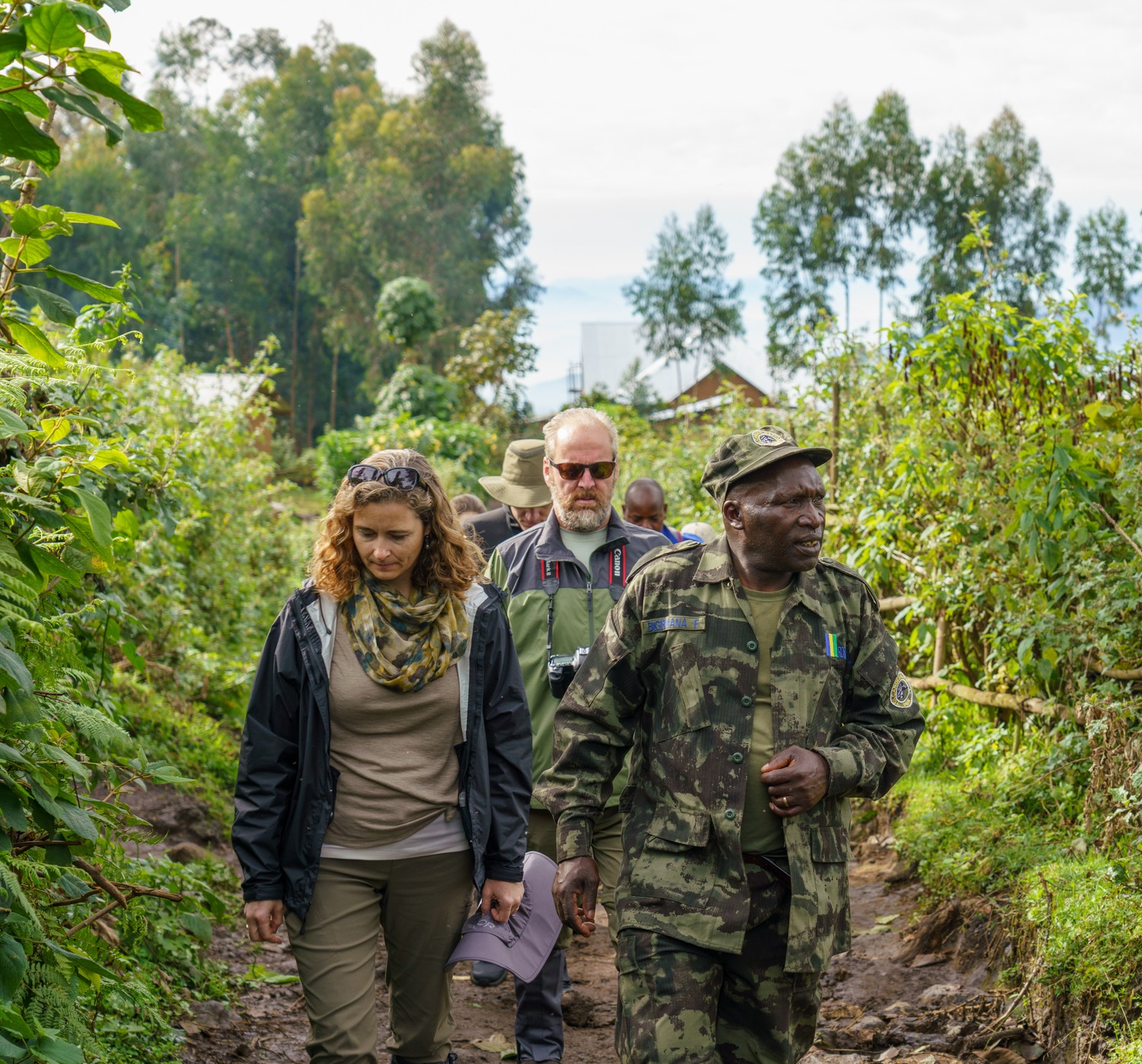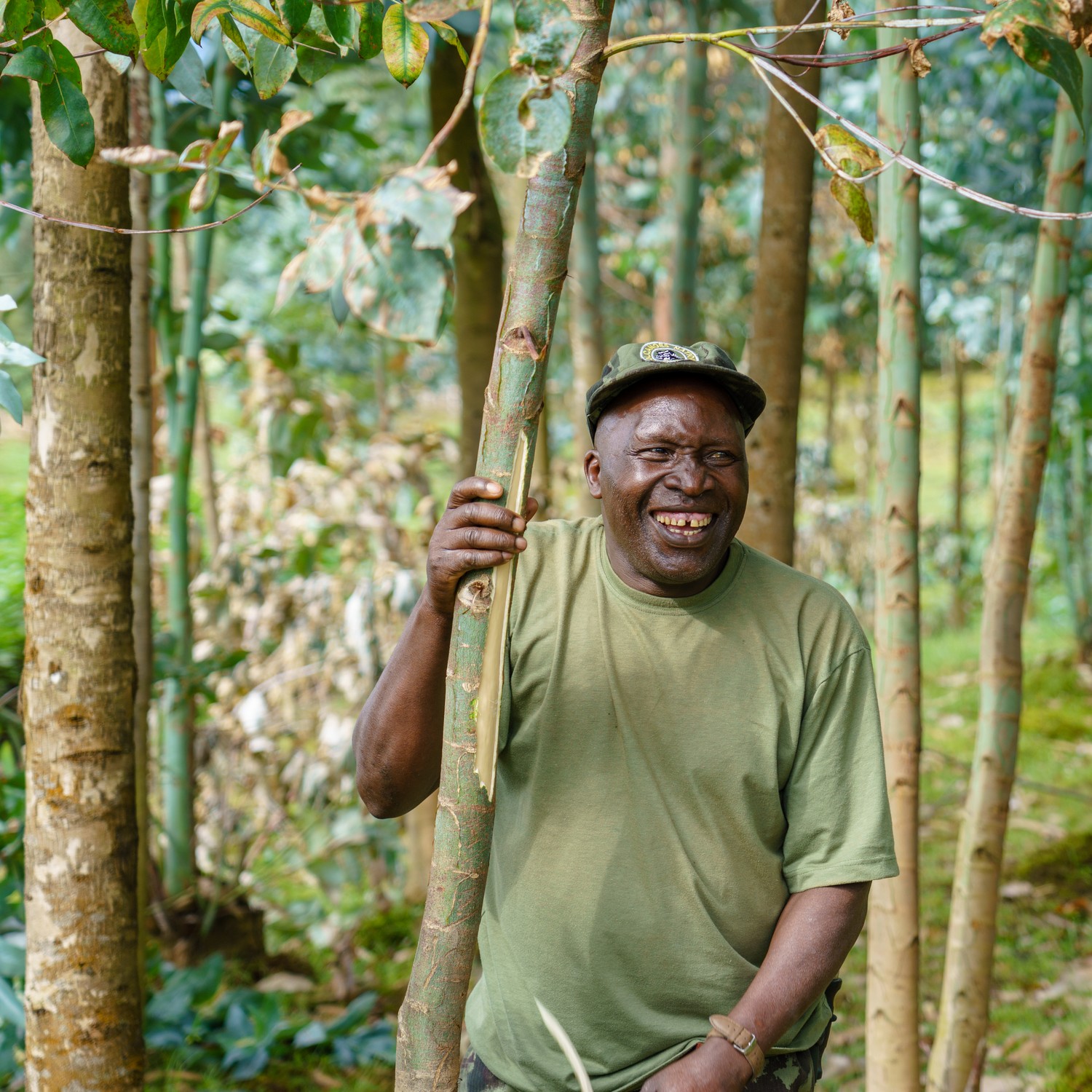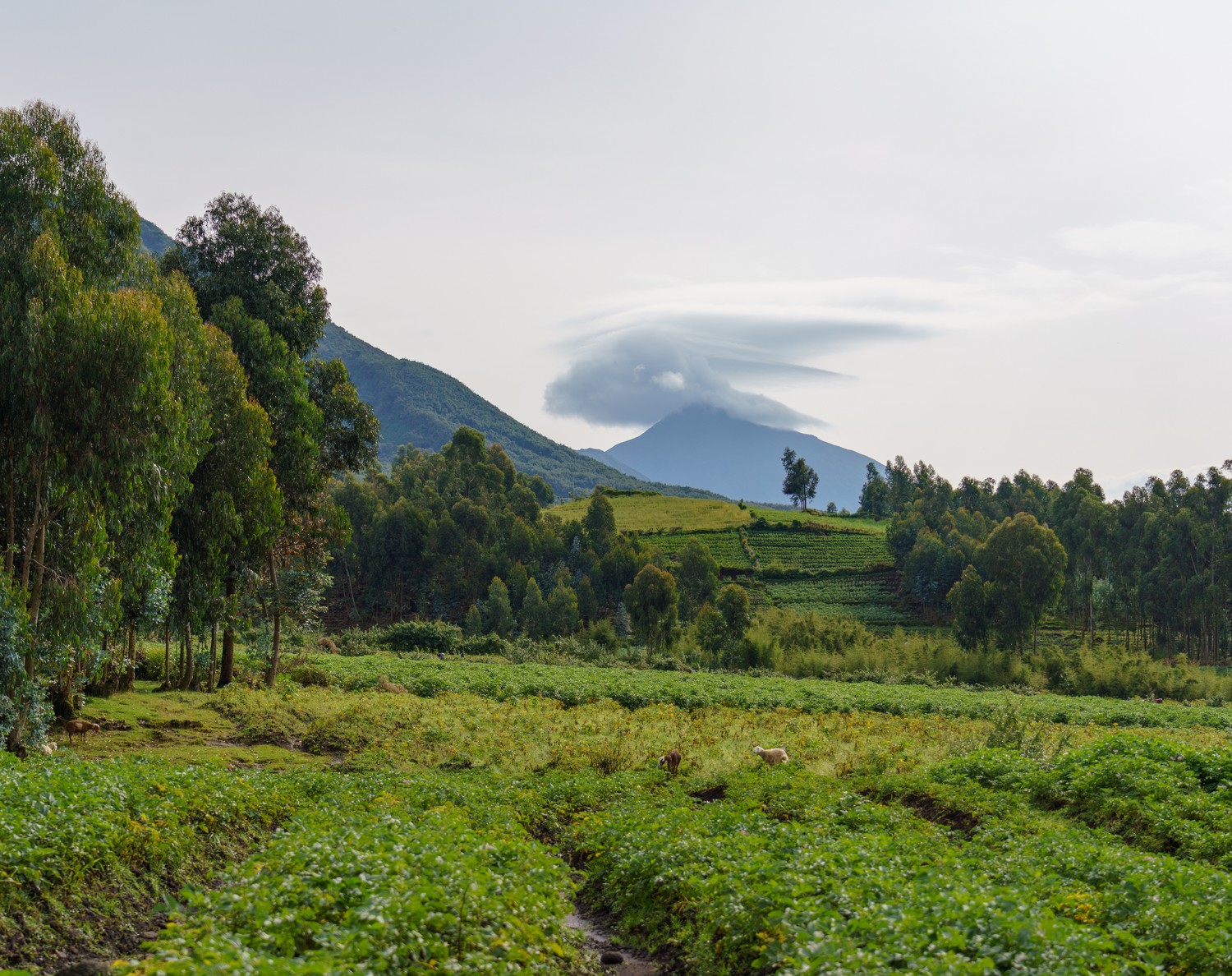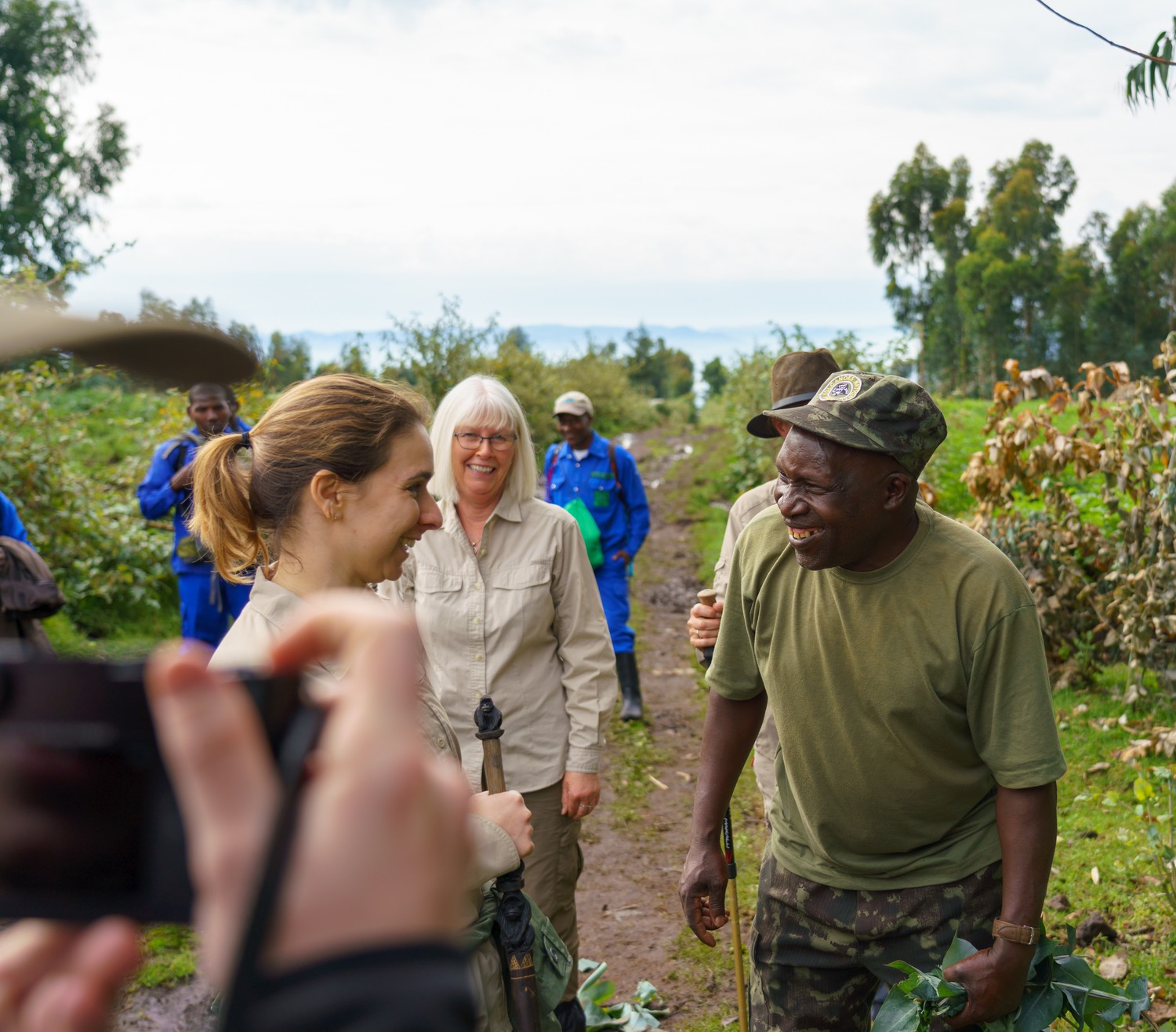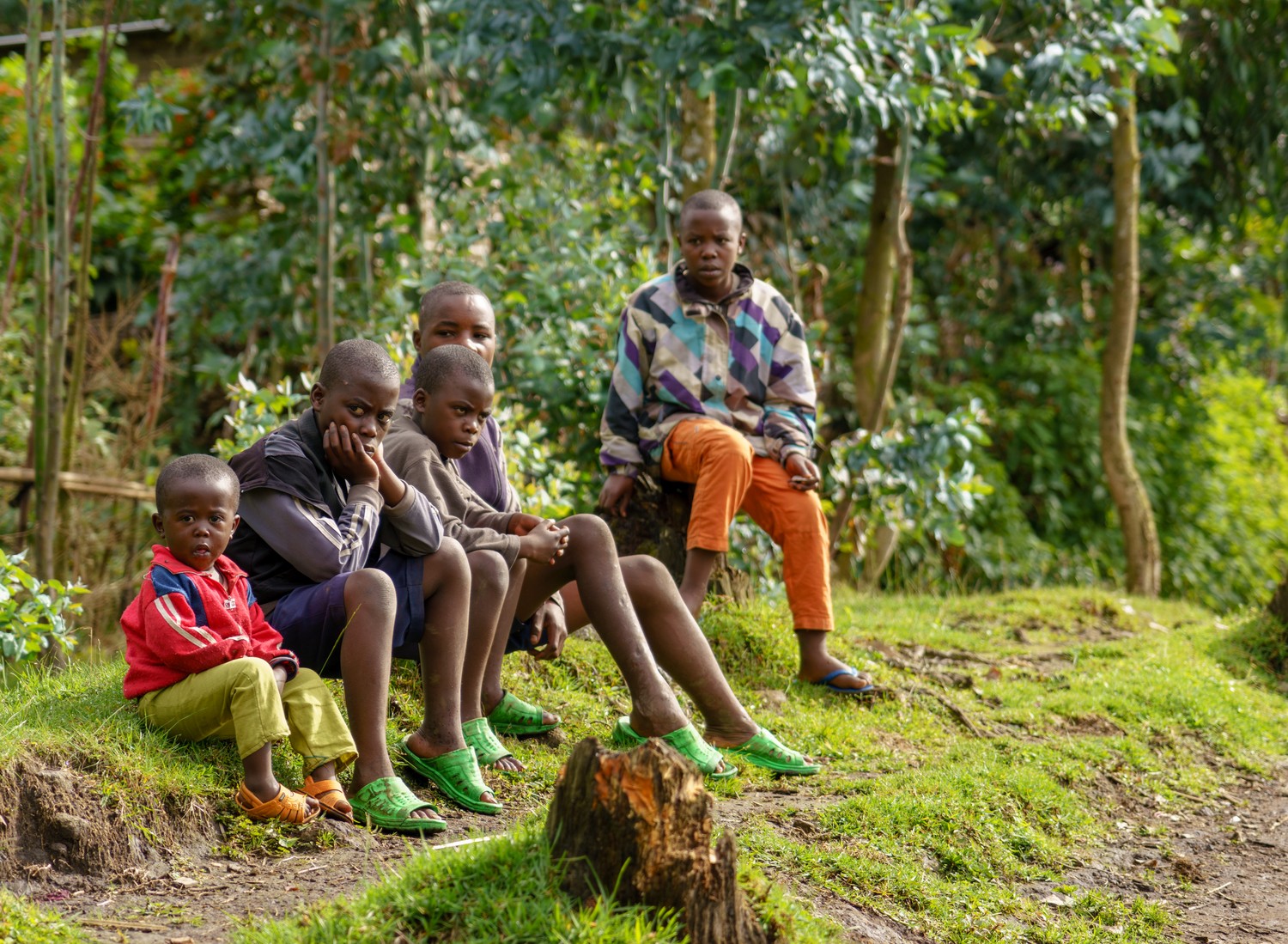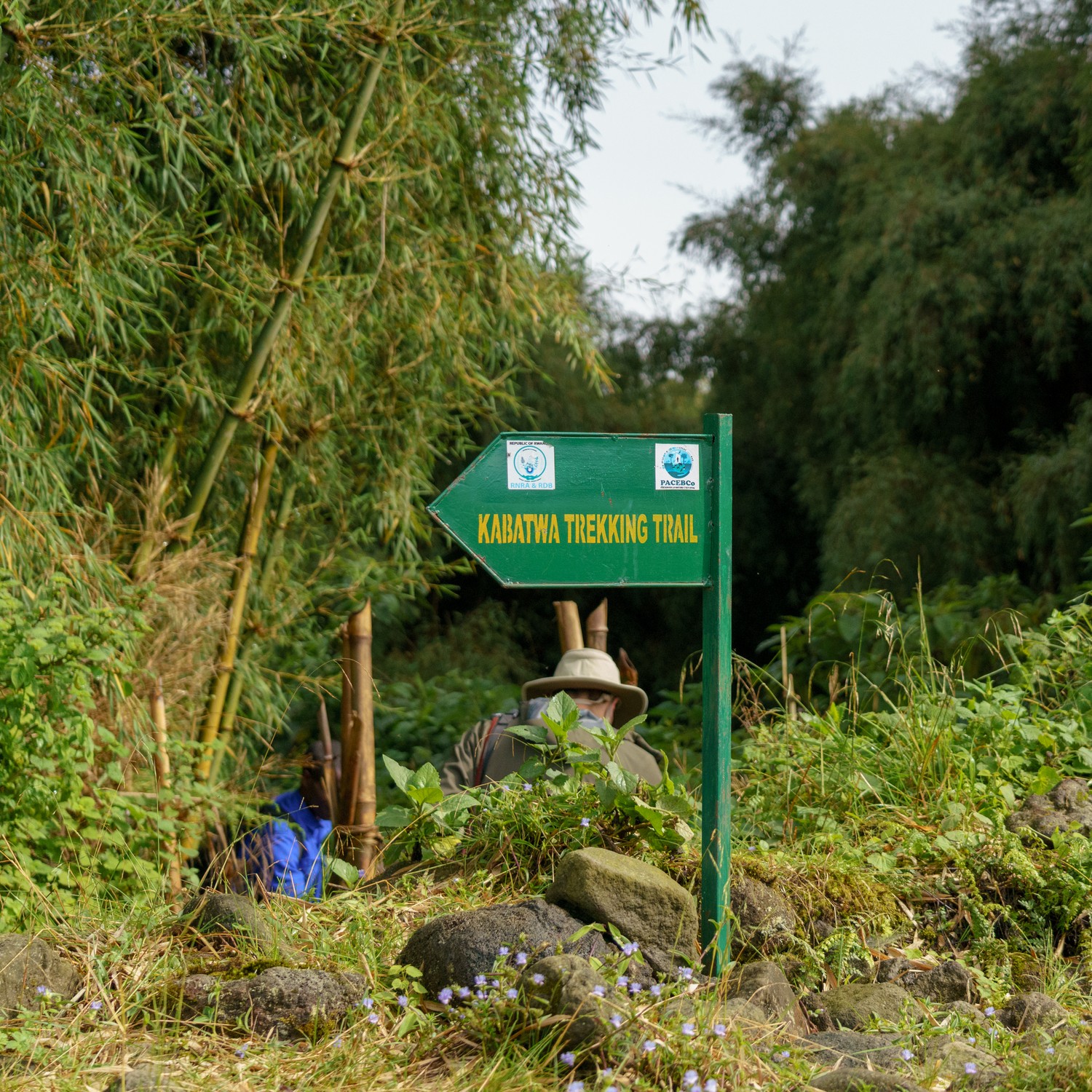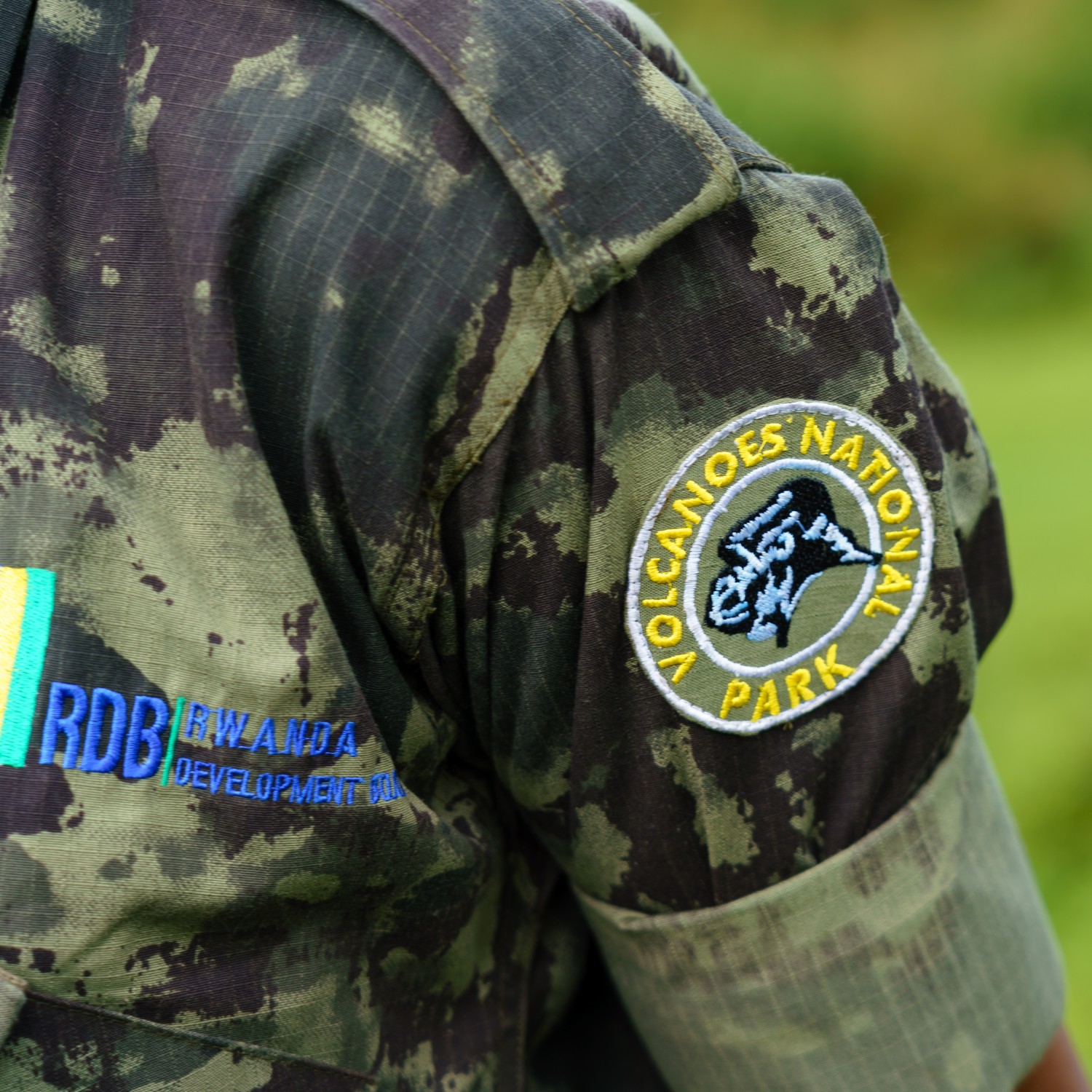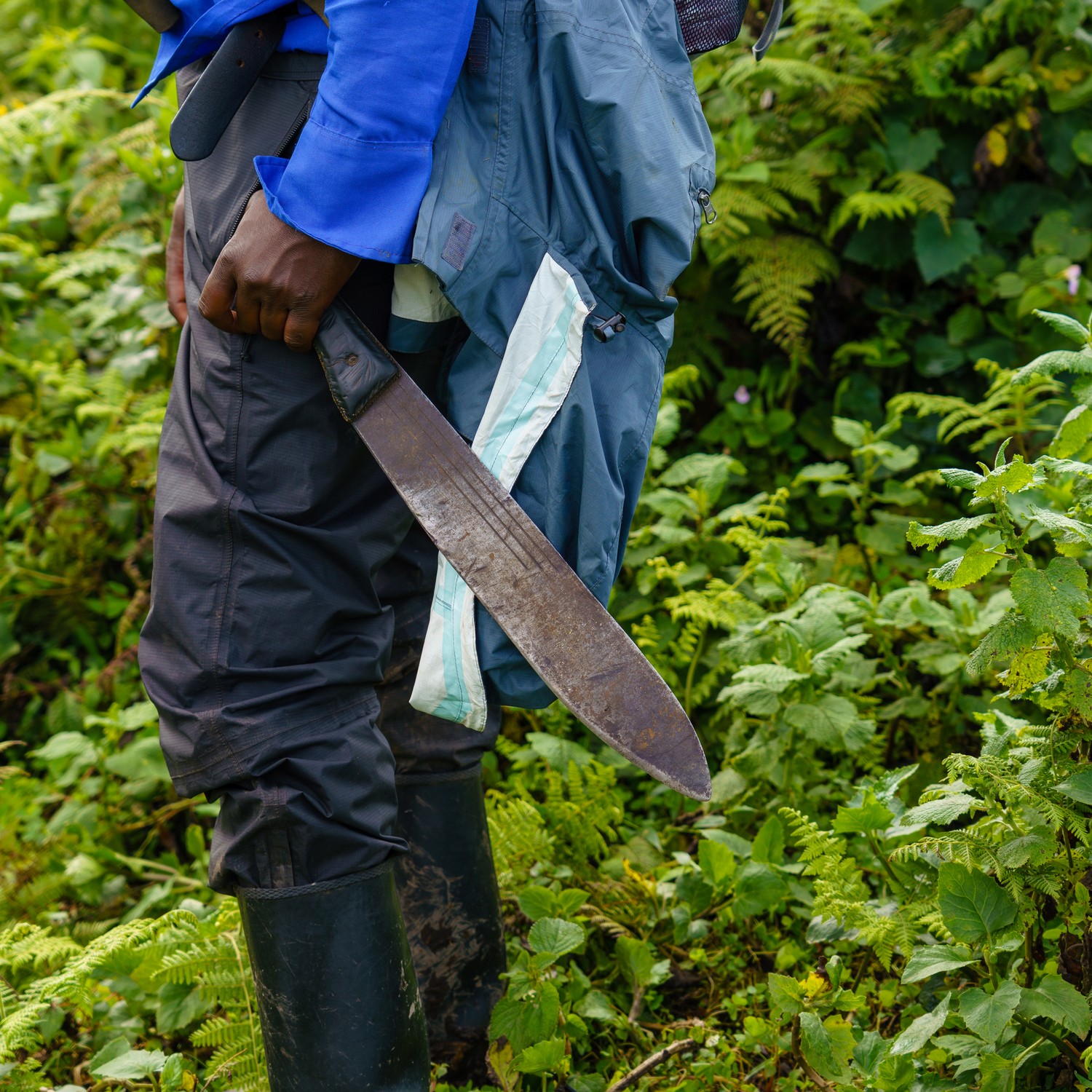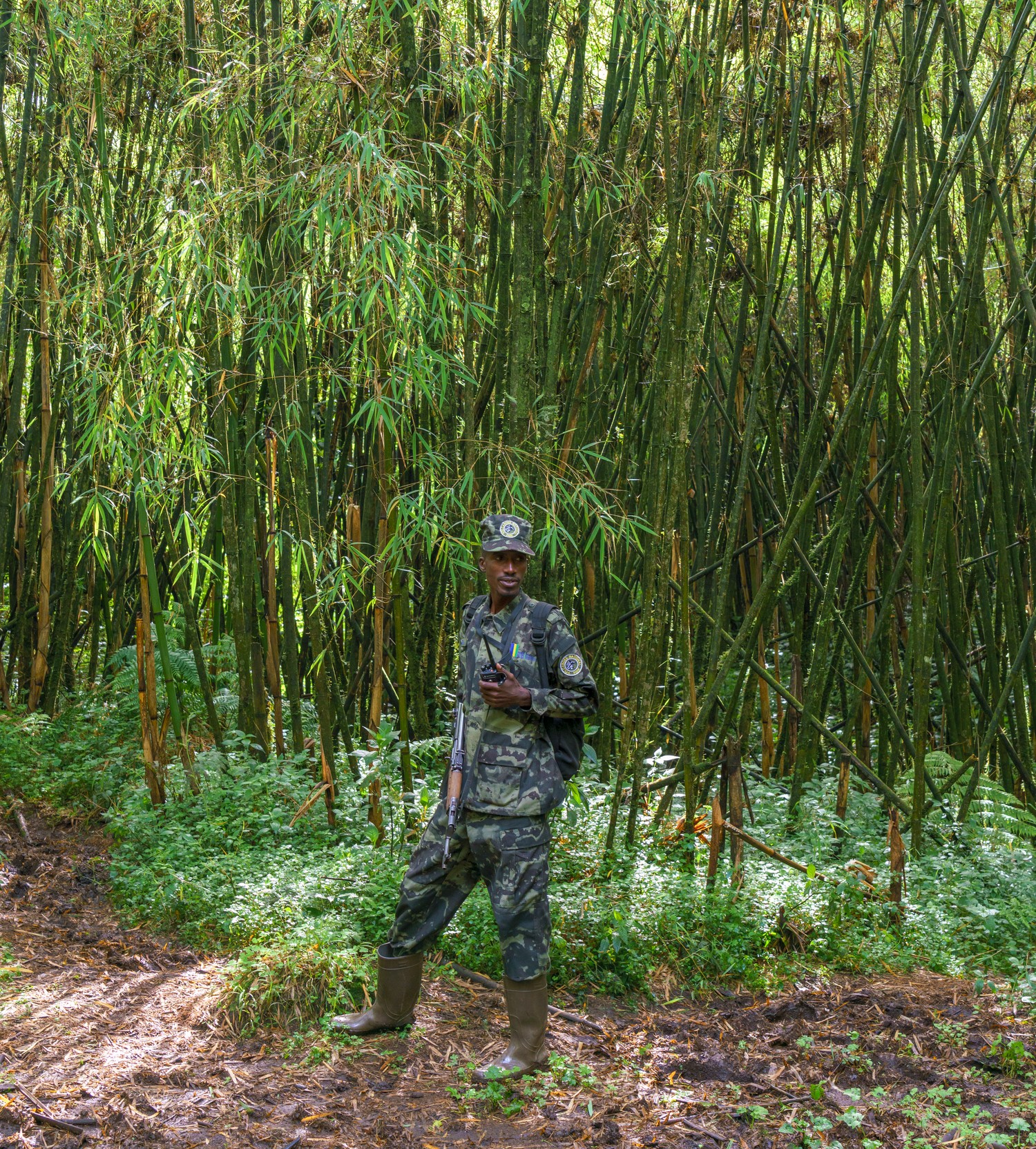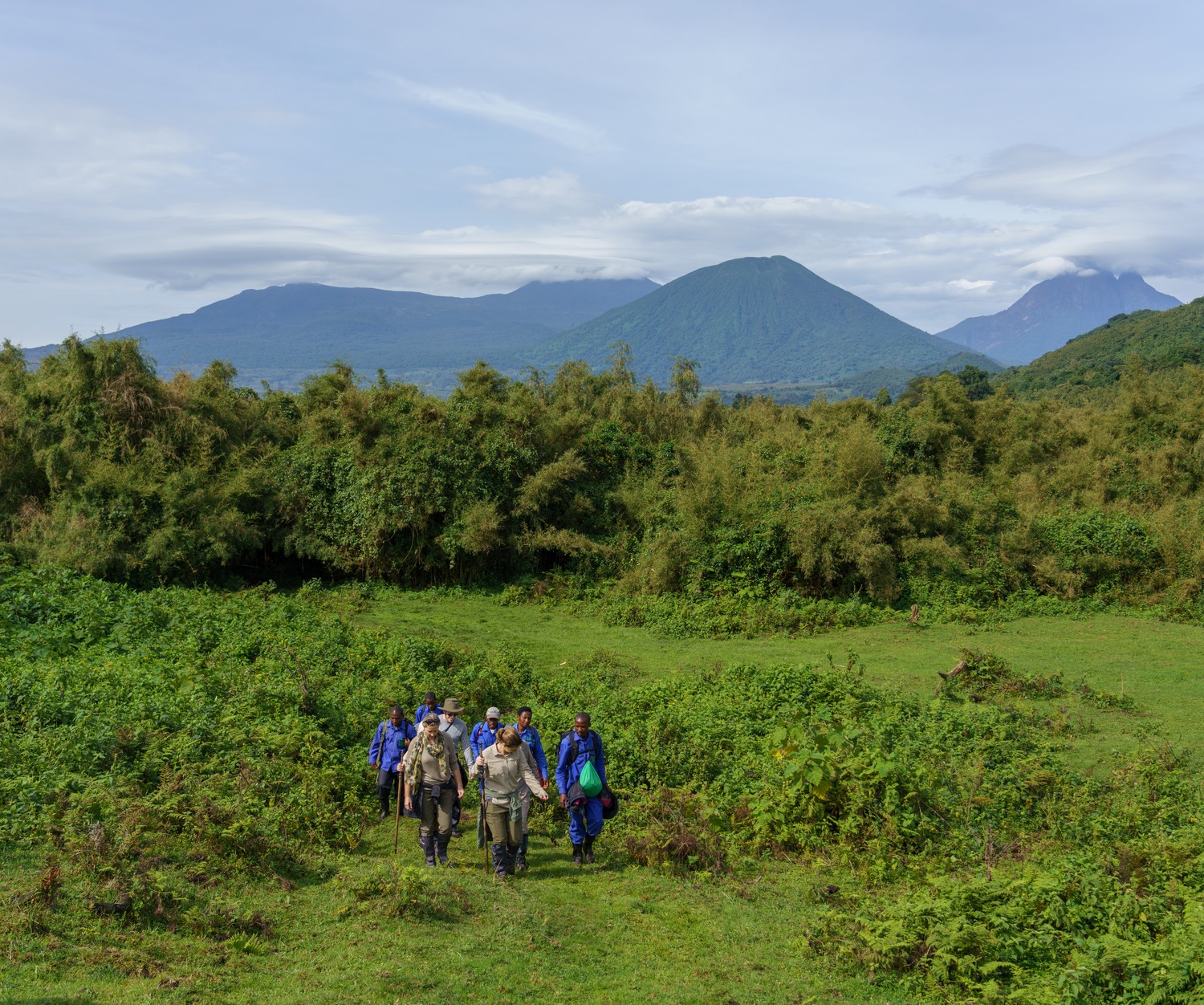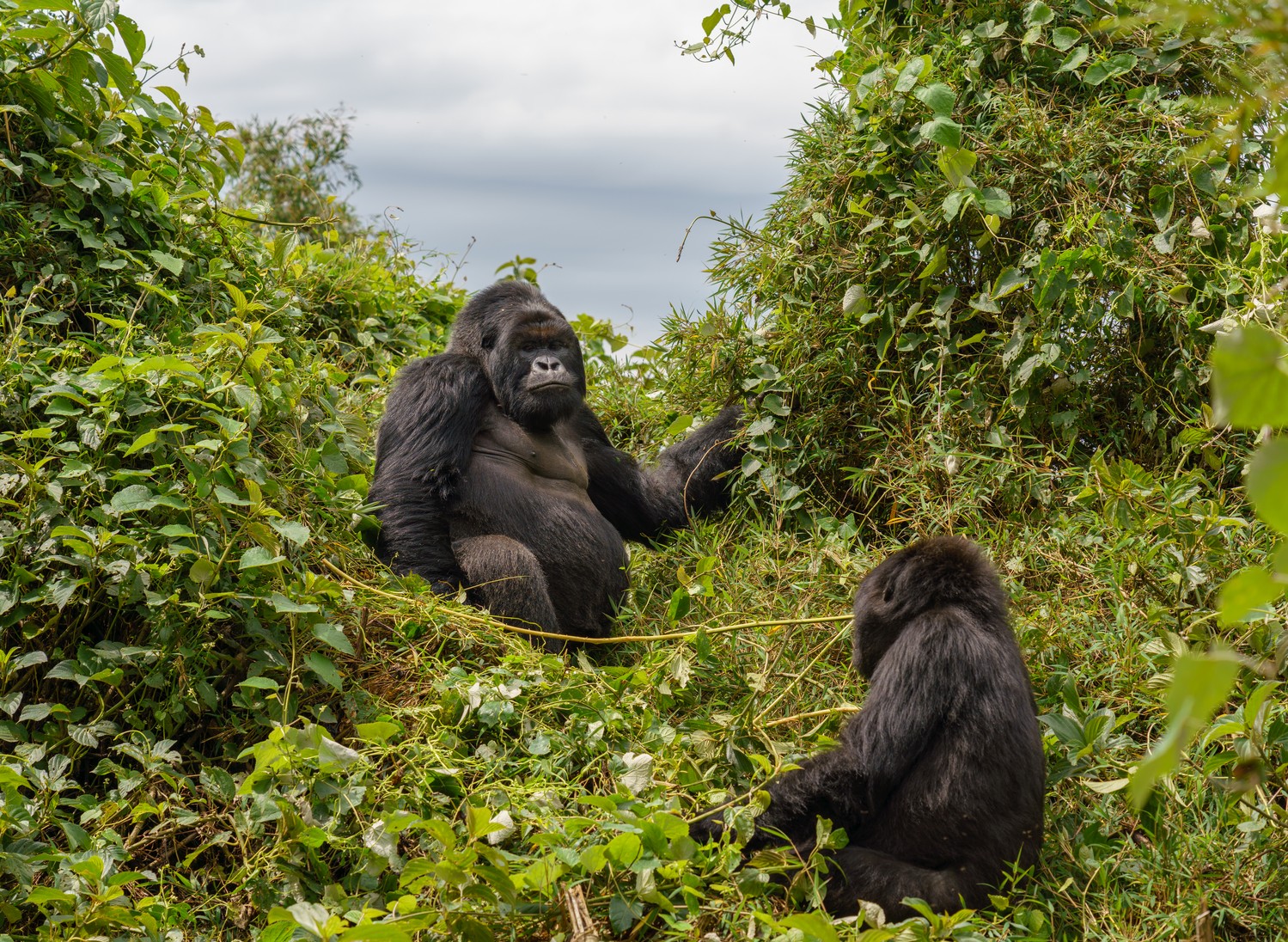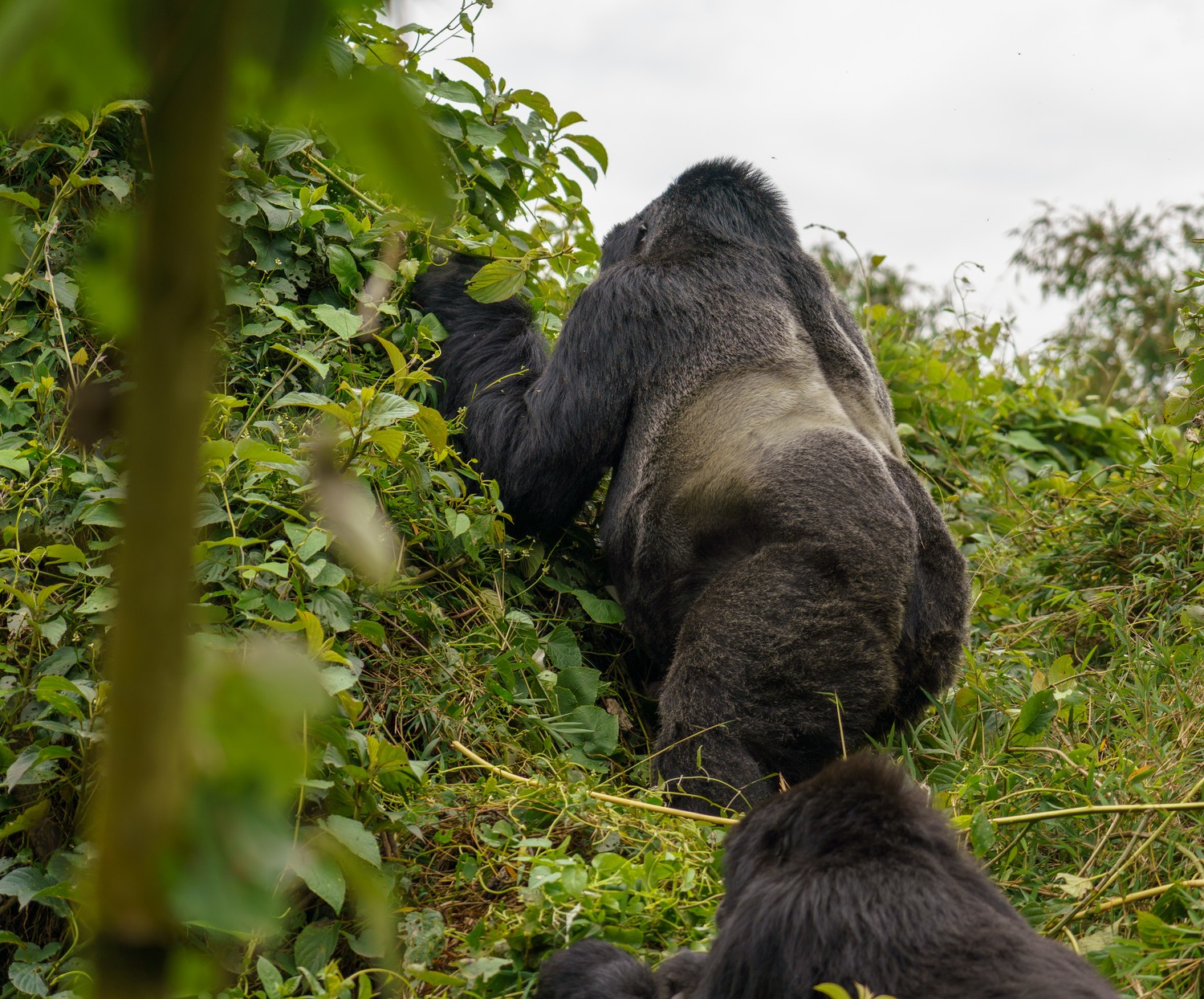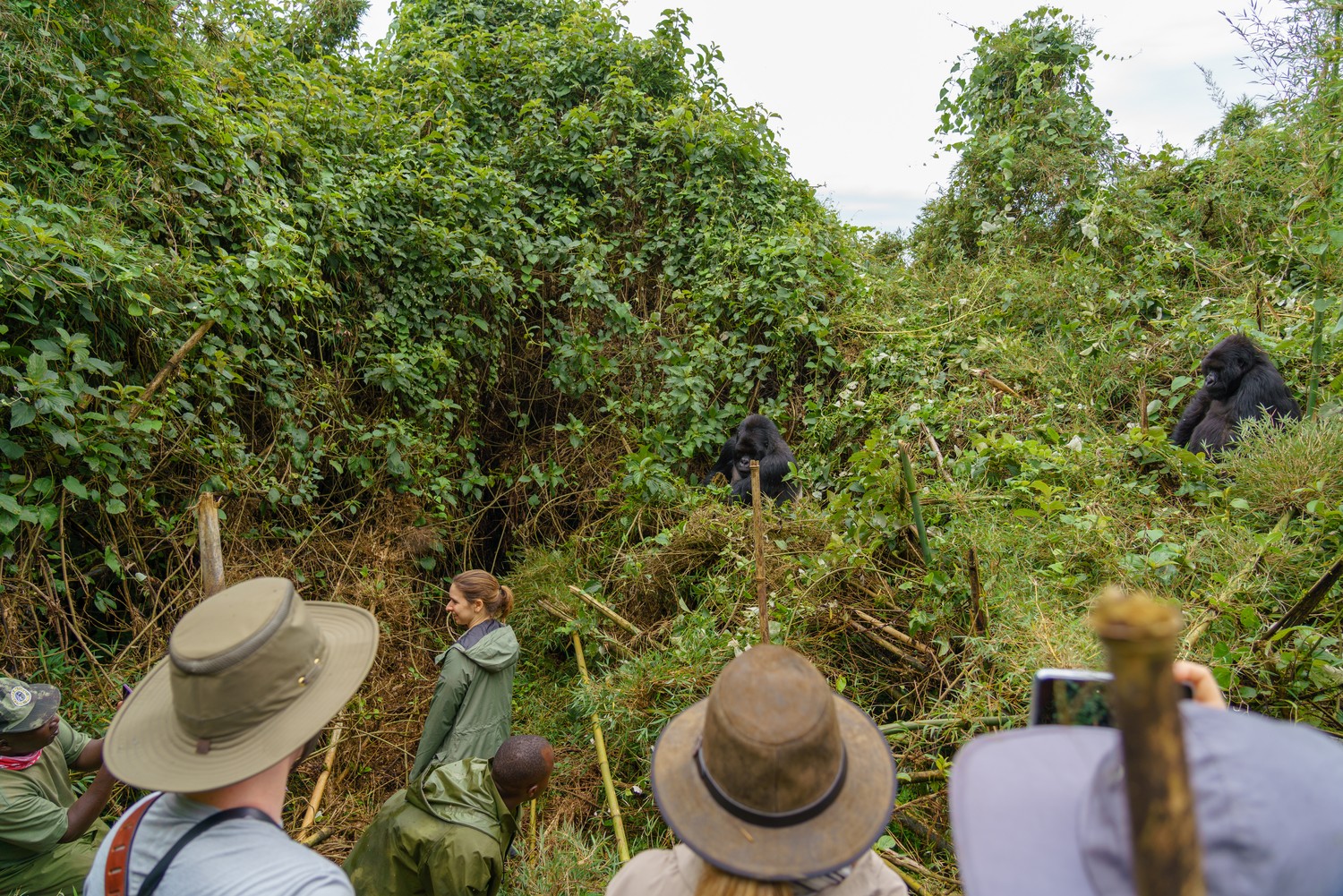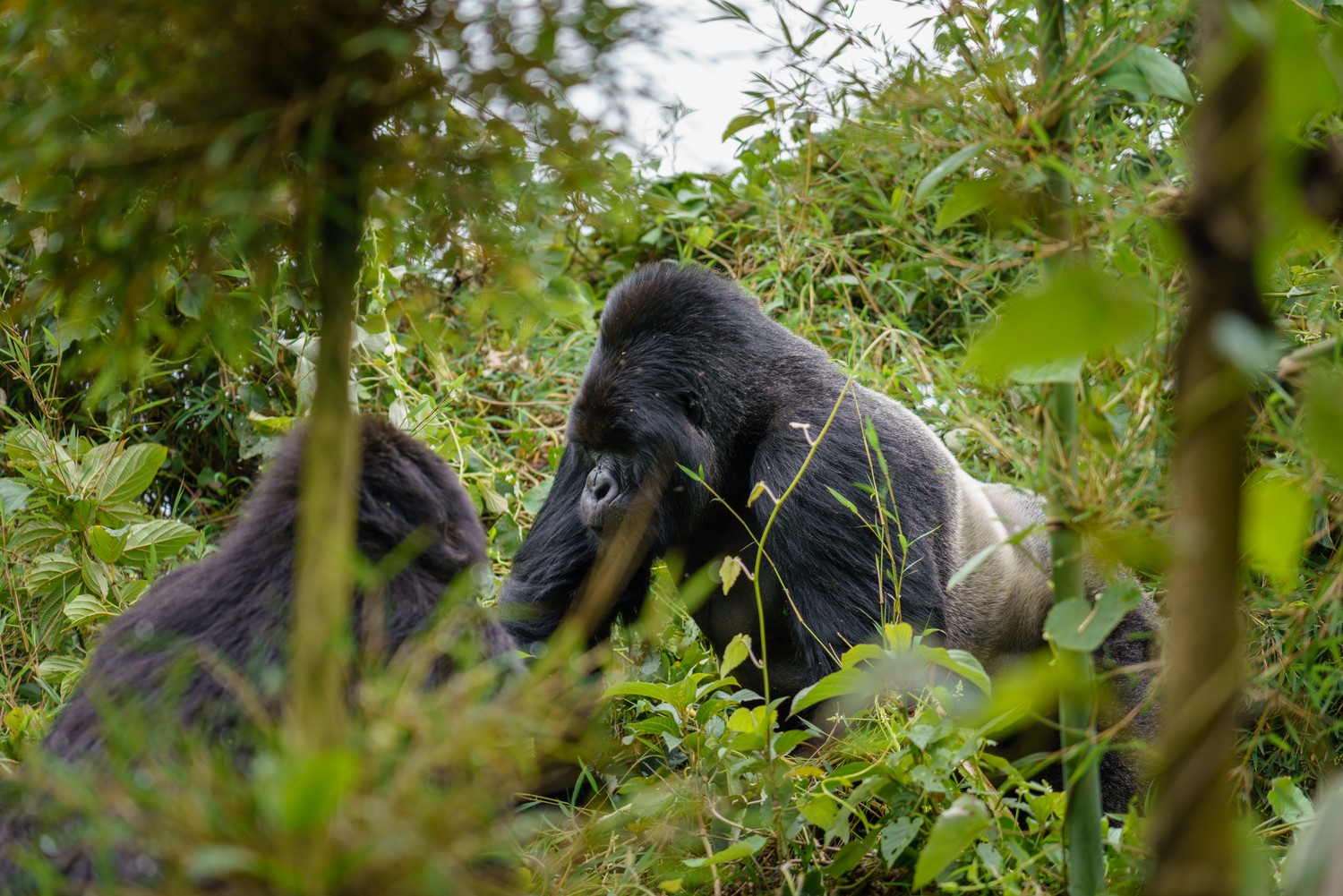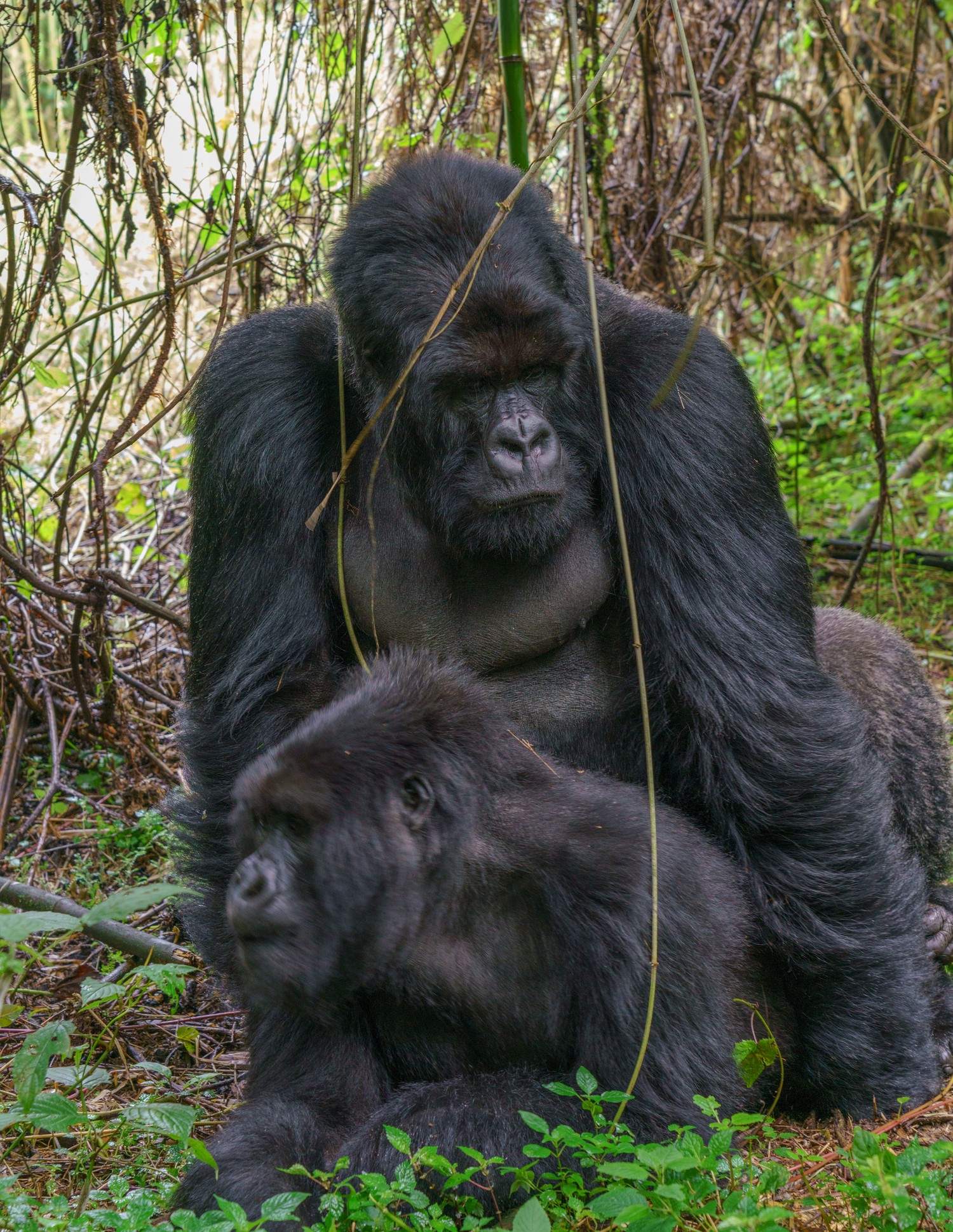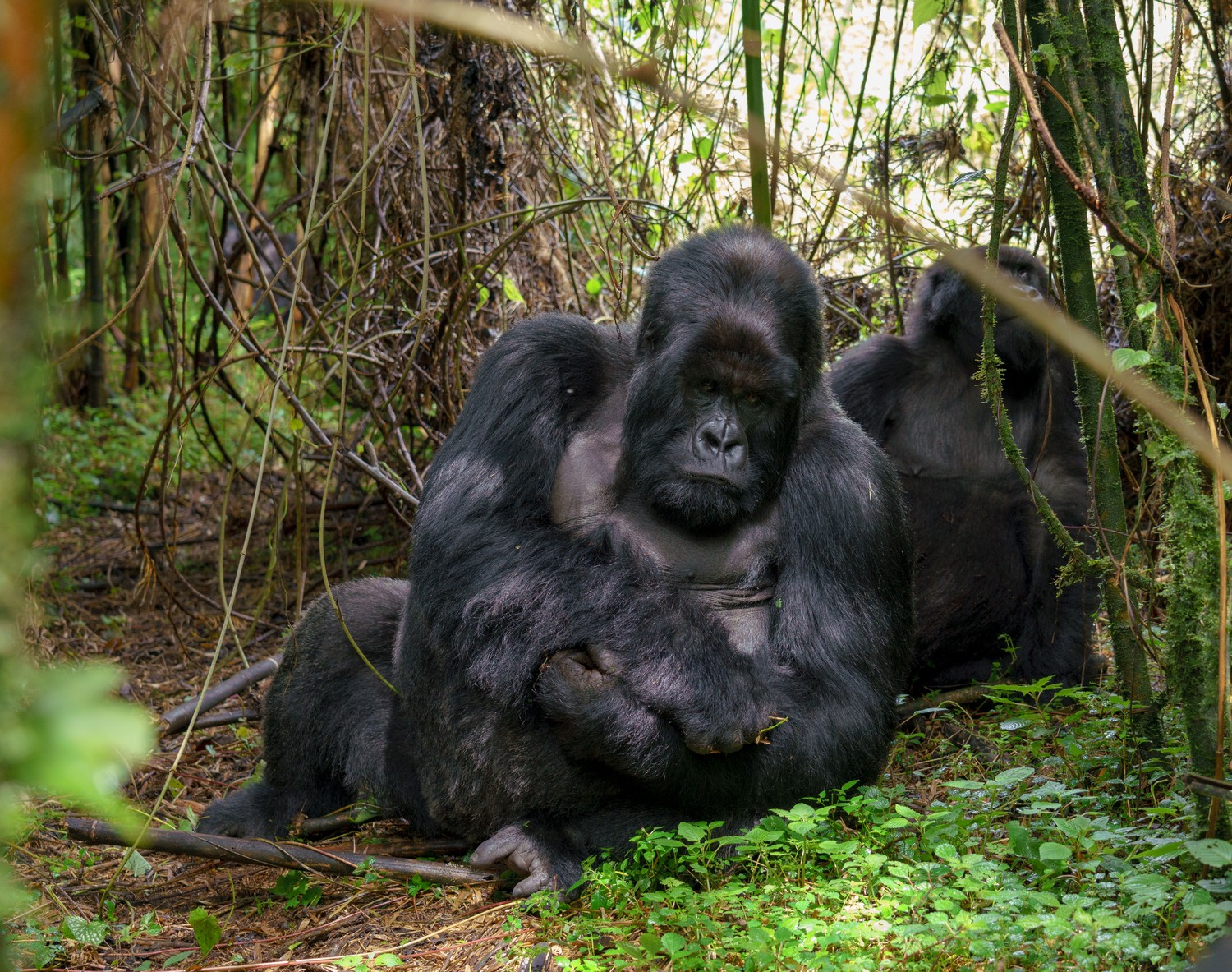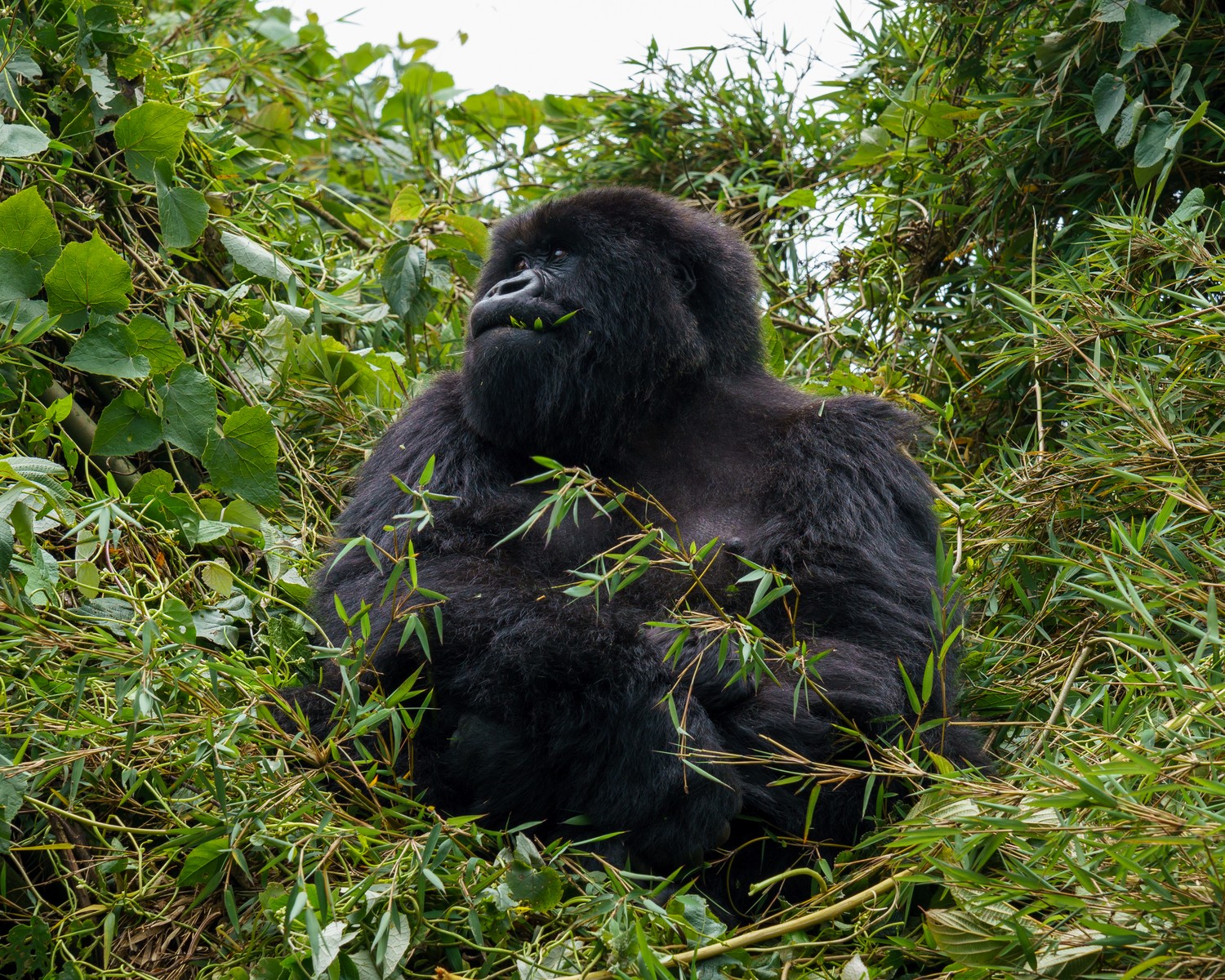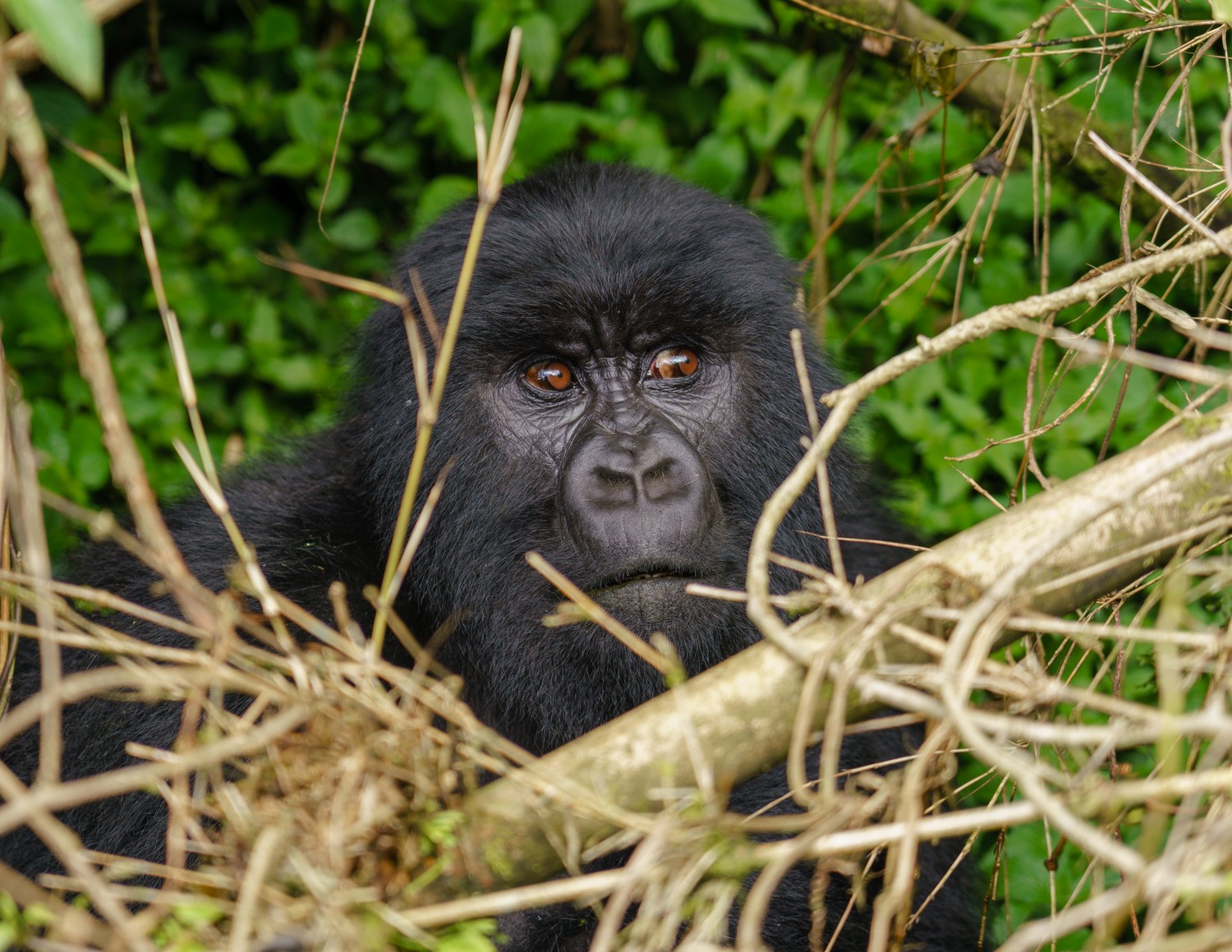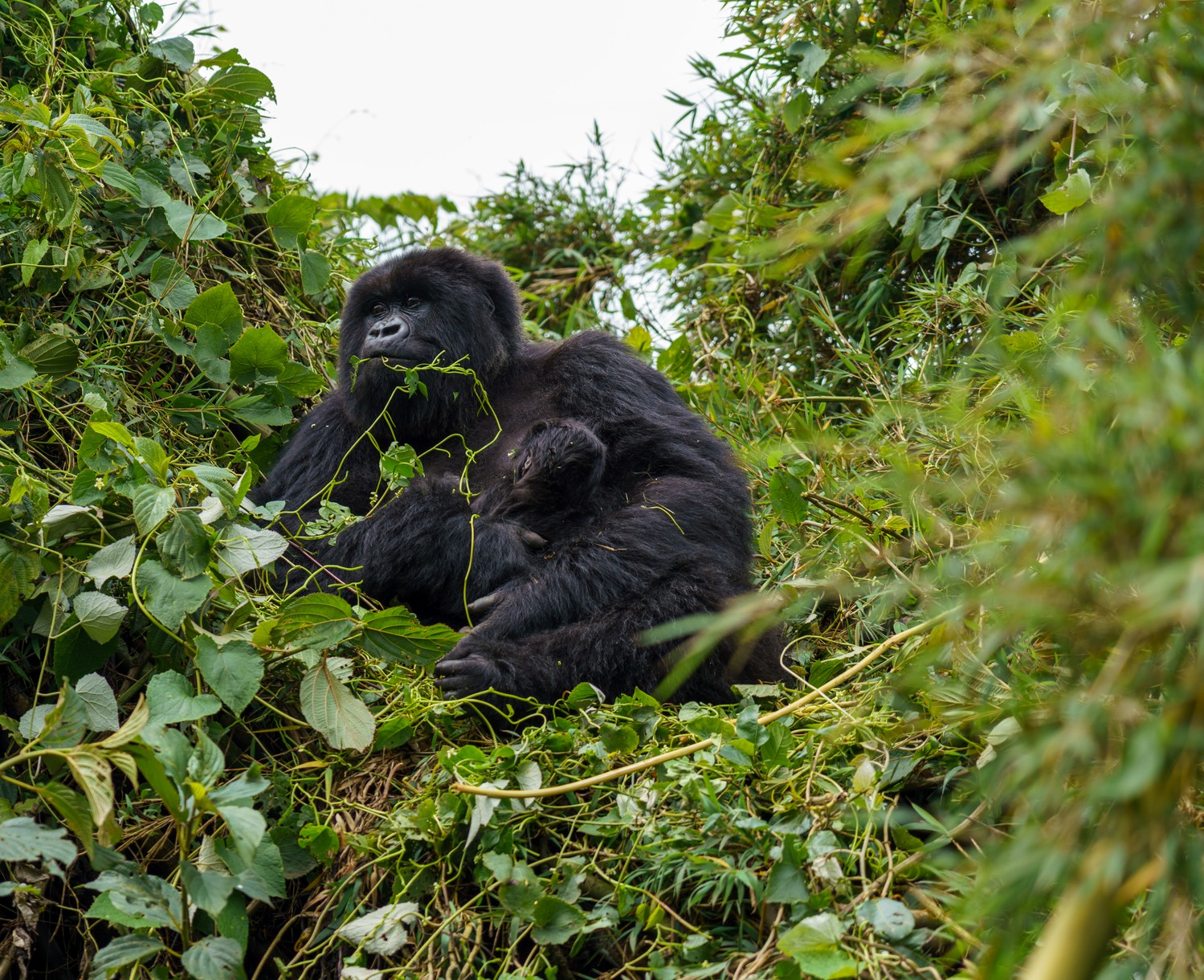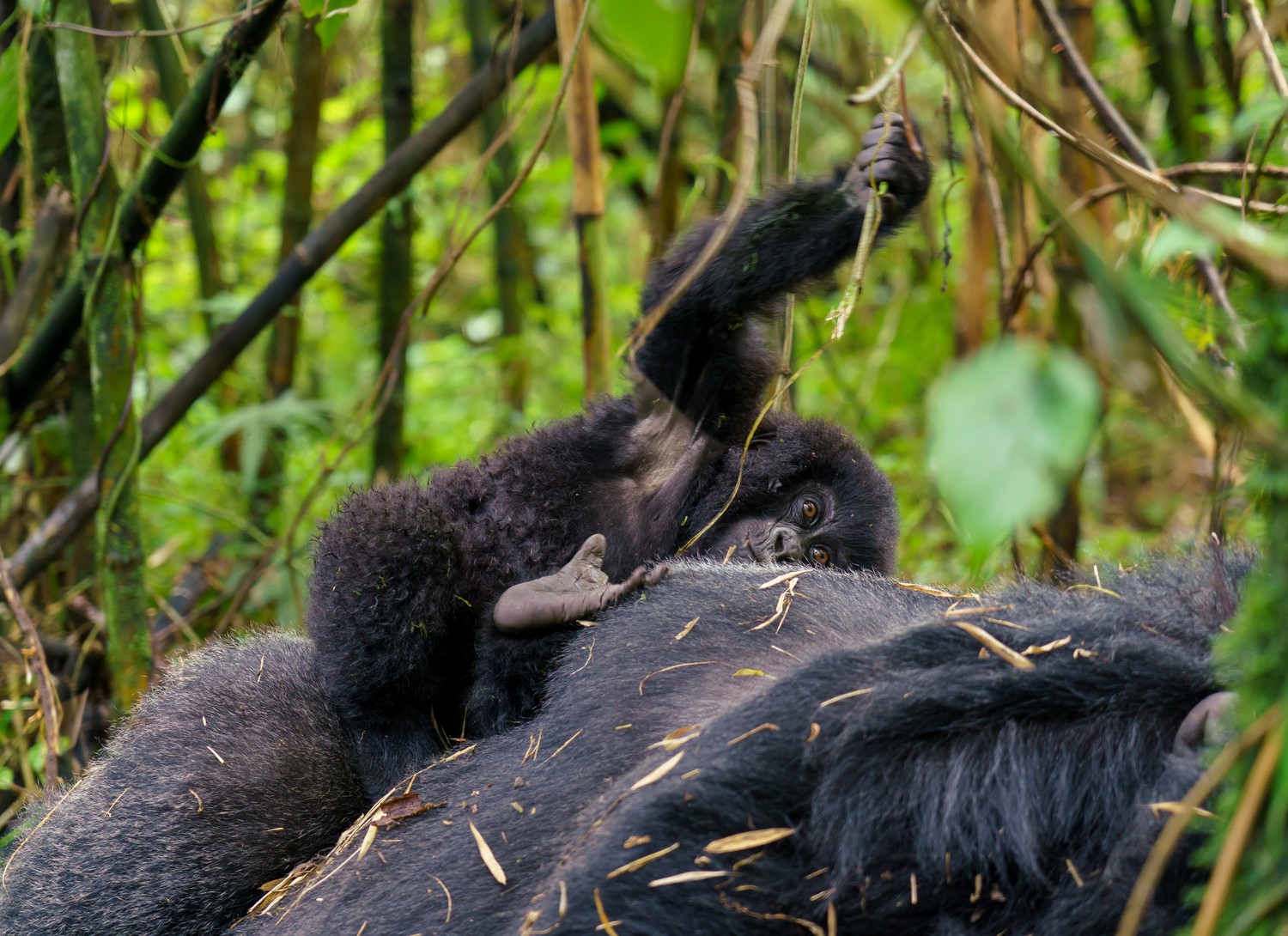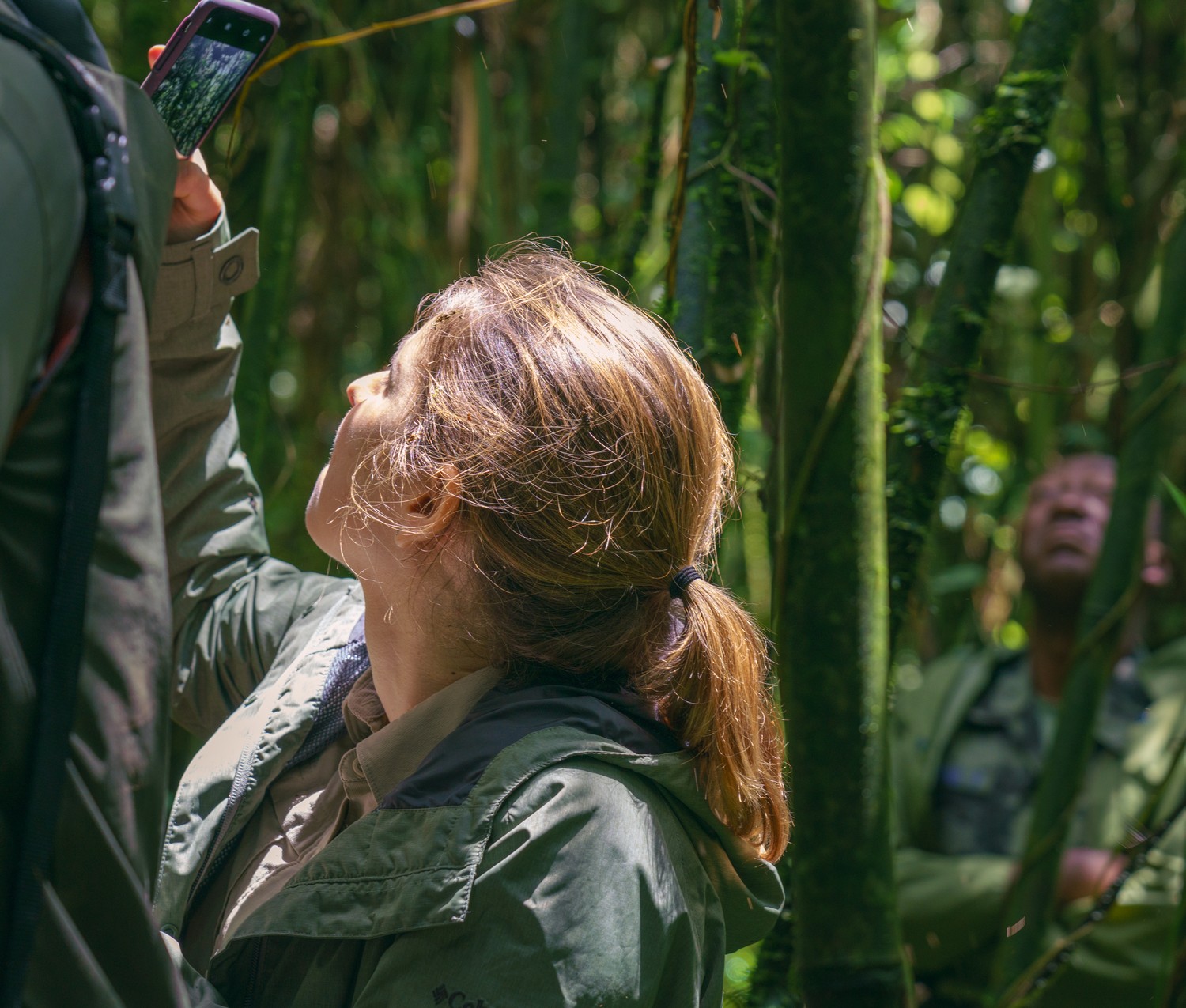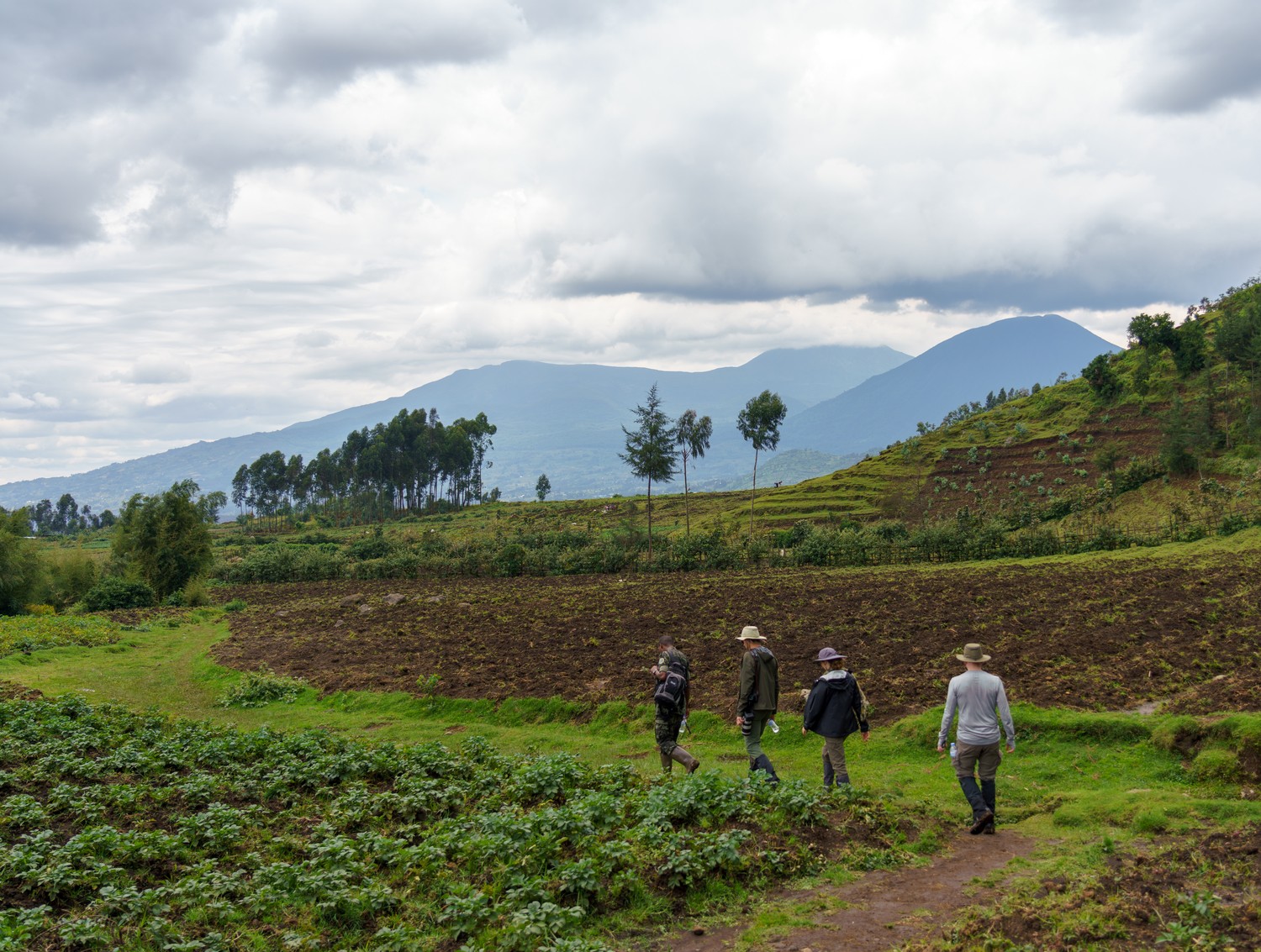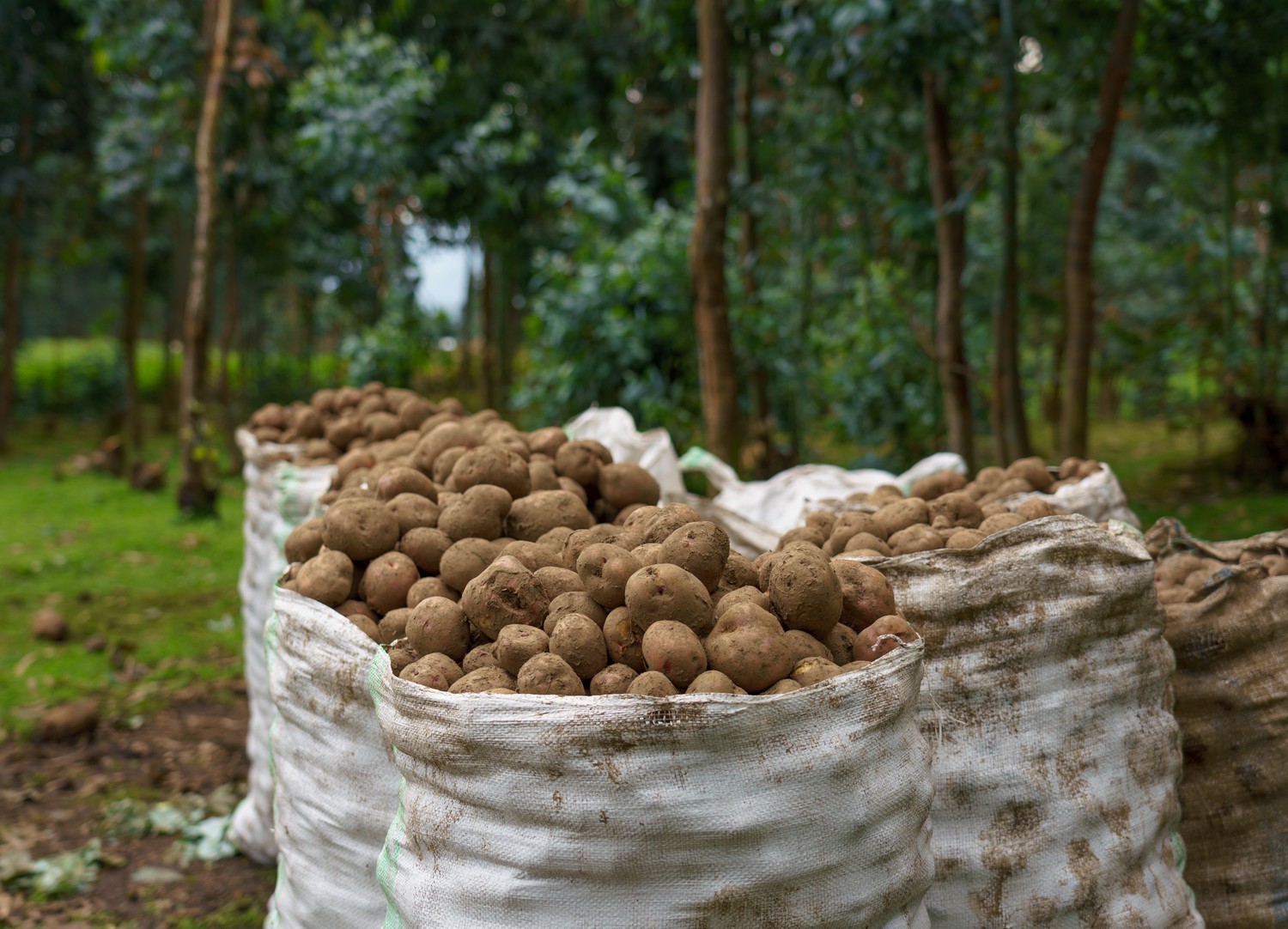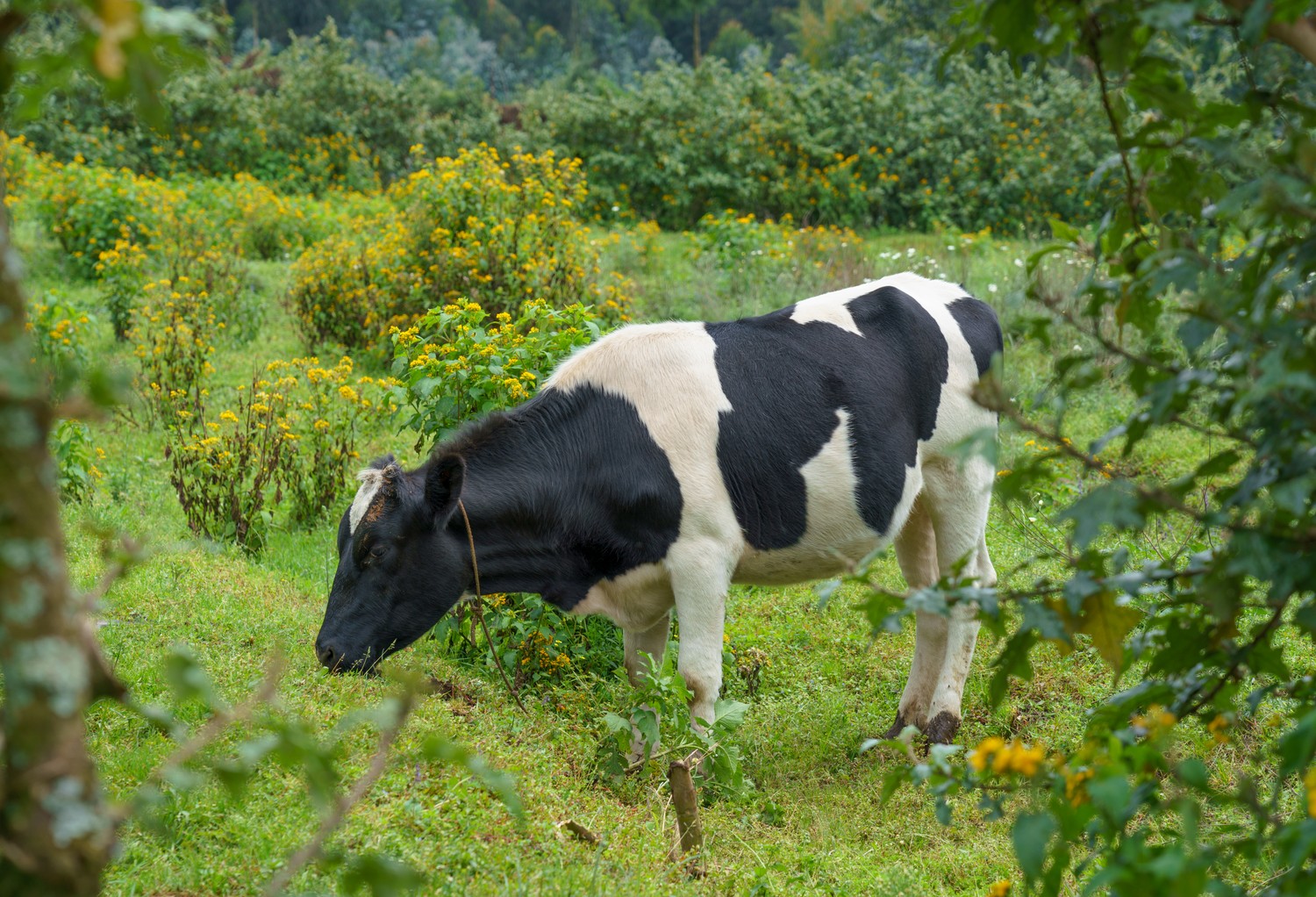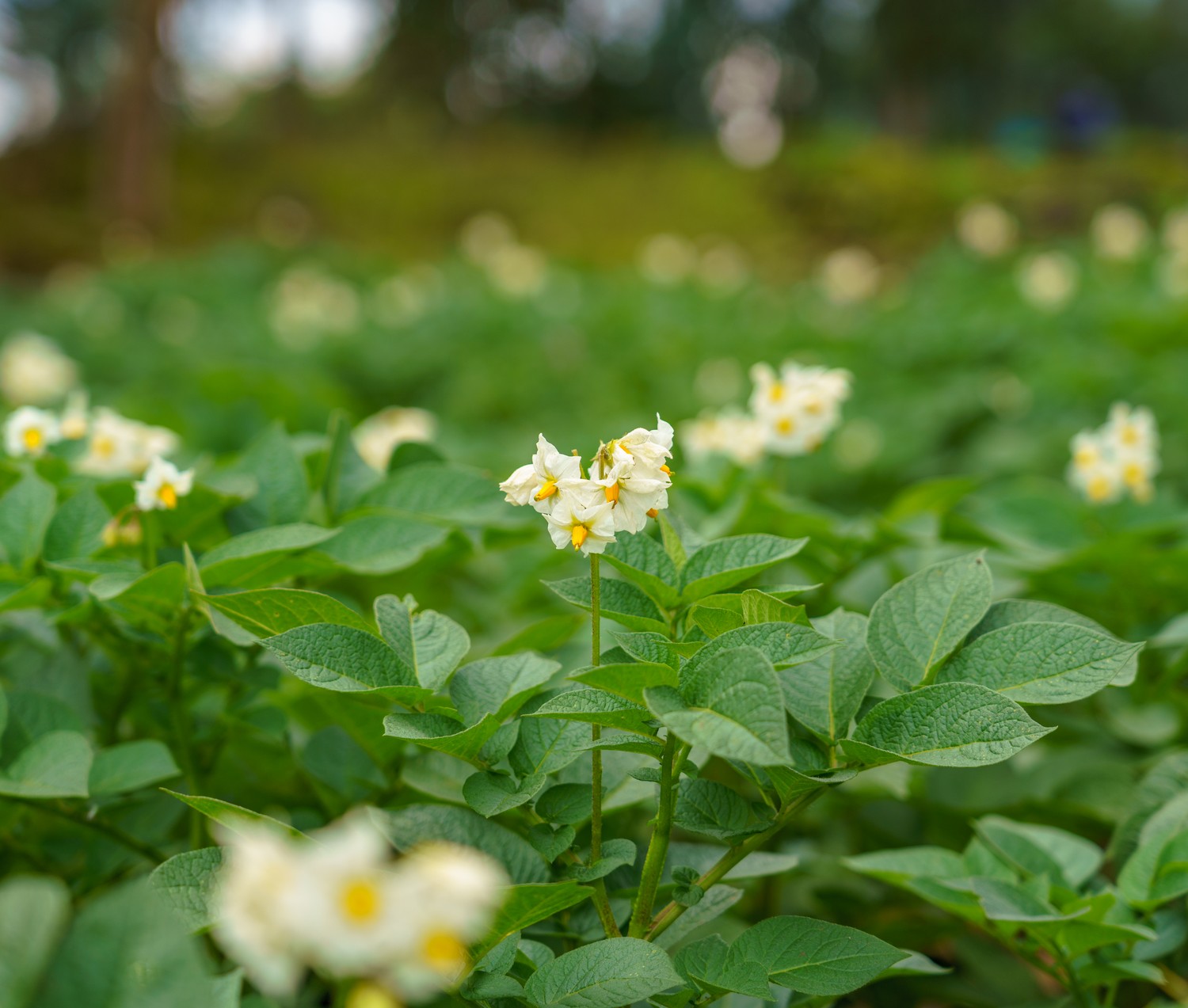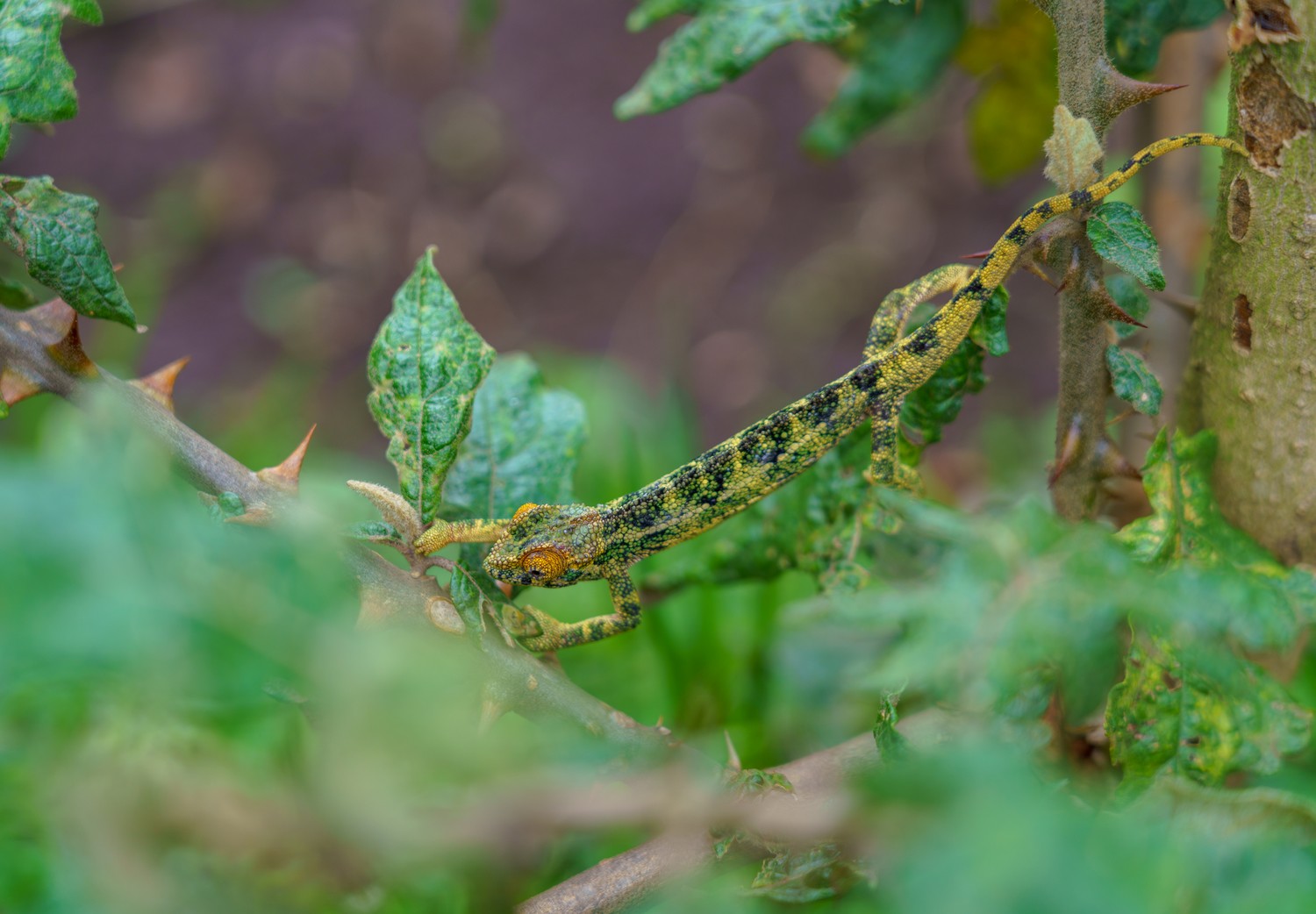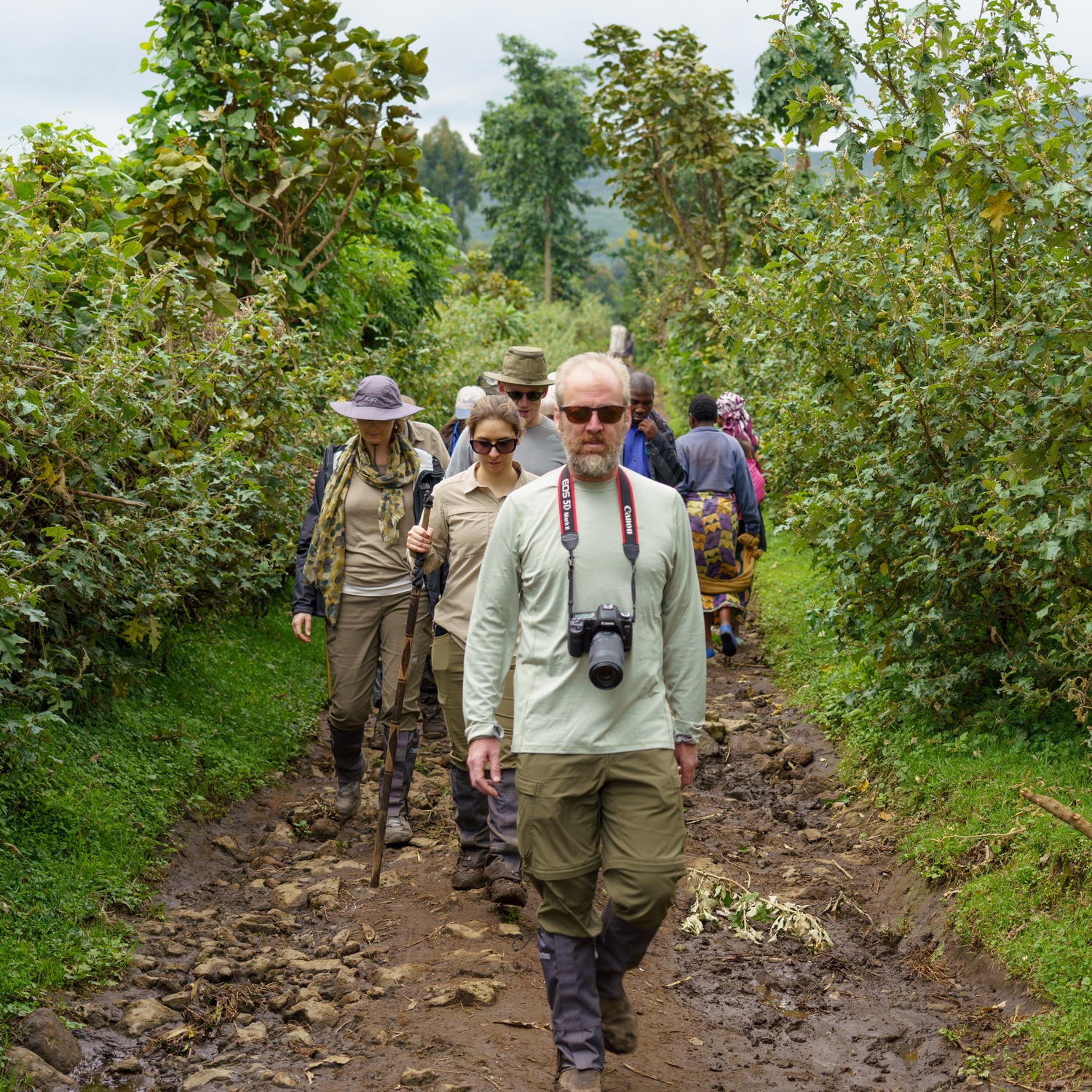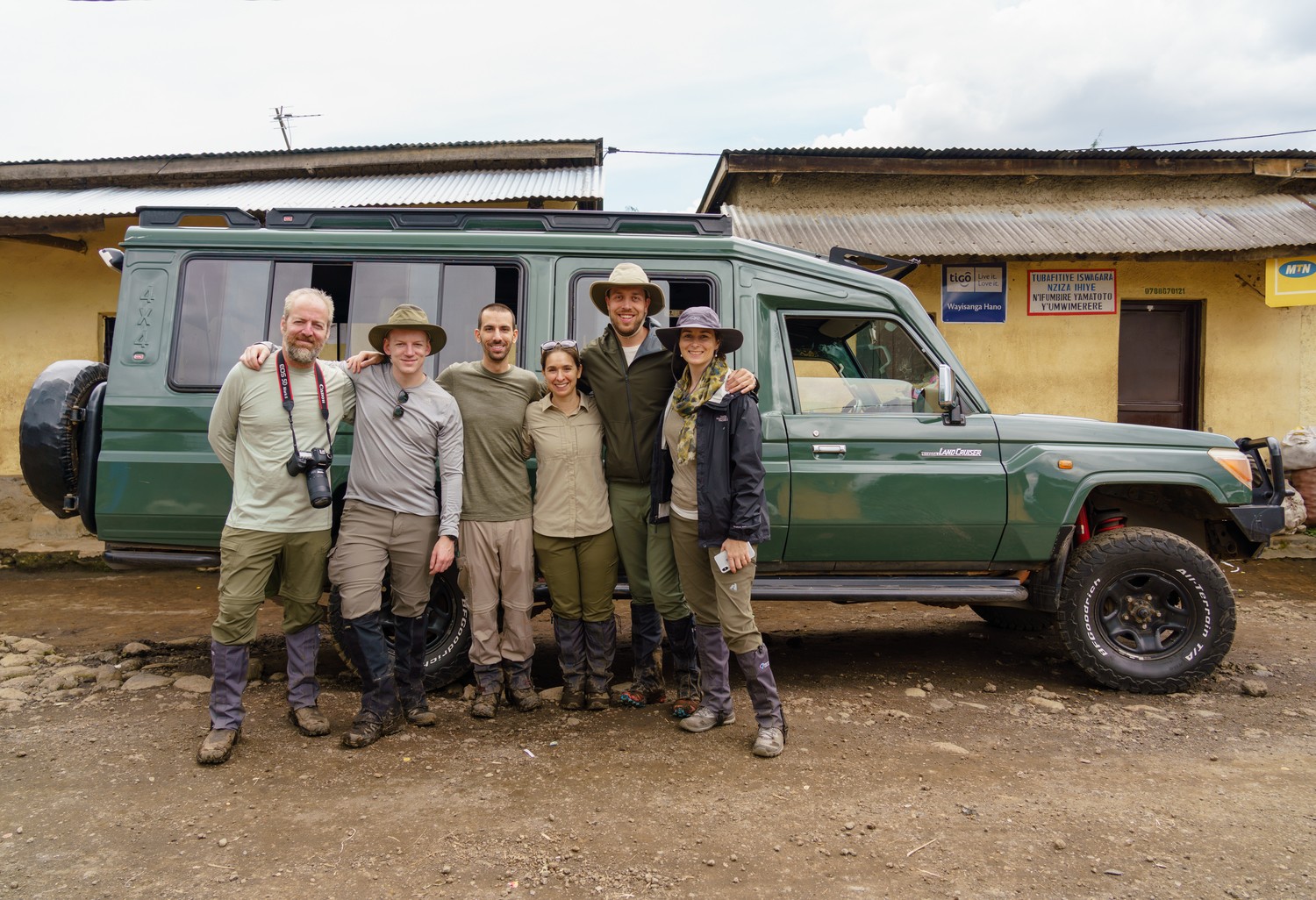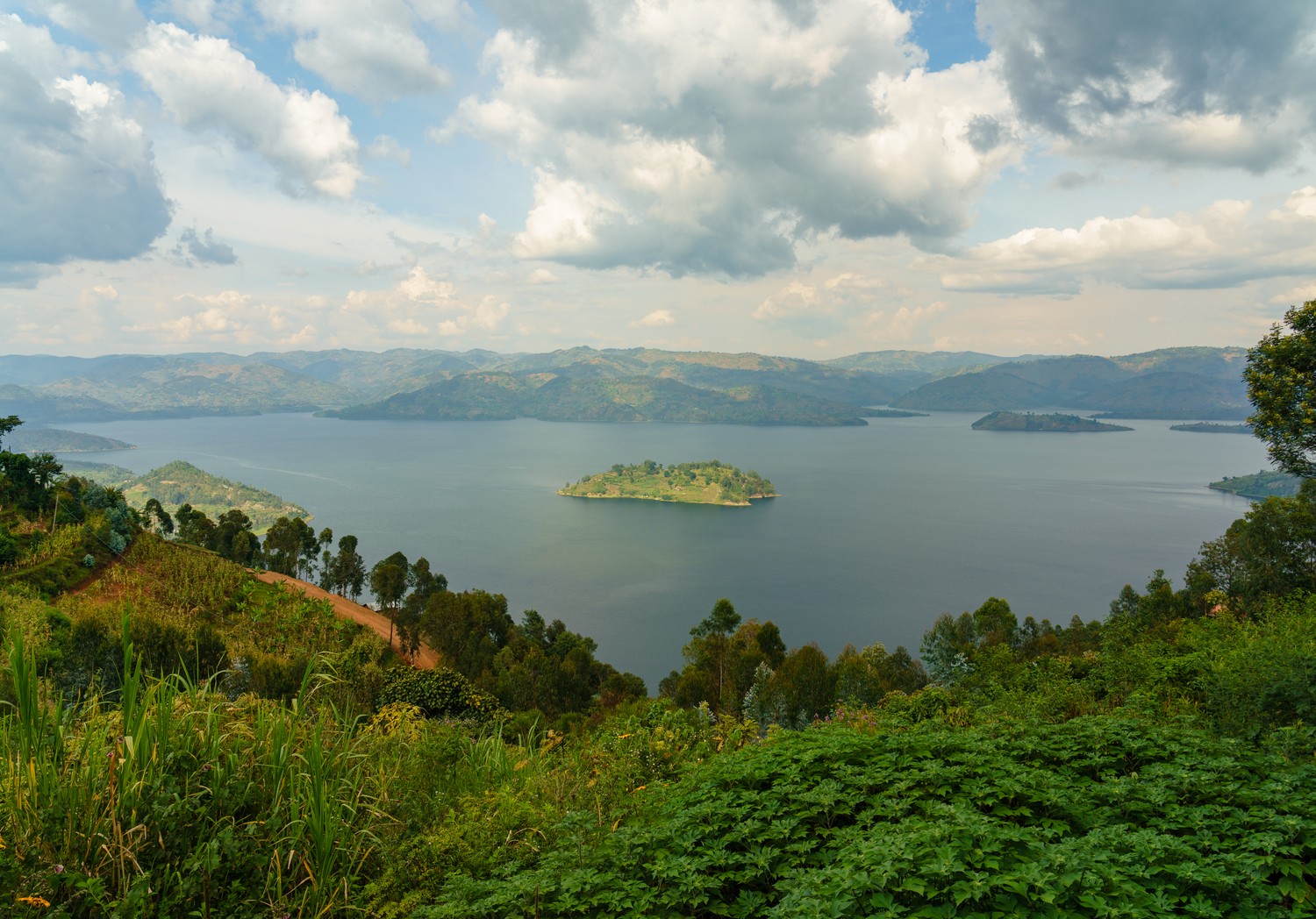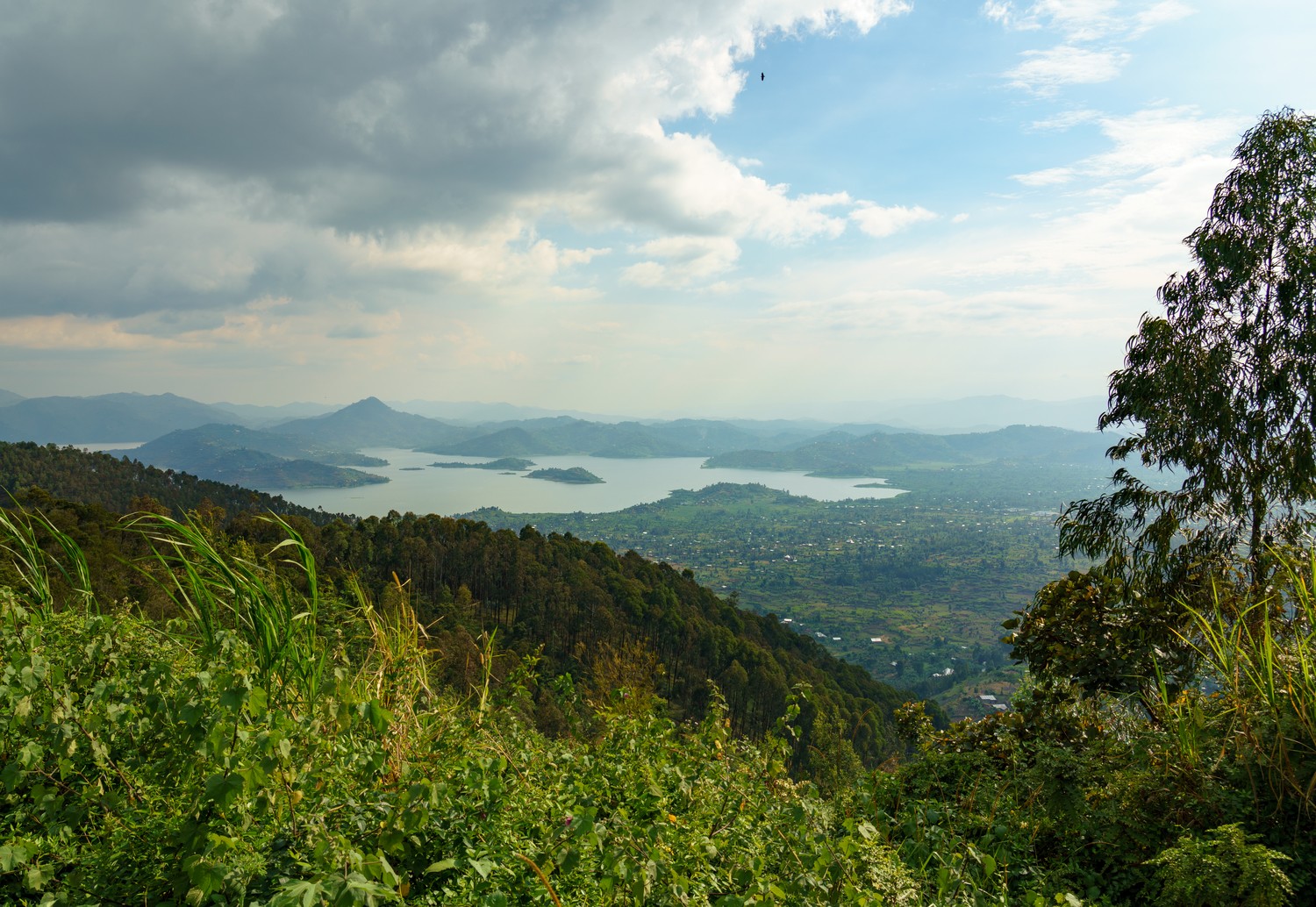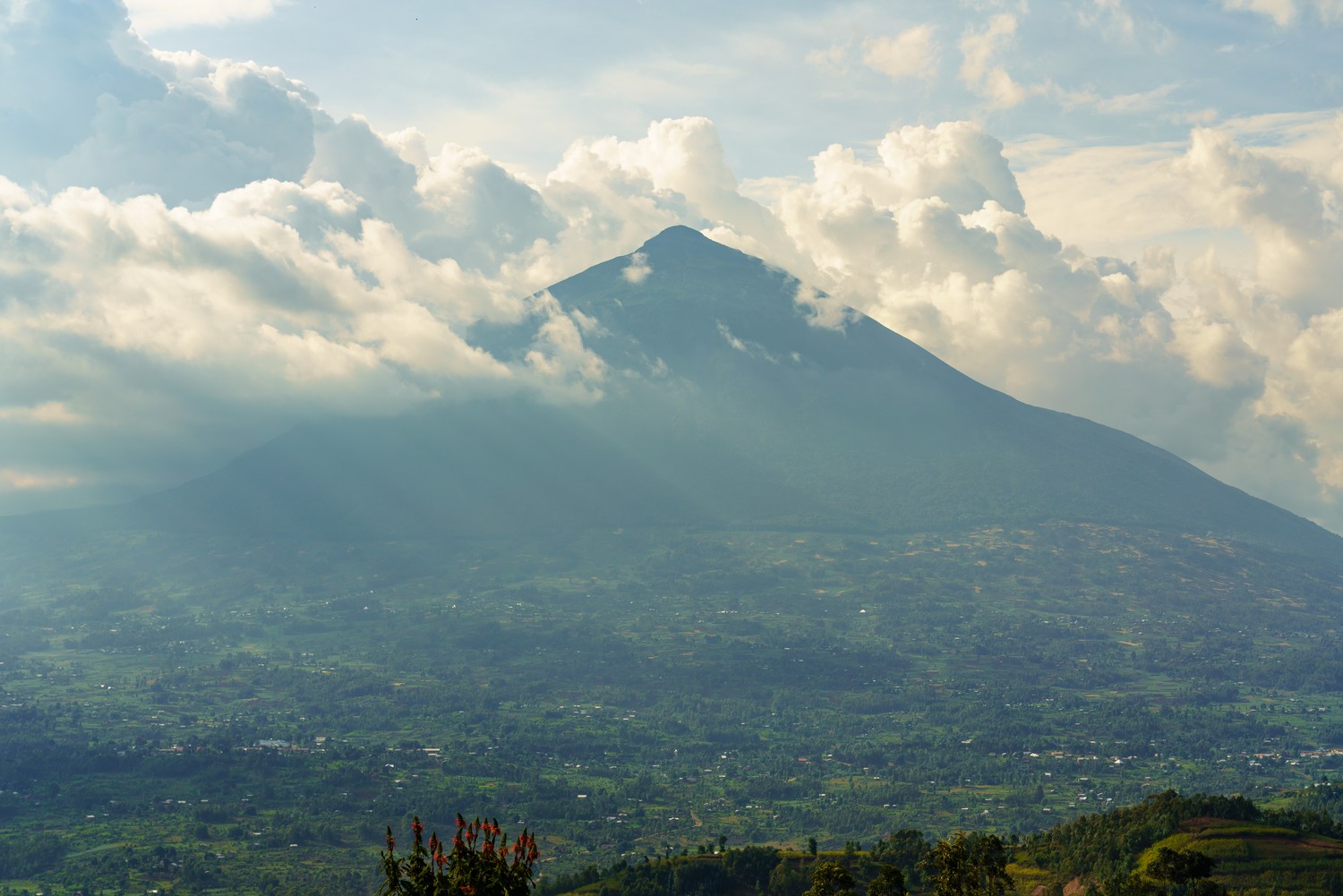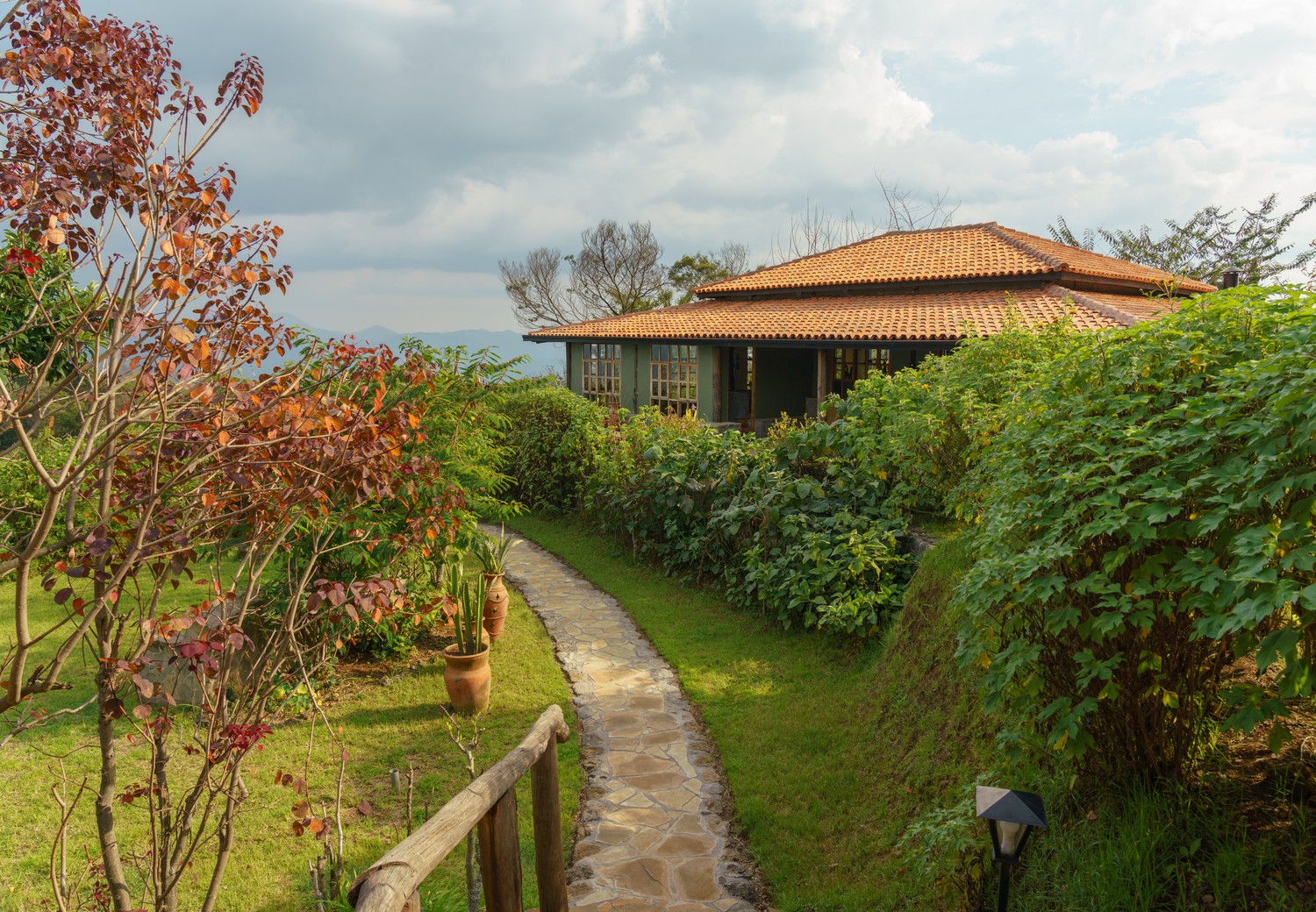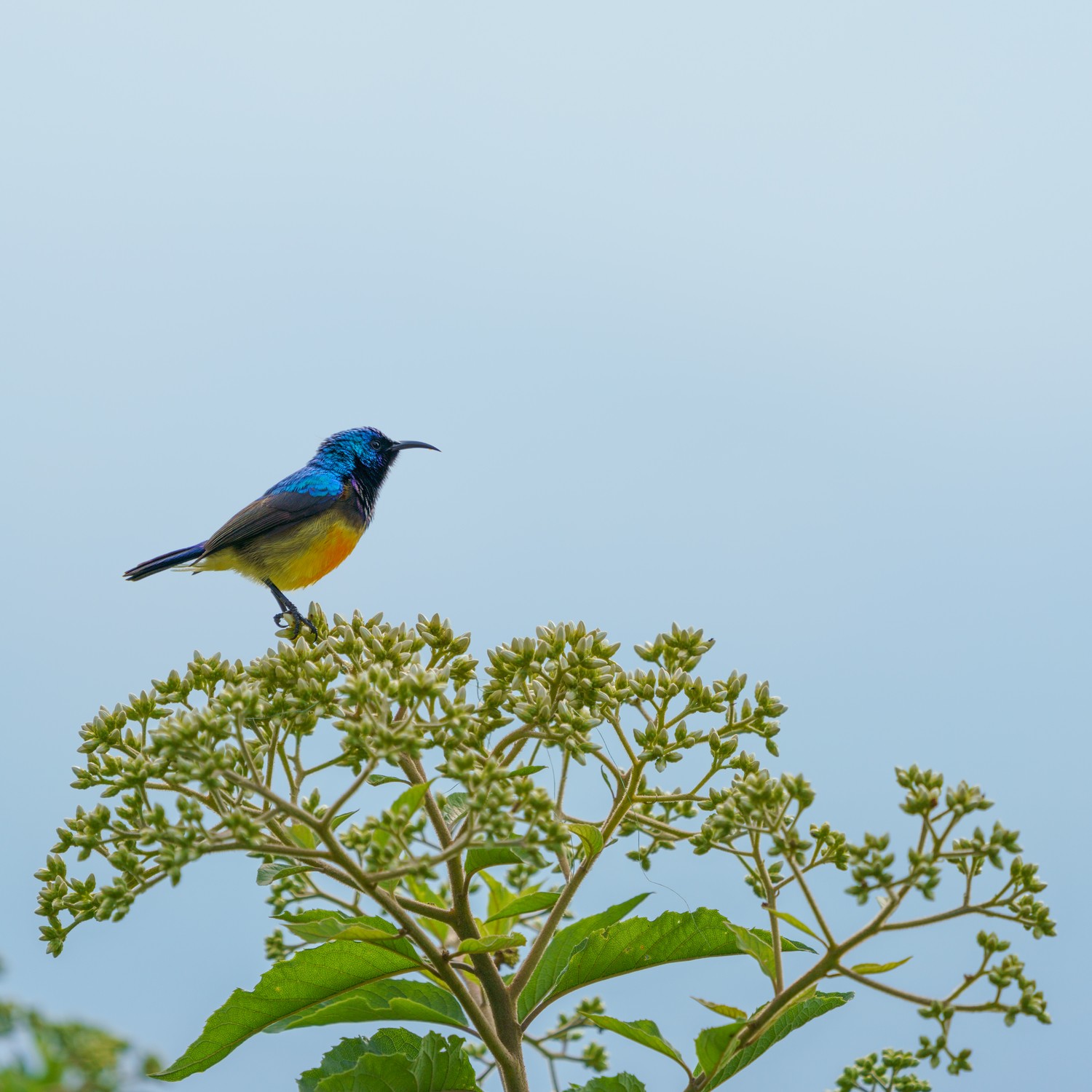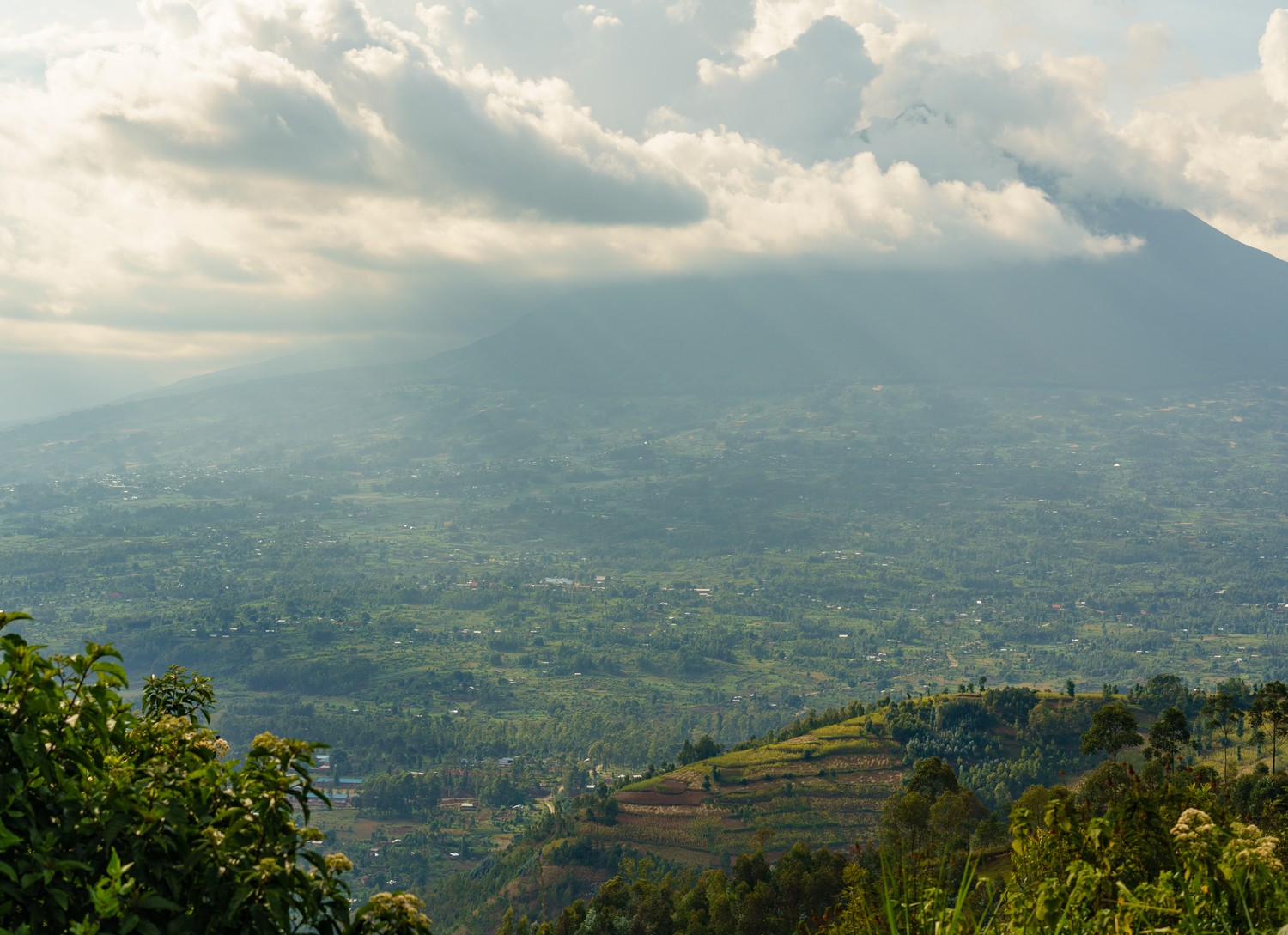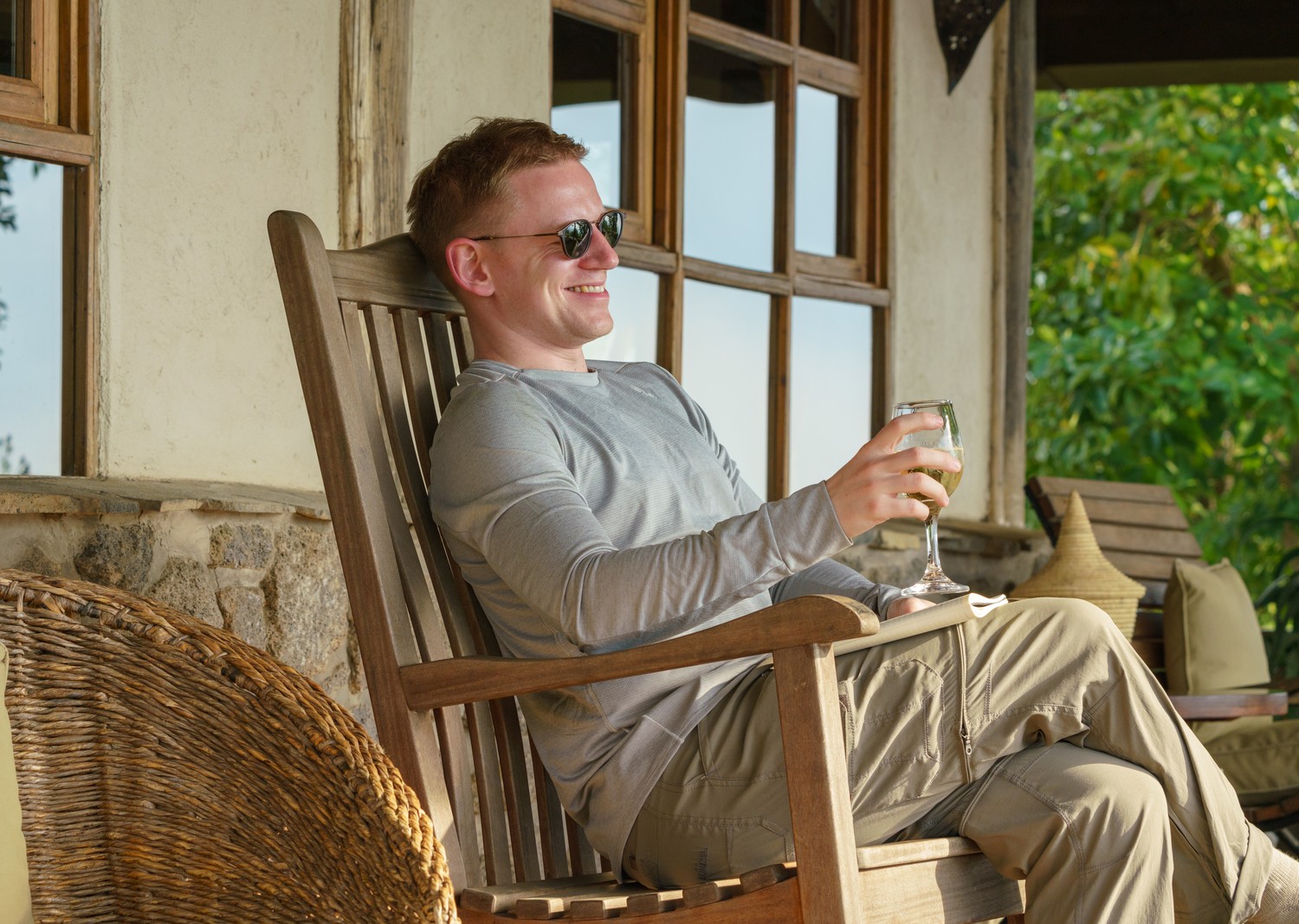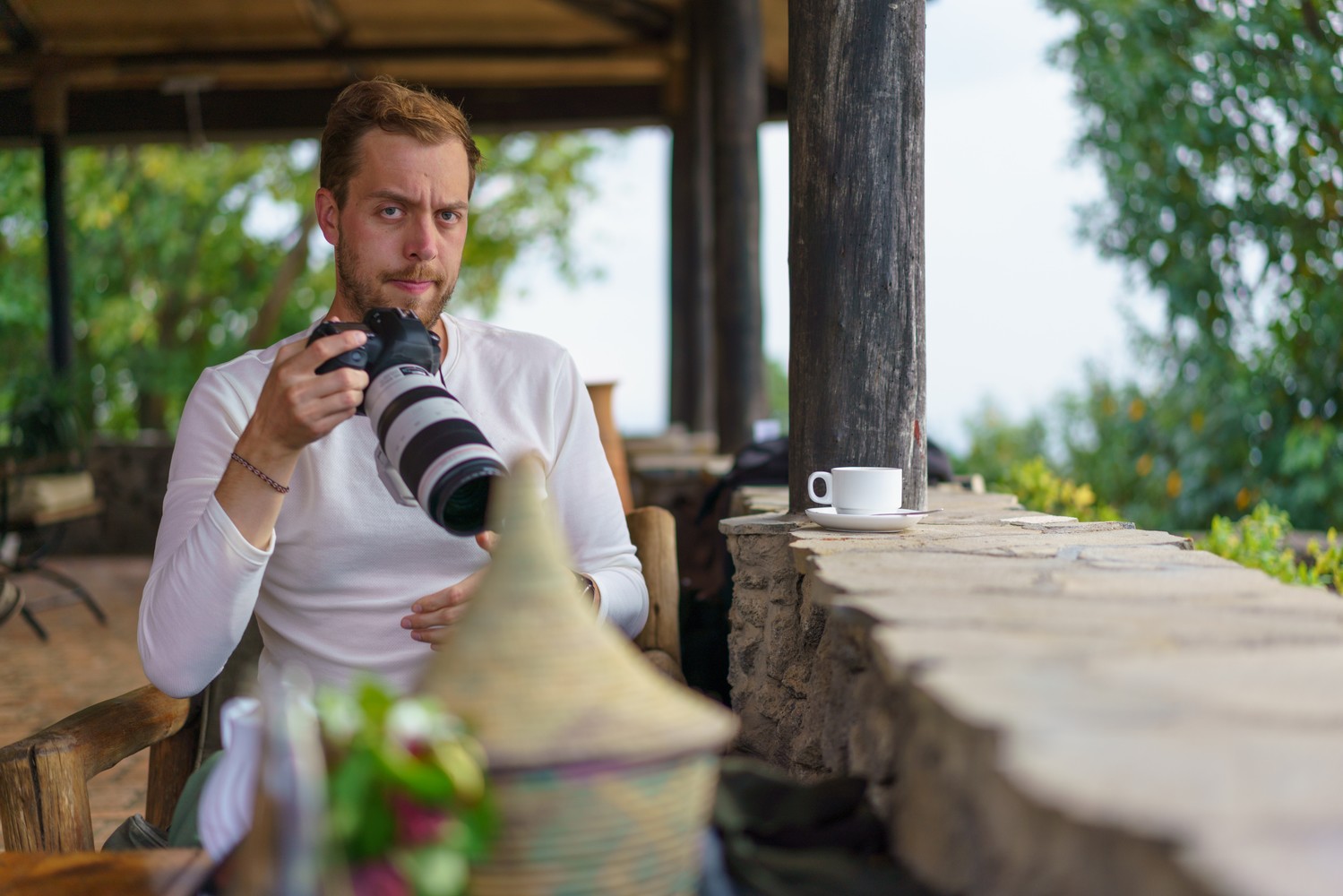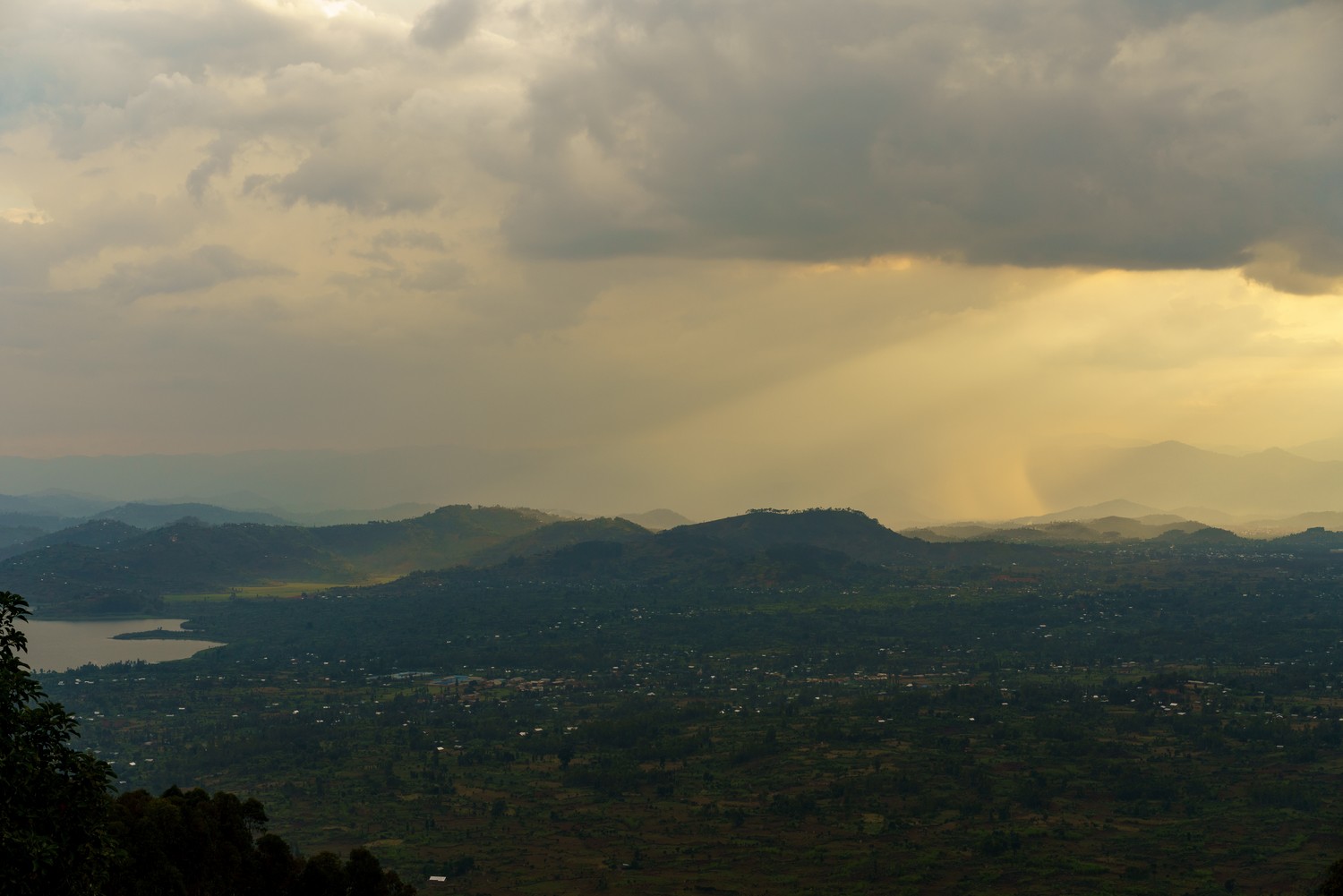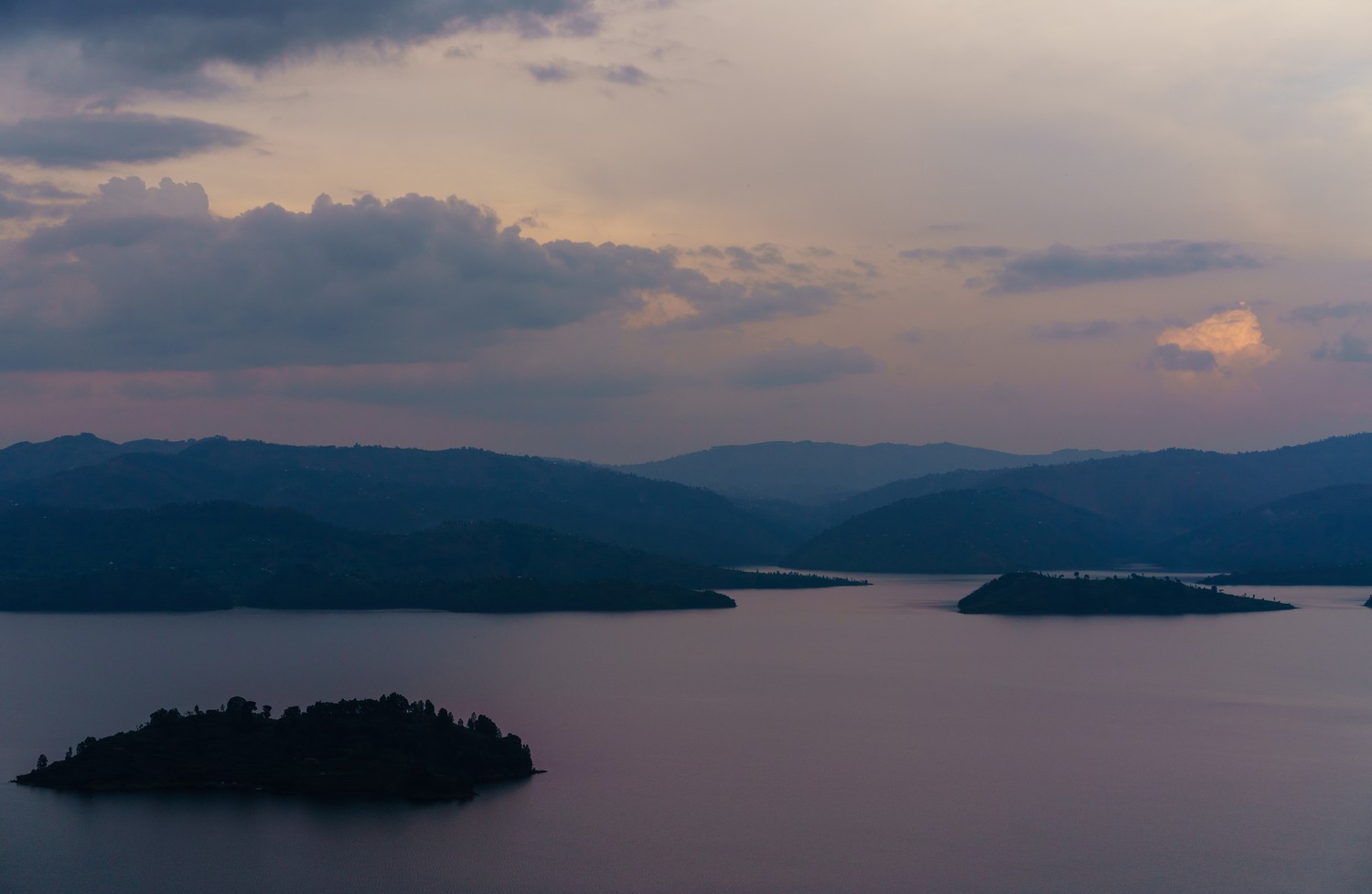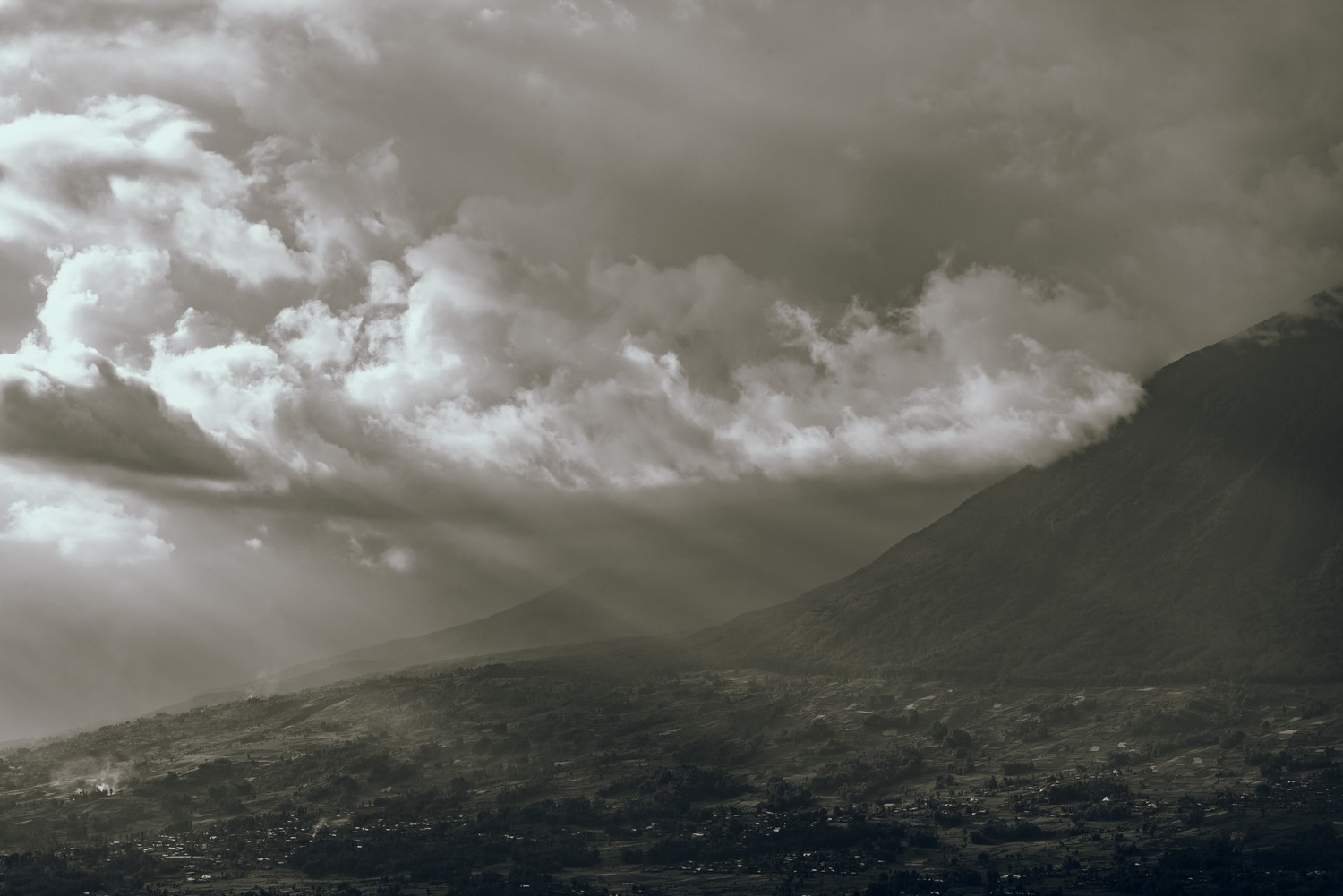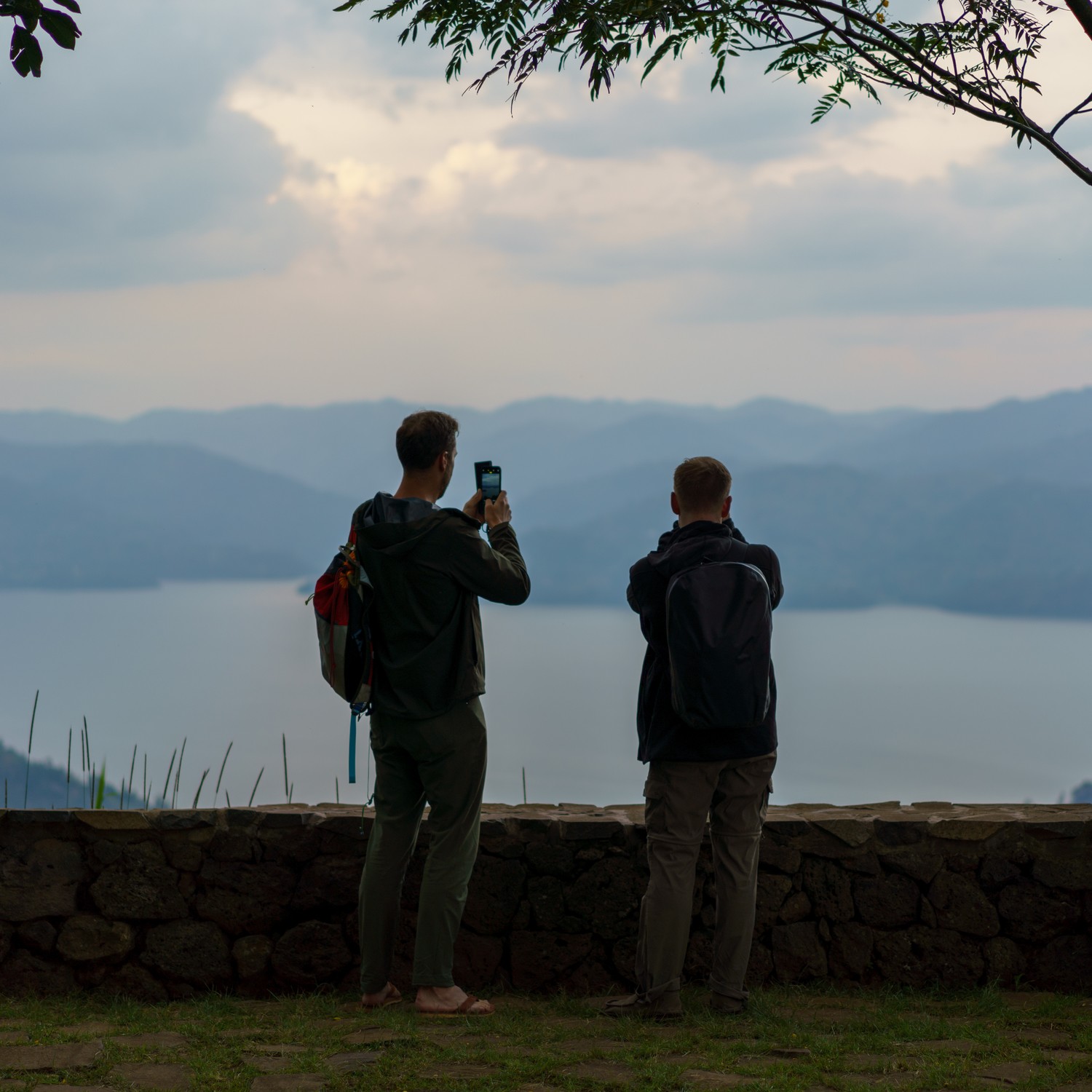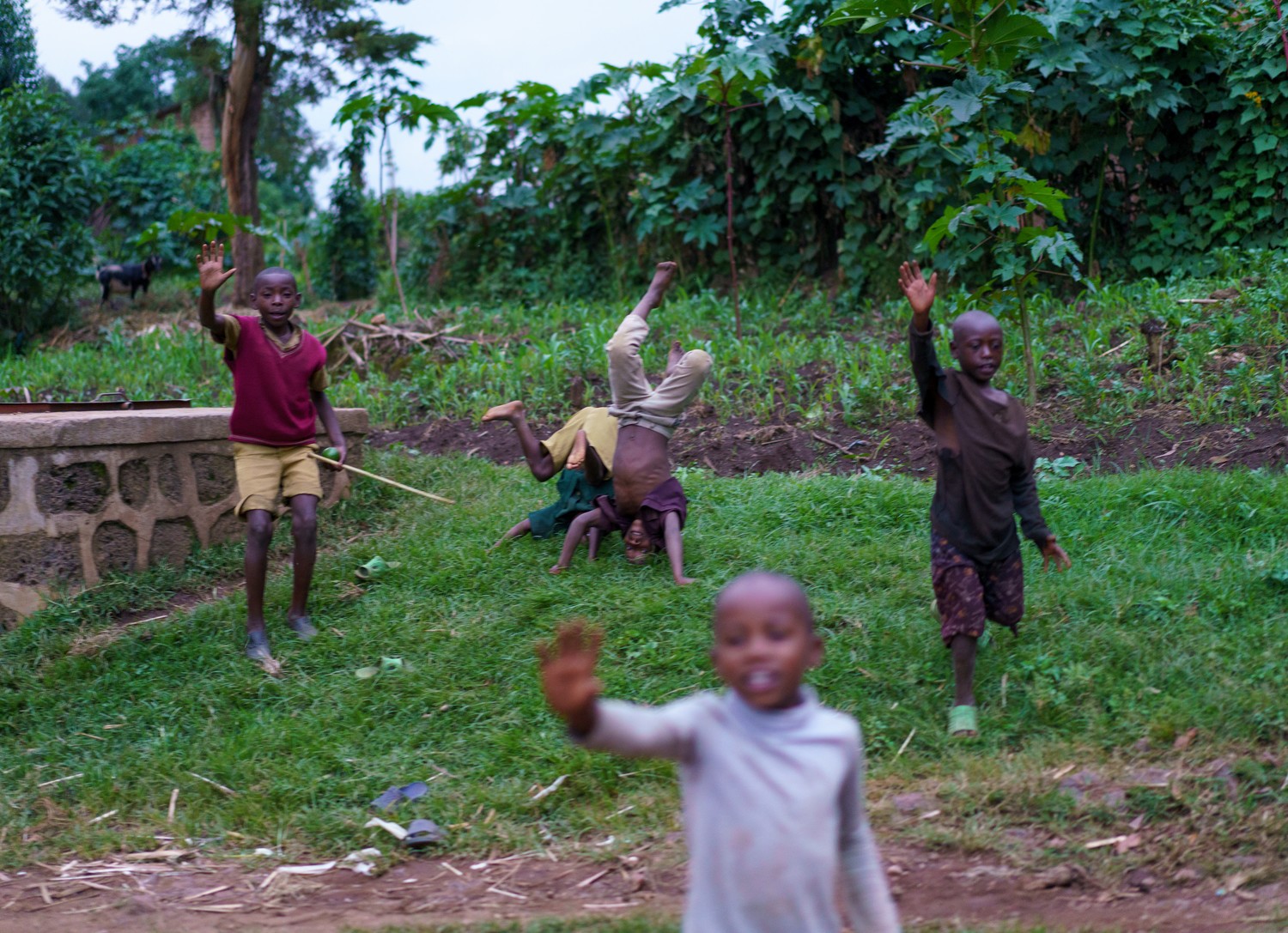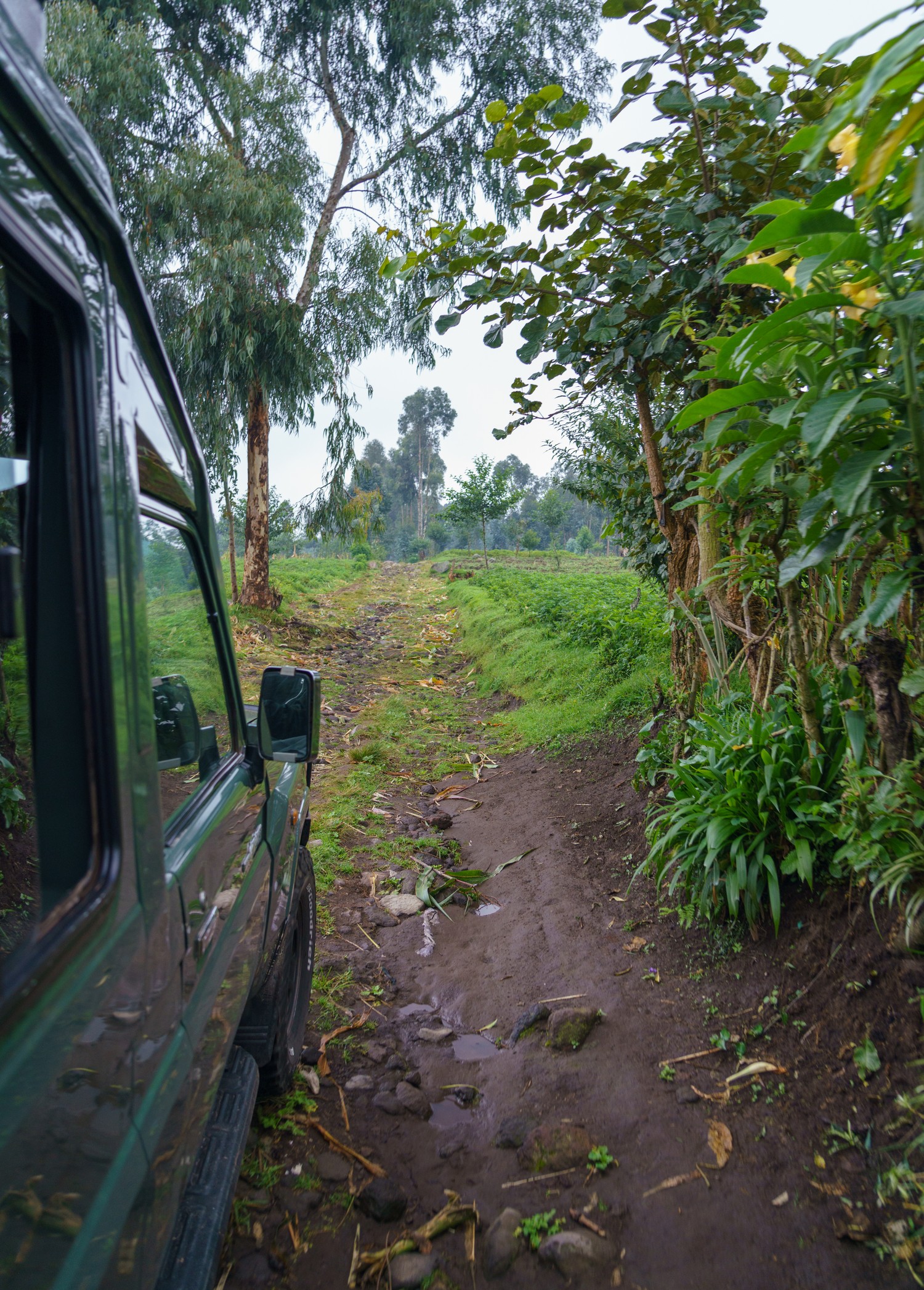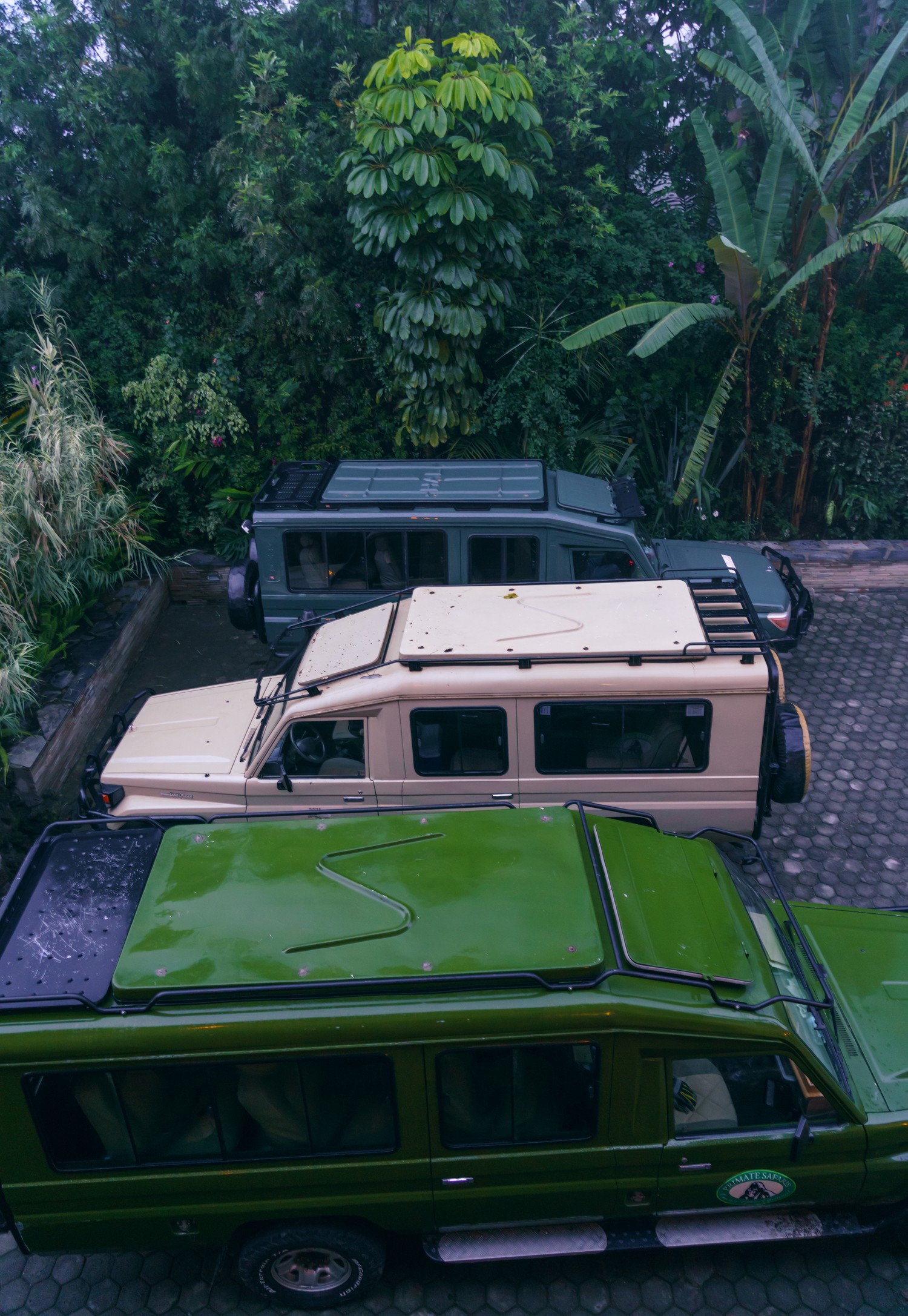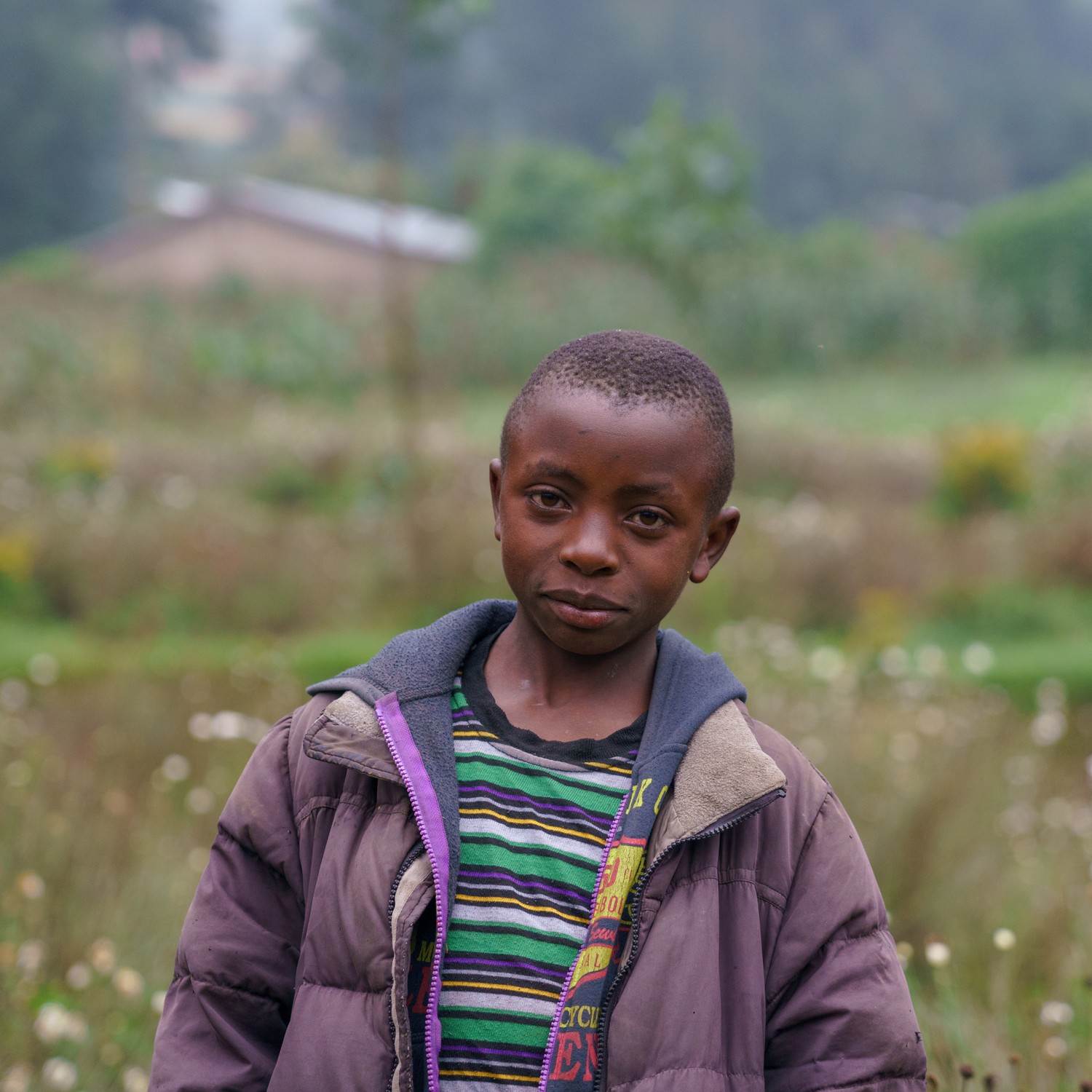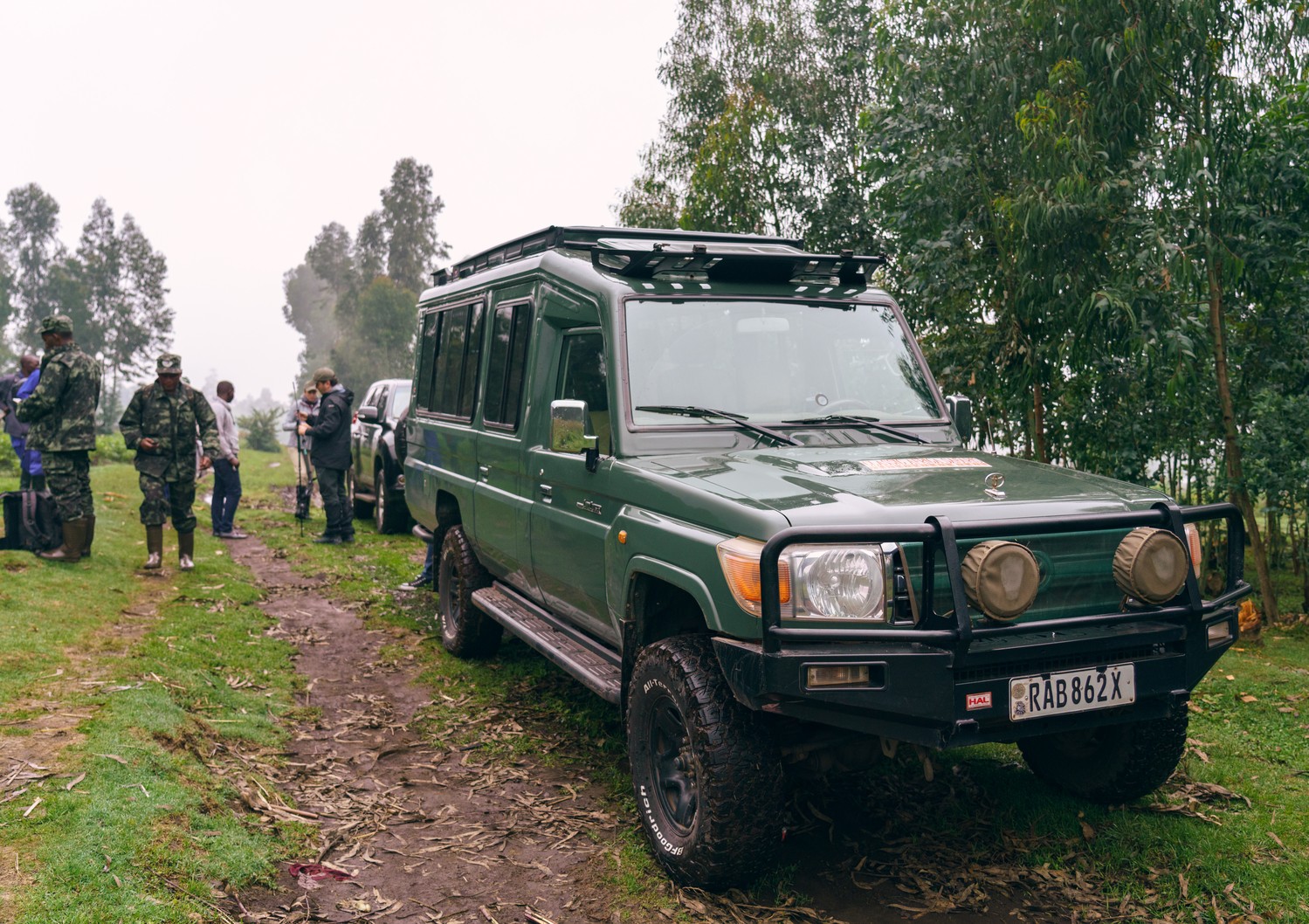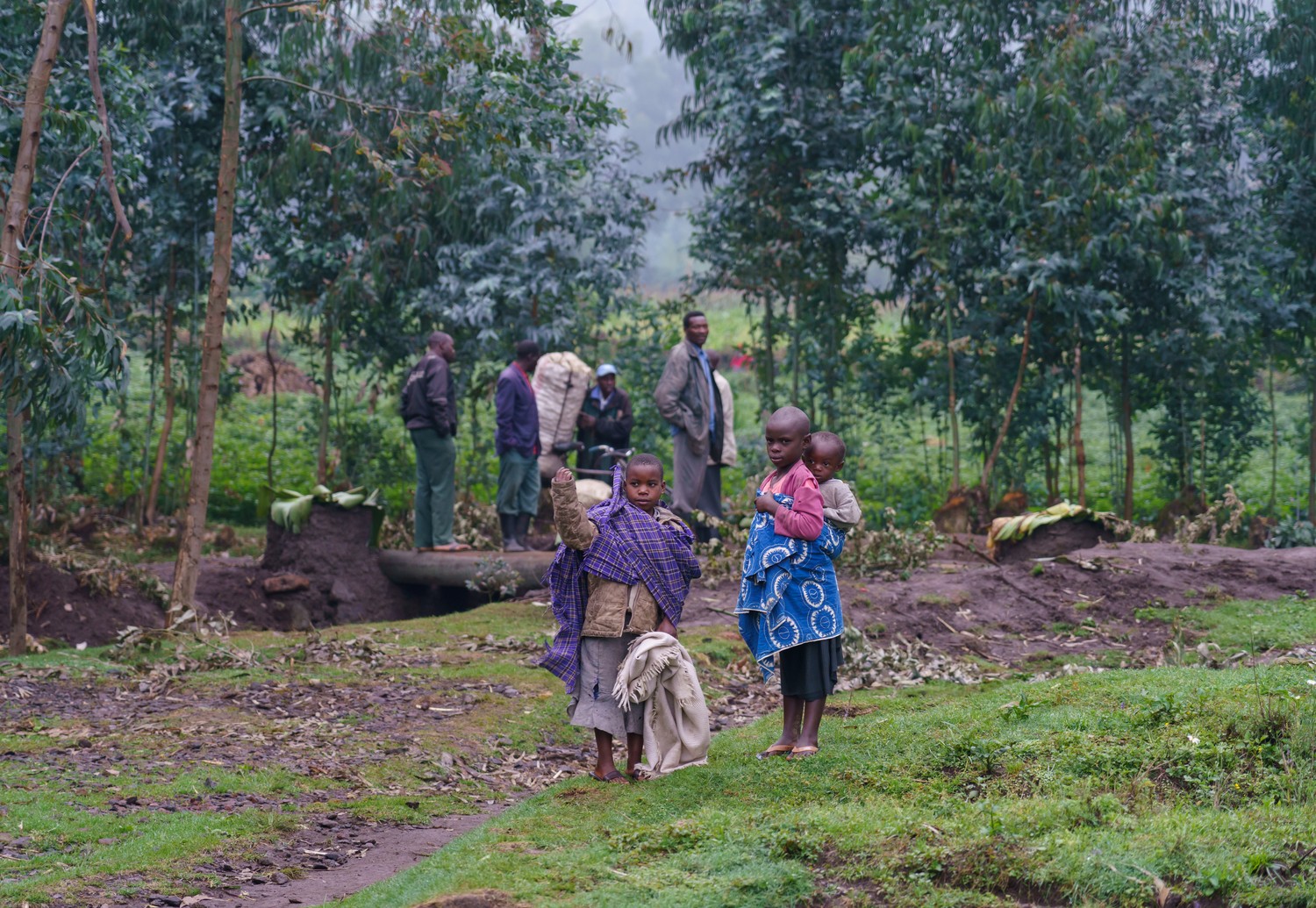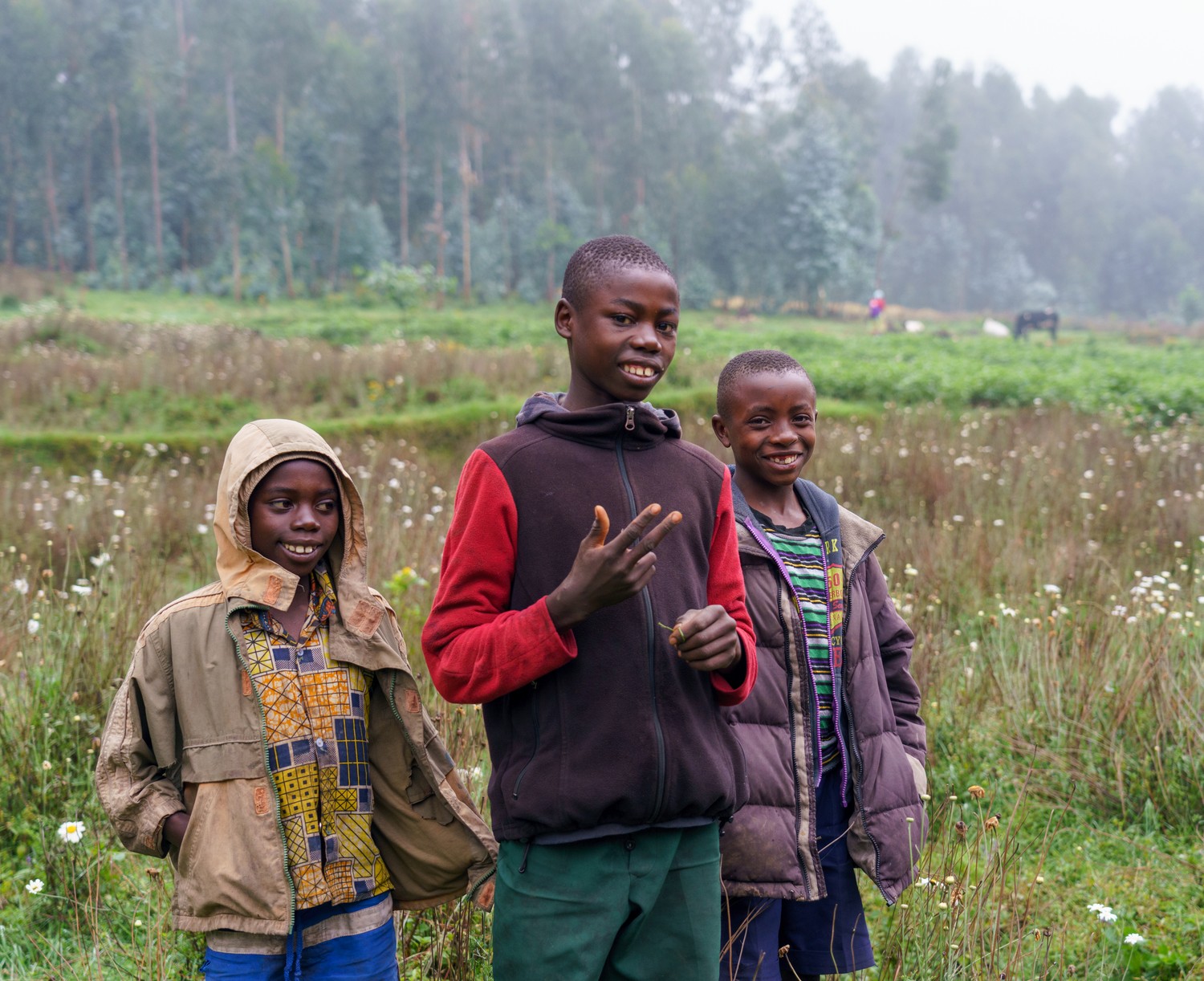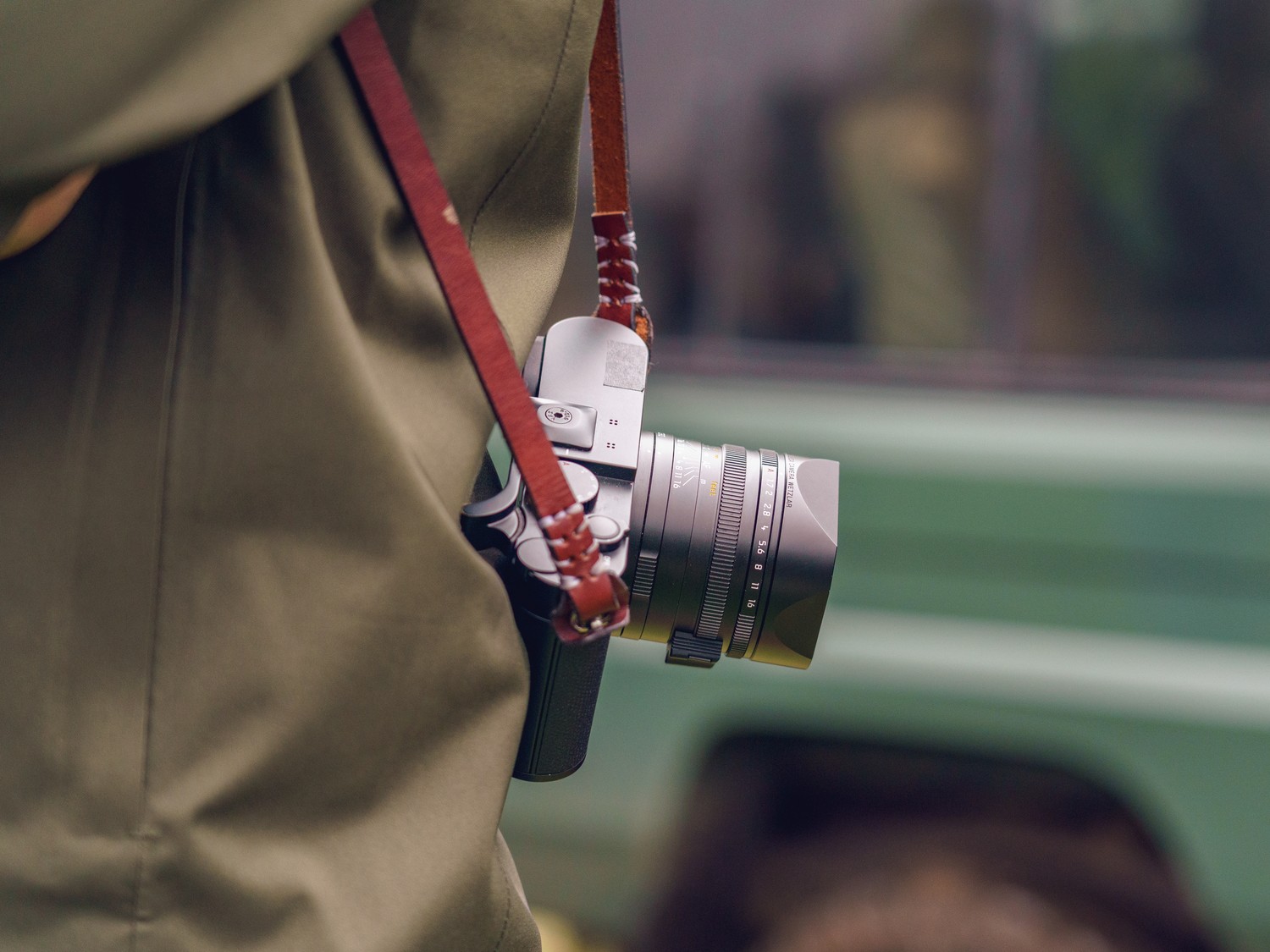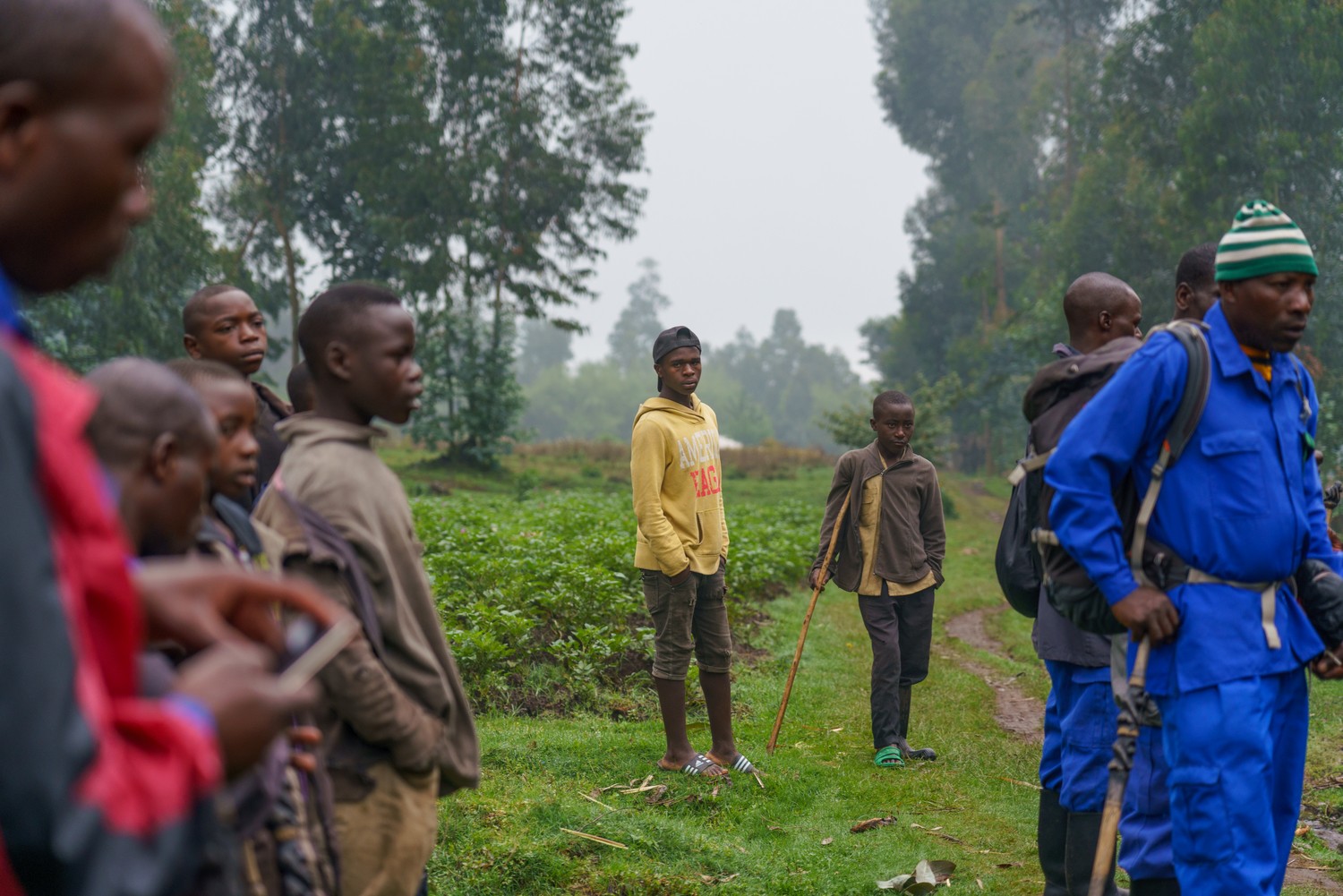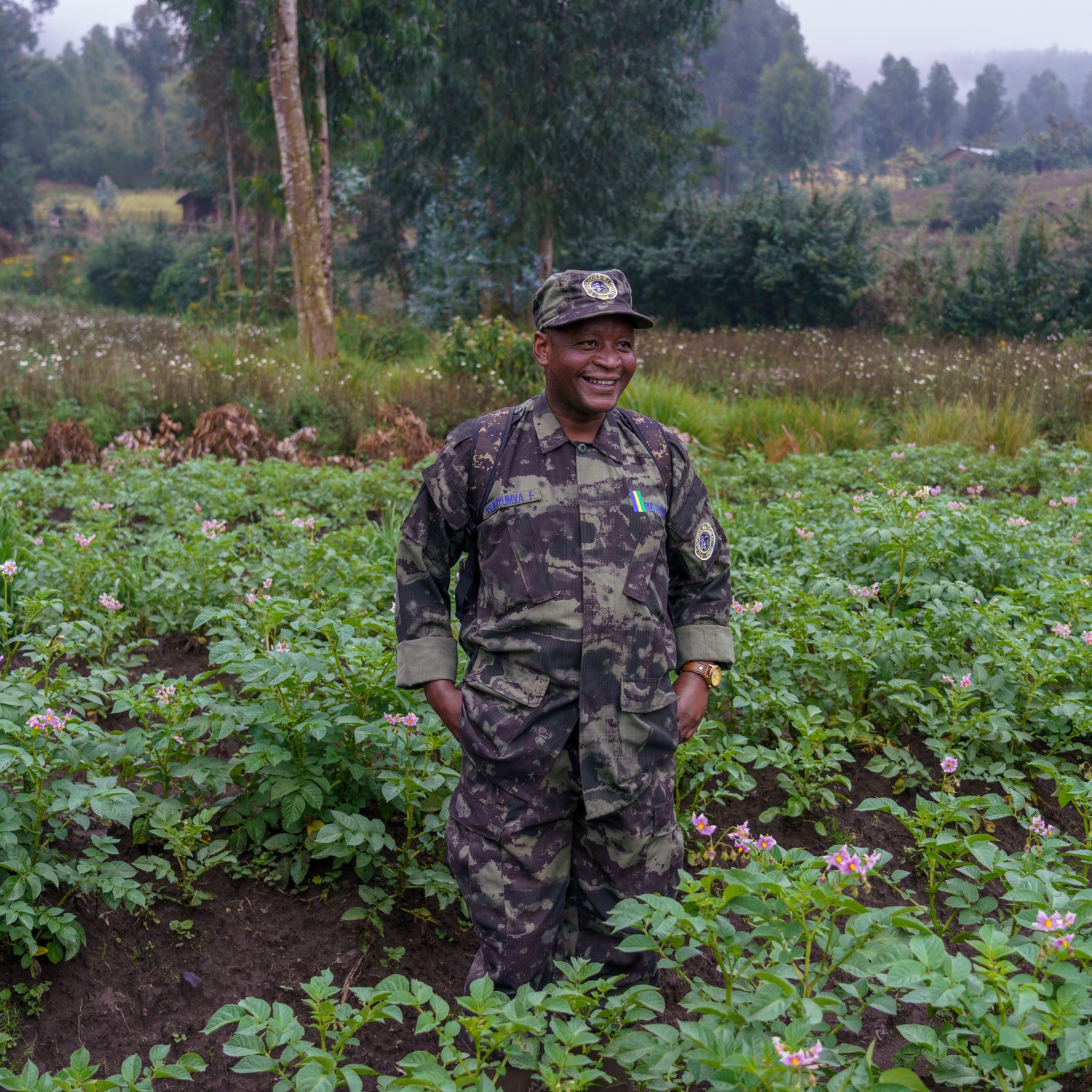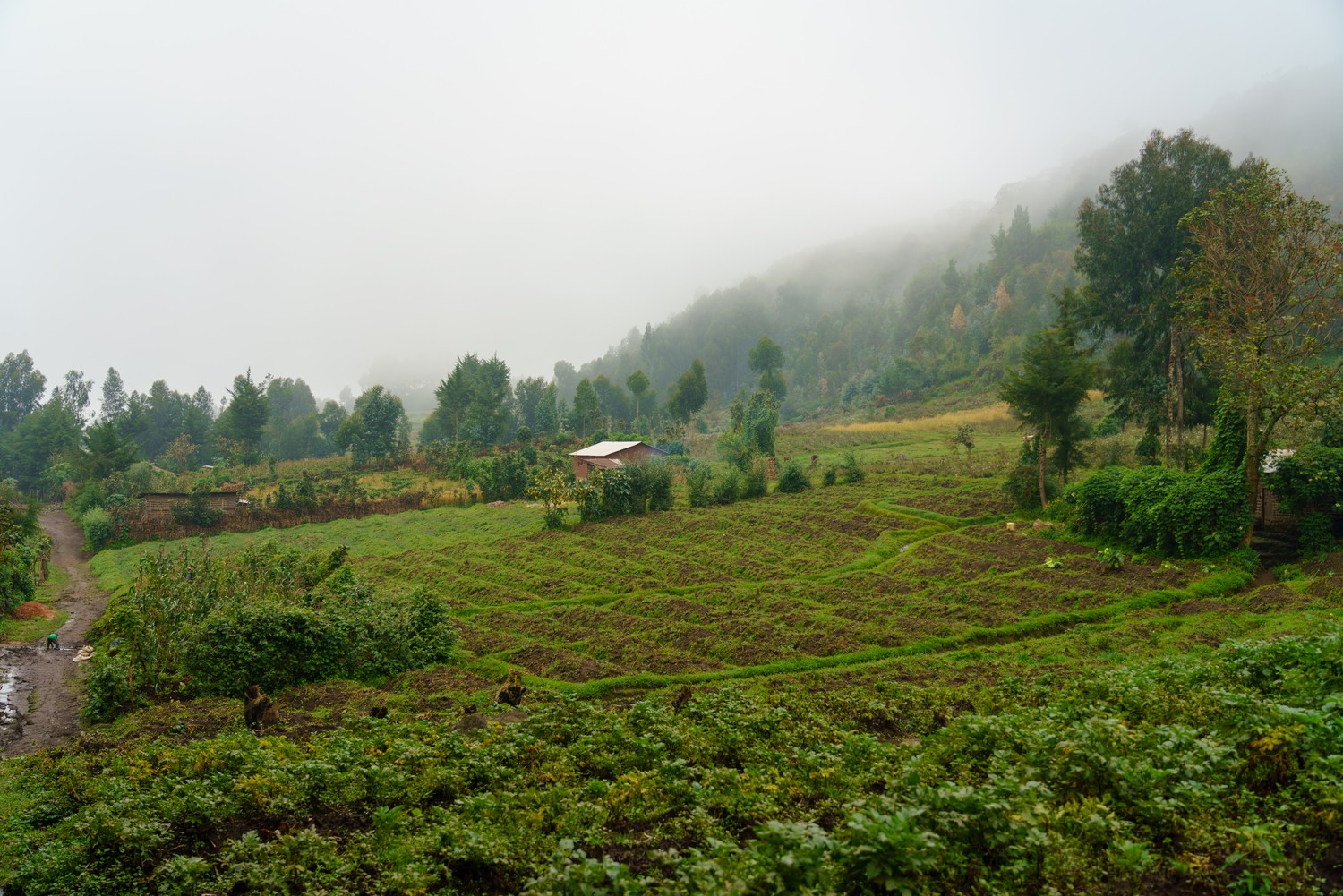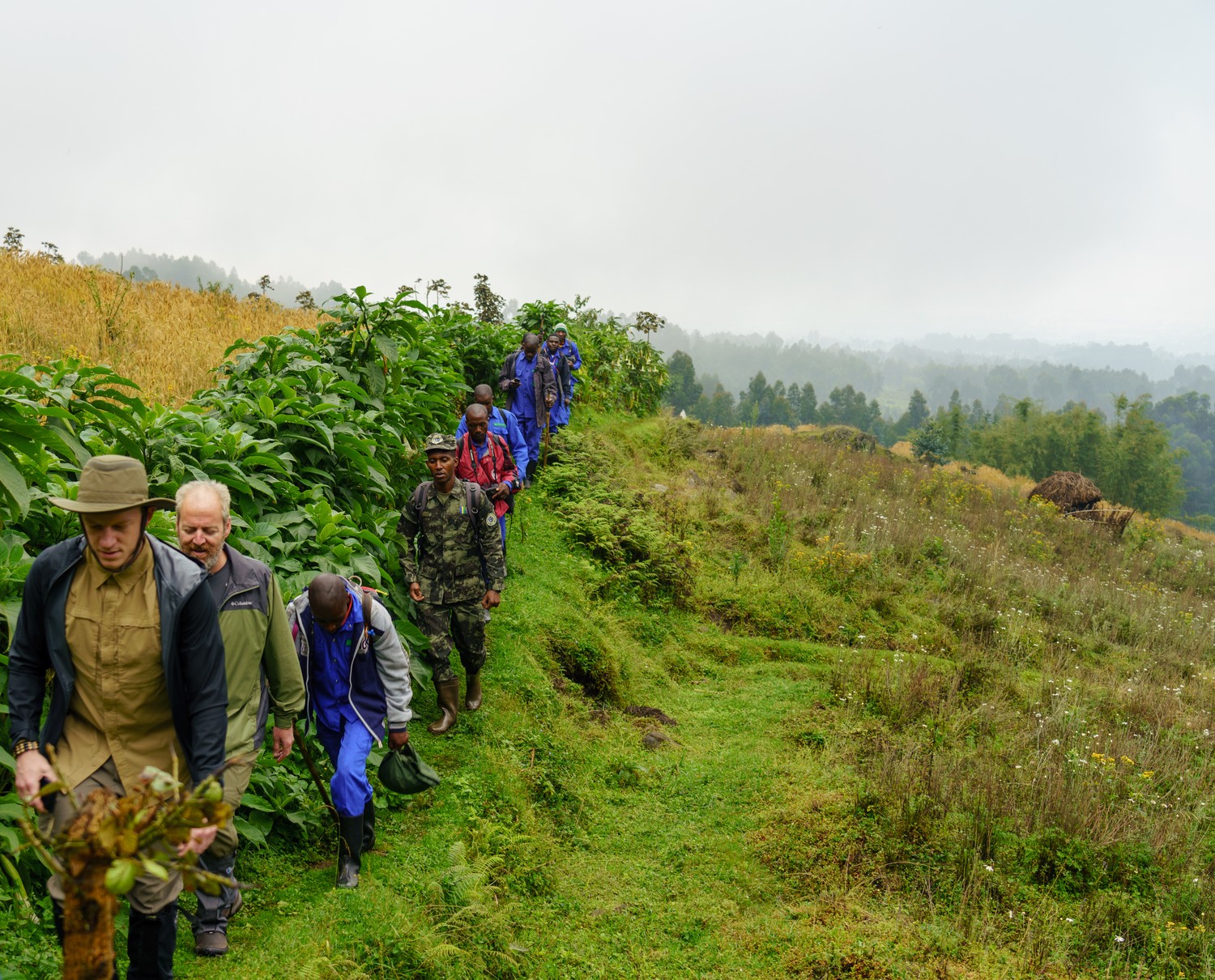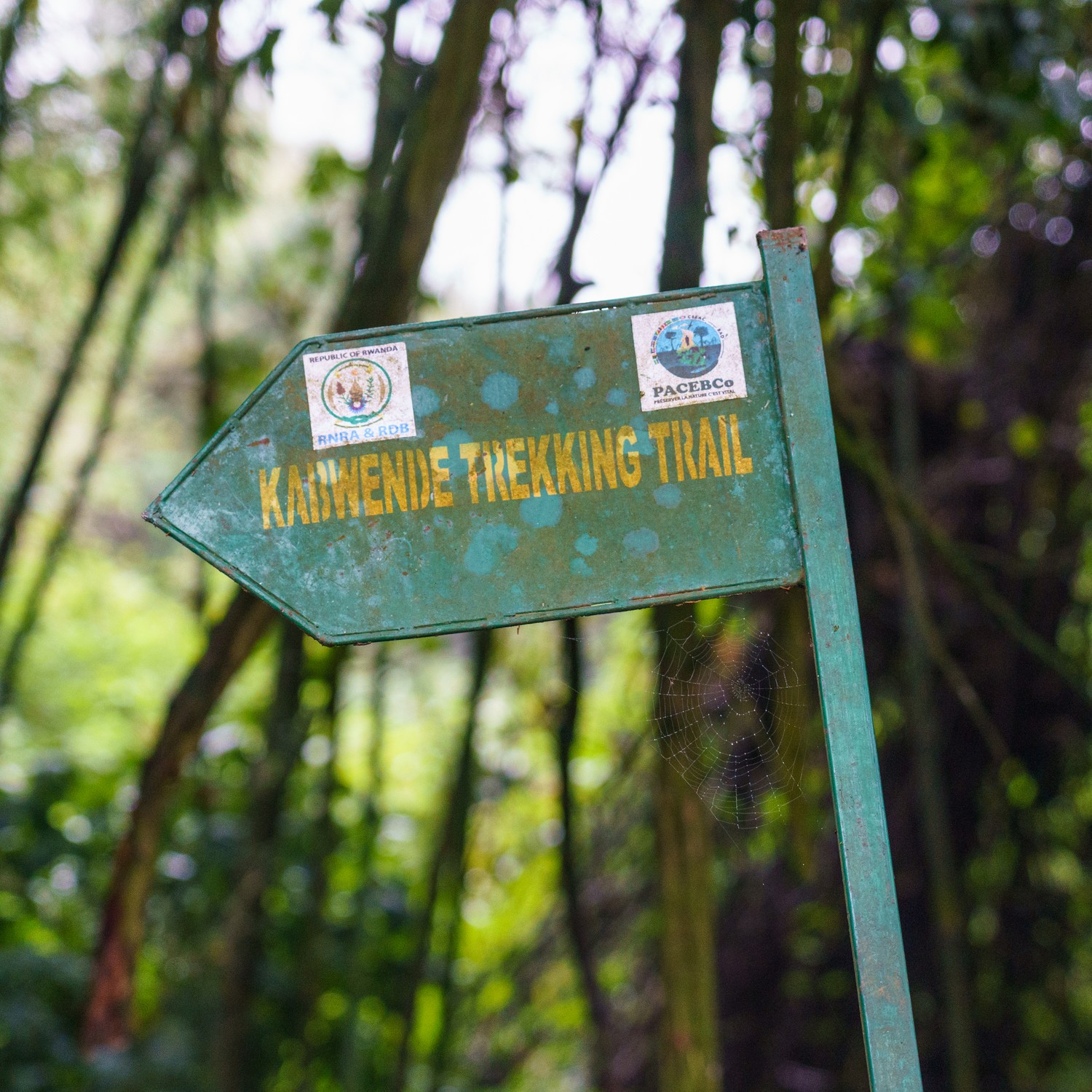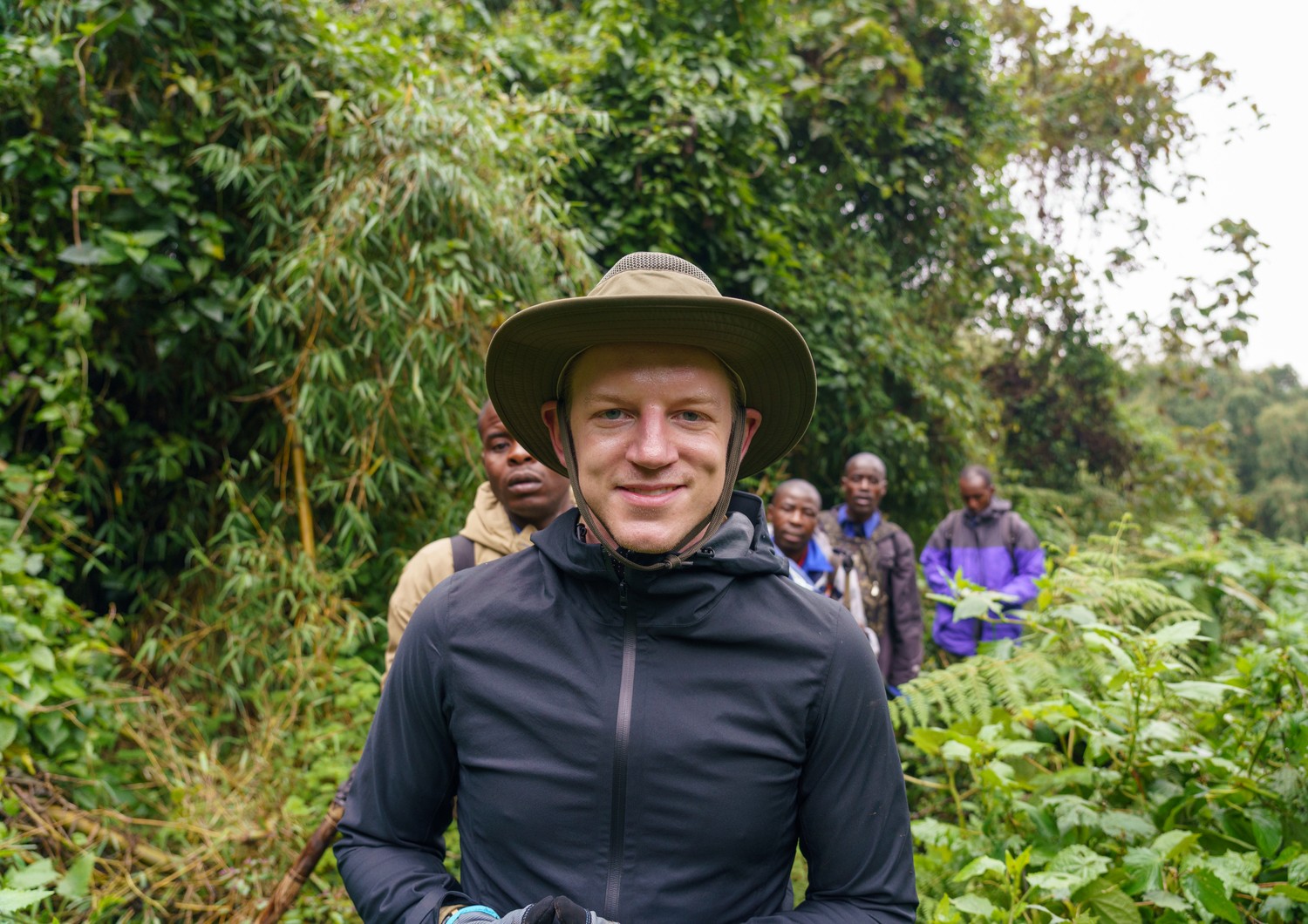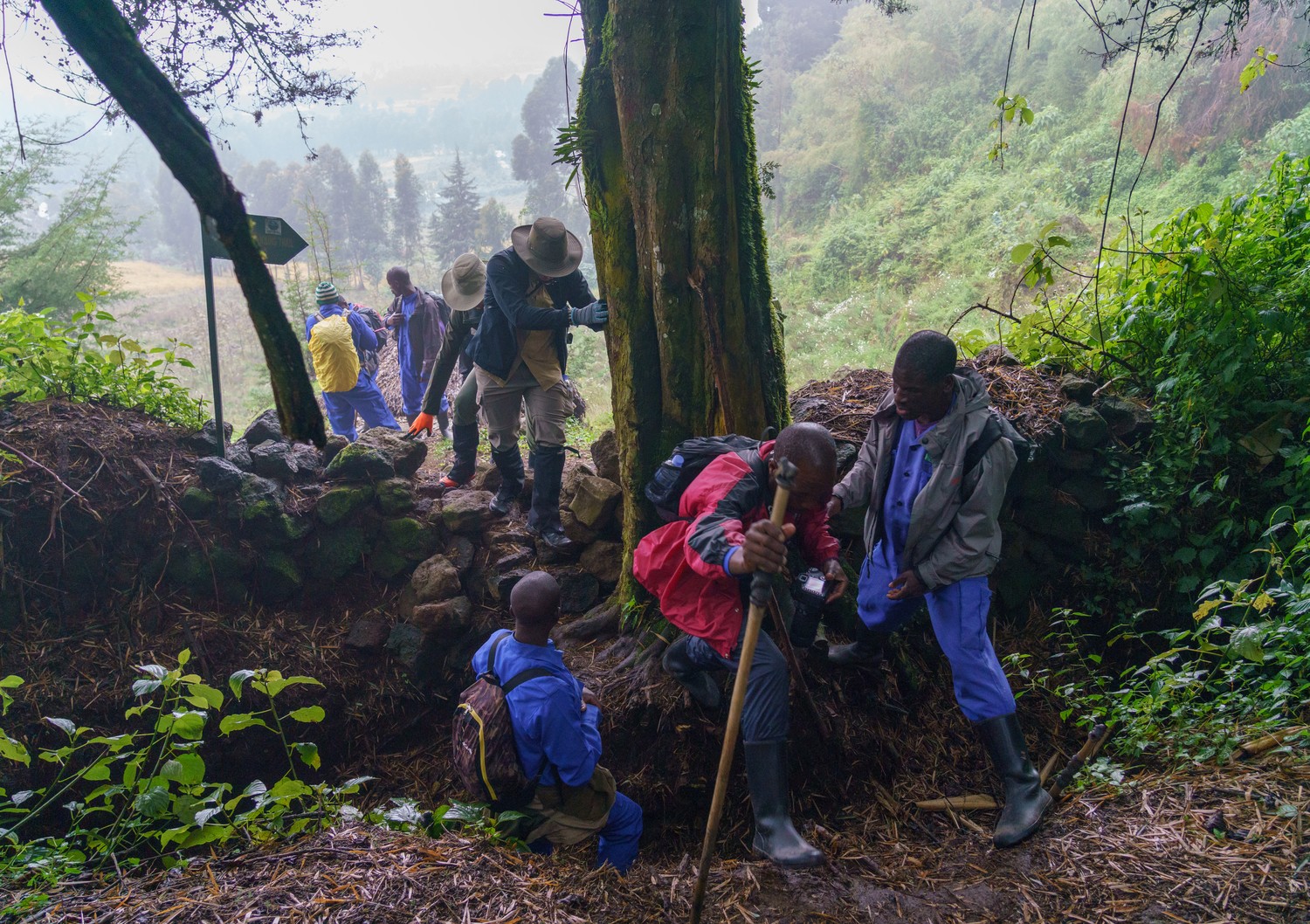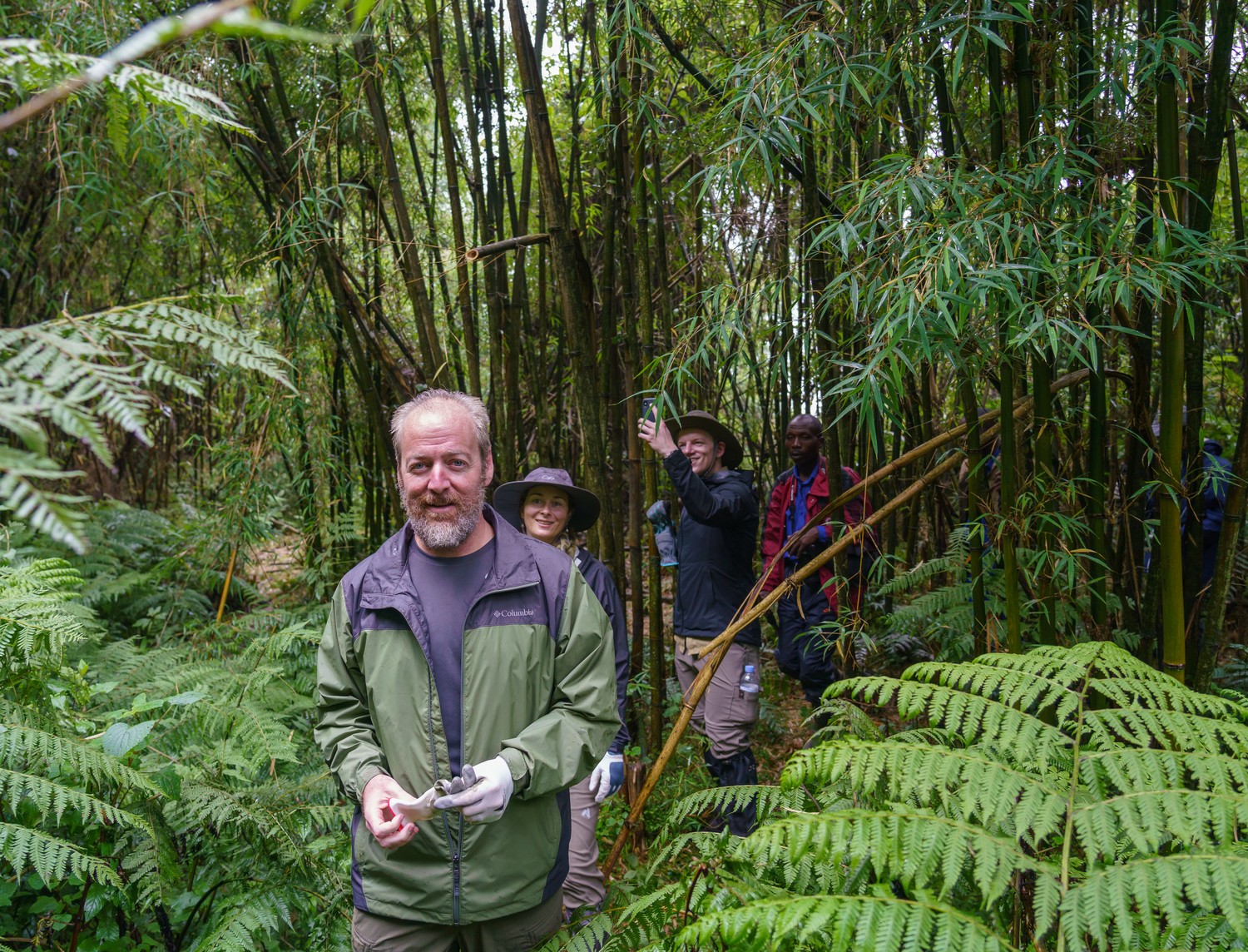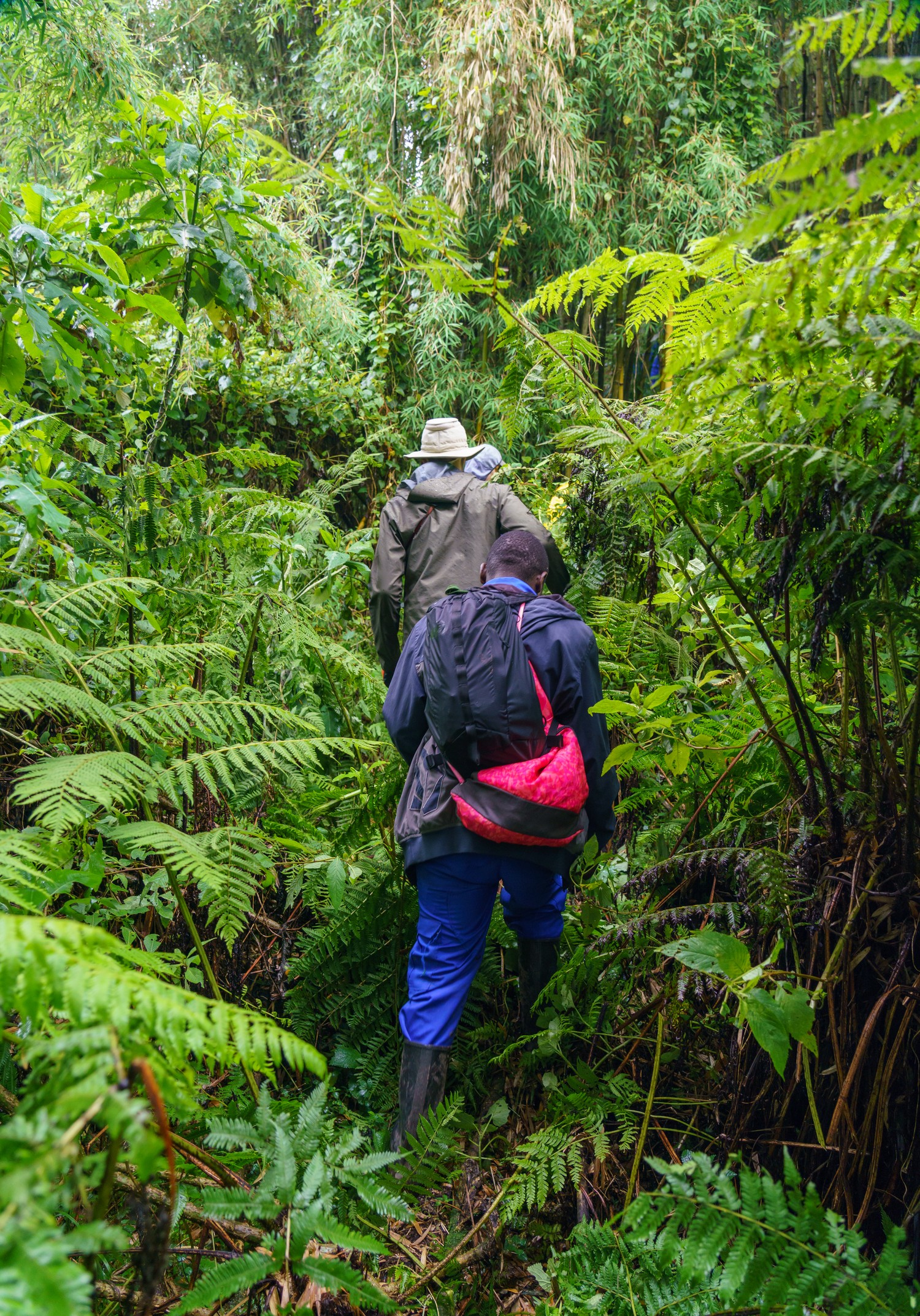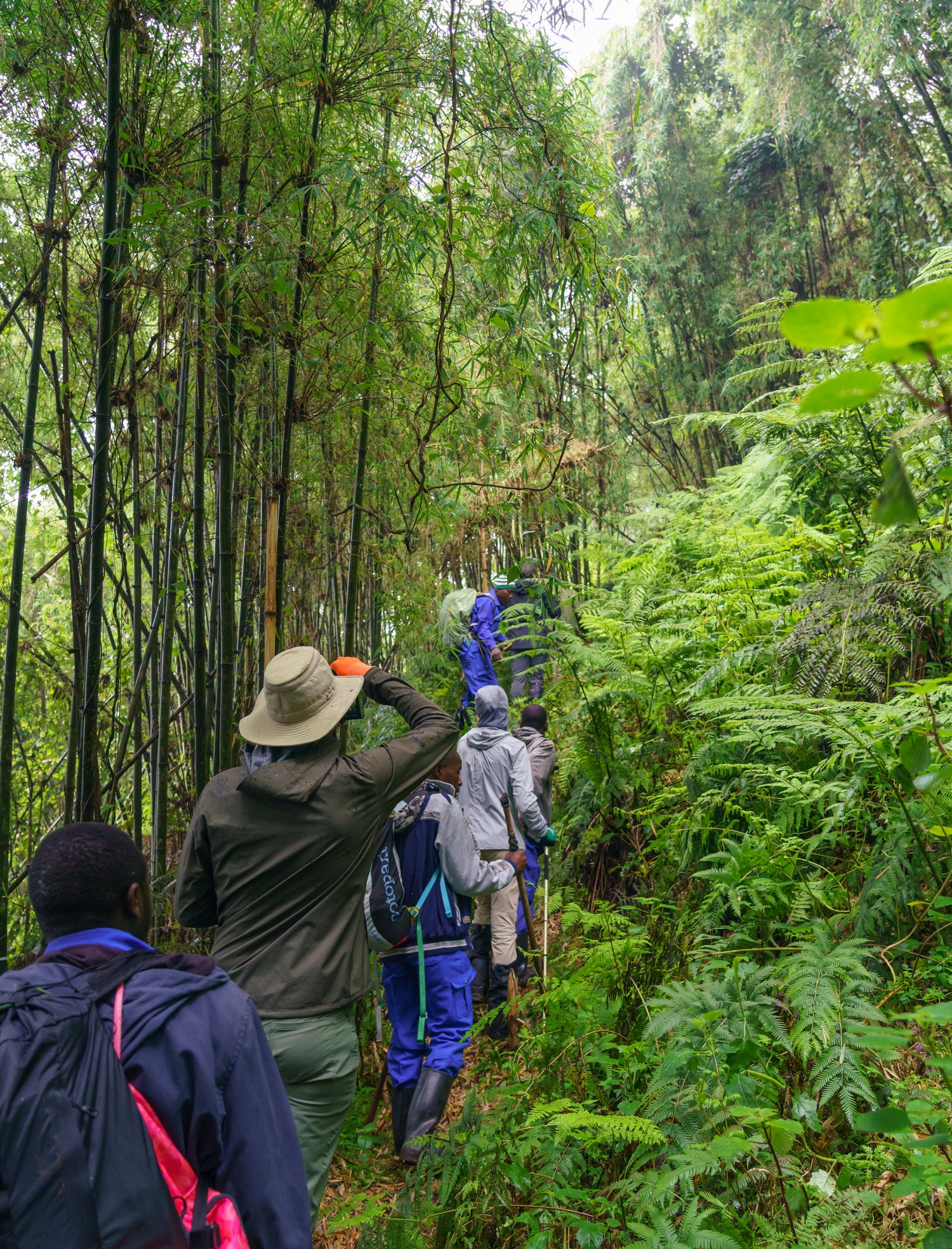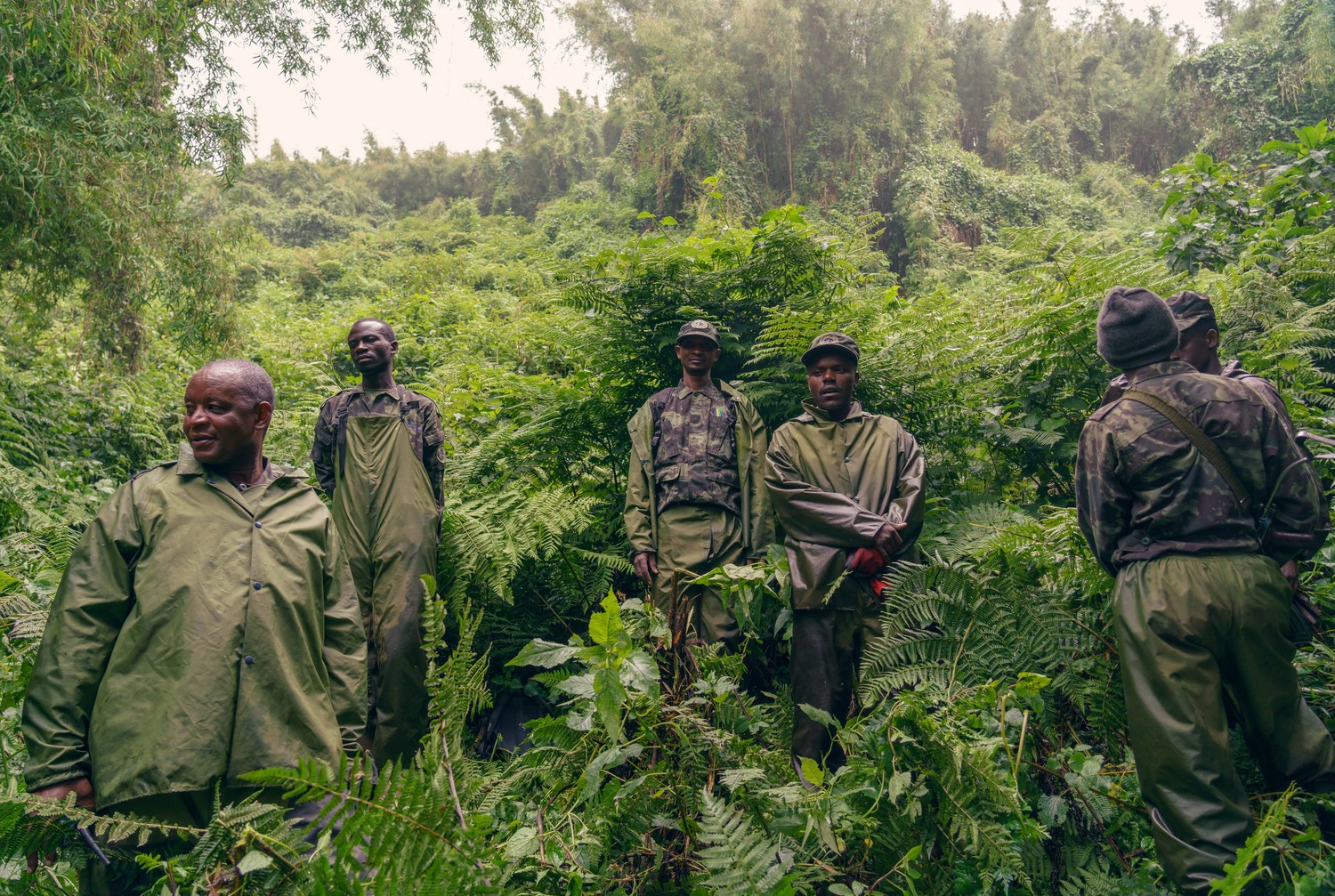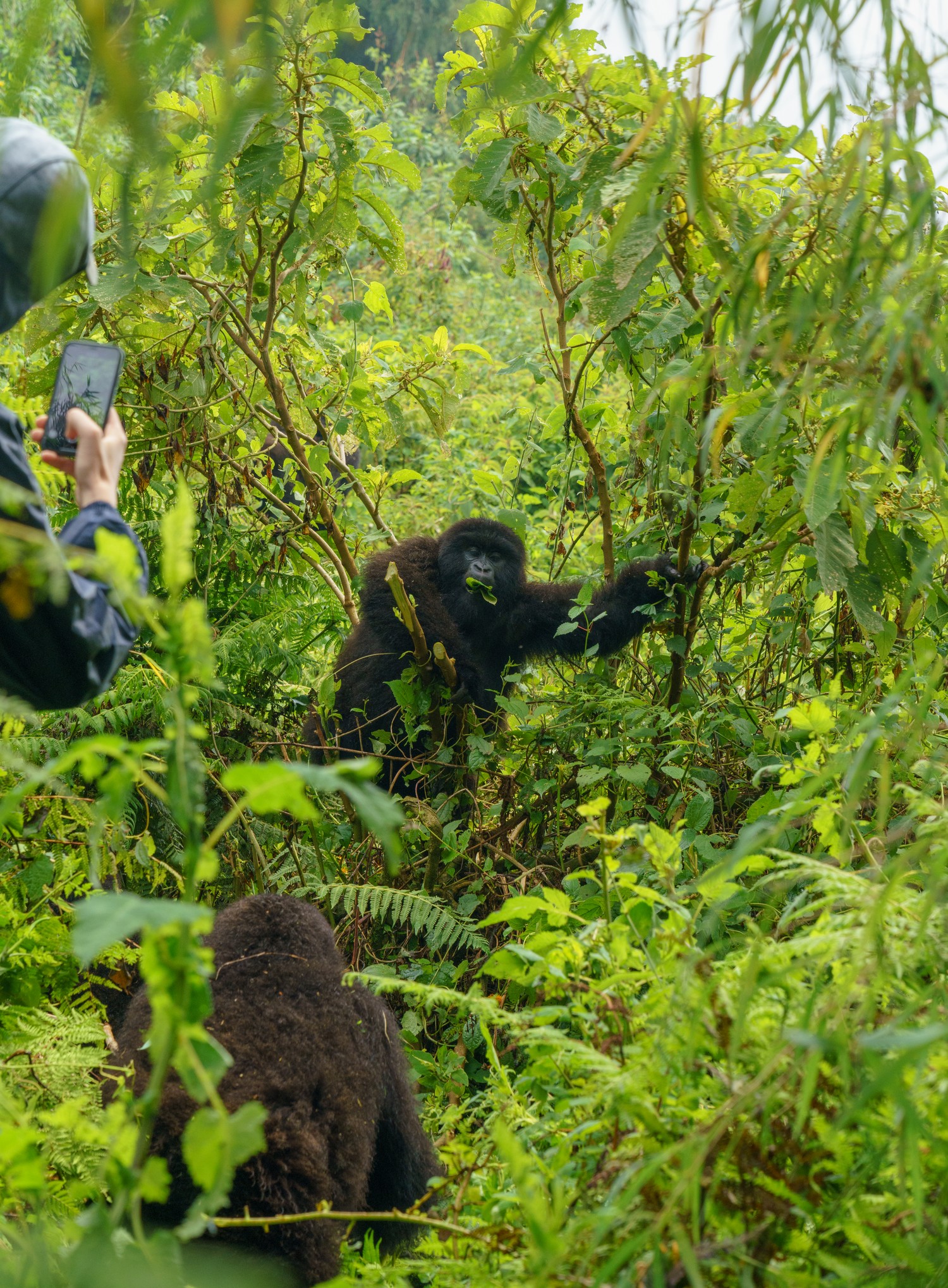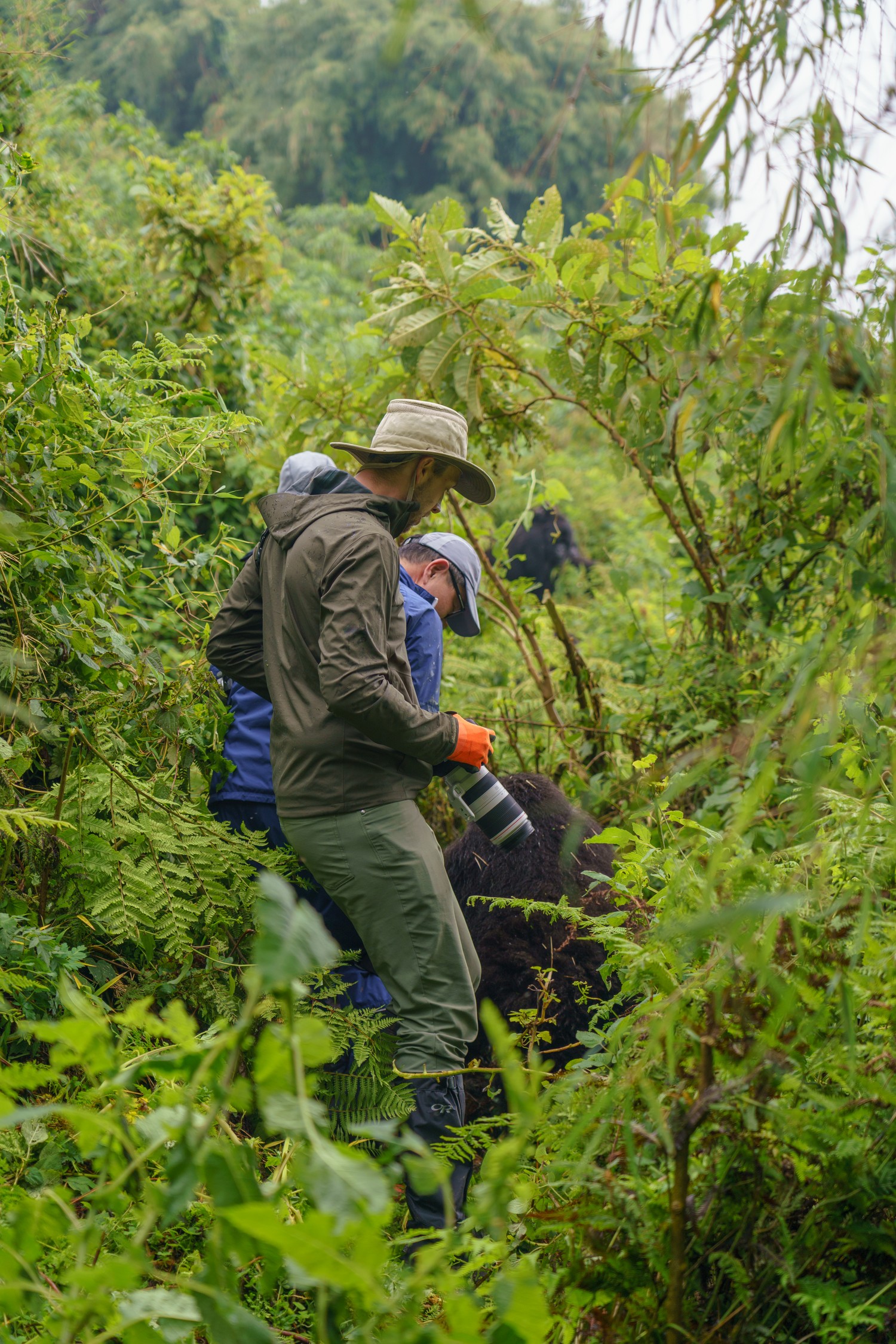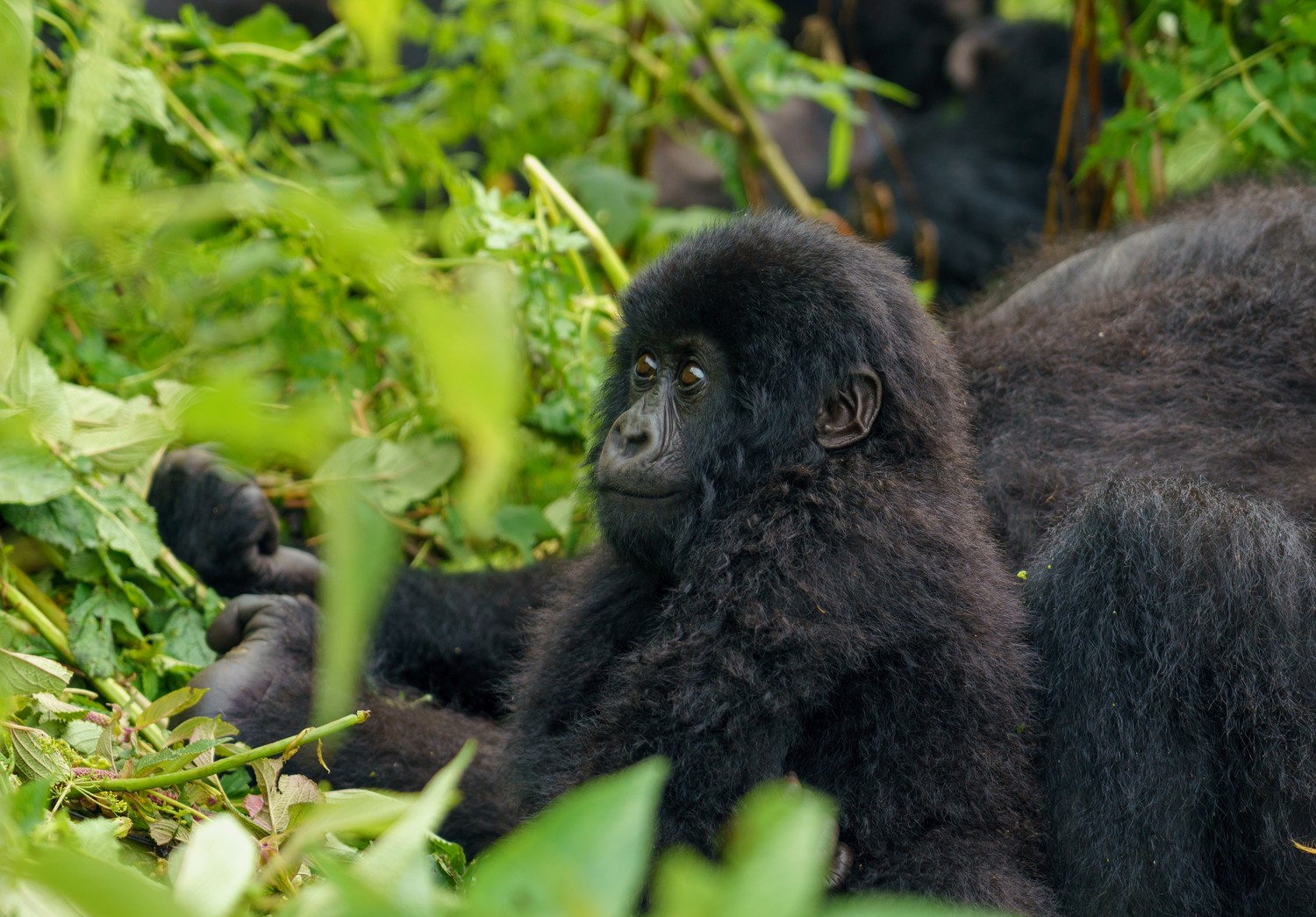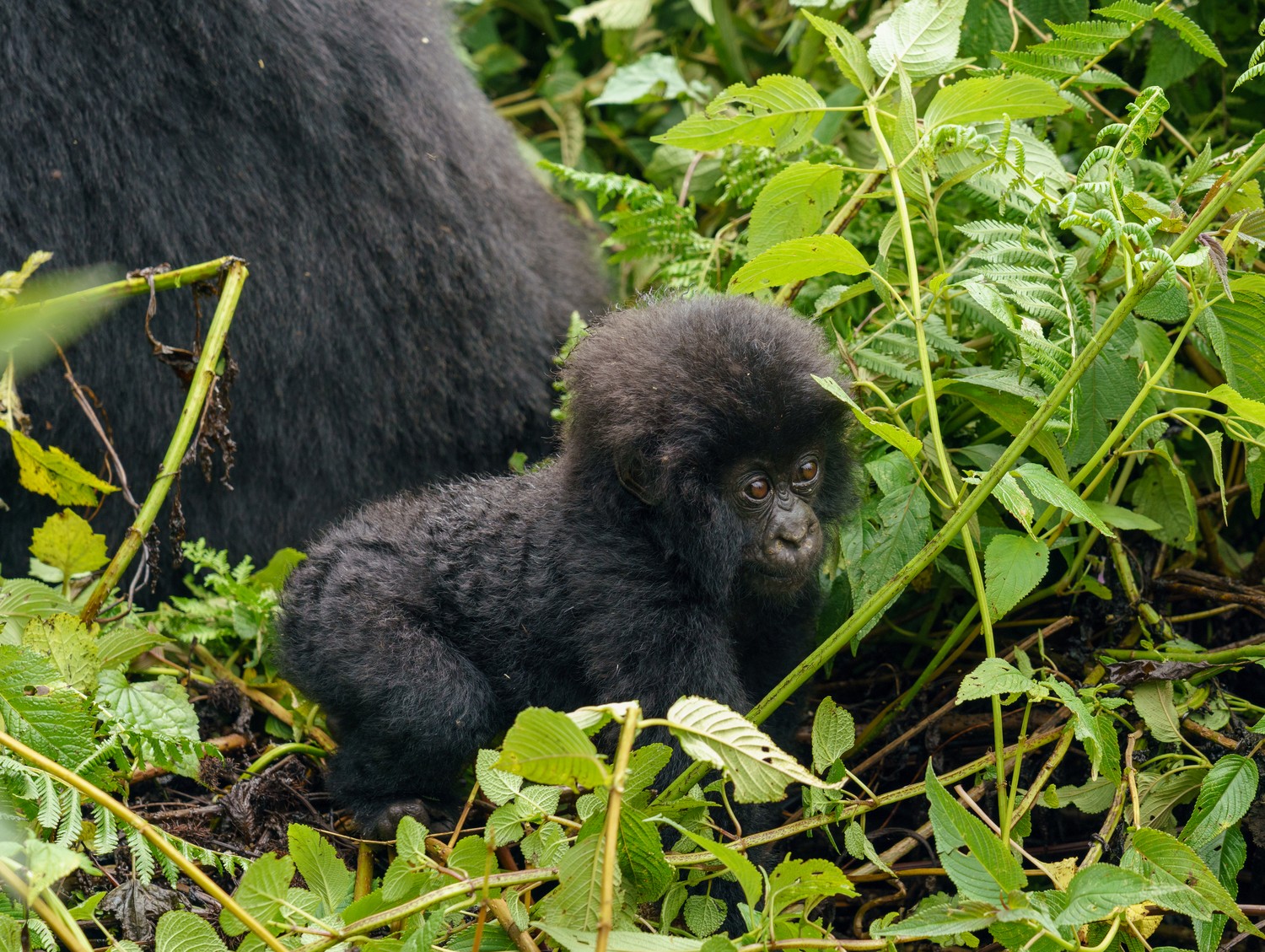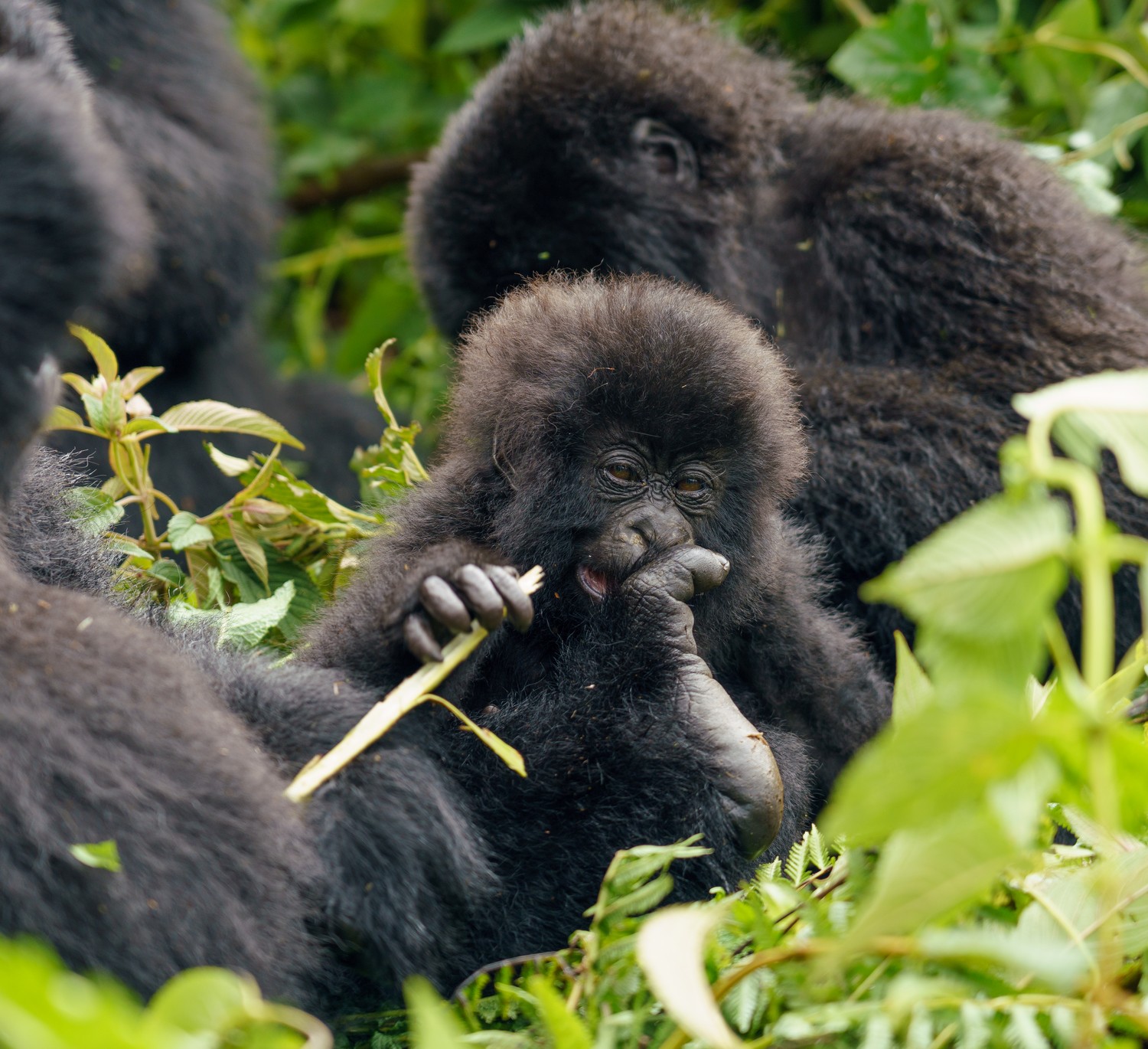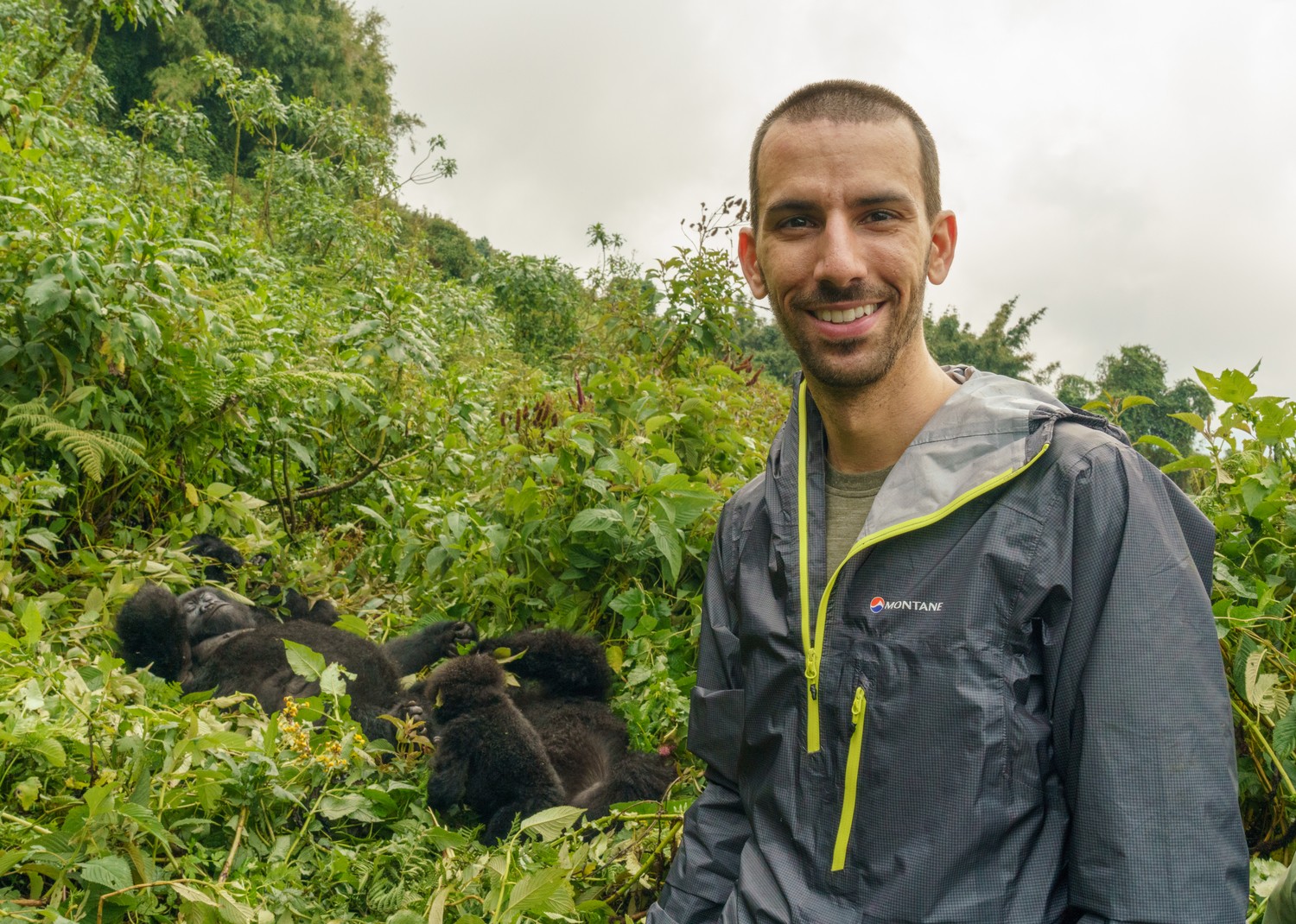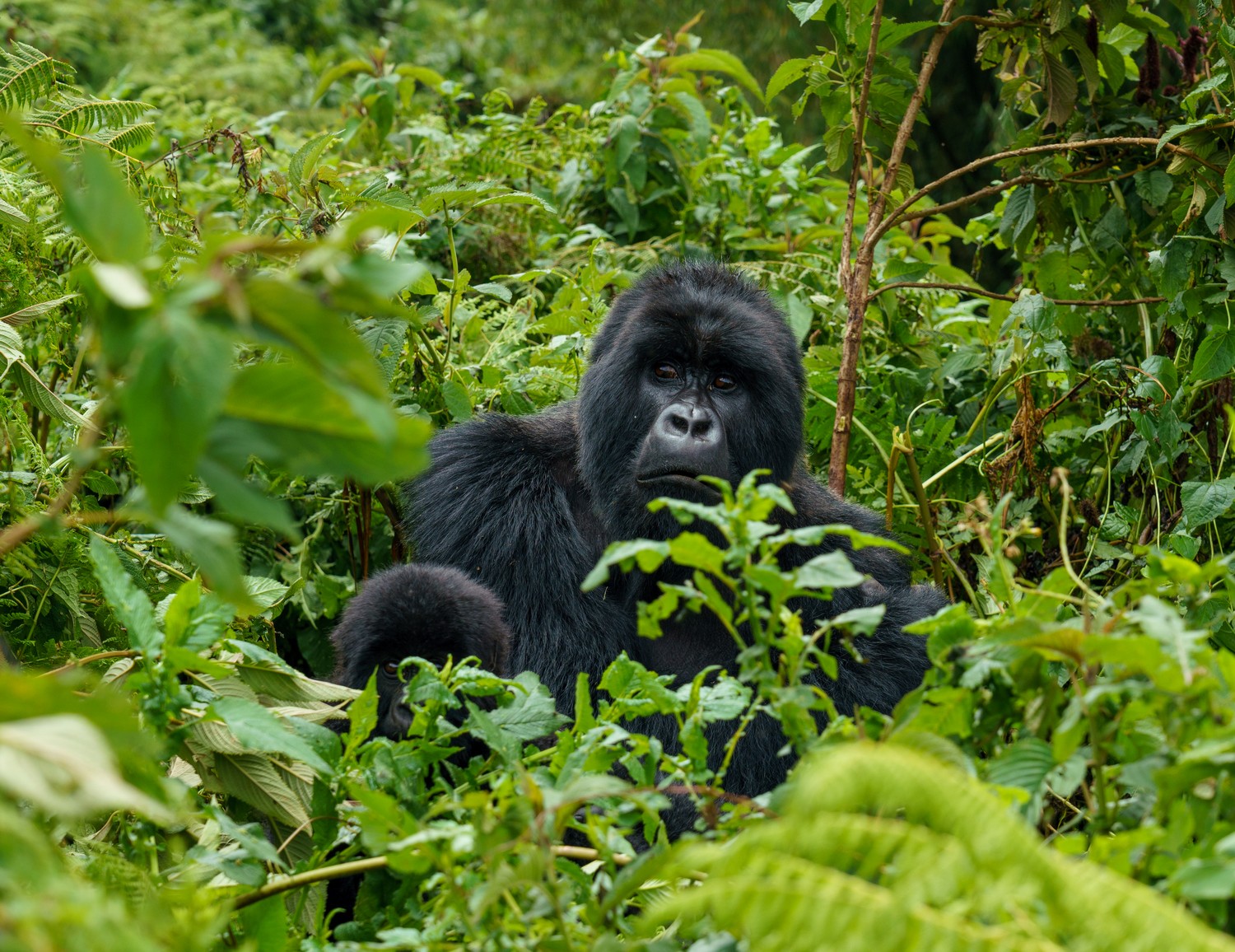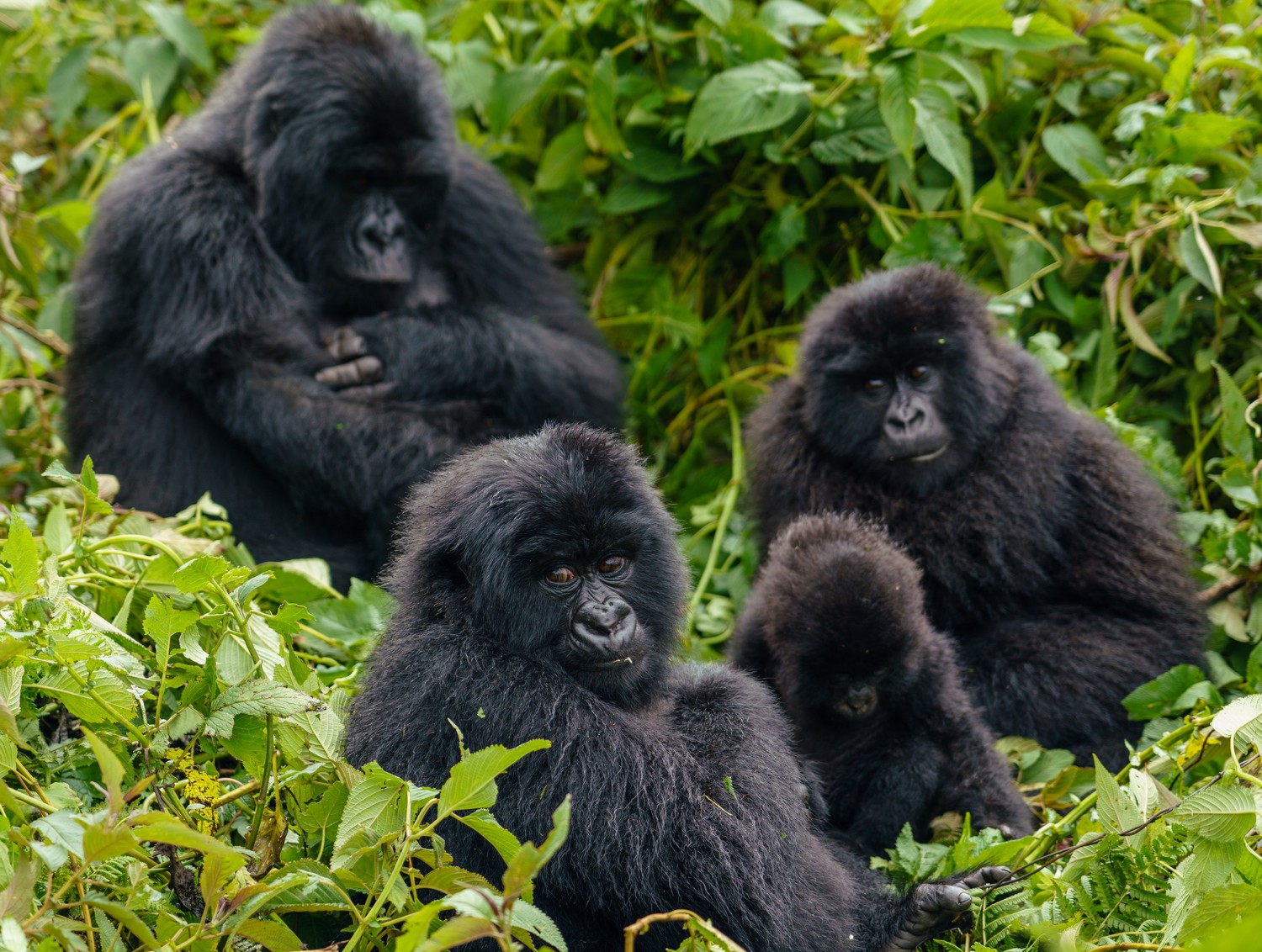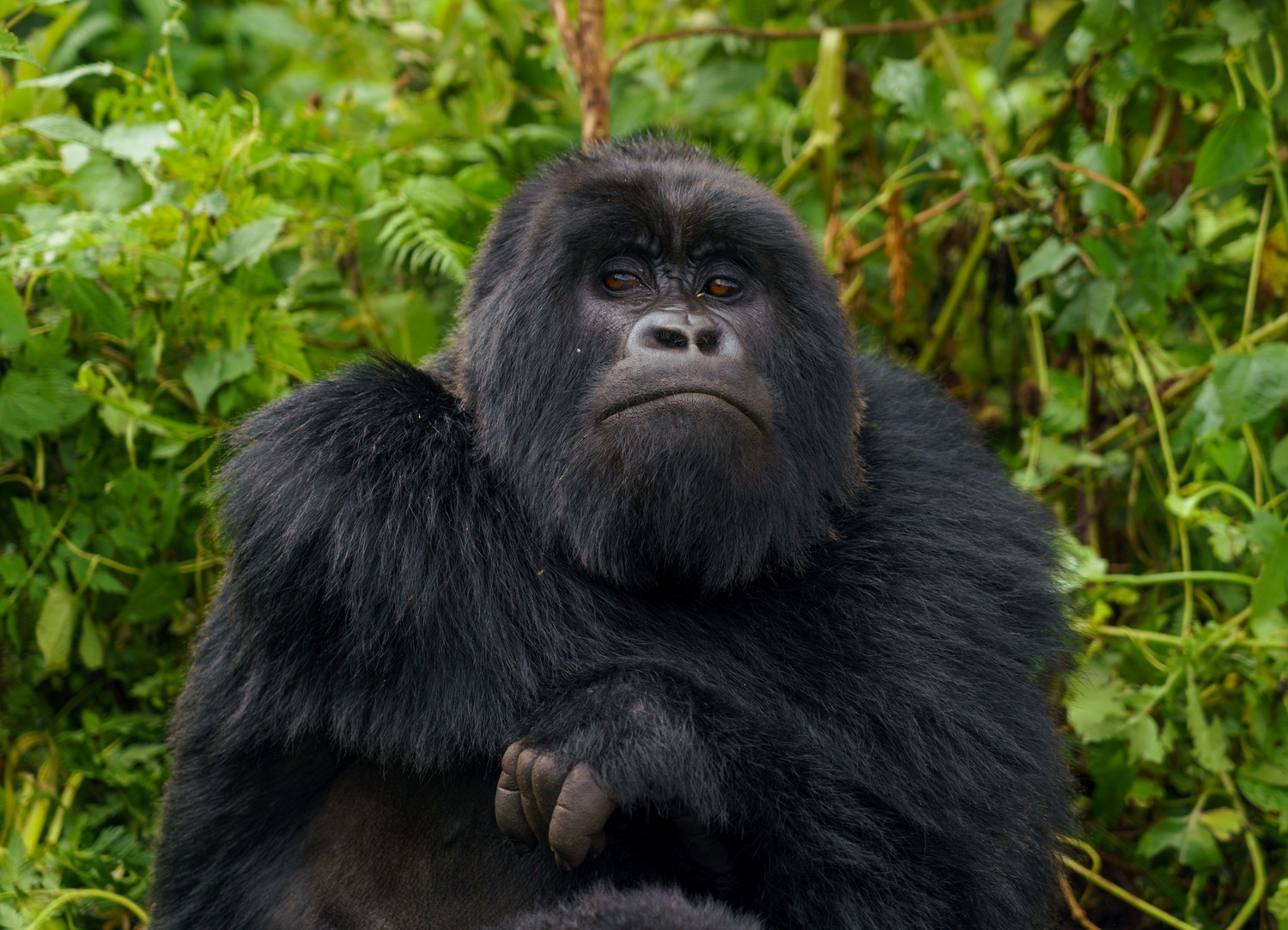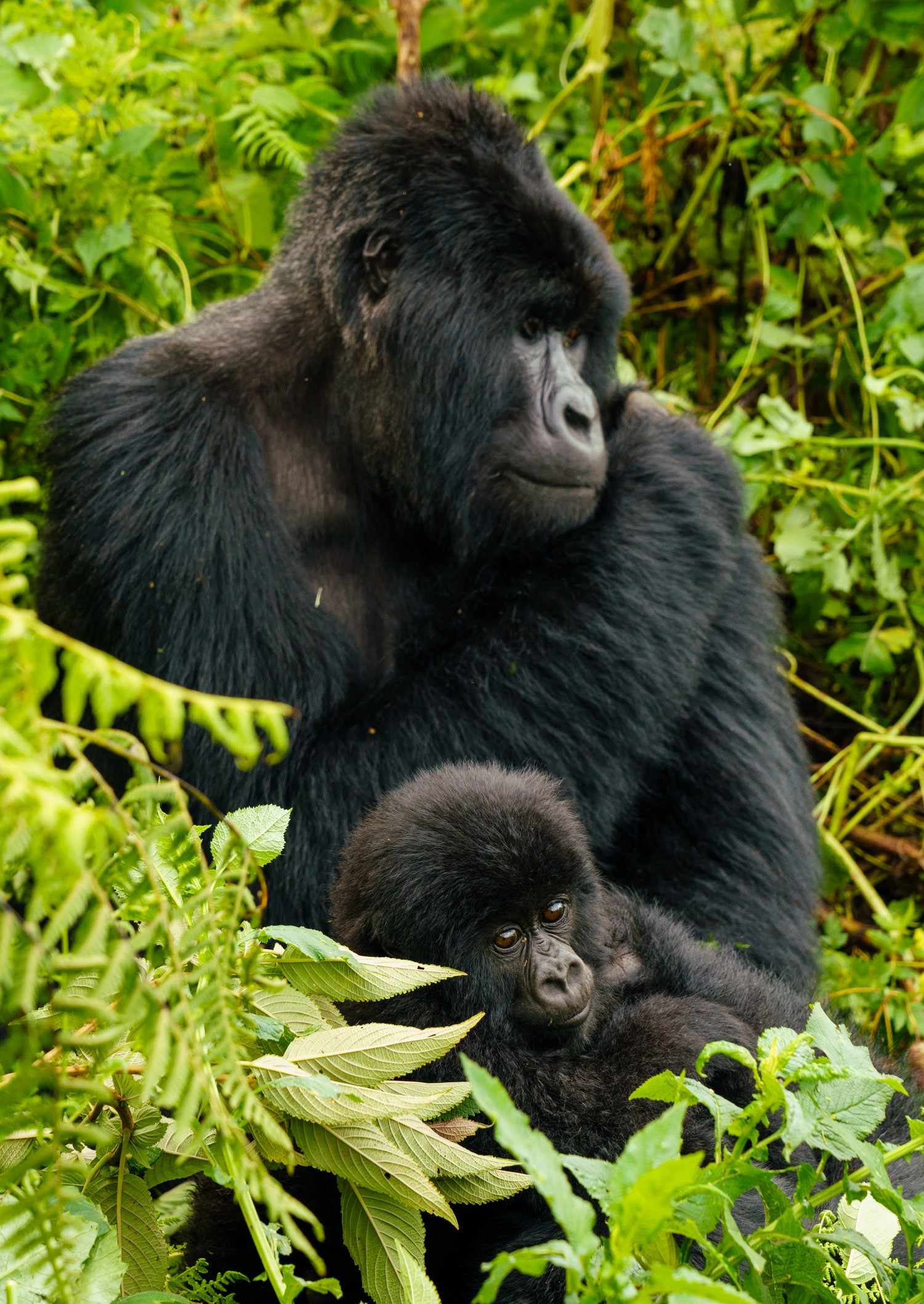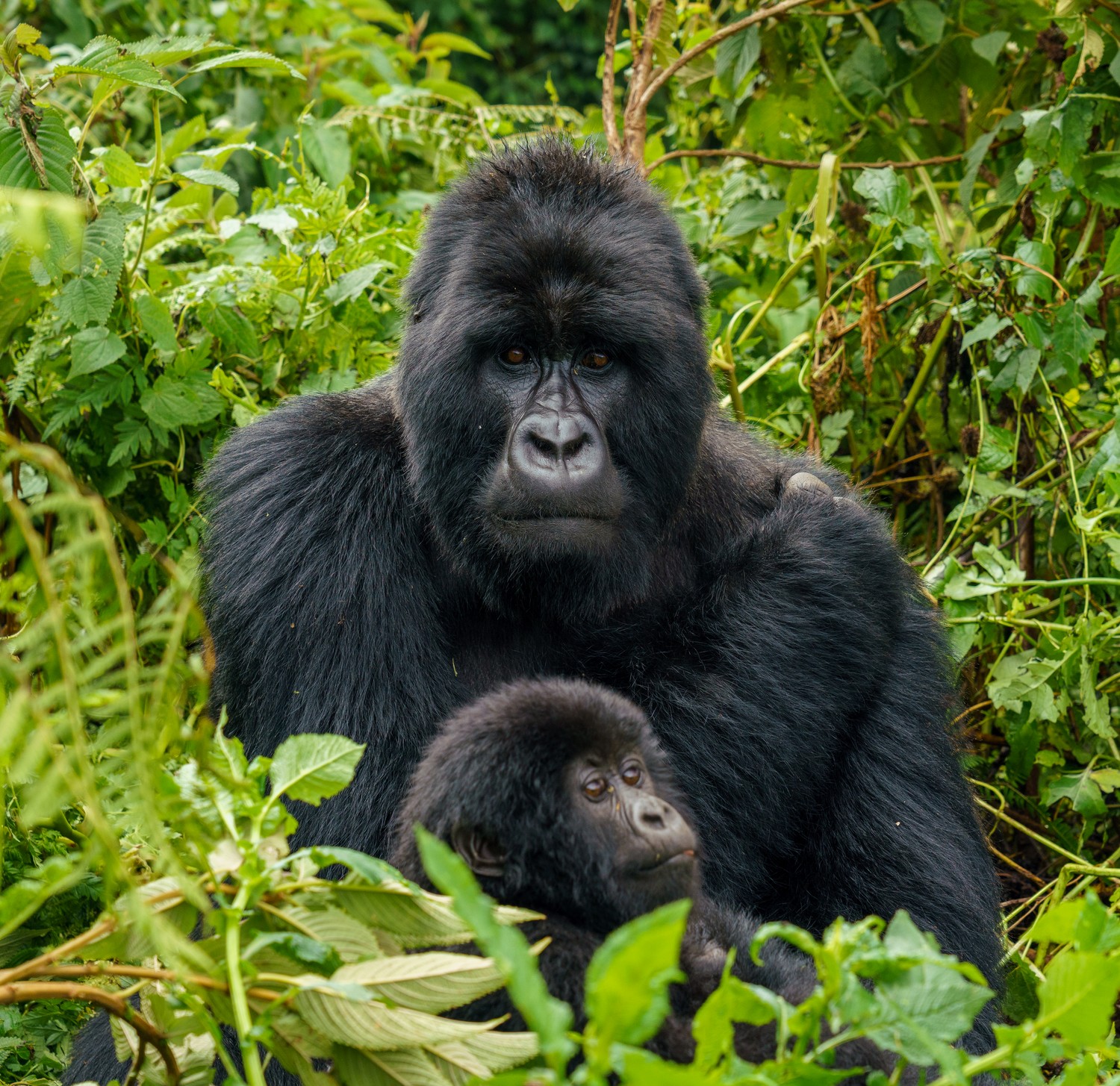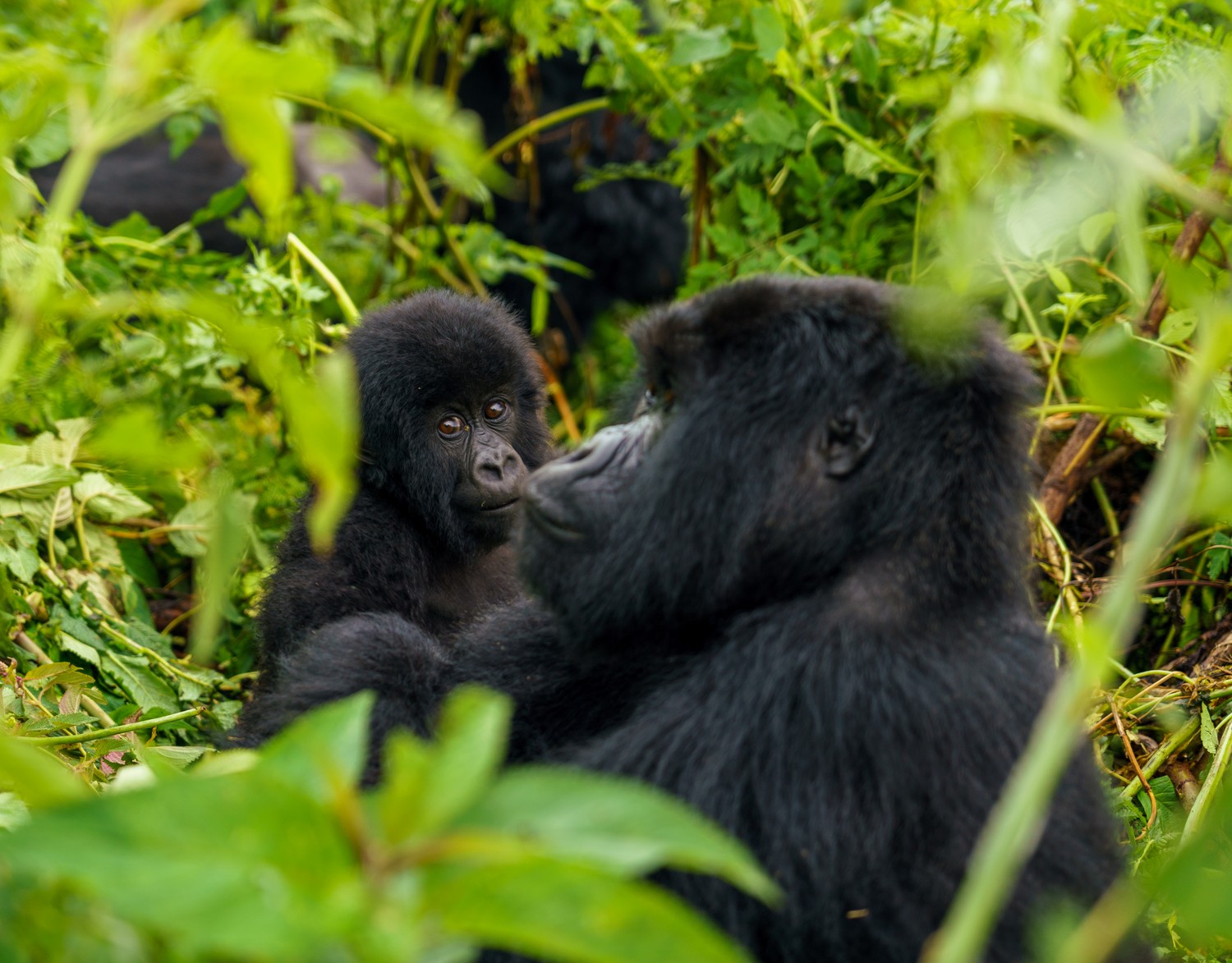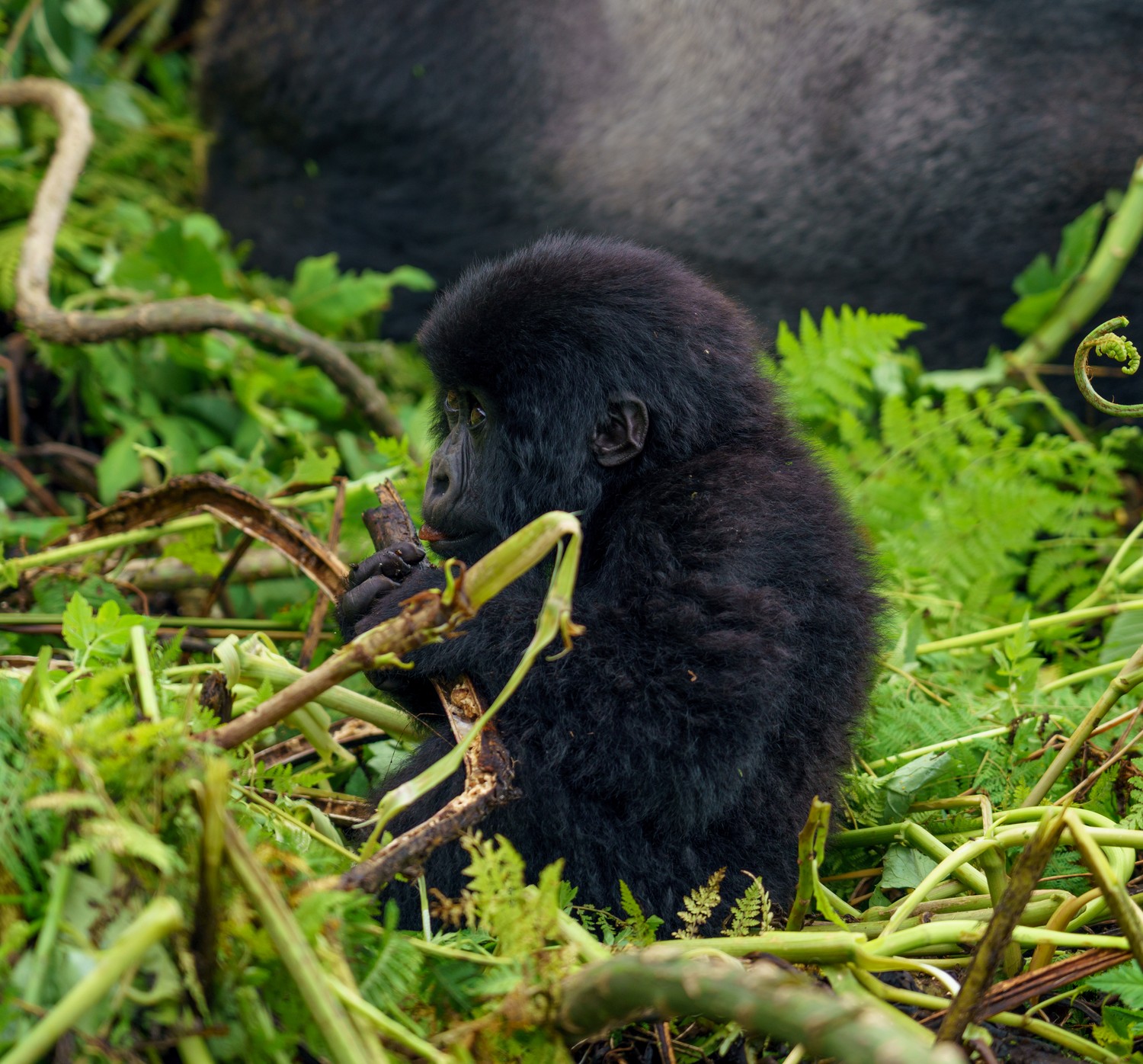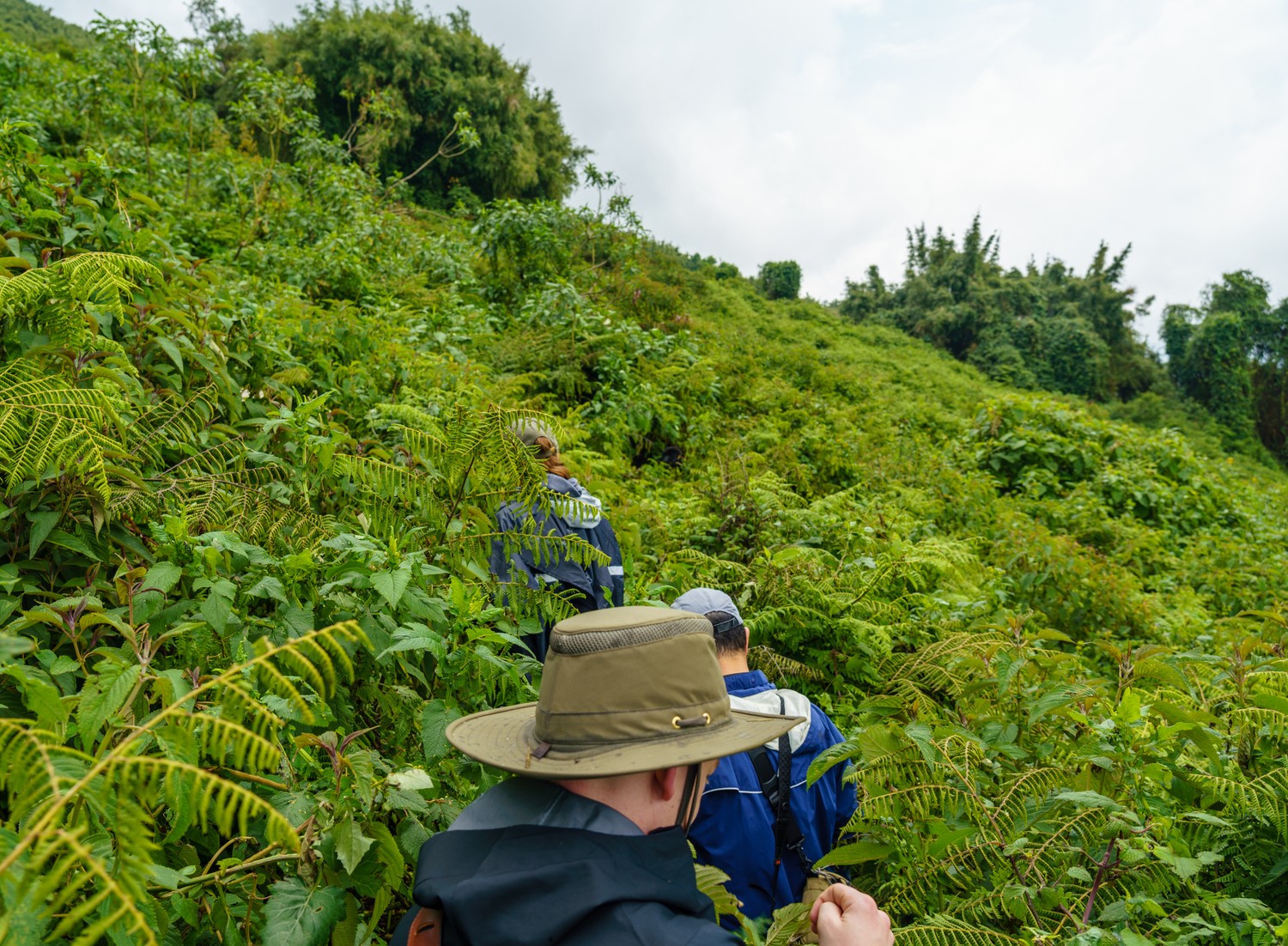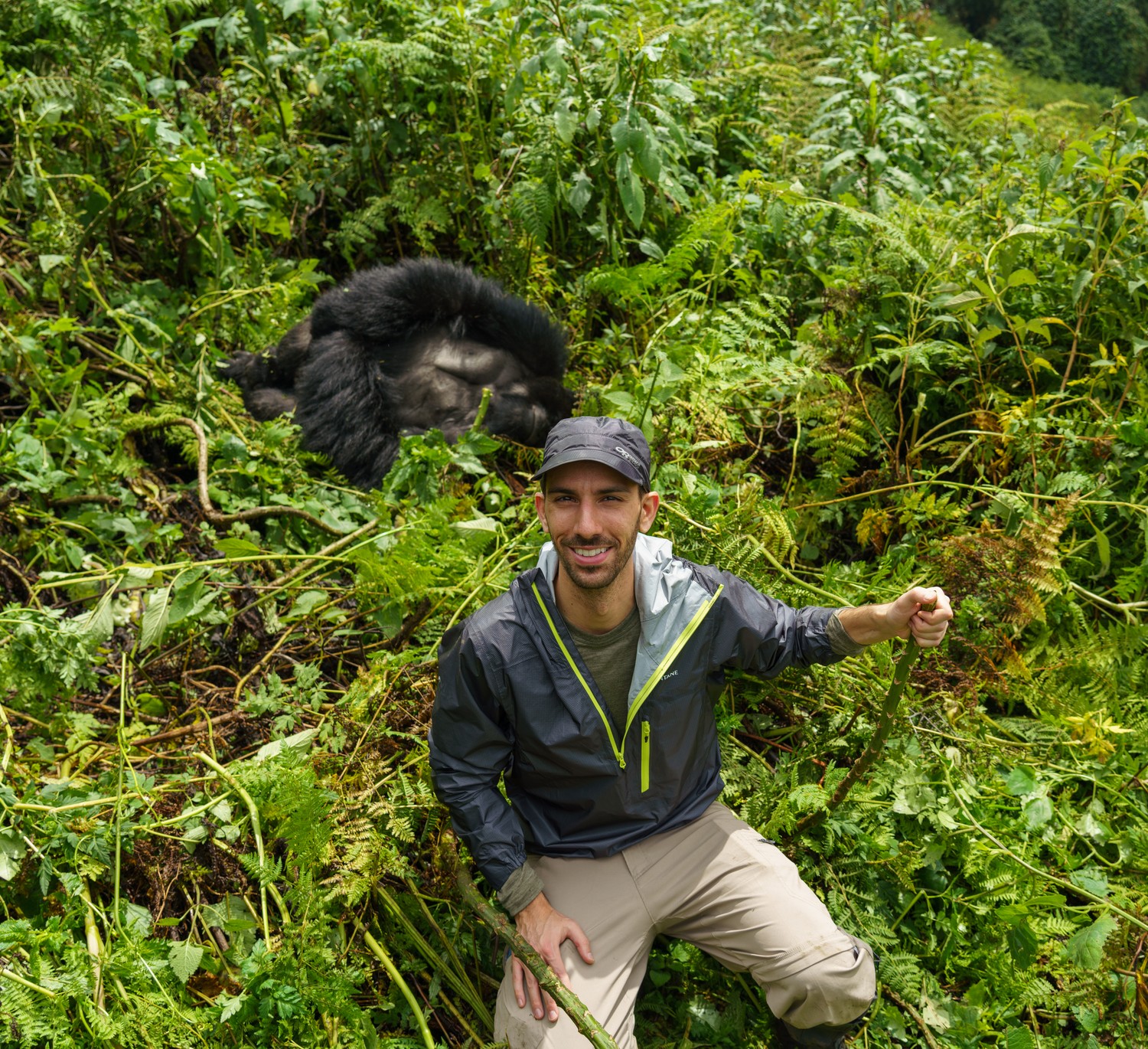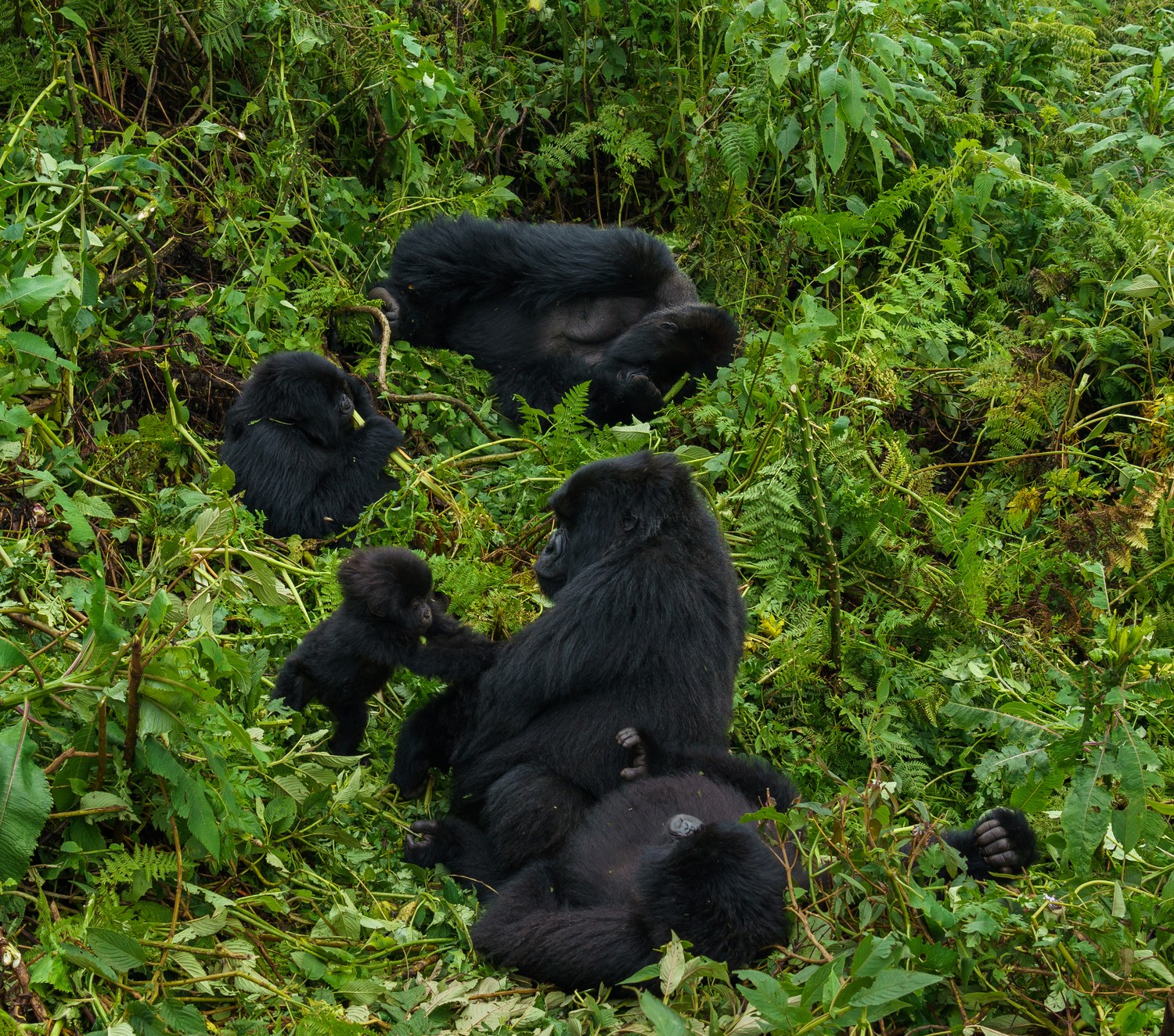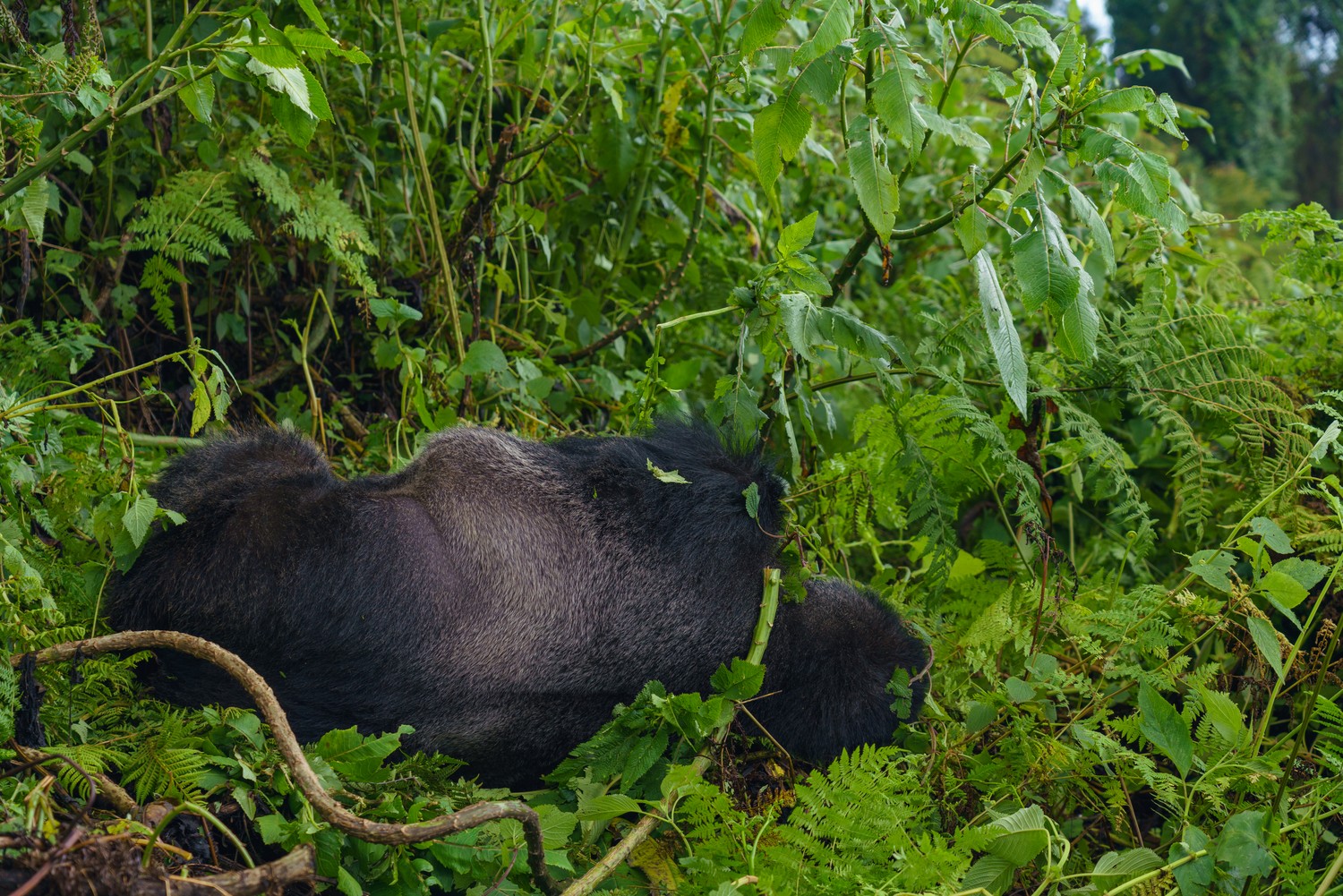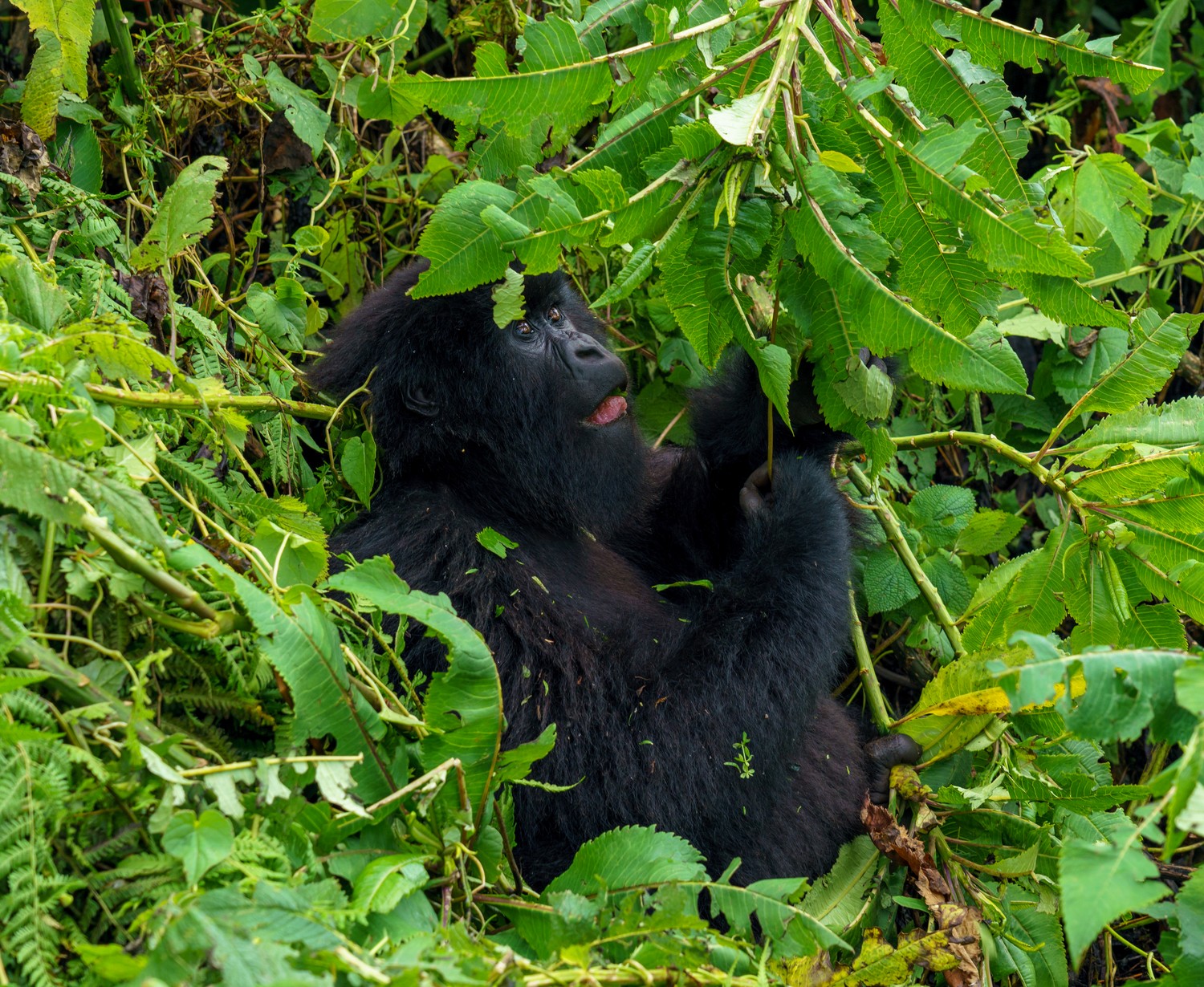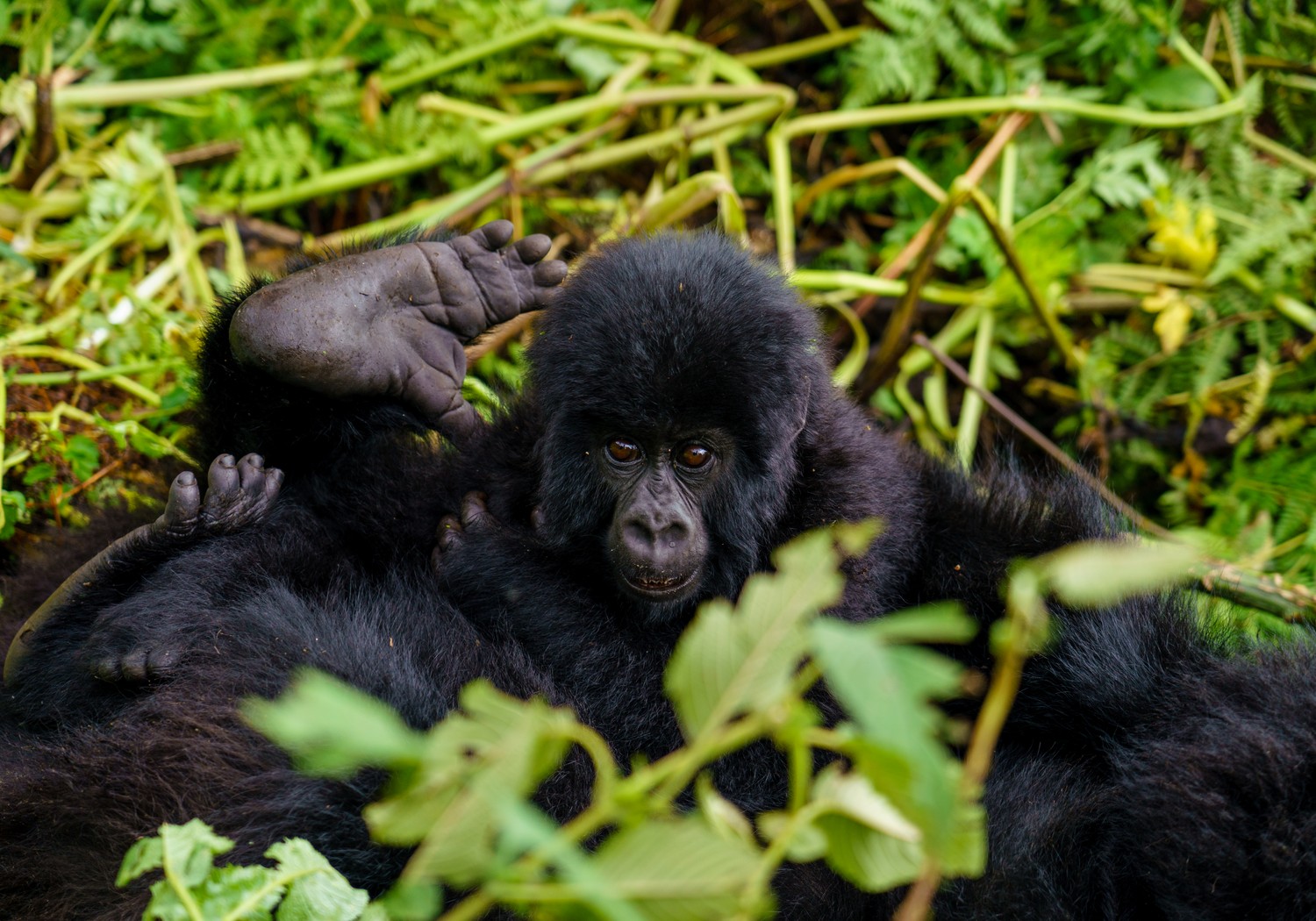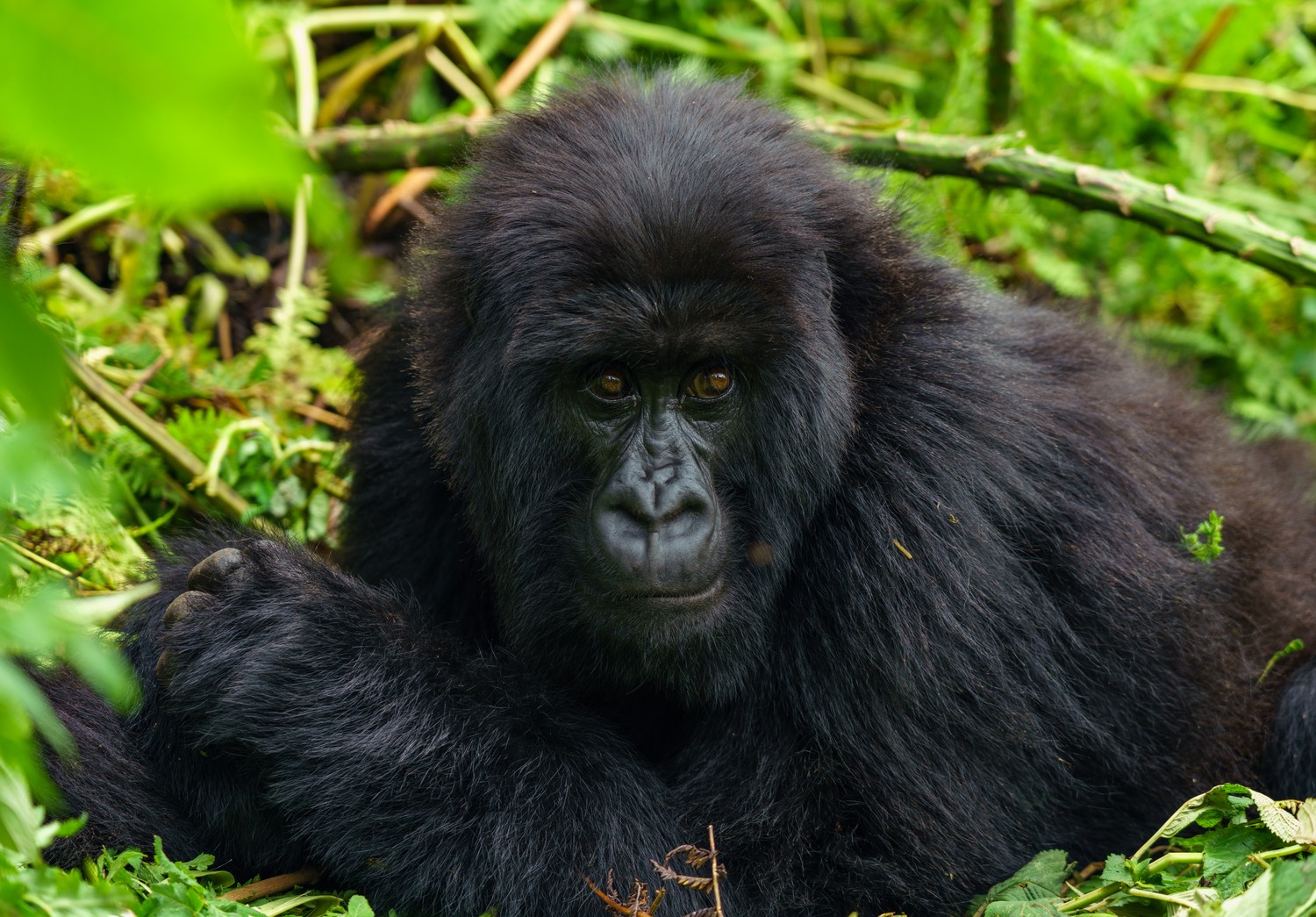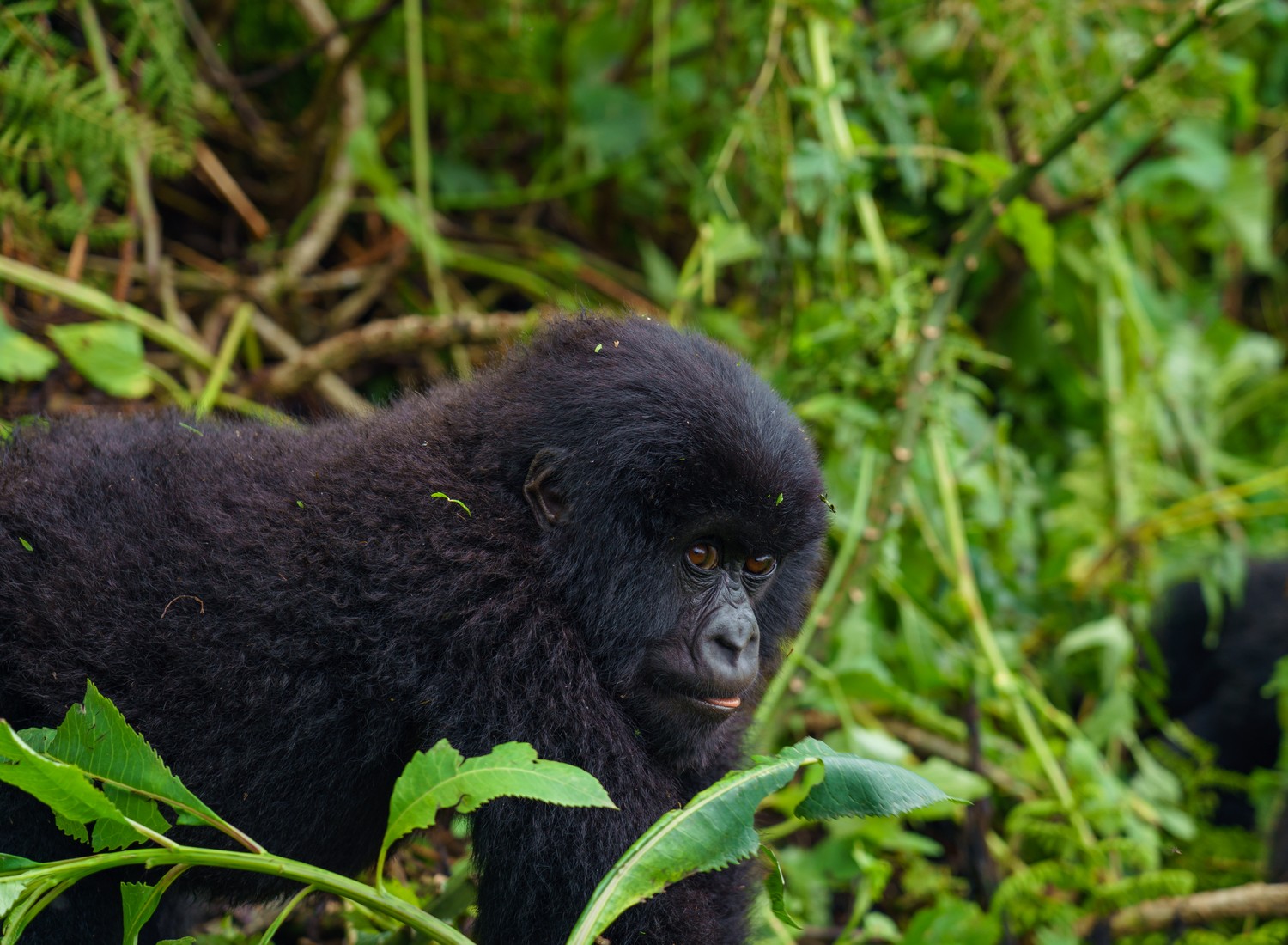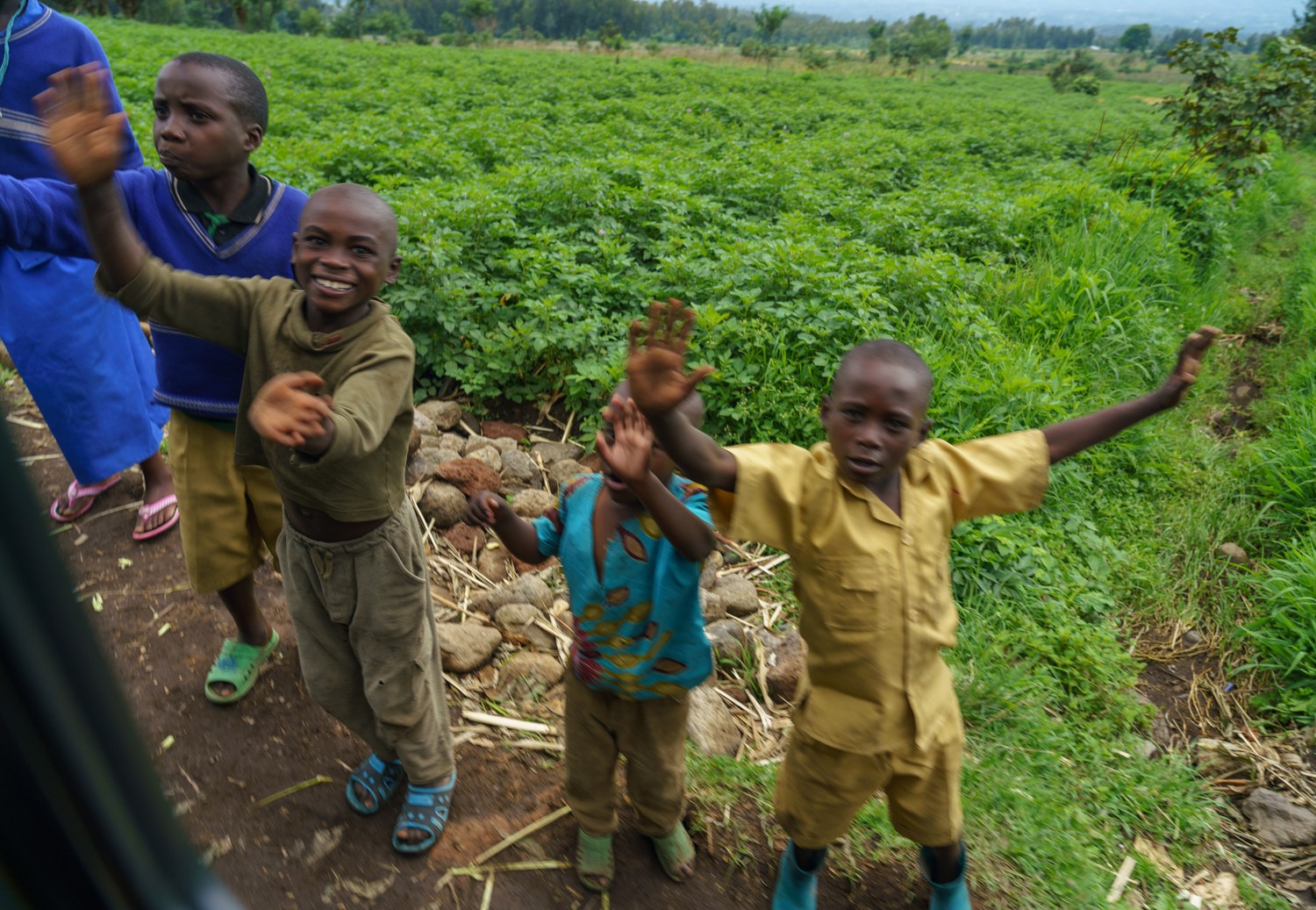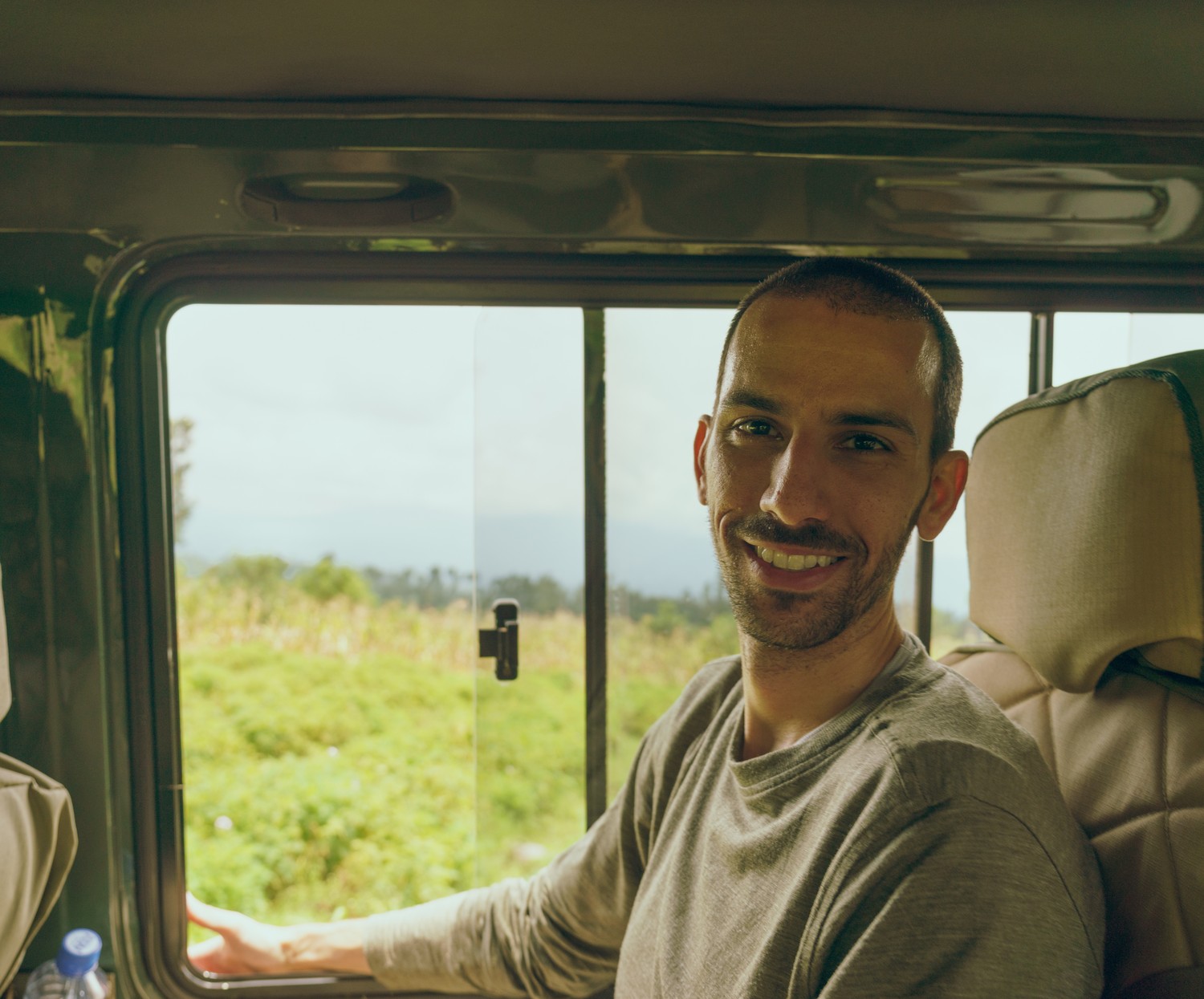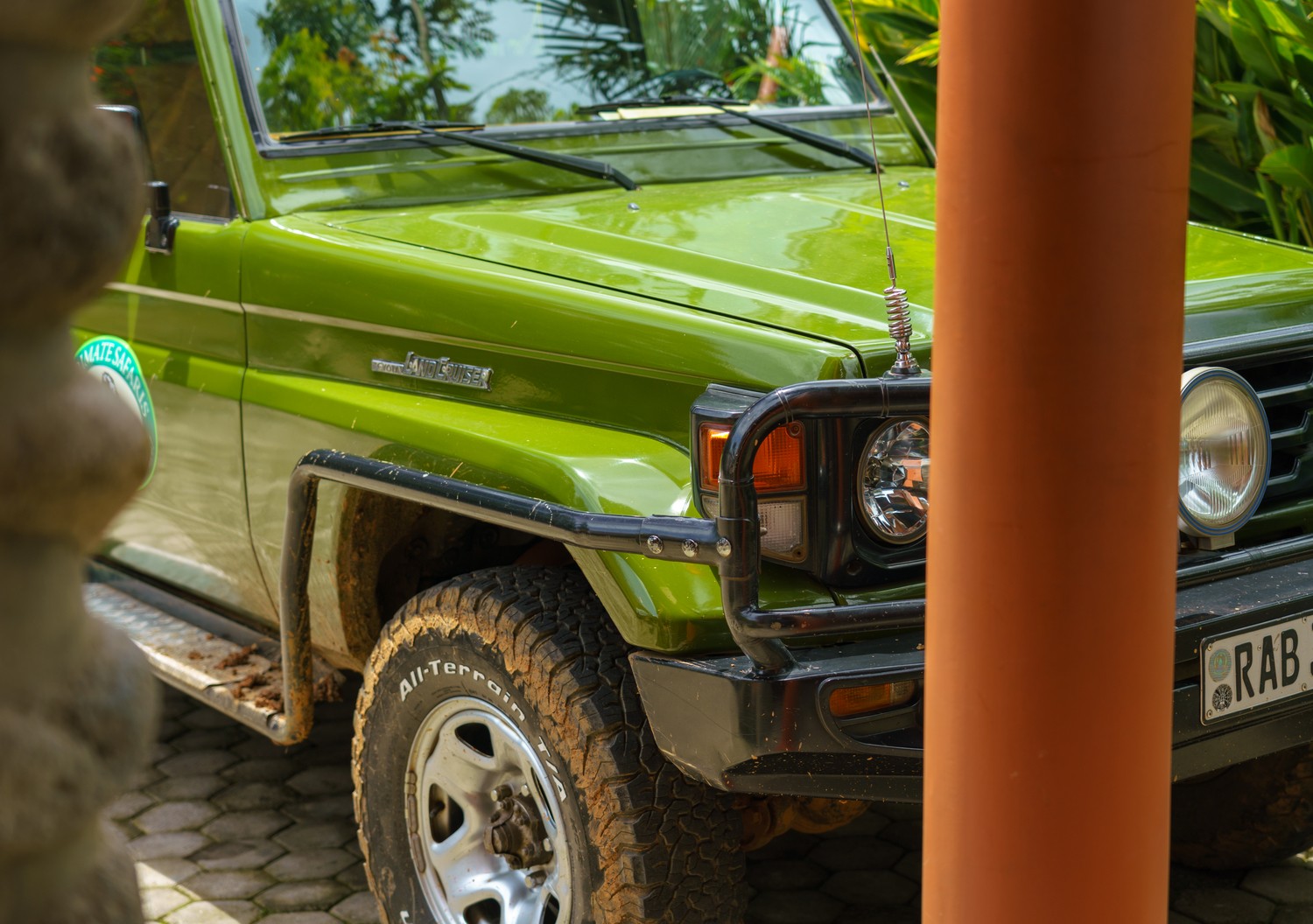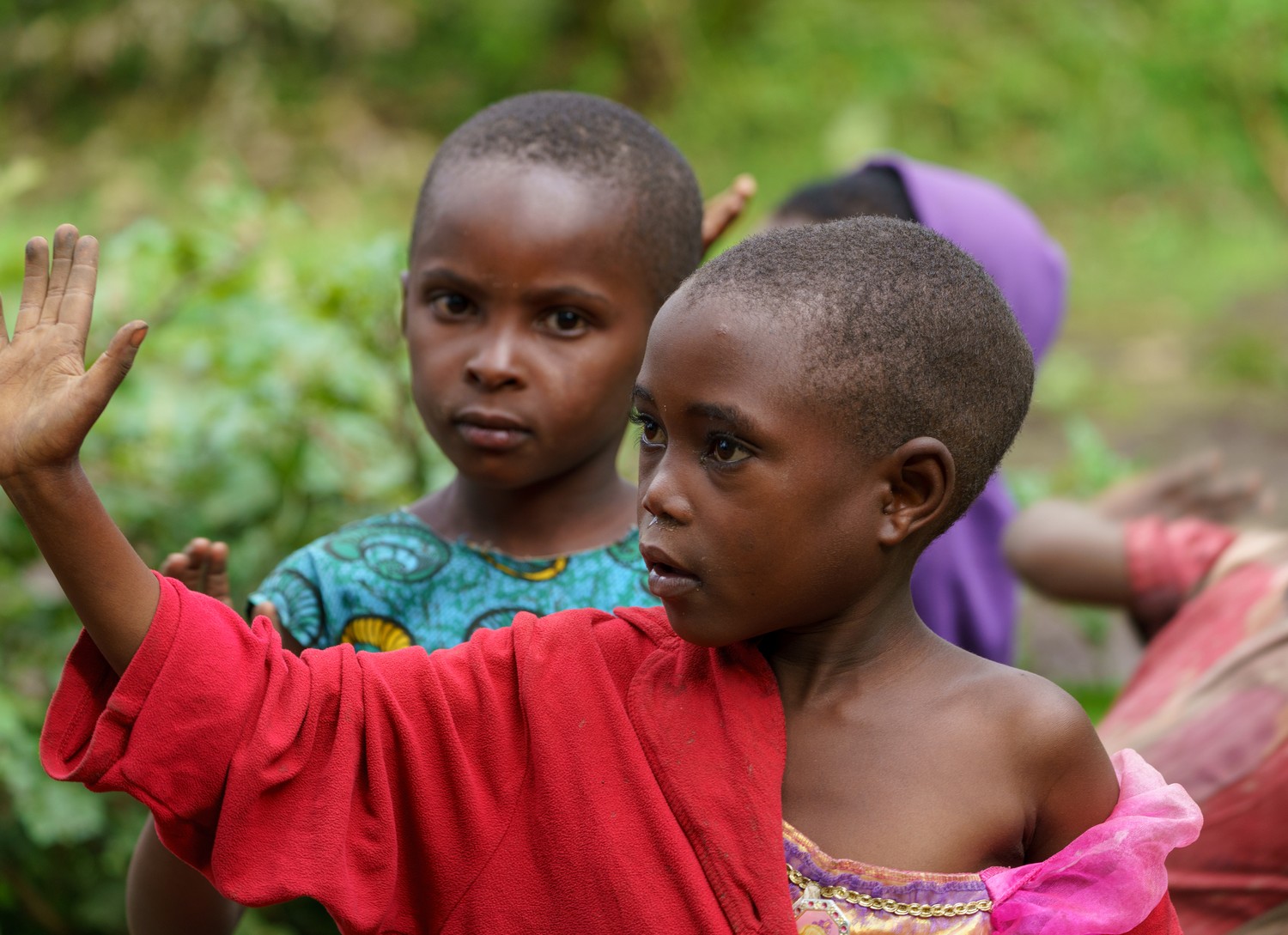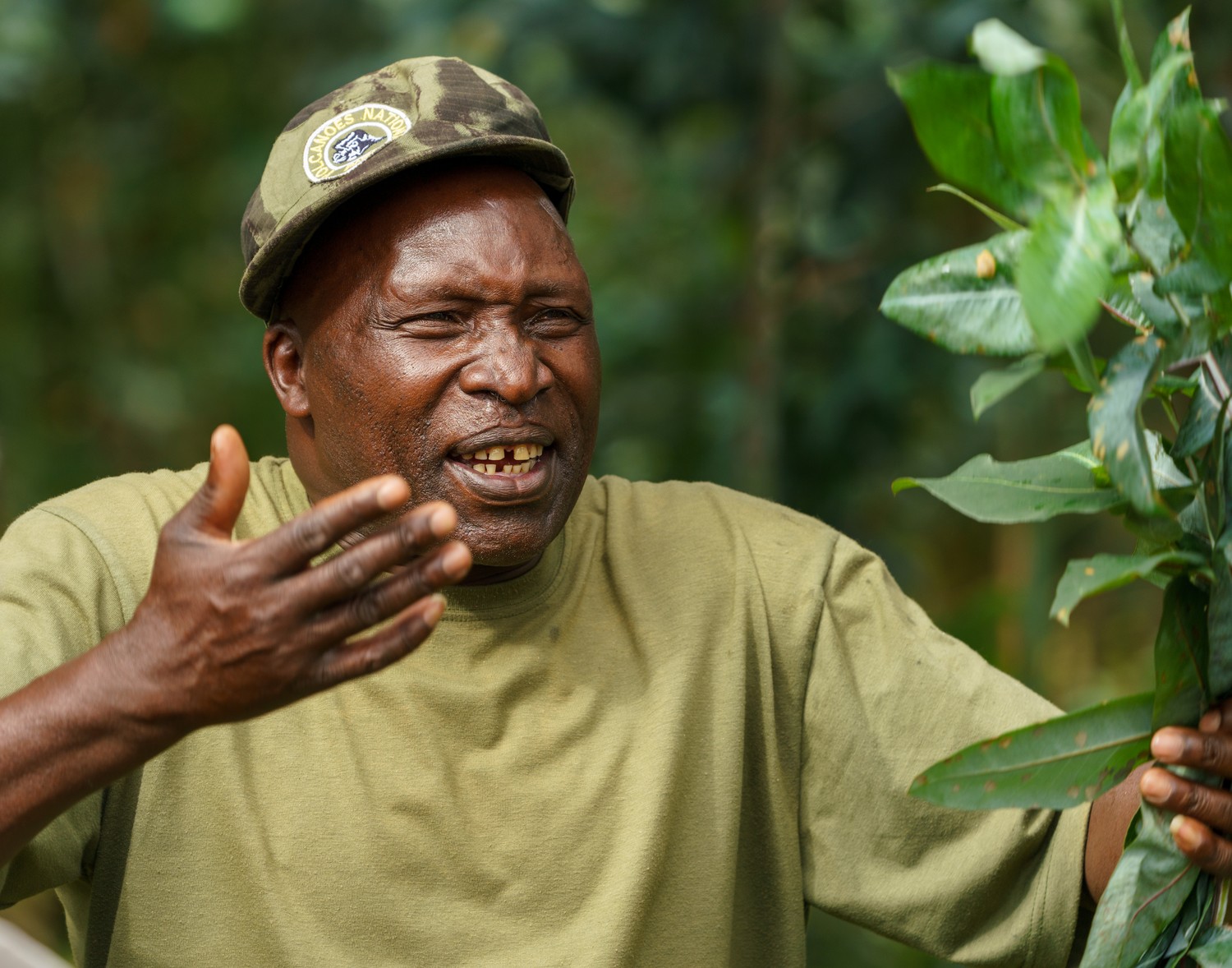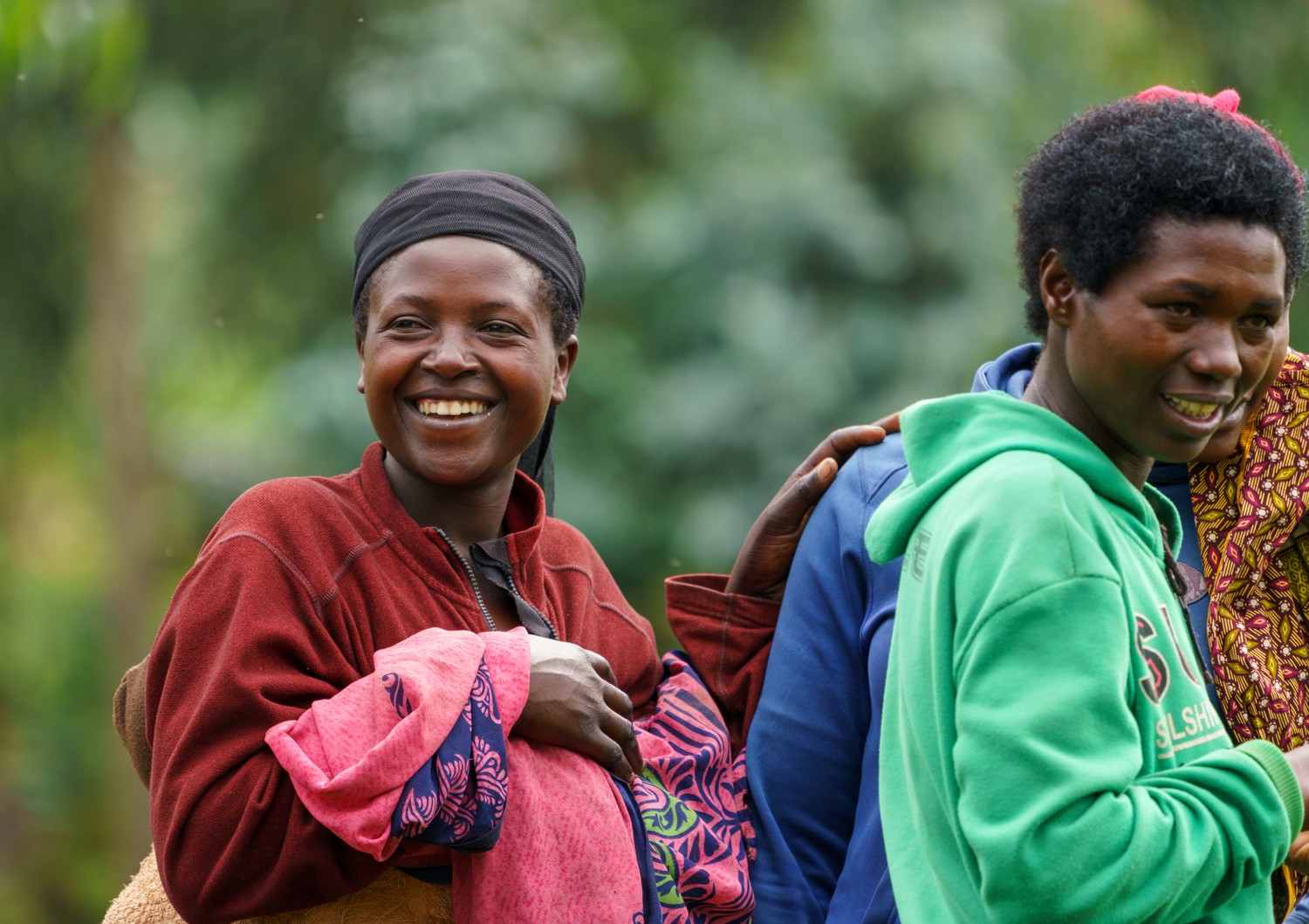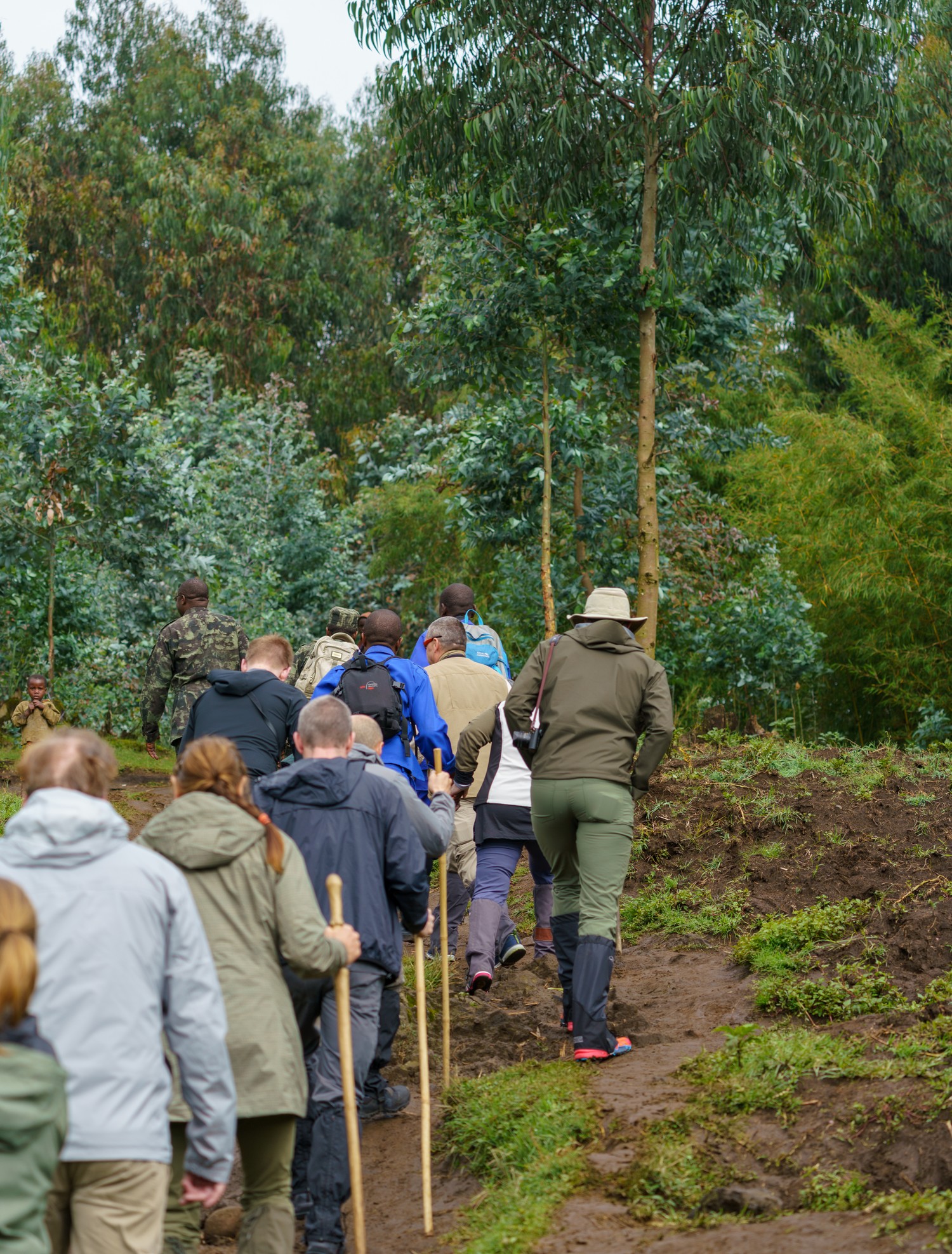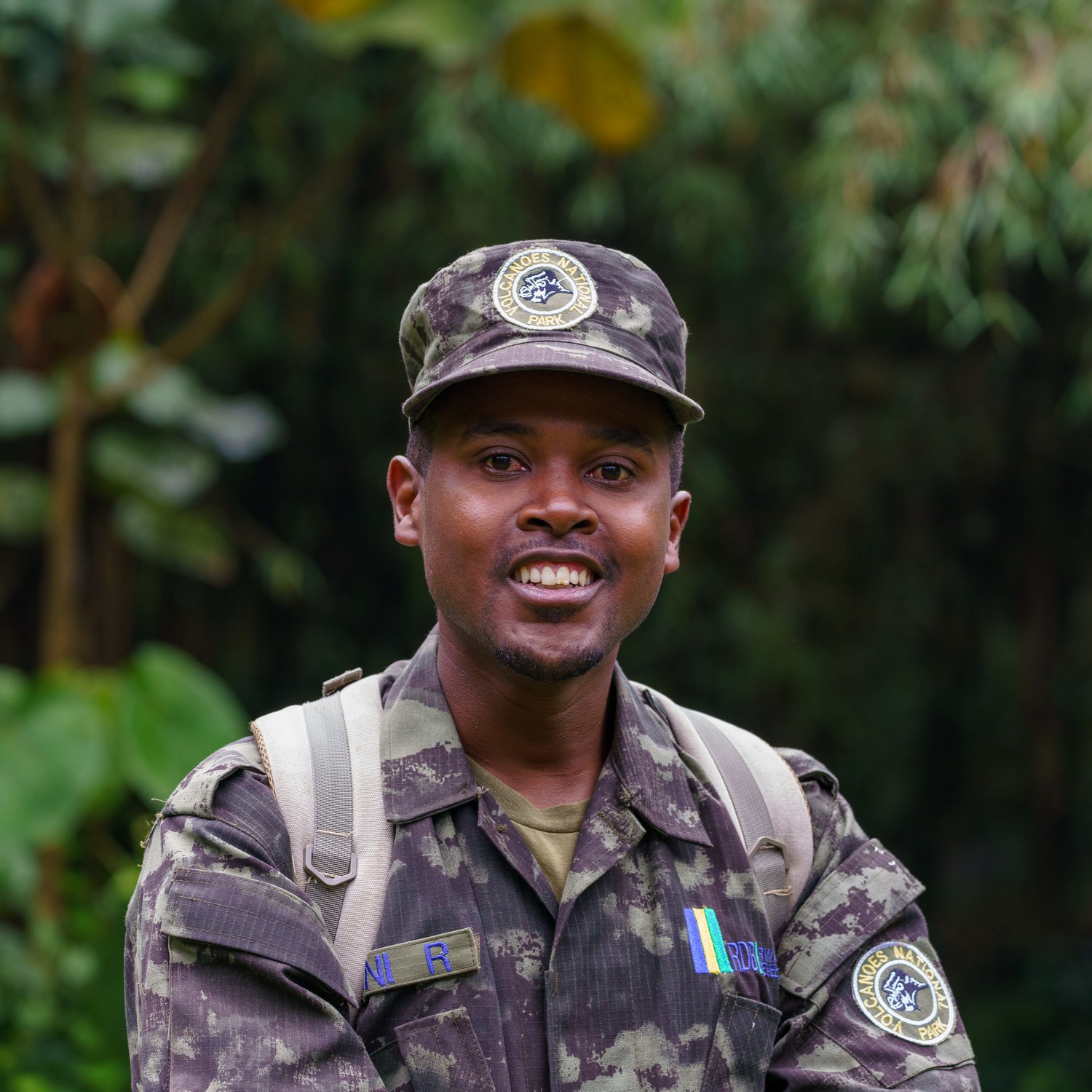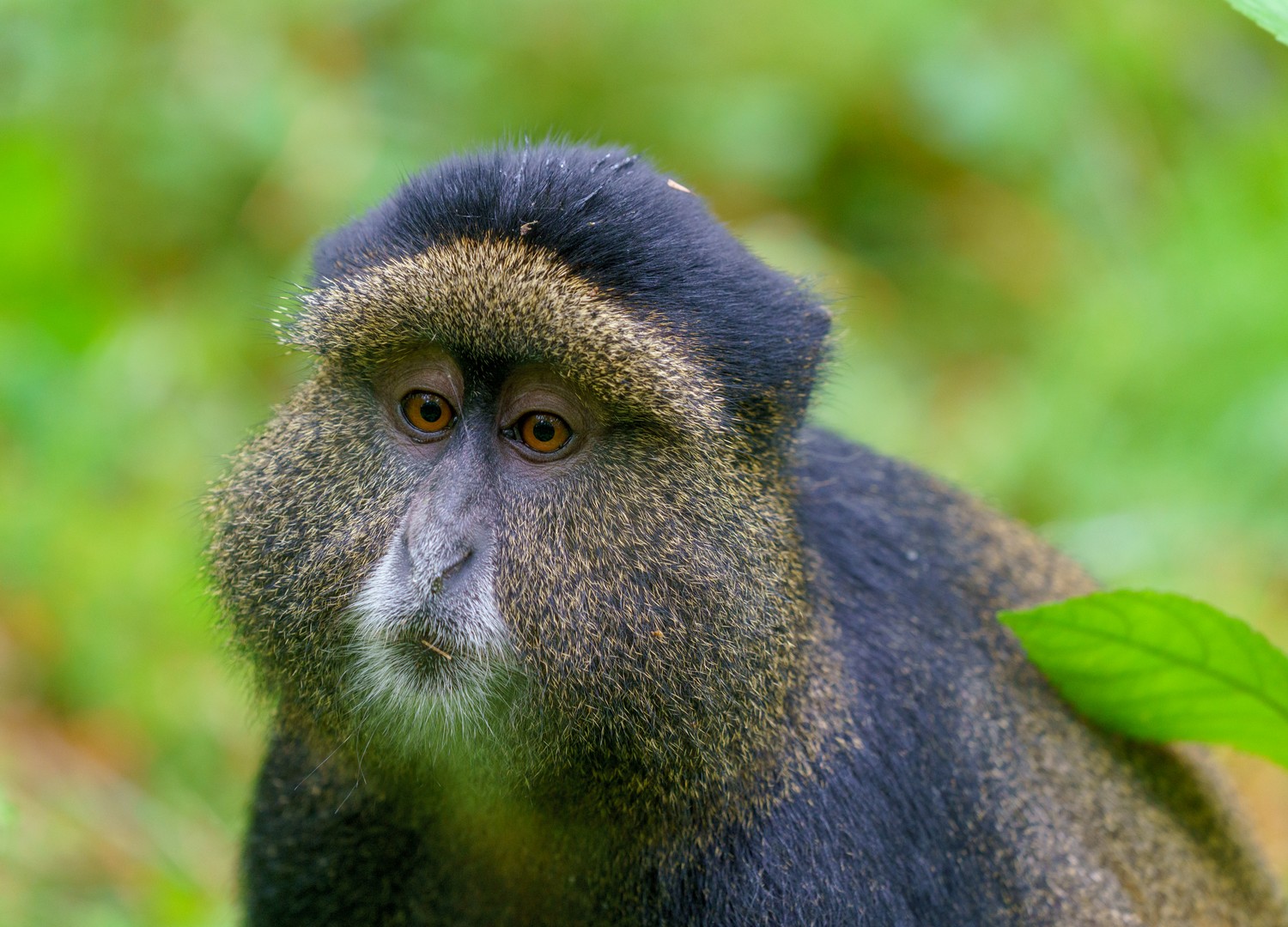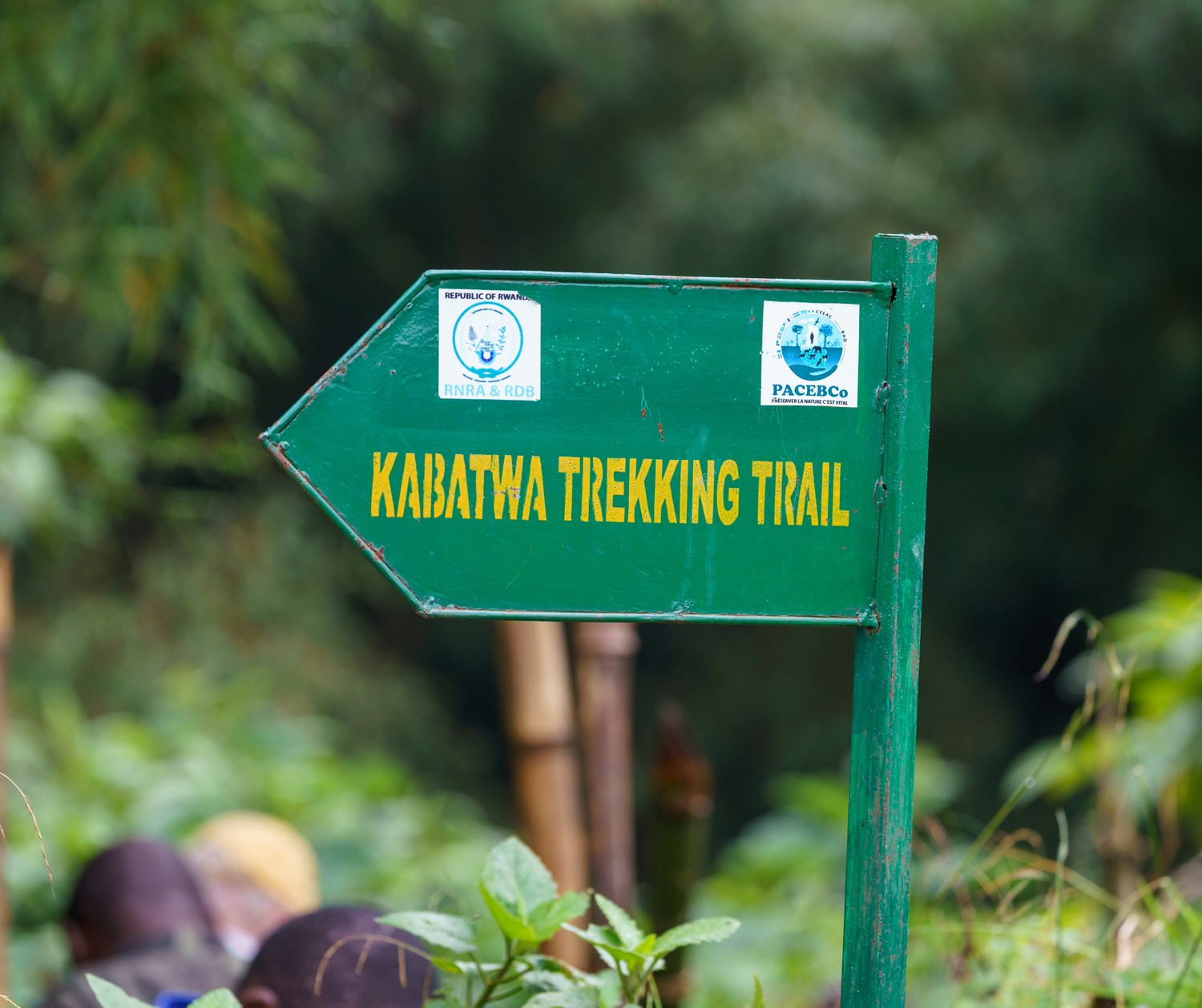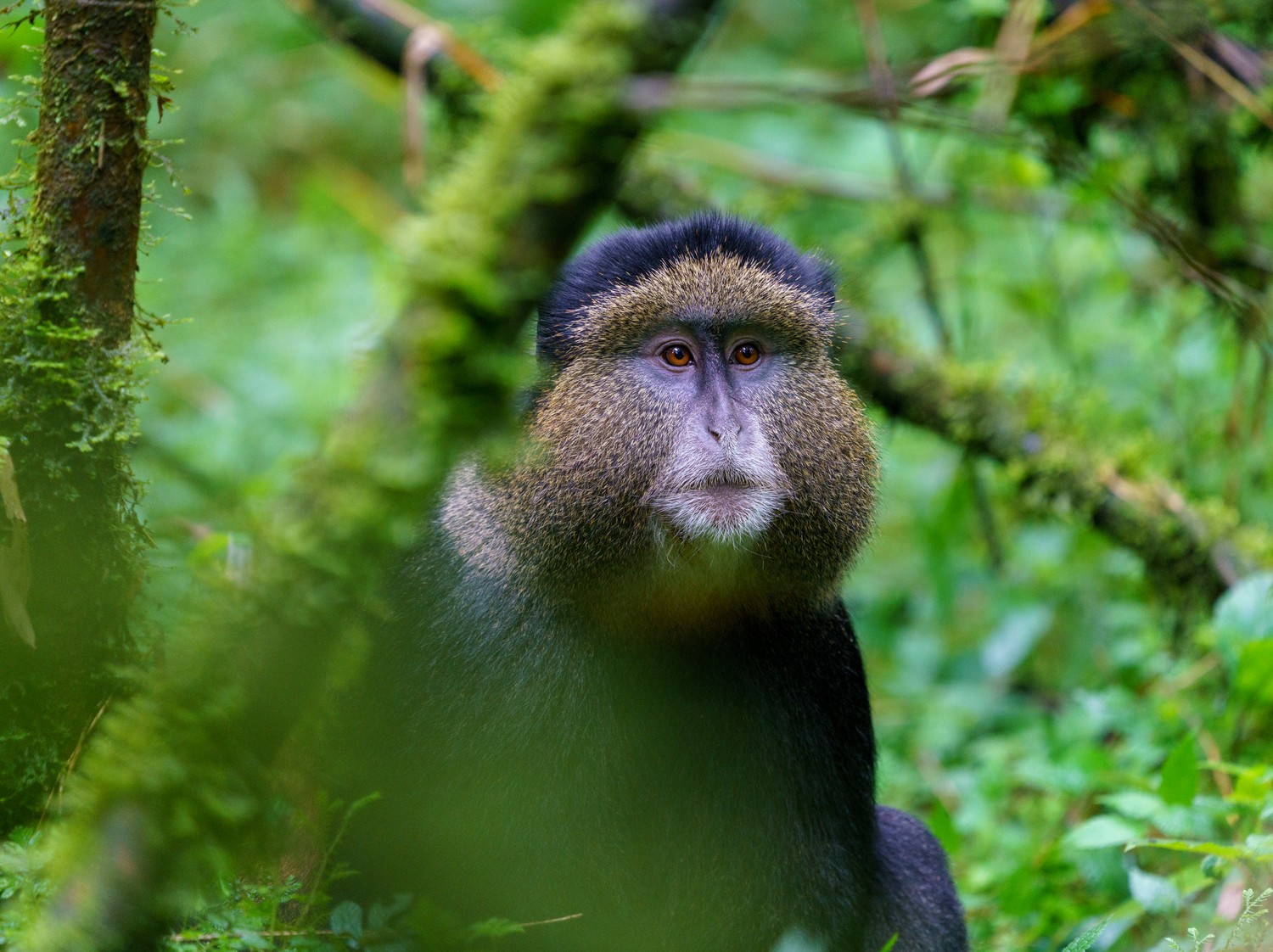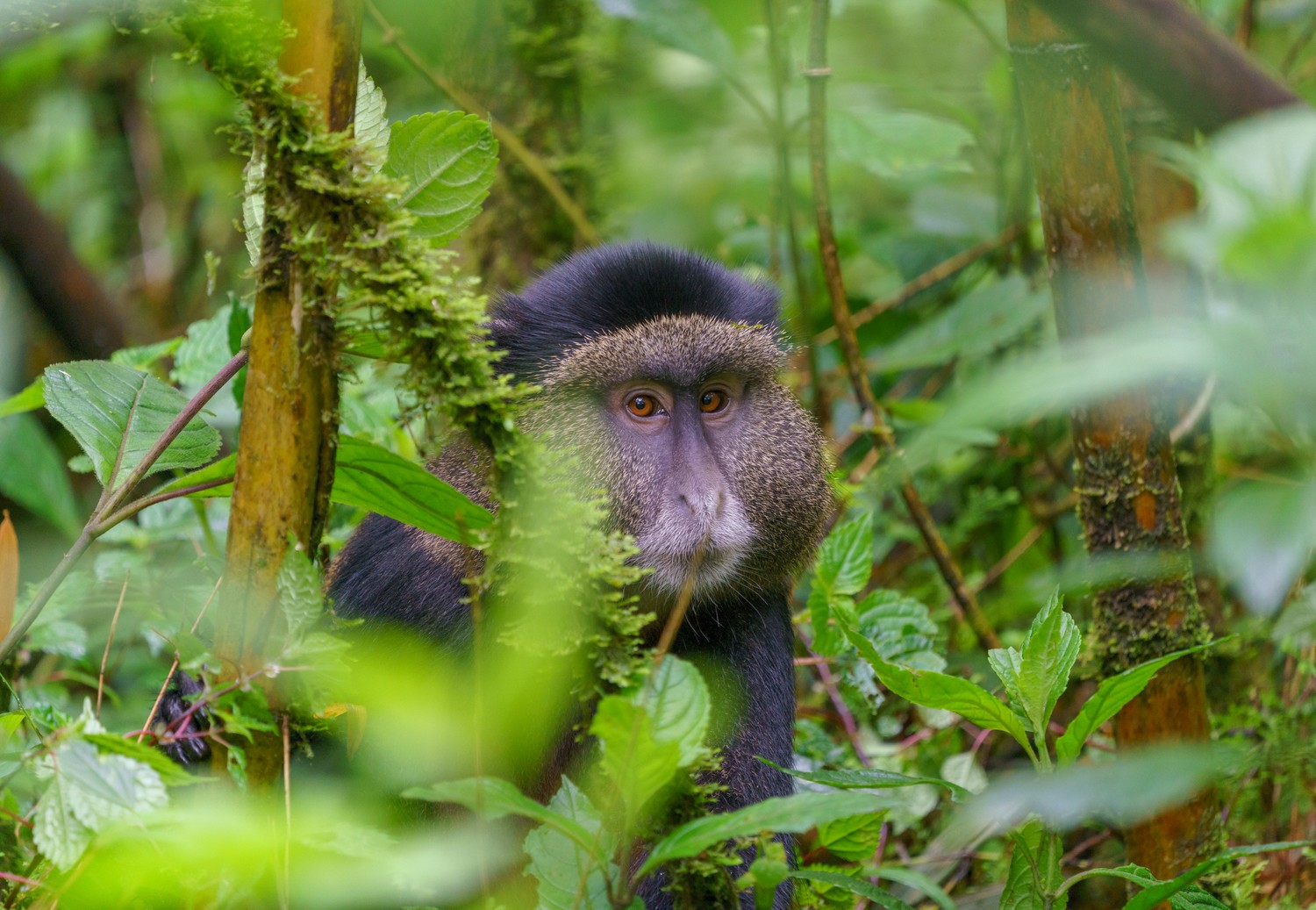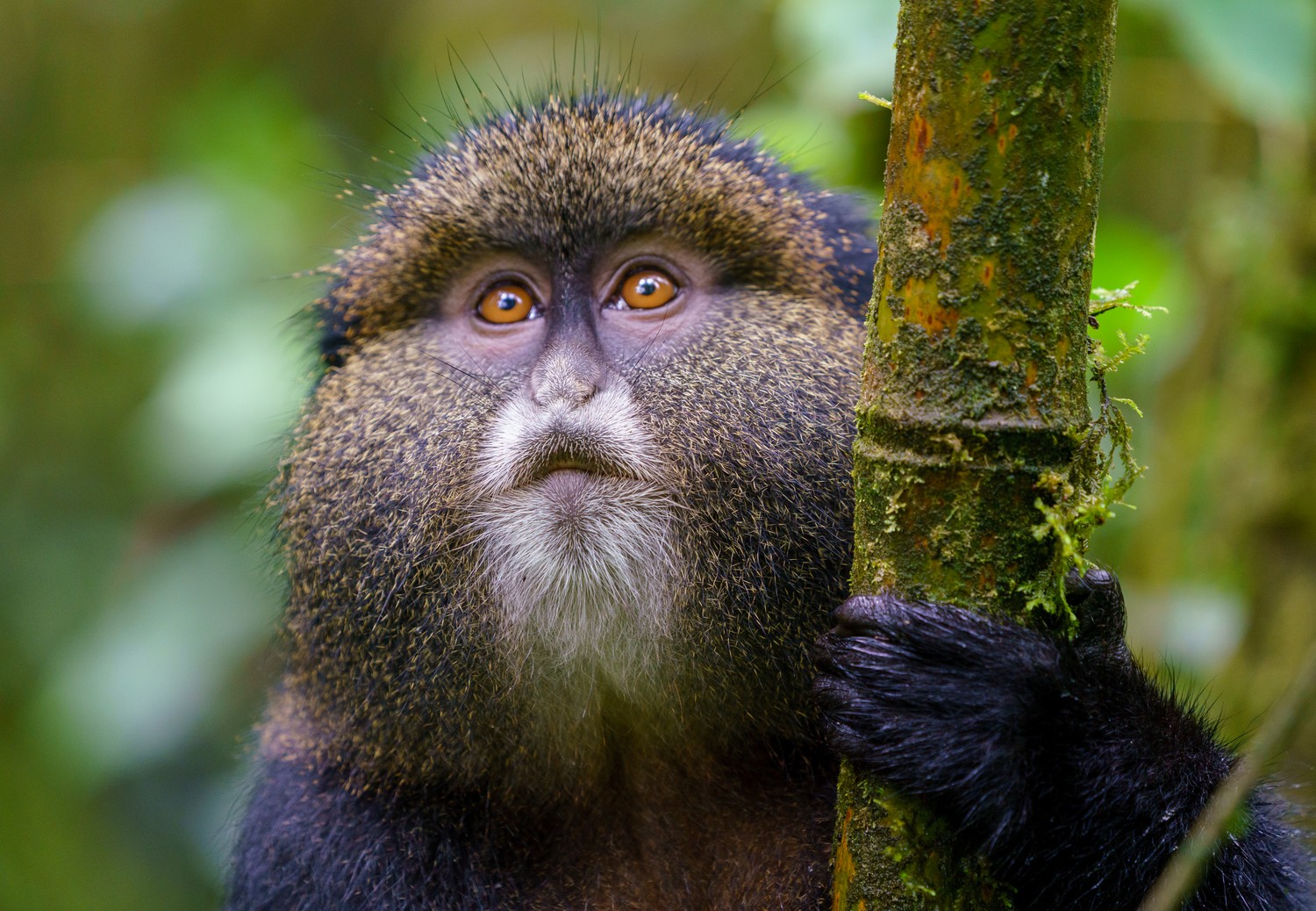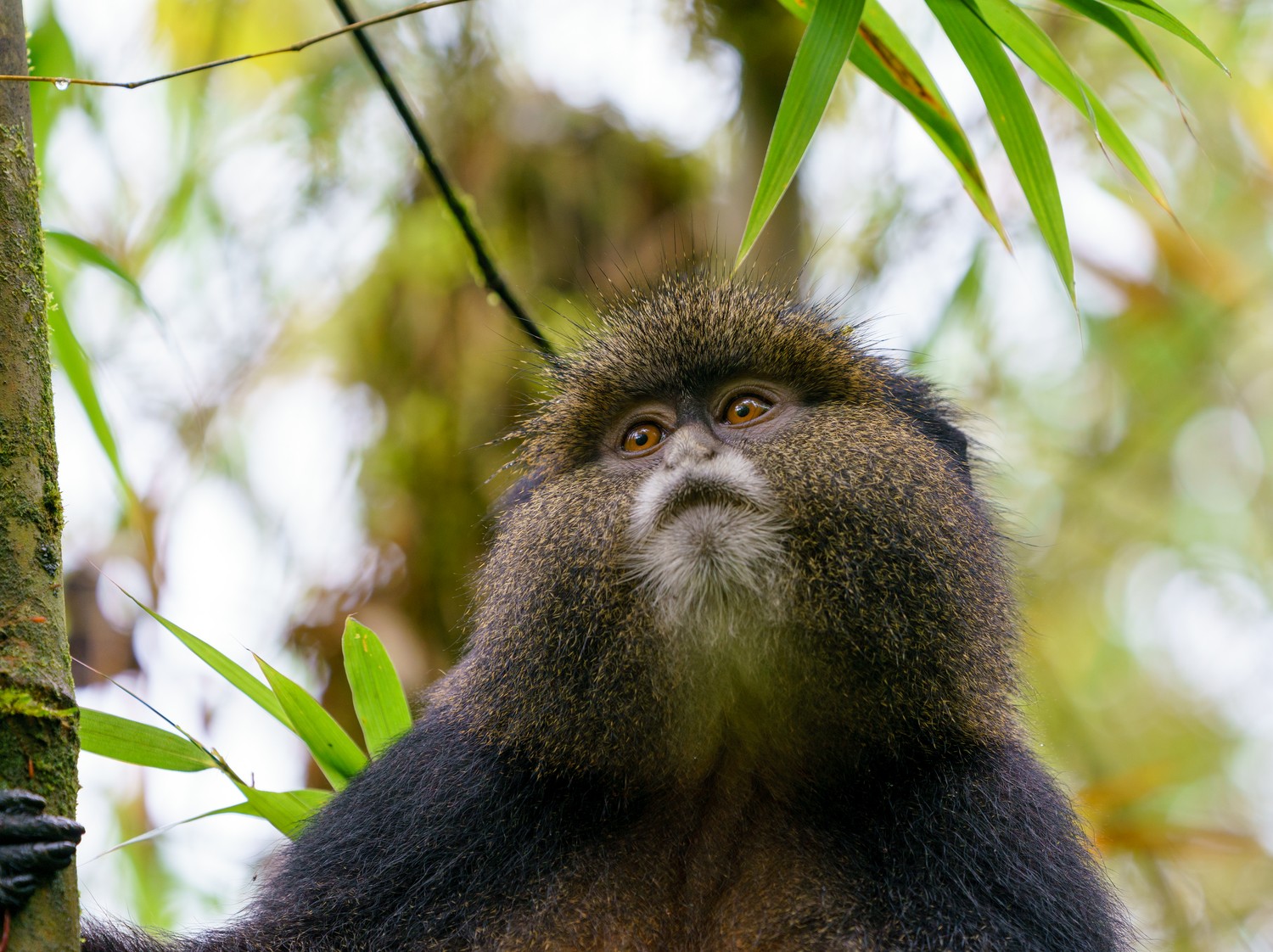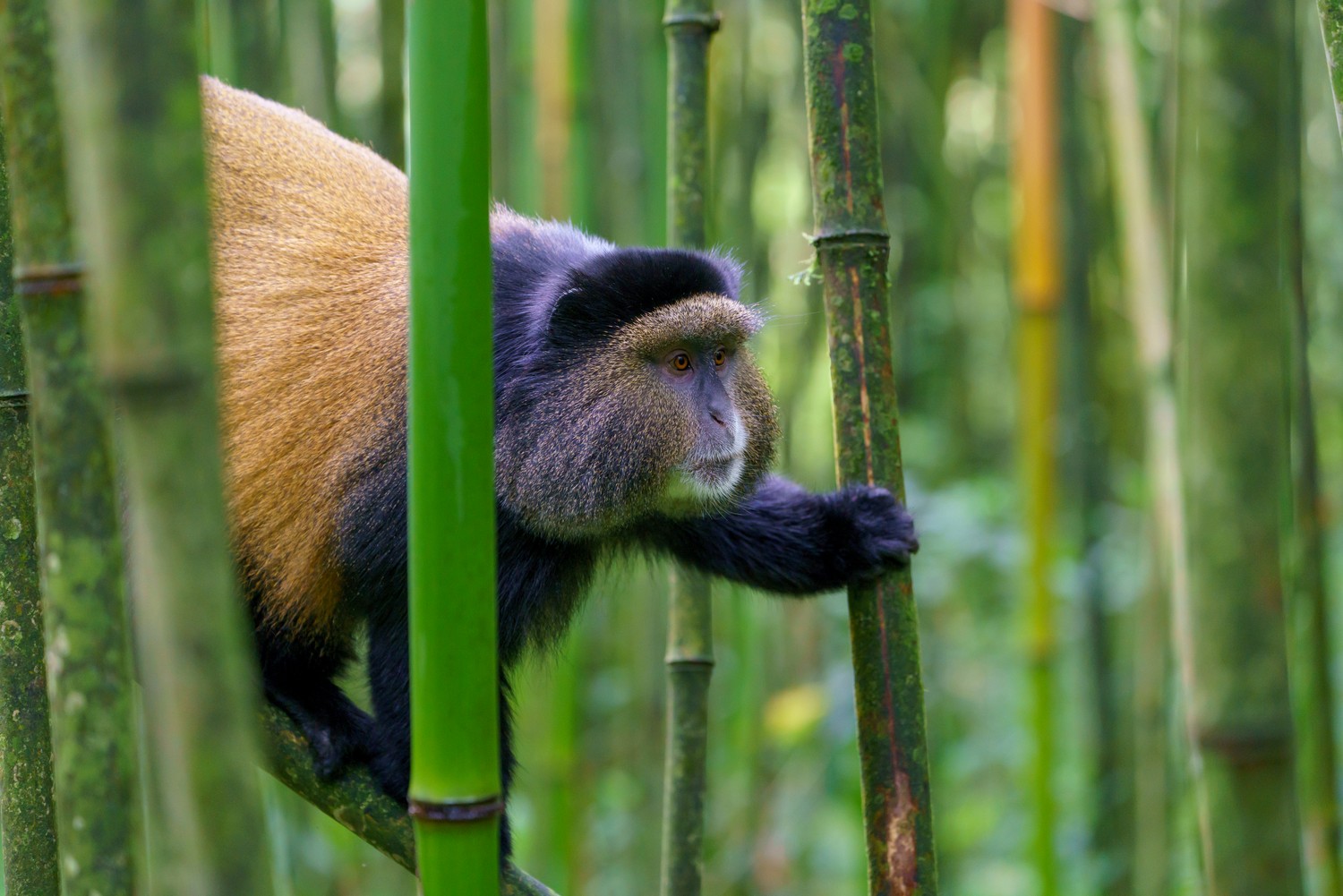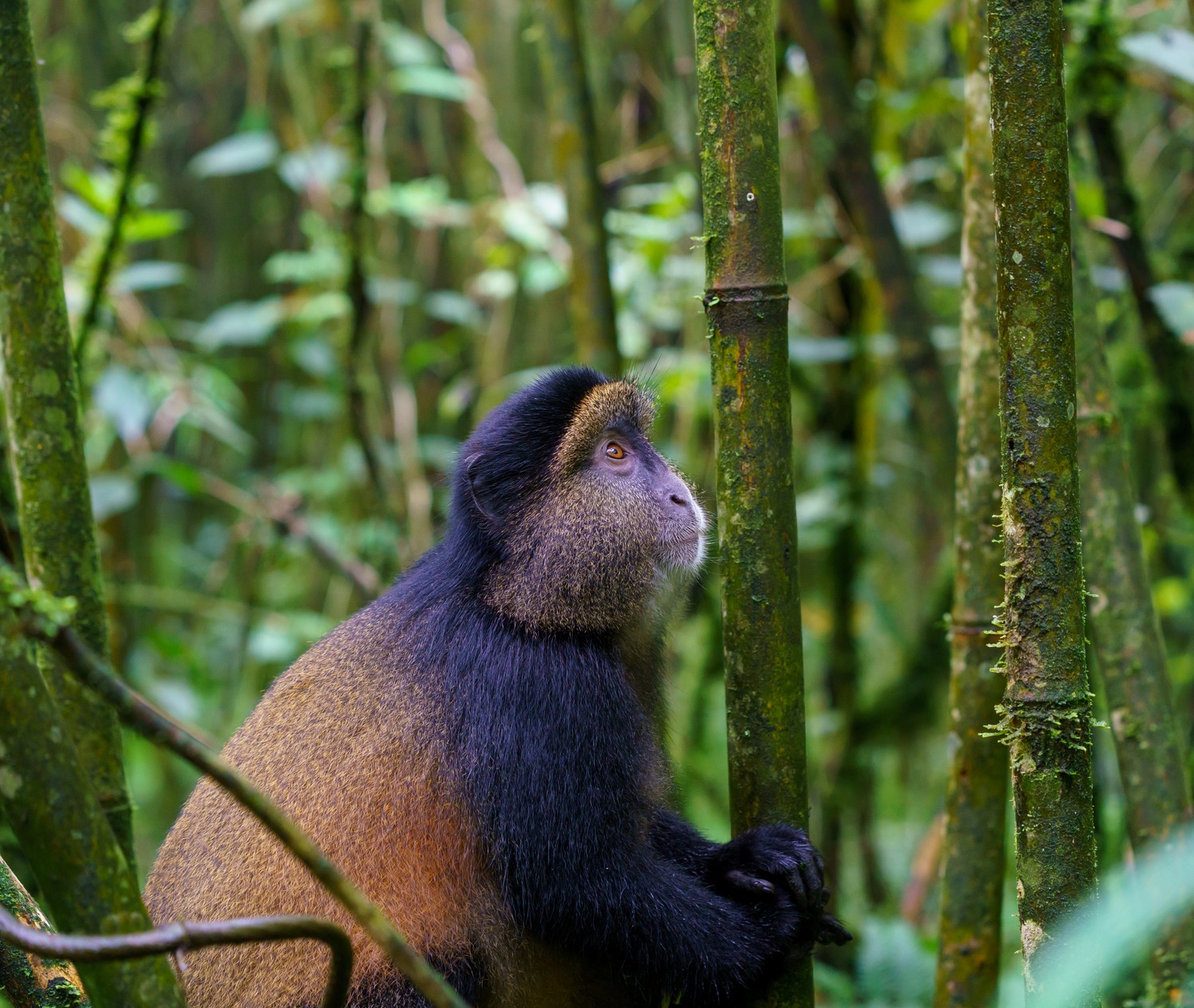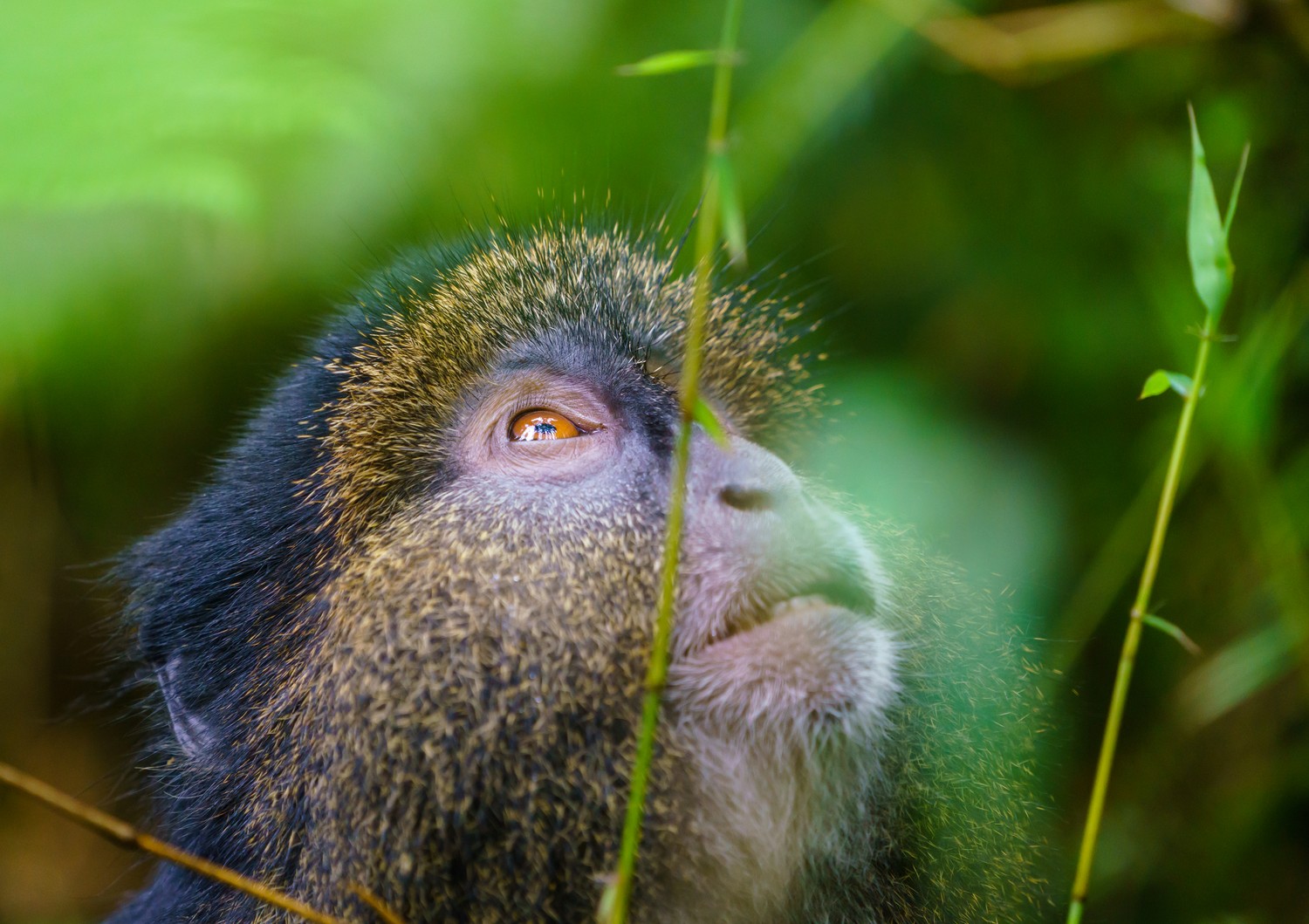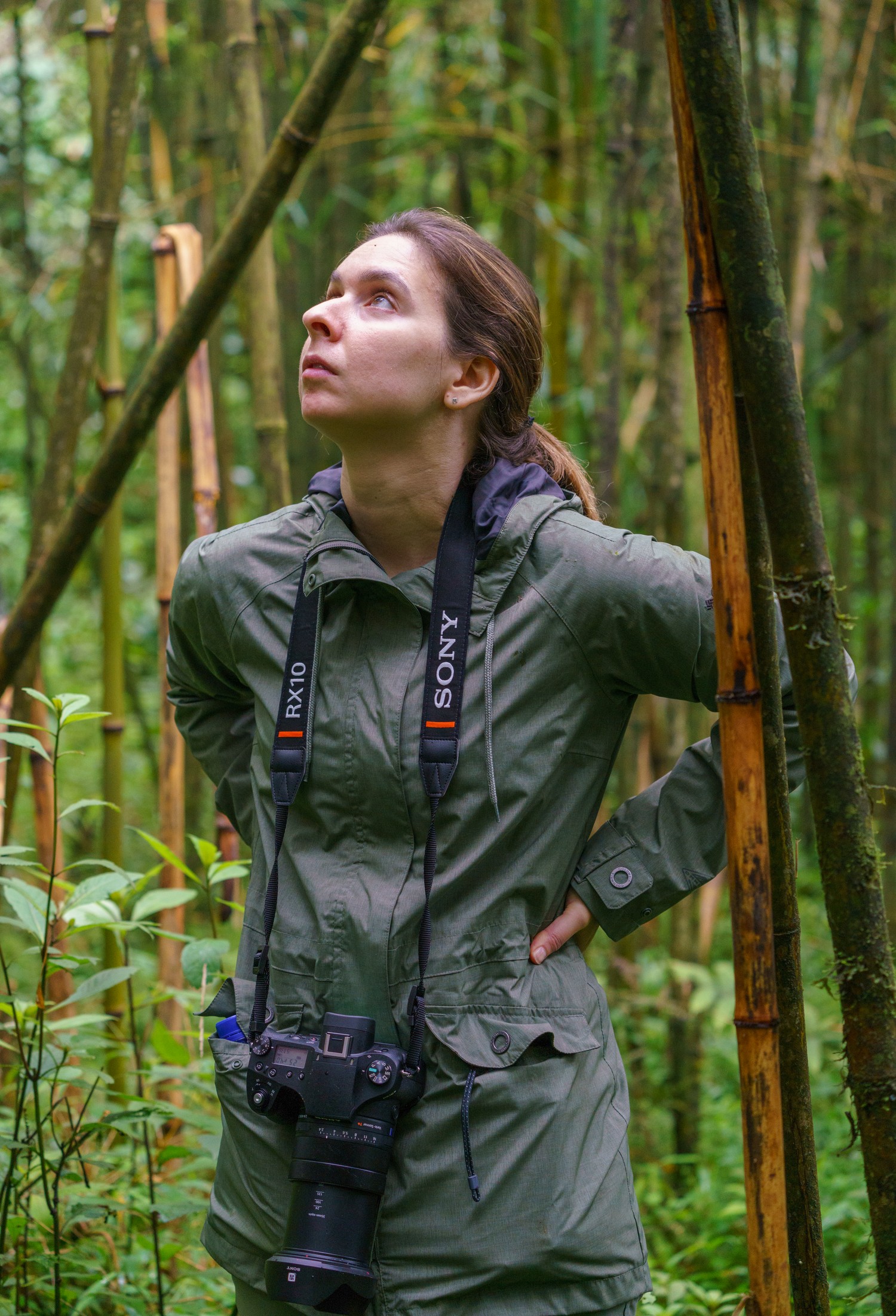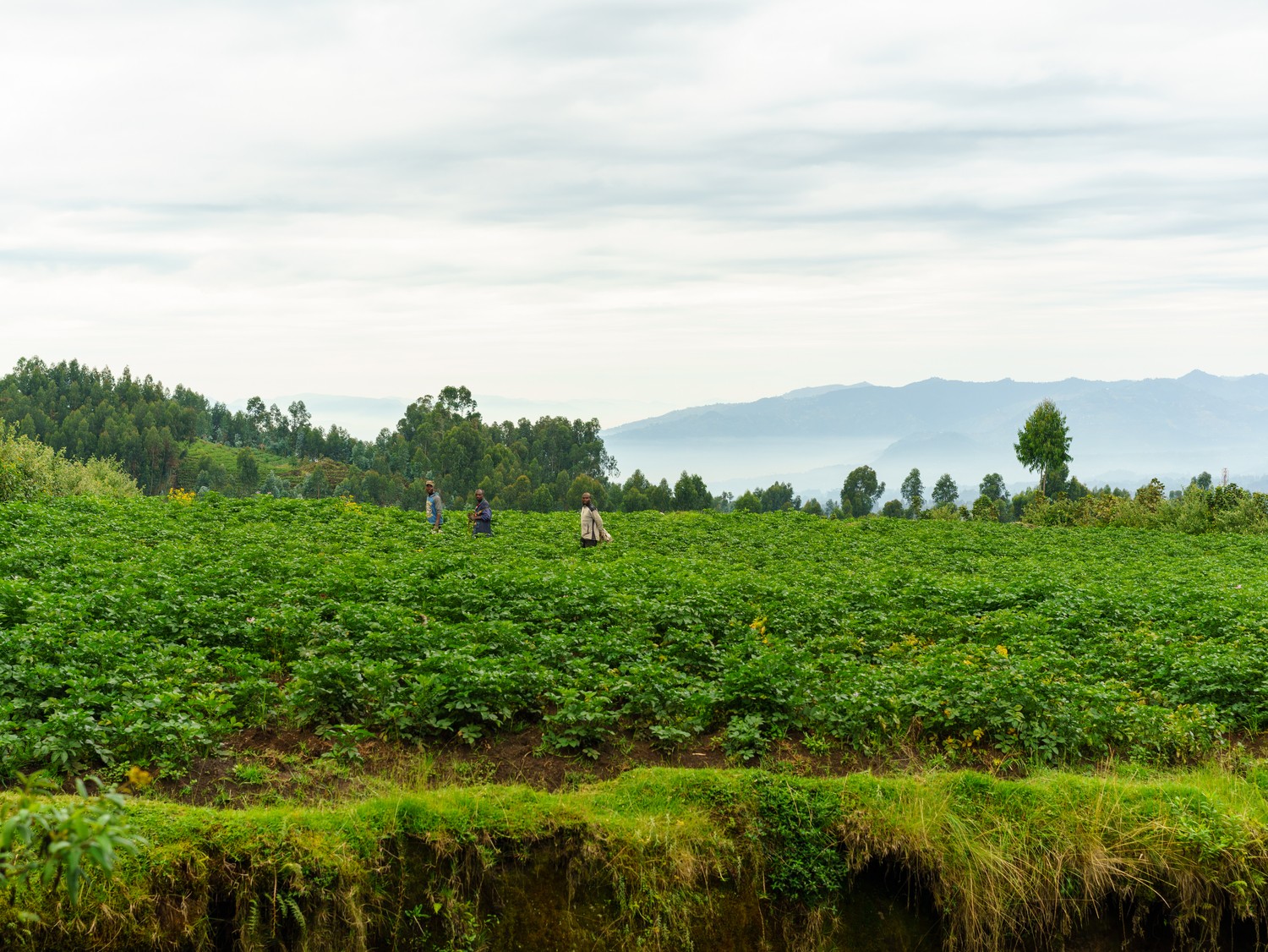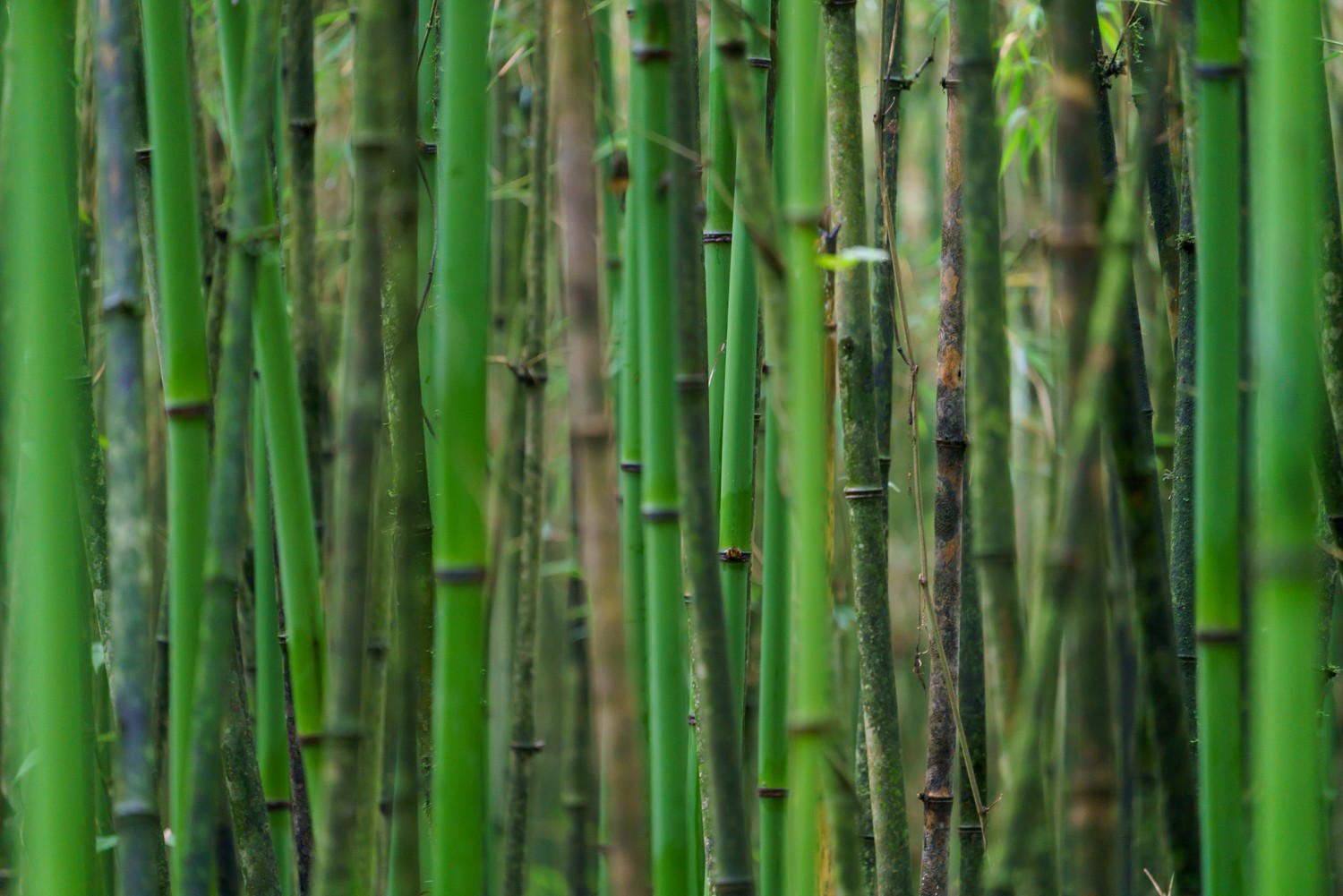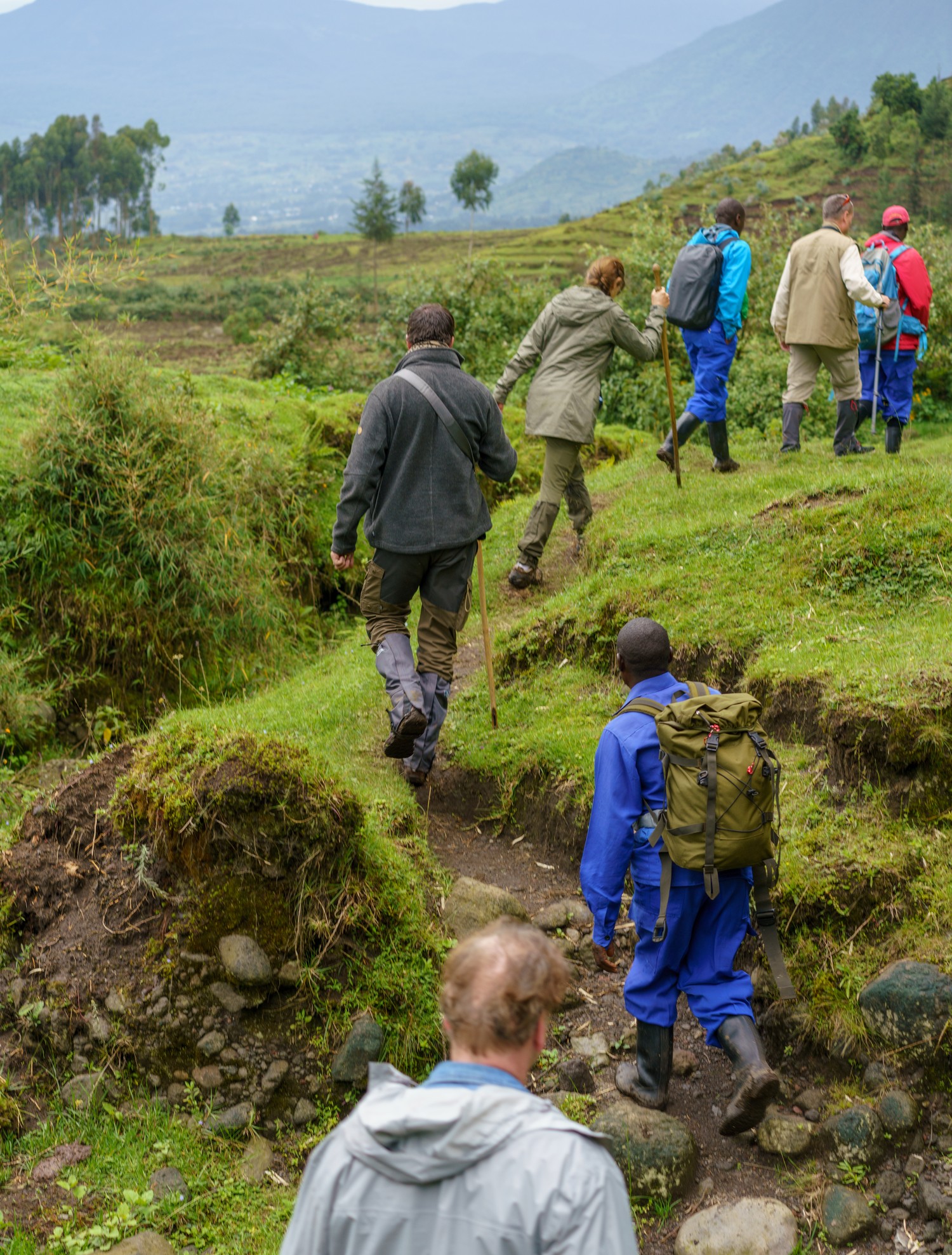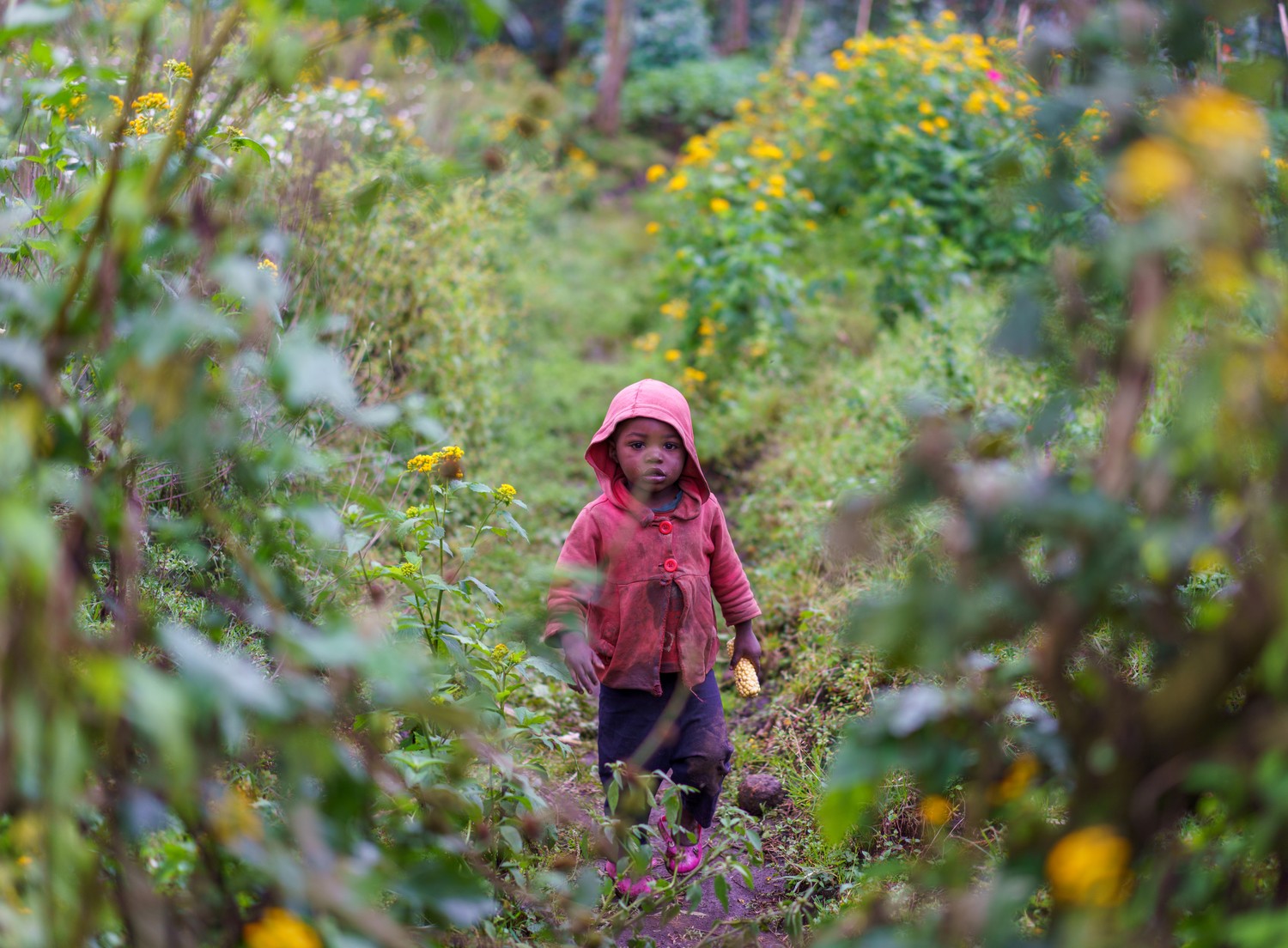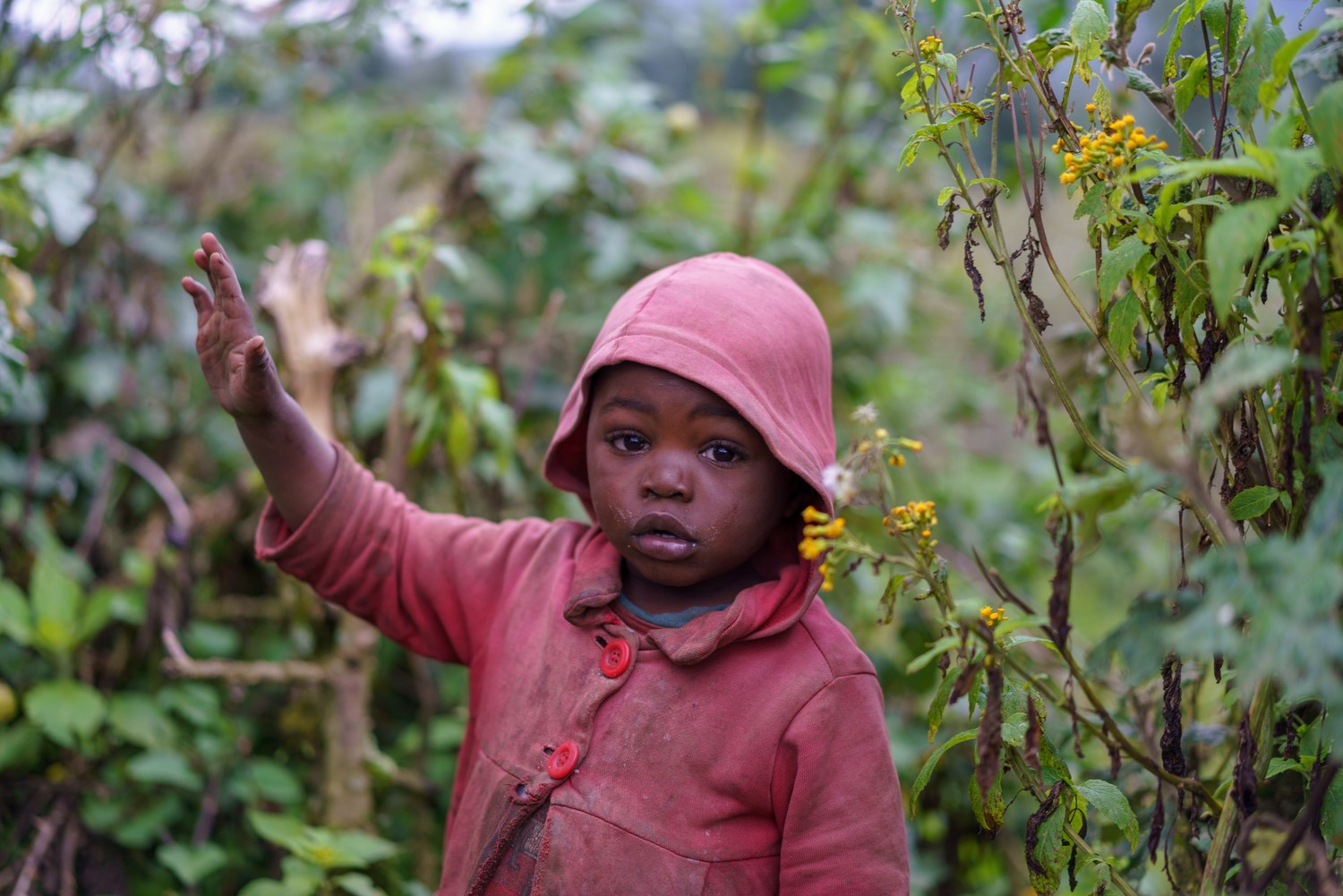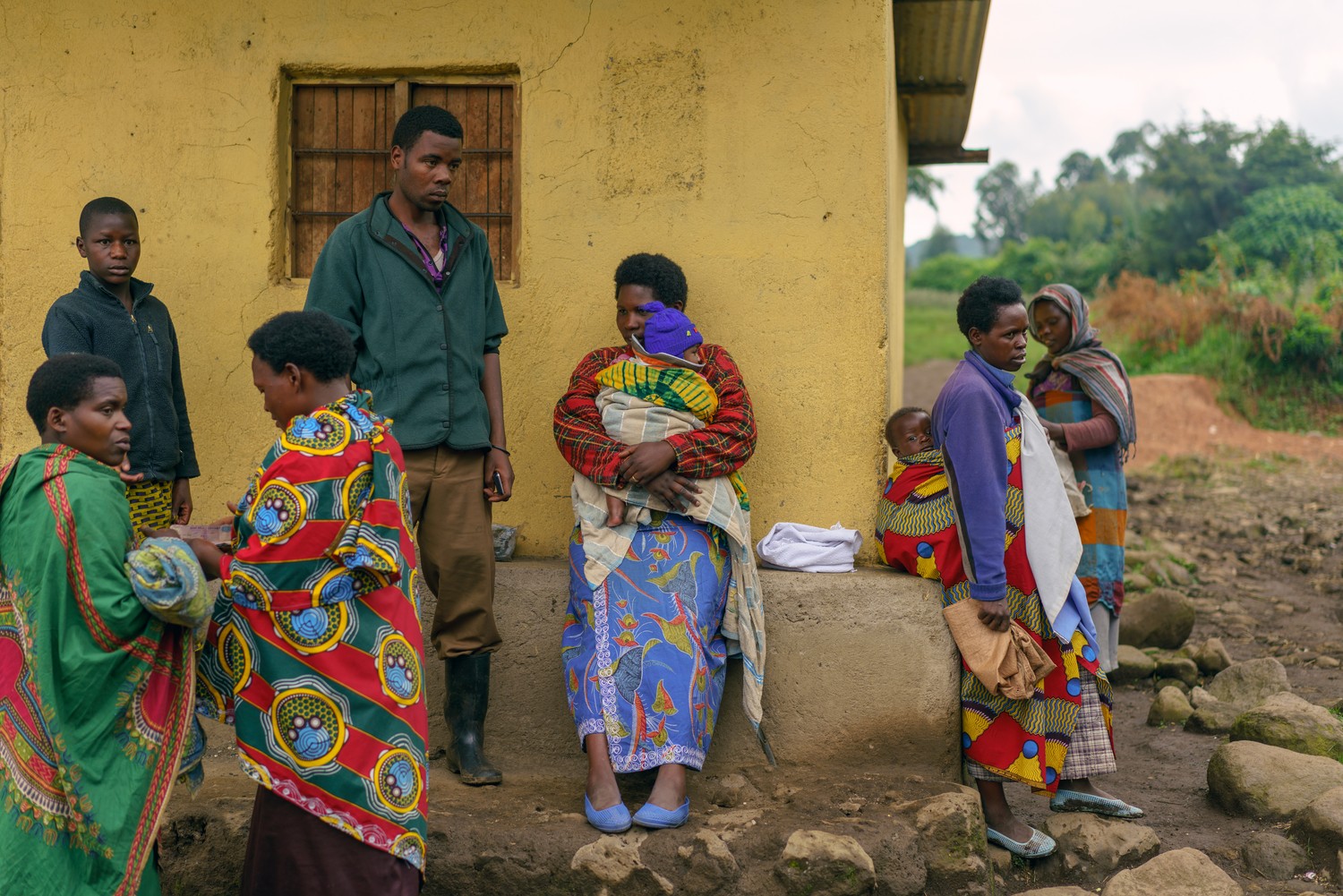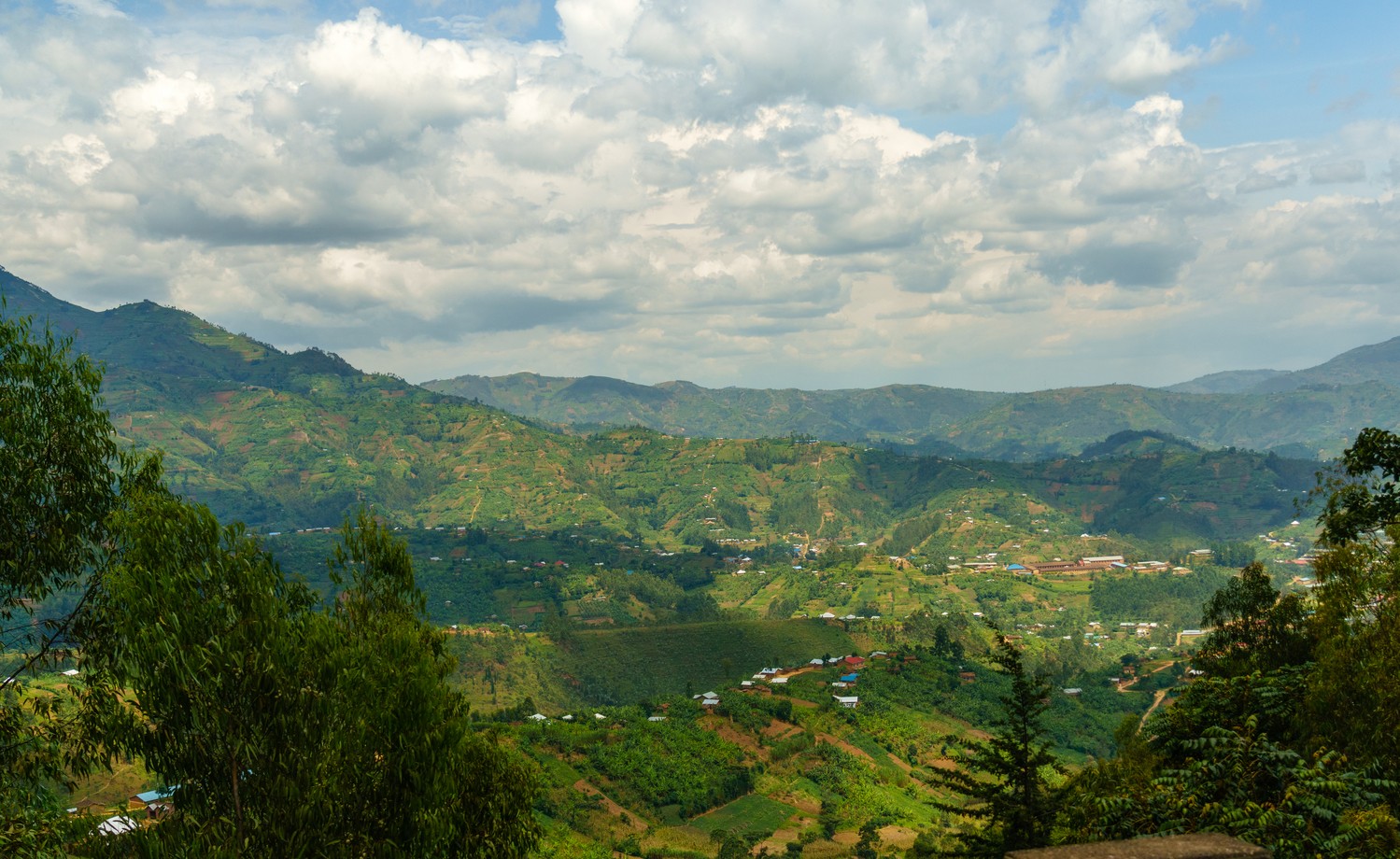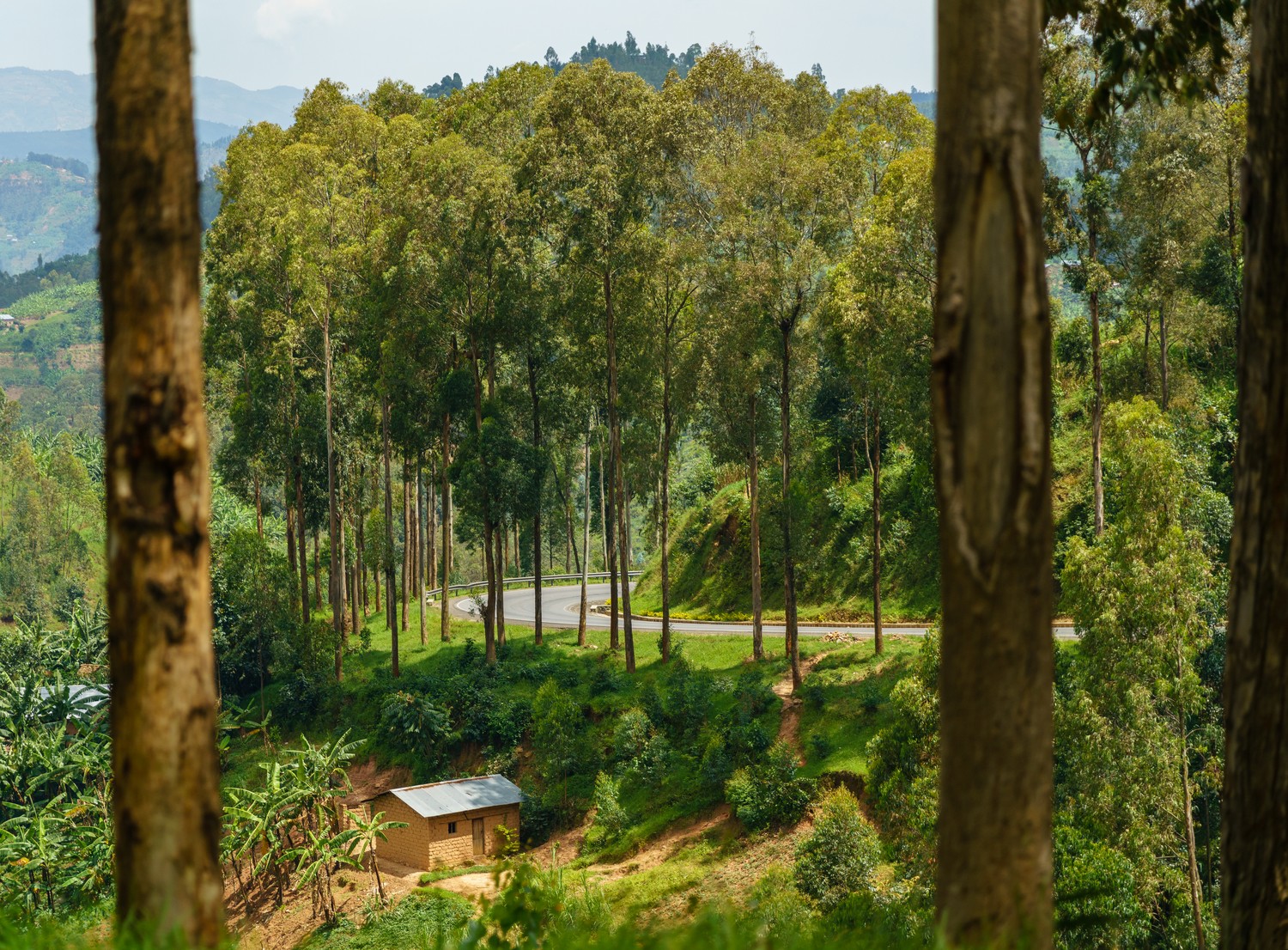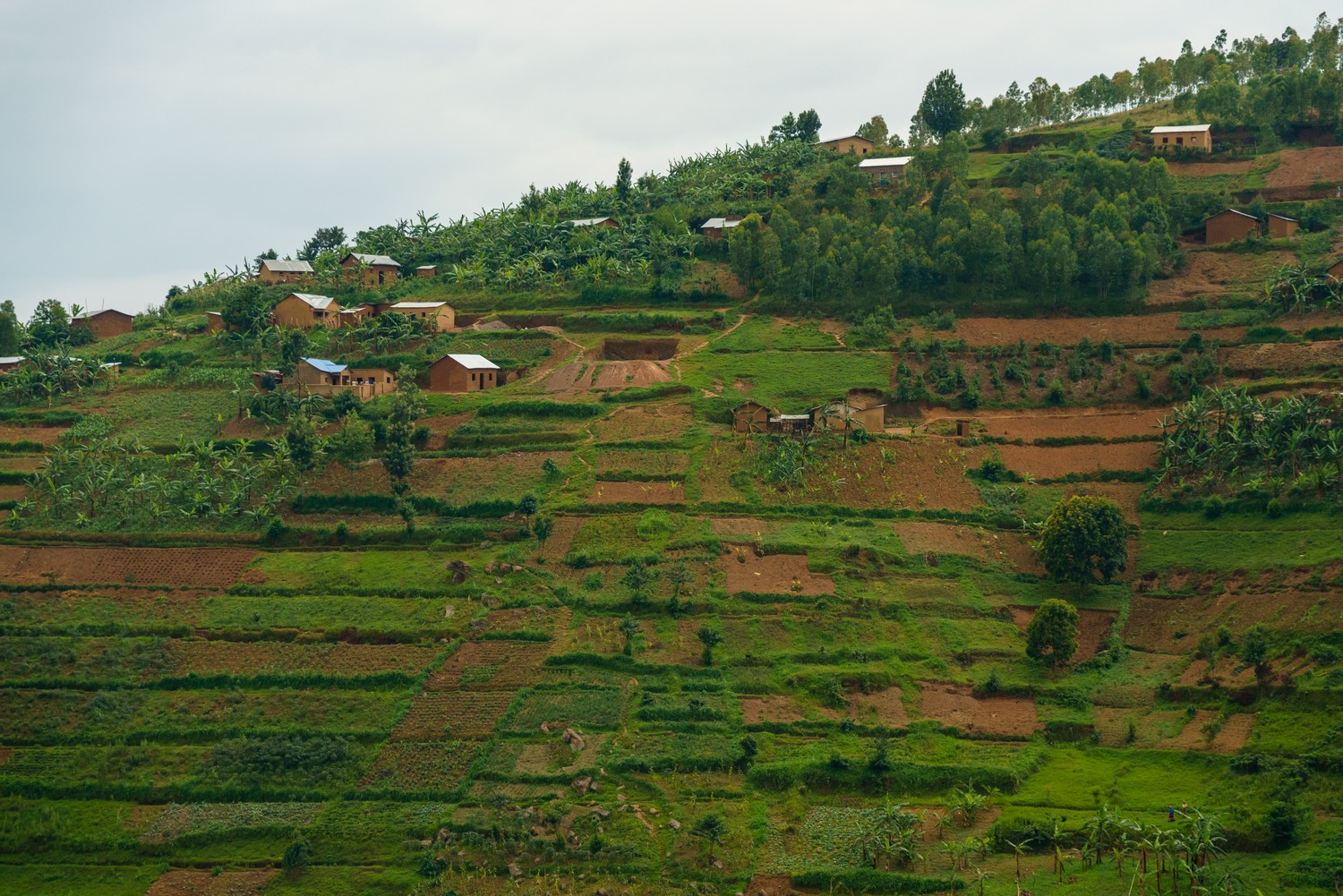Rwanda
Trekking in Volcanoes National Park

Rwanda is the land of a thousand hills. That was one of the first things our guide Abou shared when he picked us up from Kigali airport. This was the beginning of a two week adventure in Africa filled with wildlife sightings from silverback mountain gorilla treks in Rwanda to Serengeti game drives in Tanzania afterwards.
Mike Davidson, a former colleague from Twitter, and his wife Chelan were the ones behind the entire trip. Mike had been planning a trip to Africa and invited a few folks. My sister and I had long been considering a trip to Africa and this opportunity came at the perfect time. After some coordination—as well as buying appropriate gear and getting a few vaccines—the trip was set for six of us to meet in Rwanda. Our friends Jen and Sana would join us later in Tanzania.
Rwanda is a small, landlocked country in East Africa bordered by Burundi, Uganda, Tanzania and the Democratic Republic of Congo. The country has made massive strides in recovering and rebuilding just over two decades after the tragic events that unfolded in the Rwandan genocide in 1994.
Today, Rwanda is one of the safest countries in the world (ranked #9 by the WEF). The majority of the Rwandan economy is comprised of agriculture (coffee & tea!), mining and tourism.
After 26 hours of travel time (SFO ✈ DTW ✈ AMS ✈ KGL), I was eager to get some rest upon arriving at the Kigali Serena Hotel—but not until remembering to brush my teeth with bottled water and take an anti-malaria pill. This would be a routine that would accompany us for the rest of the trip.
Our first full day in Rwanda began with a relaxing breakfast as we all caught up and became accustomed to our new surroundings. We then set out to explore Kigali before making a long drive north to our primary destination near Volcanoes National Park.
BEHIND THE SCENES
I'm trying something new with this photoset. I've made several compilations of various videos captured from my phone (as opposed to my large Sony camera) like this one above. They are longer and don't autoplay, just click them to expand and play (and excuse any bugs..).
We piled into a large green Land Cruiser as Abou told us about the culture, the history and the people of Rwanda. We learned that Kigali is one of the cleanest cities in Africa, largely due to the Rwandan government banning the use of plastic bags. In addition, the entire country holds a national service day each month, called Umuganda, where residents pitch in to clean their neighborhood.
Genocide Memorial
We visited the Kigali Genocide Memorial Centre to learn about the tragic genocidal mass slaughter of Tutsi ethnic group members by the Hutu. The genocide claimed close to a million lives in a 100 day period in 1994. It's a harrowing visit that provides much insight into the country's past.
Nyamirambo, Kigali
Abou then showed us around the lively Nyamirambo neighborhood in the southwestern edge of Kigali that houses much of the city's working class. Vibrantly painted shops ranging from meat butchers to salons lined the streets while the many adjacent dirt roads and alleys exuded rich earthy tones.
After walking around Nyamirambo, we stopped for lunch at the historic Hôtel des Mille Collines. During the Rwandan genocide, the hotel provided refuge for over 1,200 people. The events that took place here formed the underpinnings of the movie Hotel Rwanda.
A two and a half hour drive north was in store for us next. Our destination was a small hotel near Volcanoes National Park where we would be staying for the rest of our Rwanda visit.
The drive proved to be scenic, showing us why Rwanda was called the land of a thousand hills. Each turn on the winding road revealed vast hillside terraced farms throughout the remote hilly regions of rural Rwanda as well as lots of people walking down the street carrying on with their day. We ended up stopping at a local farmer's market and bought some gooseberries.
And we had to make one more stop when we saw this view...
We arrived at our hotel in the early evening, went to our rooms for a bit to relax before meeting for dinner for our first time as a group. Every meal we had here was consistently great. We became quite accustomed to starting every meal with an appetizing soup. If I recall correctly, the chef took inspiration for the dishes from a mix of Indian and Southeast Asian cuisines.
Trek 1
Our first trek into Volcanoes National Park to see silverback gorillas in their natural habitat.
The day kicked off early for us with a breakfast at around 6am. We fastened our gaiters over our hiking boots and permethrin-treated pants to prevent mud from getting inside our shoes with the unpredictable terrain ahead. Given that the gorillas move around each day, the amount of hiking required to see them varies. We were told it could be anywhere from two hours of hiking all the way to up six.
The park lies on the northwestern Rwanda border and is home to 5 of the 8 volcanoes making up the Virunga Mountains. The park is well-known for Dian Fossey and her research on the gorillas, which was highlighted in the film Gorillas in the Mist.
GORILLA TREKKING 101
Visiting gorillas in their natural habitat is not just a tourism activity — it's a conservation effort as well. First, you need a permit that costs $1,500 USD per day (and that doesn't include tipping the guides, trackers and optionally hiring a porter). That money helps protect the park from poachers, even helping turn some former poachers into gorilla trackers, tour guides and hotel staff. In addition, the government gives 10% of all the park's tourism revenue to nearby communities.
Only about 80 people (10 gorilla groups, 10 groups of 8 people max) are permitted on treks each day as an effort to keep human/gorilla contact low.
Abou drove us to the park entrance where we were paired with our guides for the trek and two other travelers that would join our group. After consulting with us about what kind of trek we were looking for, our guides picked a gorilla group that tends to hang out closer to the base of the mountain for our first trek.
We got lucky. Our guide happened to be Francis Bayingana. He has been doing this for over 30 years and was Dian Fossey's porter at one point during her treks.
Francis told us about the Muhoza gorilla group we would be visiting. We learned that most gorilla groups have only one silverback gorilla and that the silverbacks are the older leaders of a group of mountain gorillas, typically growing that silver saddle on their back after 12 years.
After a short drive we arrived at a trailhead near the extinct Sabyinyo volcano. We were told the extremely bumpy ride was an "African massage"—a joke we would hear numerous times in the days to come.
Along the way Francis would stop to explain some of the foliage we passed. He's quite the character, even going so far as to show us how gorillas would peel the bark off eucalyptus trees with their teeth to get at the pulp underneath.
We hiked for about an hour before waiting to hear from the trackers via radio. The park keeps meticulous tabs on the gorilla groups with many experienced trackers that head into the mountains early every day to find where each gorilla group migrated since their last sighting, as well as take note of general health of the groups. With barely 1,000 left in the wild, mountain gorillas are severely endangered.
By the time we had hiked closer to the base of the mountain, the trackers had still not located the Muhoza group. About 30 minutes would pass before they were found and we could proceed with our trek.
When we arrived at a spot near the gorillas, we were told to put our bags and non-essential items on the ground and leave it with the porters. We were informed not to make lengthy eye contact with the gorillas, about what to do if a gorilla beat their chest at us and even what sound we should make if they came too close (a low grunting "contact call" to show non-aggression.)
We learned that the juvenile gorillas were typically the troublemakers in each group and may try to come closer and show off. There was also one guide in our group with a rifle, just-in-case.
We quietly approached two gorillas as they were eating some lush vegetation a bit above us. This would begin the timer on the one hour we would have to view the gorilla group. It's a hard limit set by the park to ensure the gorillas don't get too much human contact.
After a few moments, the silverback male and an adult female chased each other into the bamboo forest, where Francis eagerly told us to follow him. As he had predicted, the gorillas were about to "jiggy-jiggy." This was a rare sight to see.
Afterwards we saw an infant gorilla and a juvenile gorilla emerge from elsewhere in the bamboo.
Seeing the gorillas up close—at times less than a few feet away (they came much closer the next trek)—was a surreal experience. Being that close to the world's largest primate in the wild with nothing in between you two is one part scary and two parts breathtaking. While the silverback and the other adults were rather languid, the juveniles in the group were busy climbing above us.
Throughout the encounter, the guides told us where to stand and when to follow as they actively cleared vegetation with their machetes to make a path. Francis ended up having us closely follow a few of the gorillas. At one point an adult gorilla, perhaps the silverback, grabbed his shirt as if to tell him to back off. Francis was not concerned (likely because the gorilla and Francis are very familiar with each other) and we kept following.
Before long, our hour of gorilla time had run out and we made the trek back. Overall this first trek was not too strenuous and we covered about 4 miles of hilly terrain.
Virunga Lodge
After we got back to the hotel and cleaned up, Abou offered to take us to a nearby lodge with a great view. Regina, myself, Bill and Maykel took him up on the offer and headed to enjoy some wine, coffee and tea with a sunset view of the Lake Bulera, Lake Ruhondo, Mount Muhabura and Uganda in the distance.
Trek 2
A more intense, muddy trek to see the Hirwa gorilla group higher up in the mountain.
We carried out the same routine this day: early breakfast, a drive to the park at 6:30am to meet our guides and begin the trek. It had rained during the night and was still a bit overcast in the morning so I packed my waterproof pants, windbreaker and hat.
This time we were set to visit the Hirwa gorilla group. This group was larger than the Muhoza group from the last trek and included several juveniles that were more playful and had no qualms getting very close to us.
This trek would begin at a different trailhead on the southern side of Mount Sabyinyo. We ended up having to wait around for a bit before we could head out as one of the vehicles following us down the muddy and bumpy road got stuck and they ended up walking part of the way.
This trek was a completely different experience than the day prior. It was considerably steeper, there was much more vegetation to clear through and it was so muddy that many of us slipped or got our shoes sucked off into the mud several times. Despite all of that—I enjoyed it much more. It was starting to feel more like a real adventure.
We did not have to wait long to find the gorillas once we made contact with the trackers.
We found the Hirwa group near the top of the mountain. Rather... I should say they found us. As we were making our way to the top through the dense and at times shoulder-height vegetation, our first gorilla sighting of the day came from behind us. A juvenile gorilla came within a foot of us as it scurried past.
Aside from the juveniles, the majority of the Hirwa group was huddled next to each other eating, resting—especially the huge silverback—and cleaning each other. We didn't move too much except when discovering that more gorillas were coming to join the others and approached us from a few directions.
At one point a pair of juveniles walked past me and touched me on the leg as I made sure to look down and not make eye contact.
And then our hour with the Hirwa group was up. We made the return trek back to our vehicle — just in time as a few rain drops began to fall. The way down was just as muddy and I had to catch myself from slipping a few times. Parts of the trek would not be easy without the walking stick given to us, as well as some guidance from the porters. This trek turned out to be just under 4 miles but covered much more elevation than the first trek.
Each time we arrived back at the hotel, the hotel staff would greet us and help us take off our exceptionally muddy gaiters and shoes so they could clean them in time for our next trek. They would also give us a face towel and a glass of various fresh refreshing juices (I want to say one of the more interesting ones was tree tomato juice).
I grabbed a beer and spent some time relaxing by the pool with the group before a quick nap and heading up for lunch.
Trek 3
Going to see the golden monkeys in the bamboo forest.
We returned to the park on our last full day in Rwanda for a fun and short trek to see the beautiful golden monkeys. Unlike the $1500 permits for gorilla treks, permits for visiting the endangered golden monkeys were closer to $100.
There was no strenuous hike involved as the monkeys in the bamboo forest at the base of the Mount Sabyinyo. Roughly 100 monkeys were running on the ground and numerous more were overhead hopping between bamboo stalks at a staggering pace, never staying put for more than a moment.
Photographing the golden monkeys was by far the most challenging of all the treks. There wasn't much light inside the bamboo forest and they were constantly moving.
I was shooting with a 100-400mm lens here as the monkeys could be near you one second then yards away seconds later. I had to really crank up the ISO and shoot at a wider aperture to get any decent shots (the vast majority discarded for not quite being in focus or blurry).
After lunch back at the hotel, we made the scenic drive back to Kigali to catch a flight to Nairobi, where we experienced some significant delays before boarding a flight to Kilimanjaro airport in Tanzania for the next leg of our Africa adventure.
